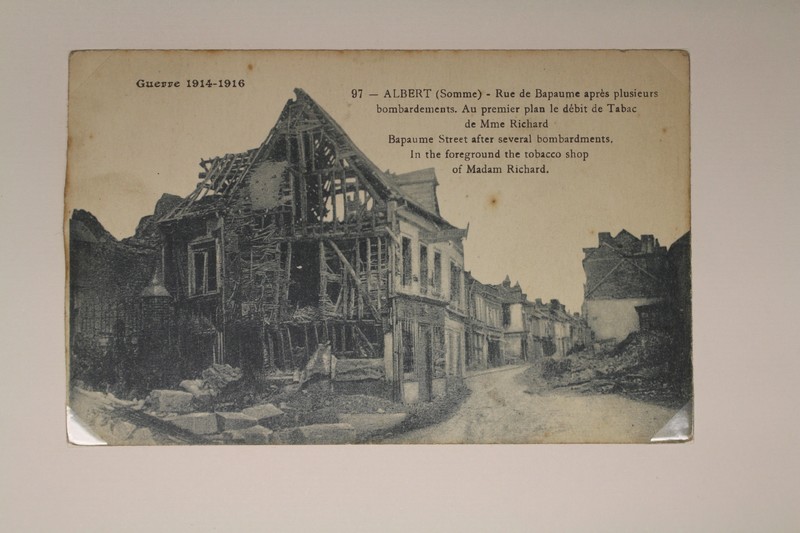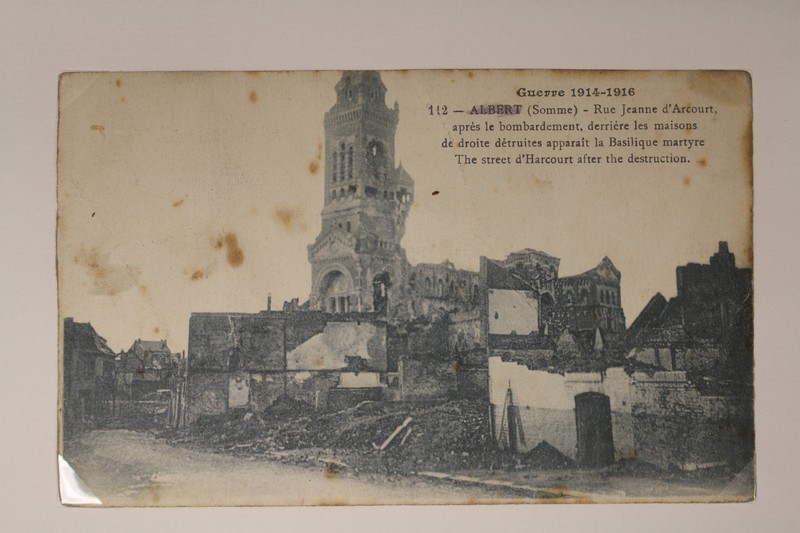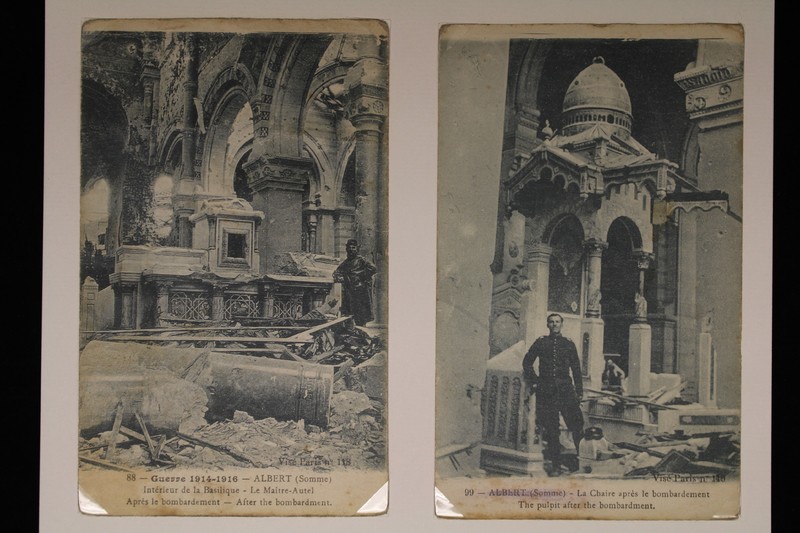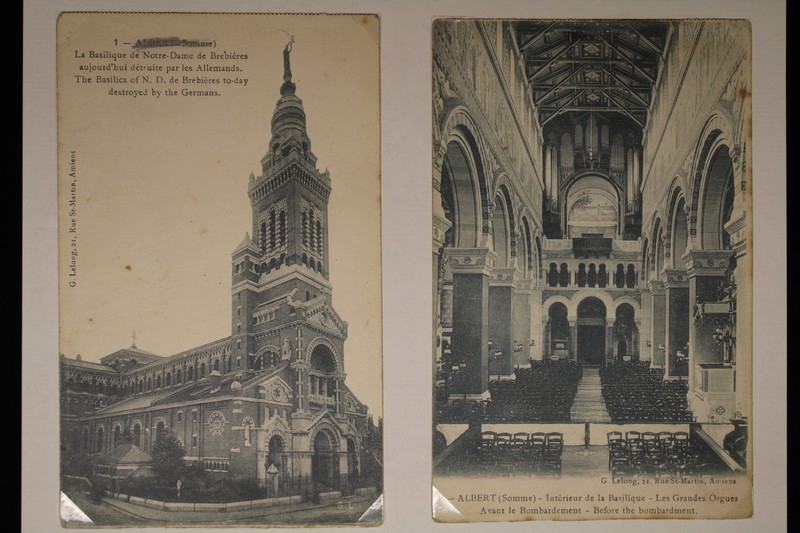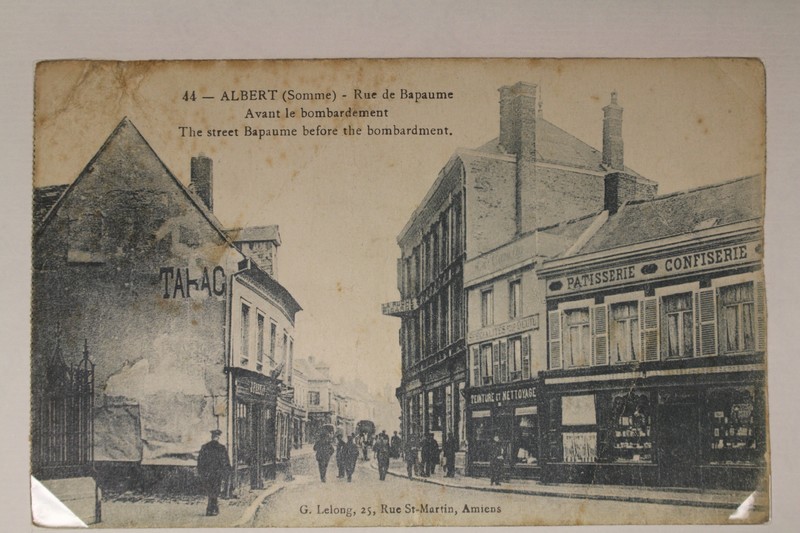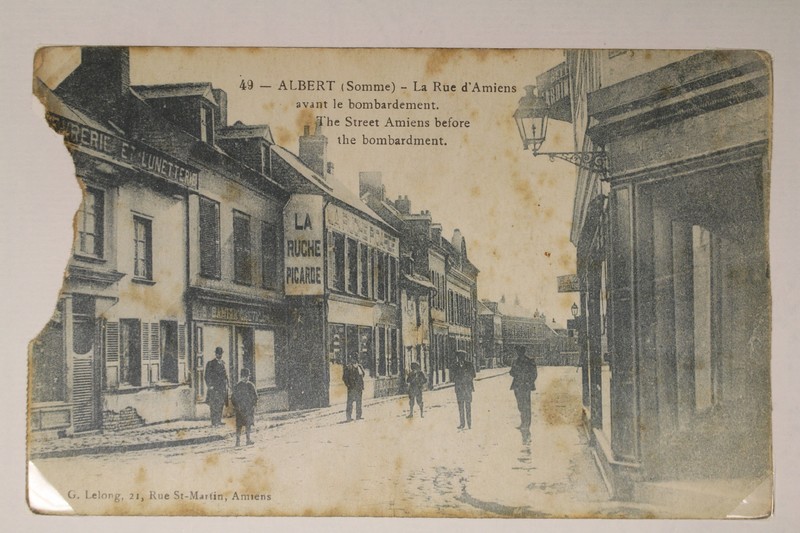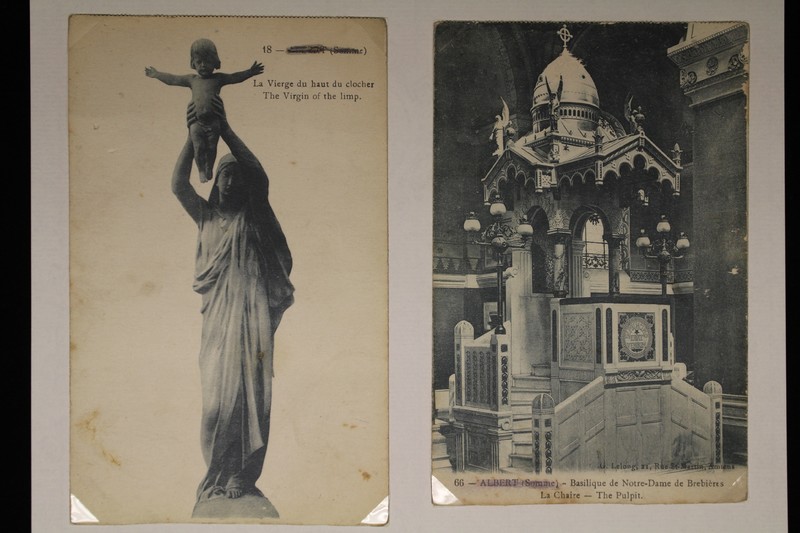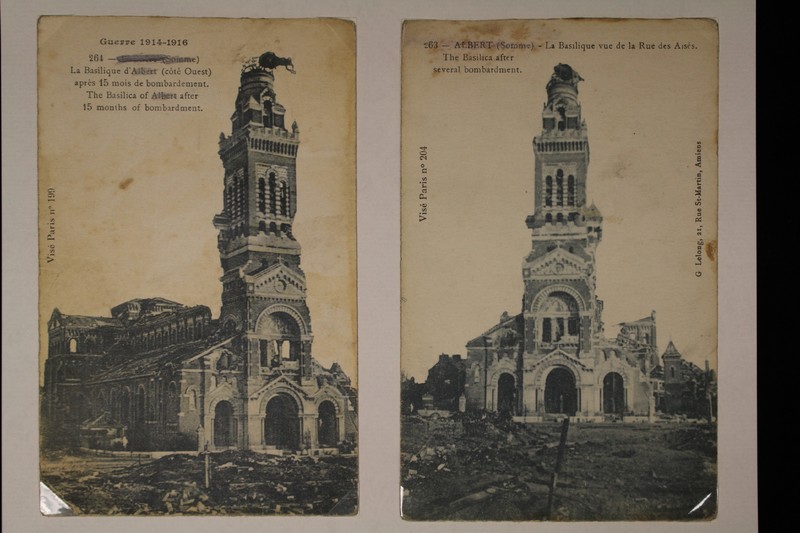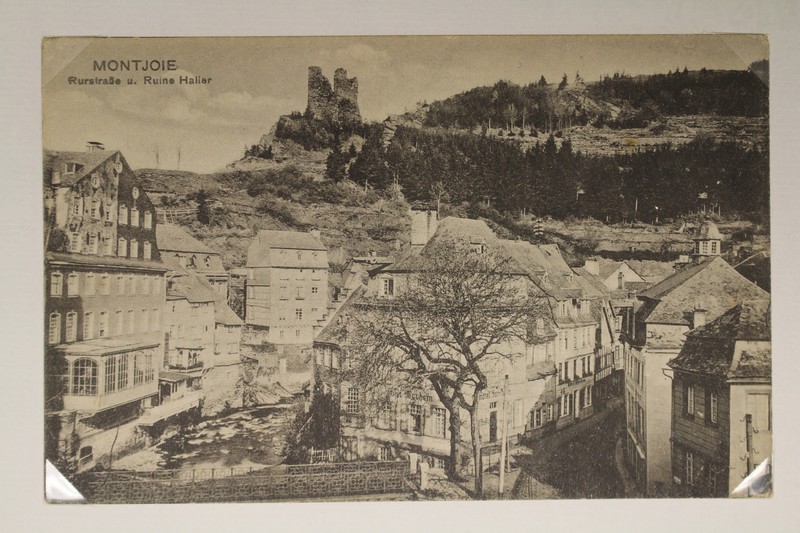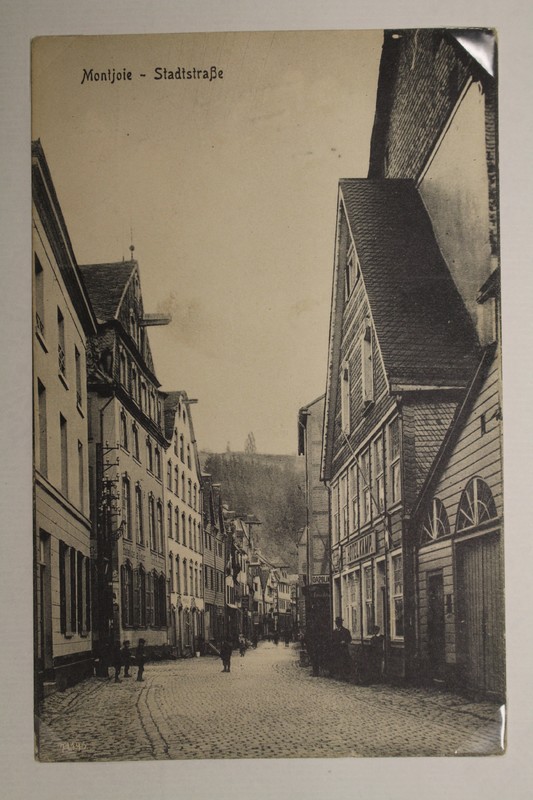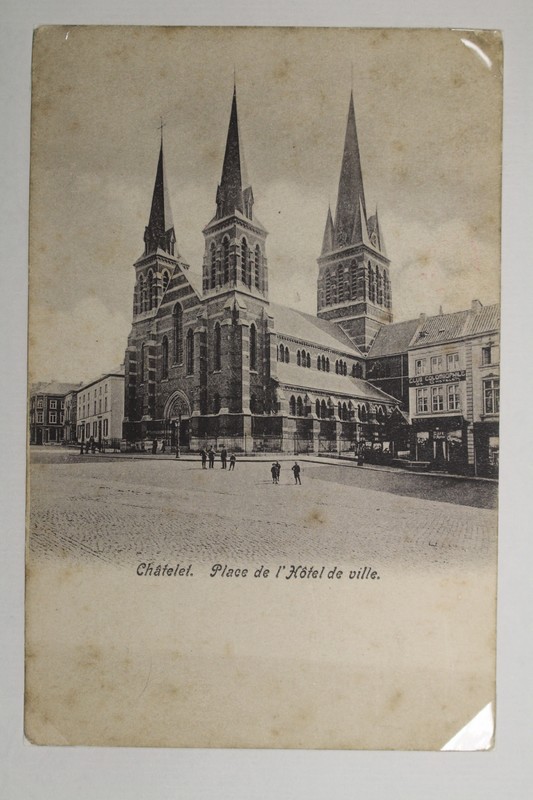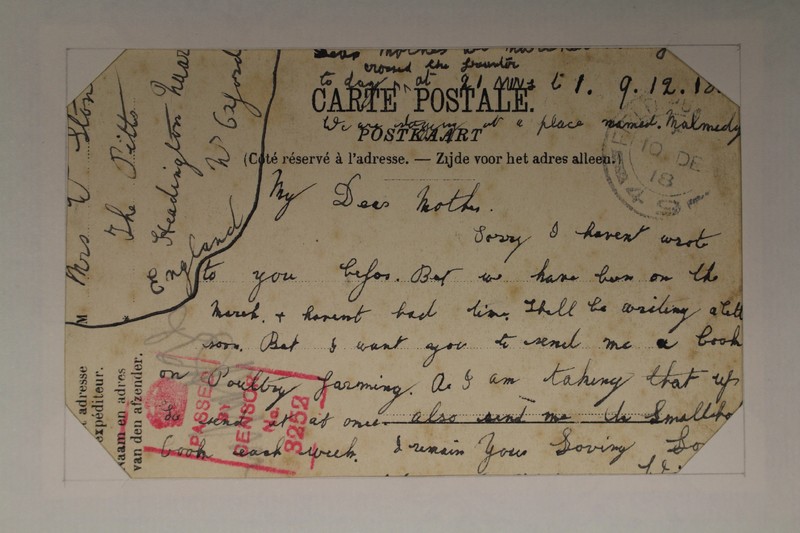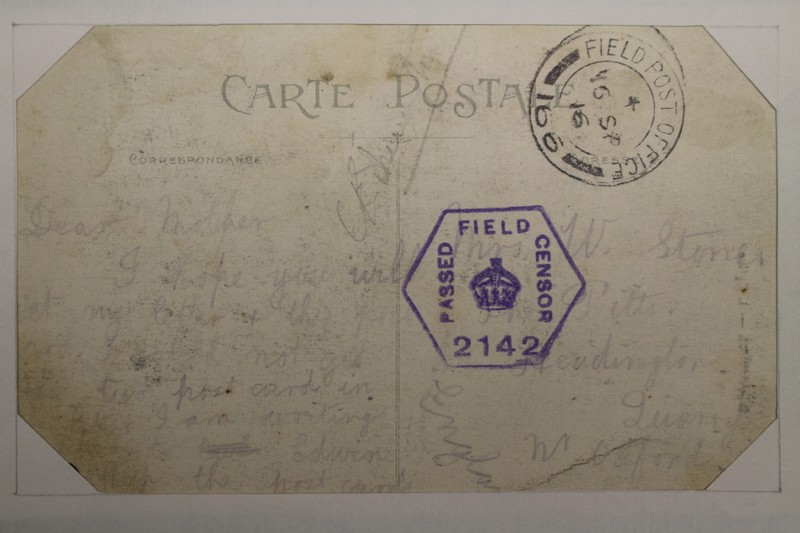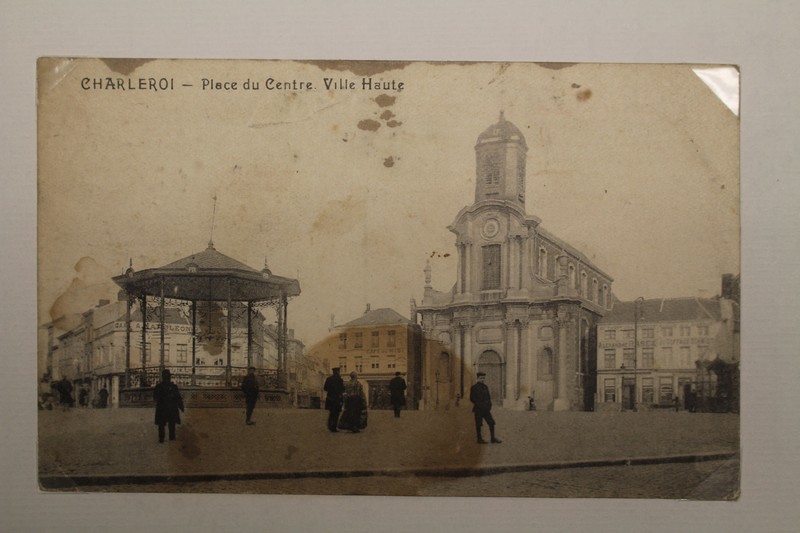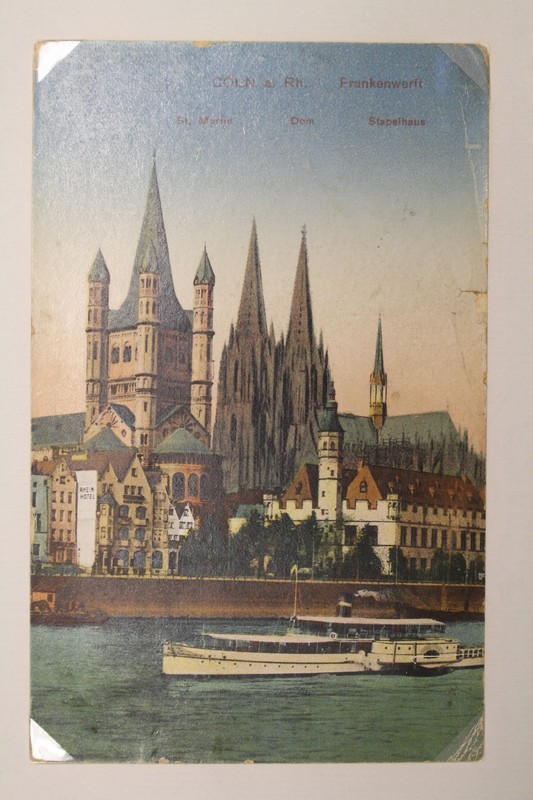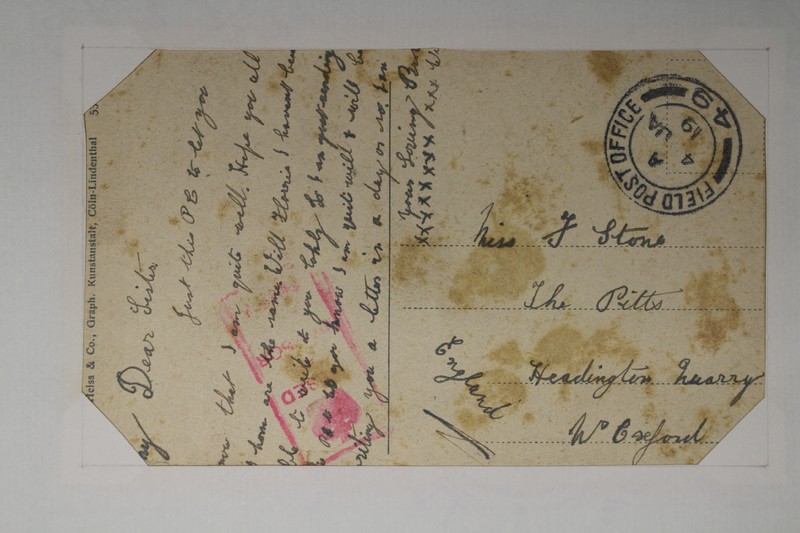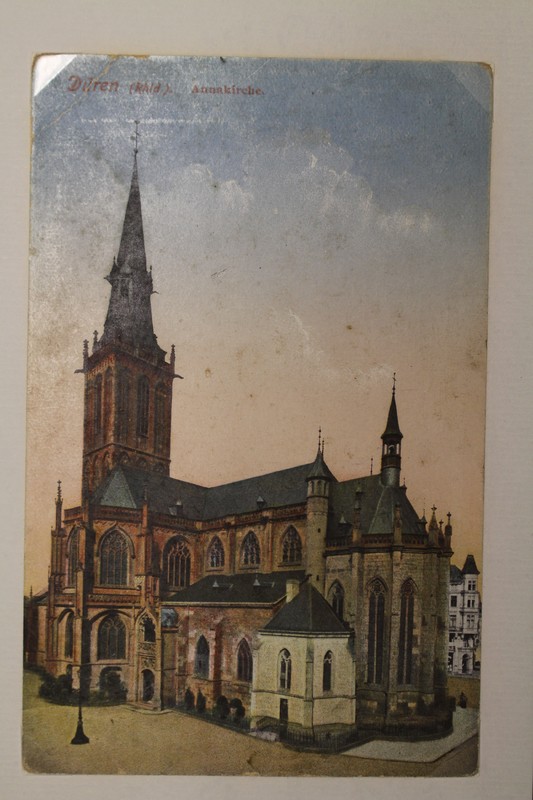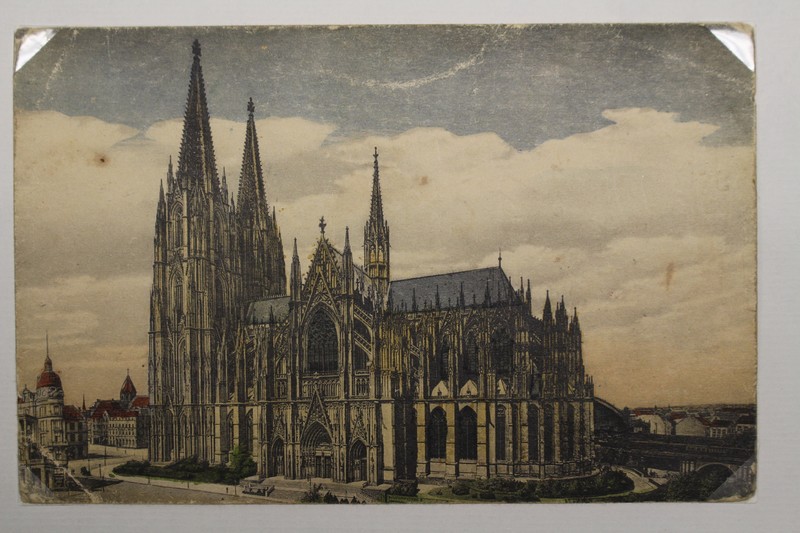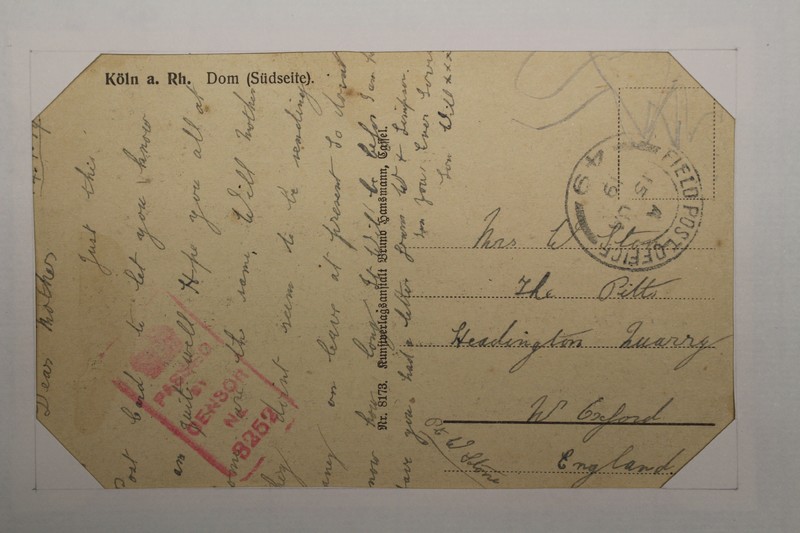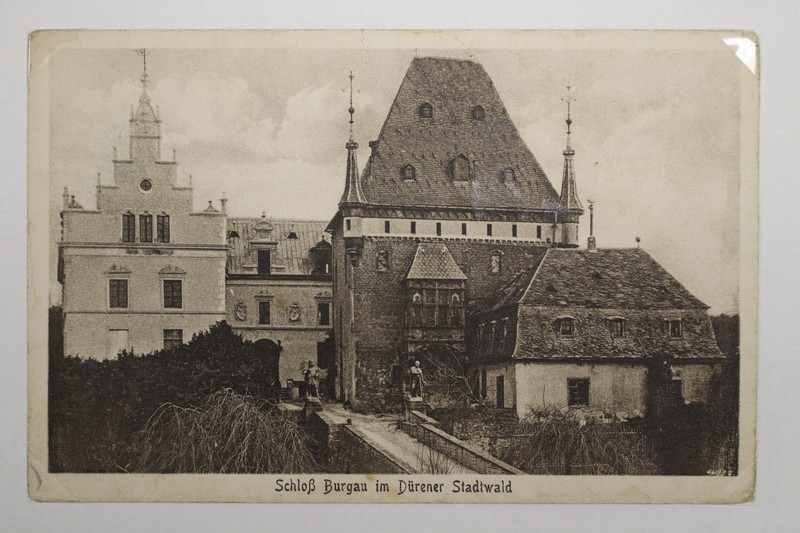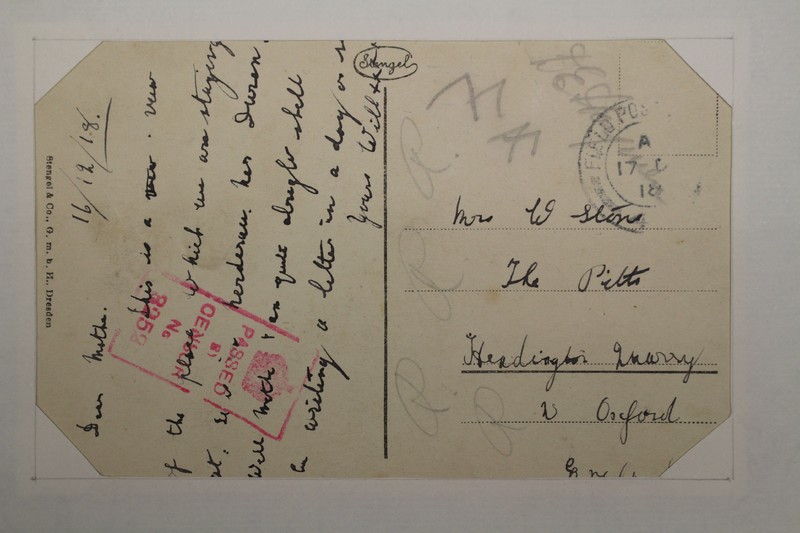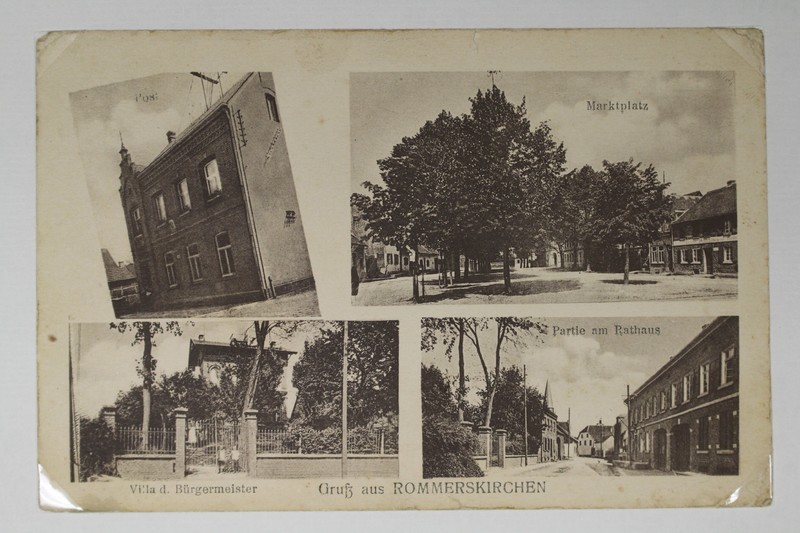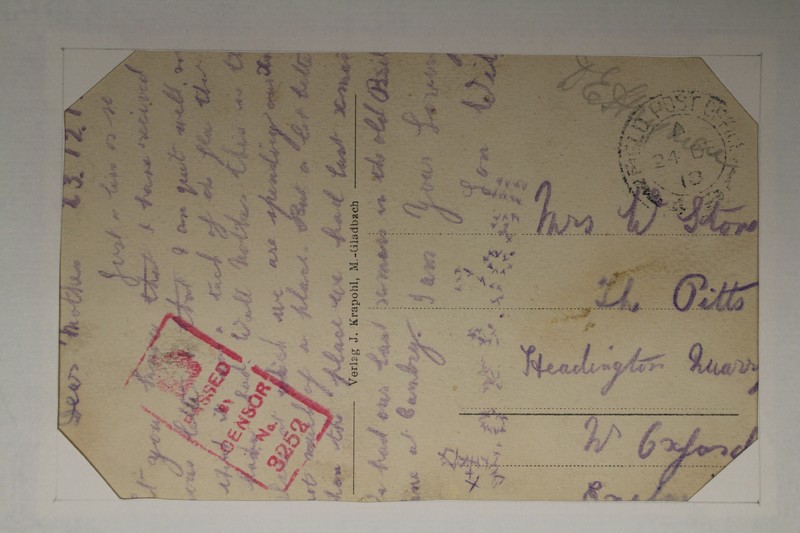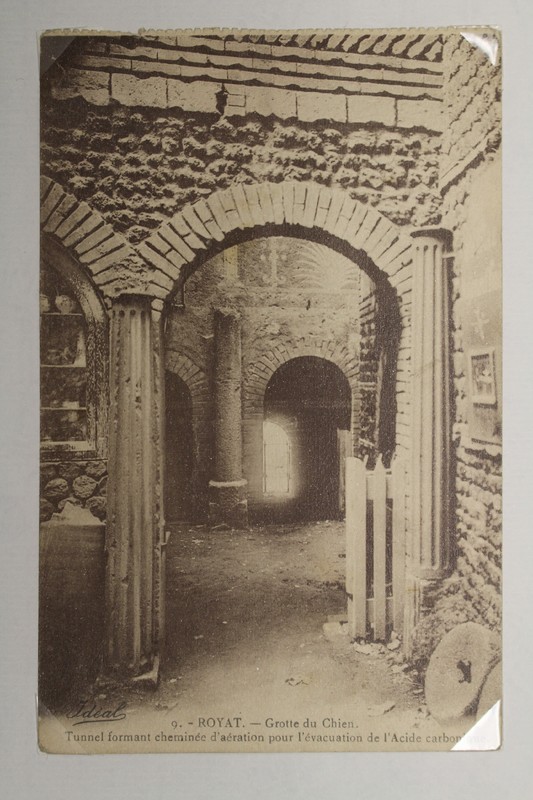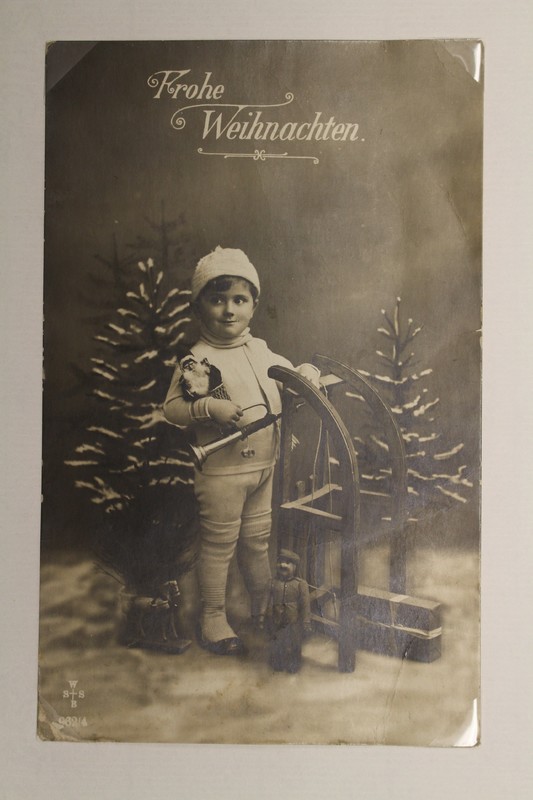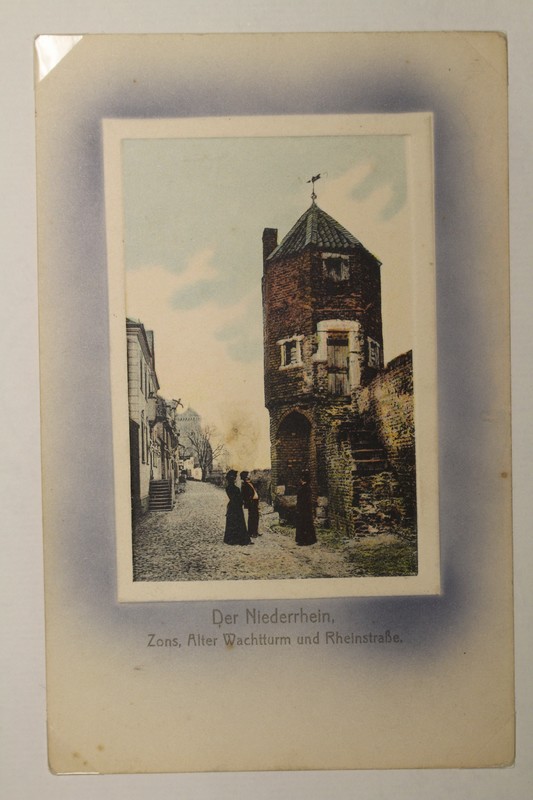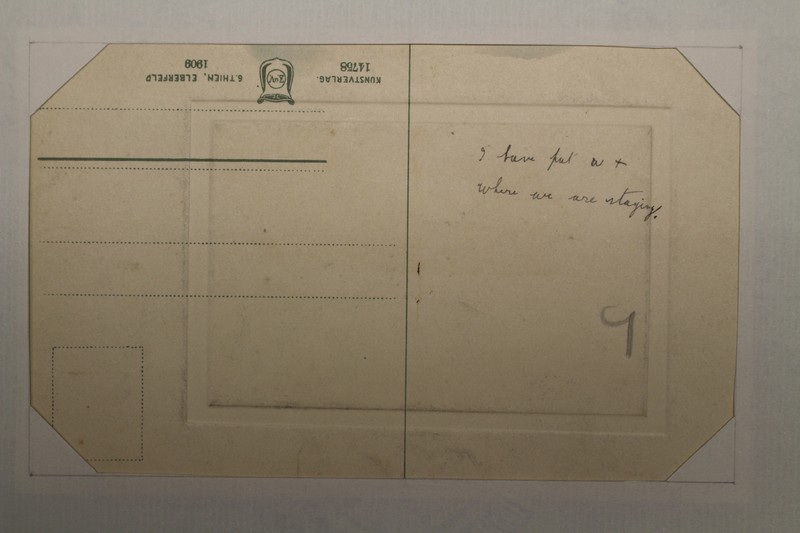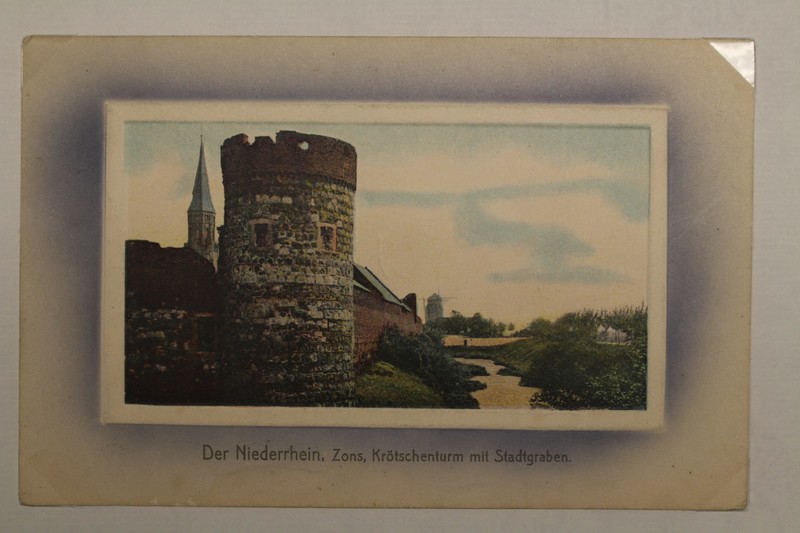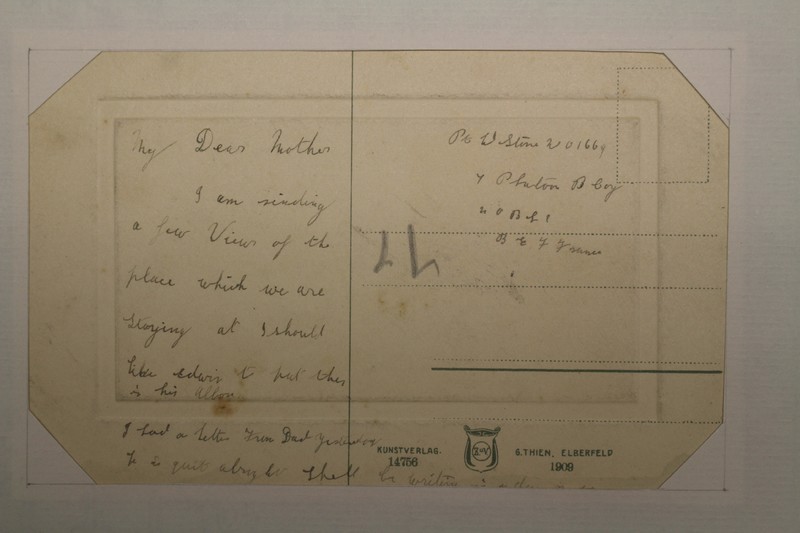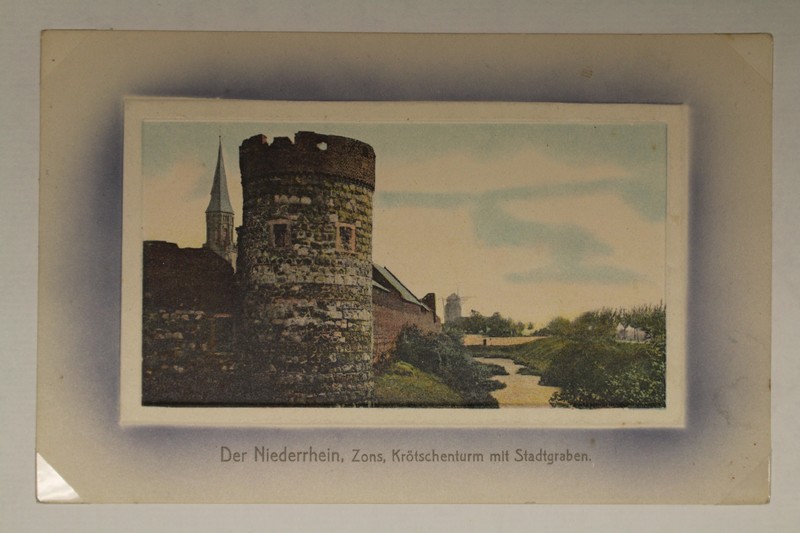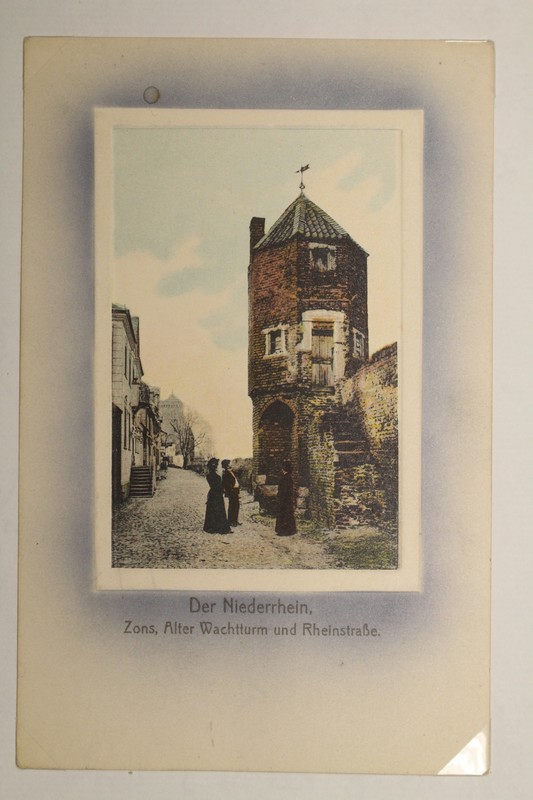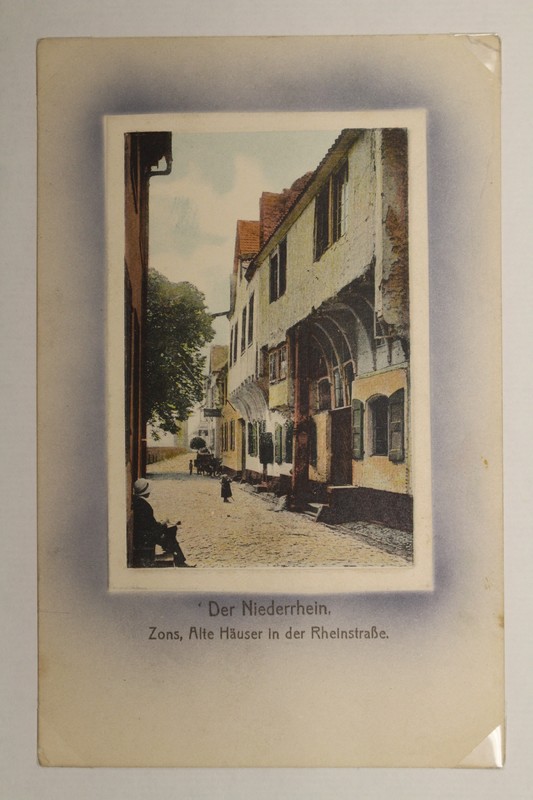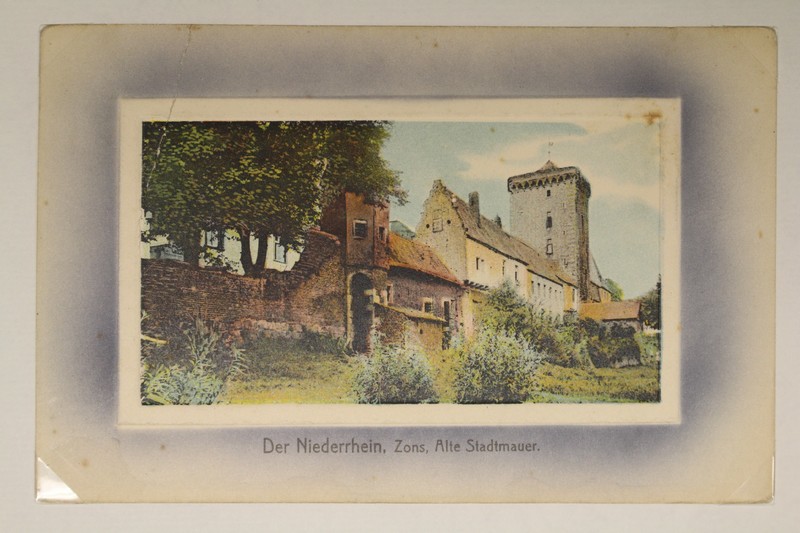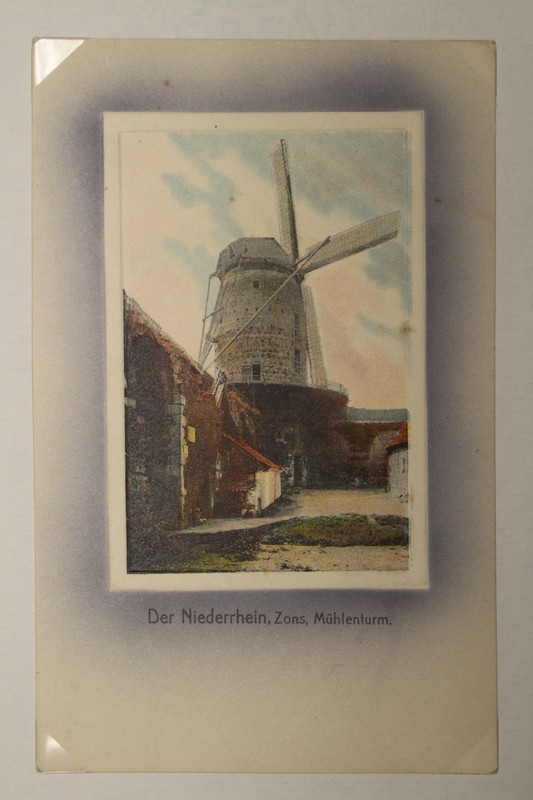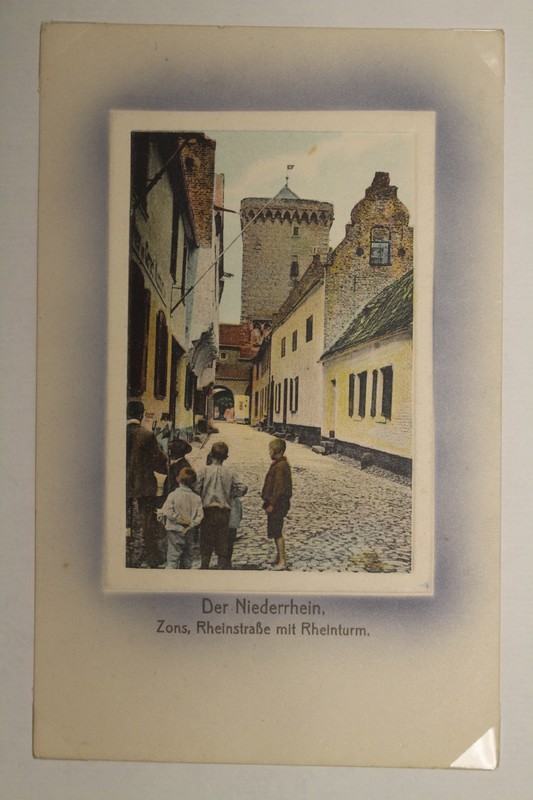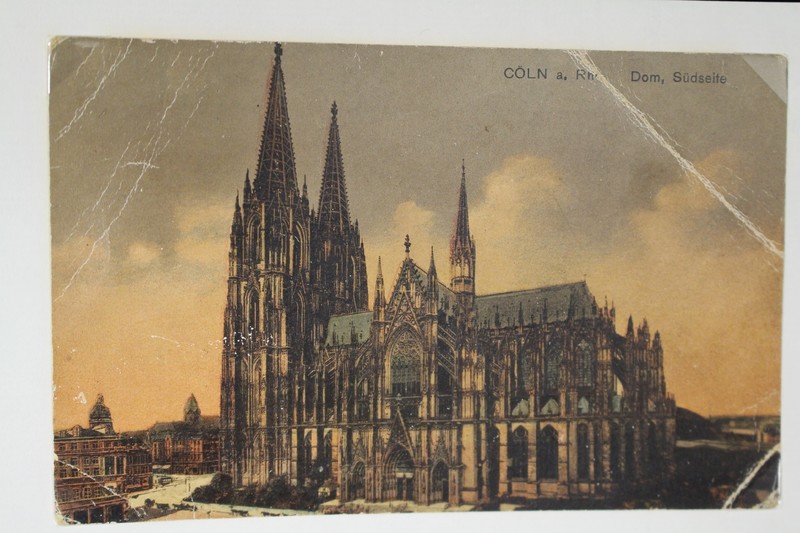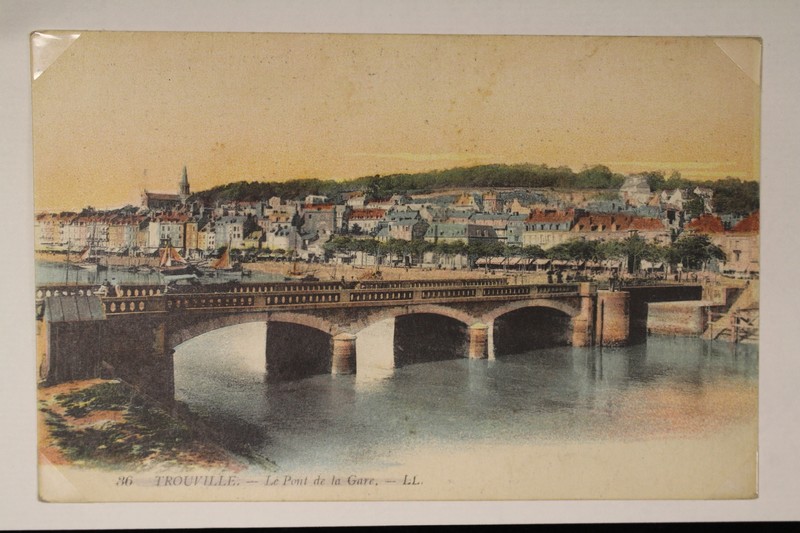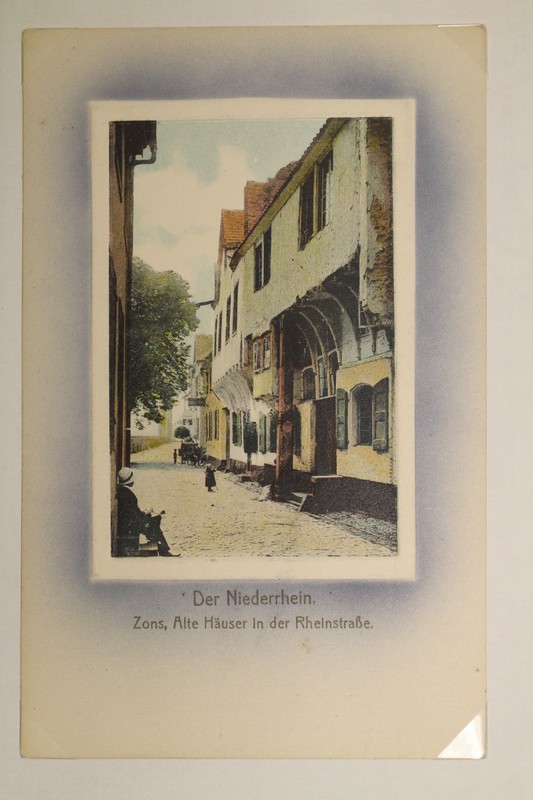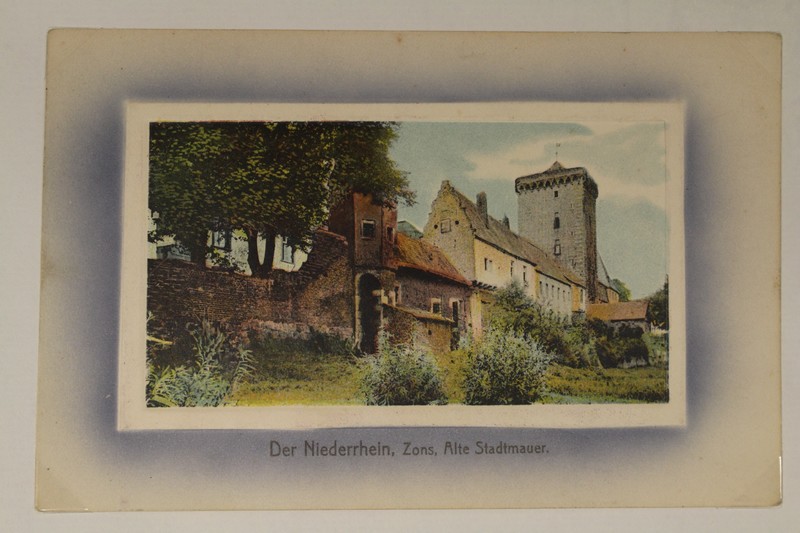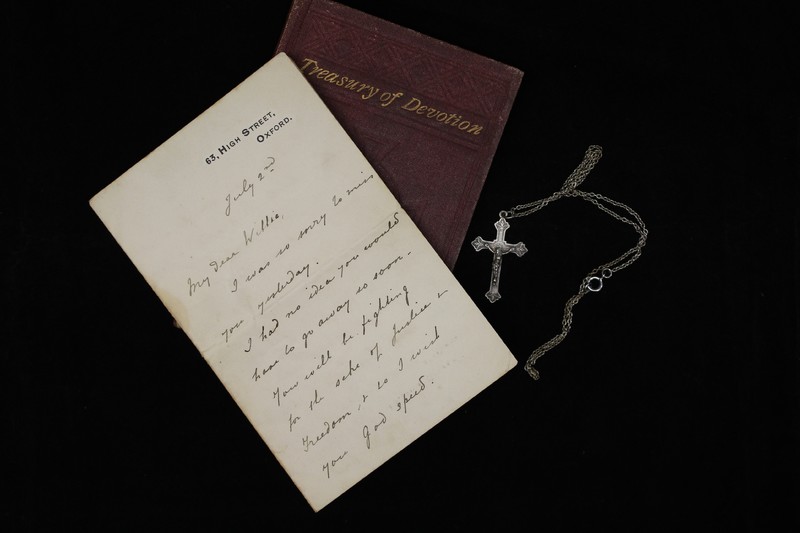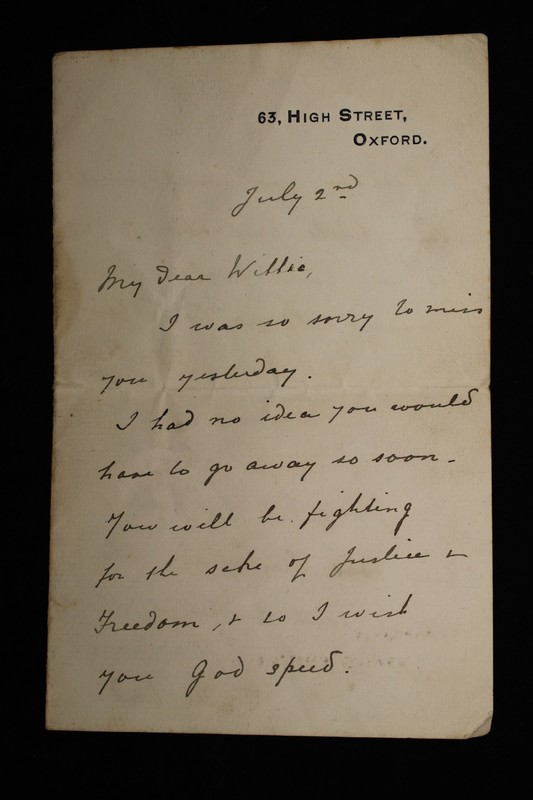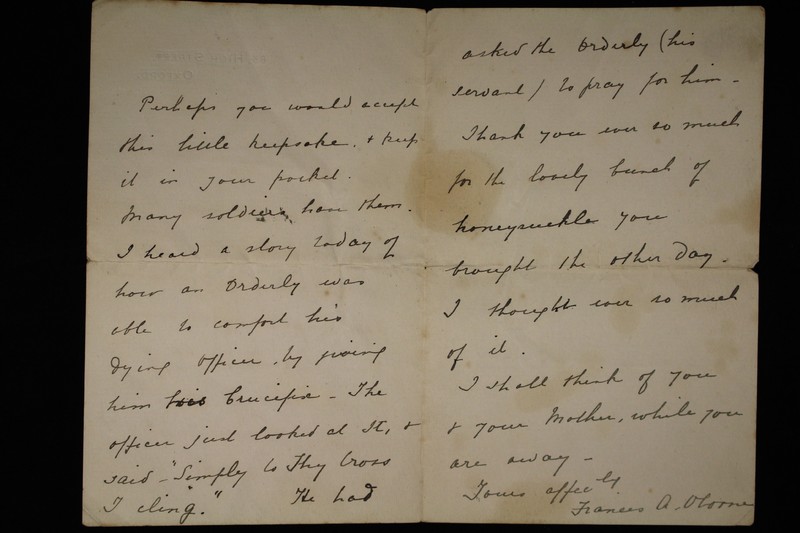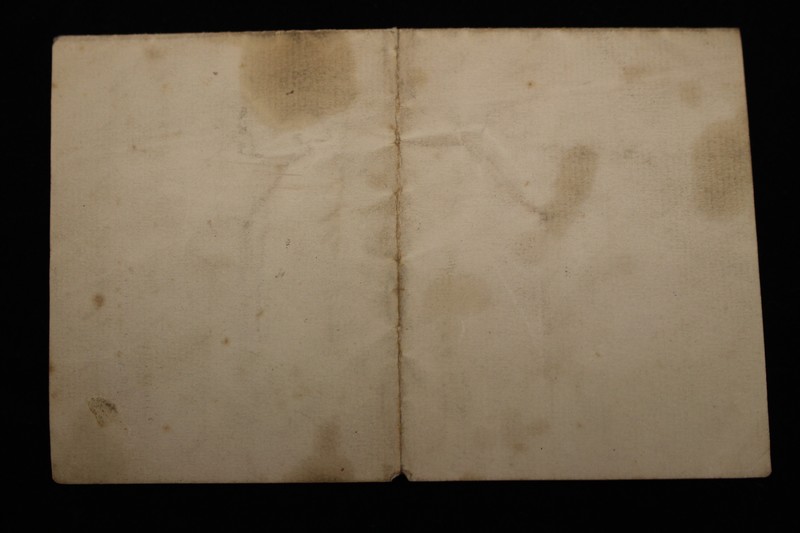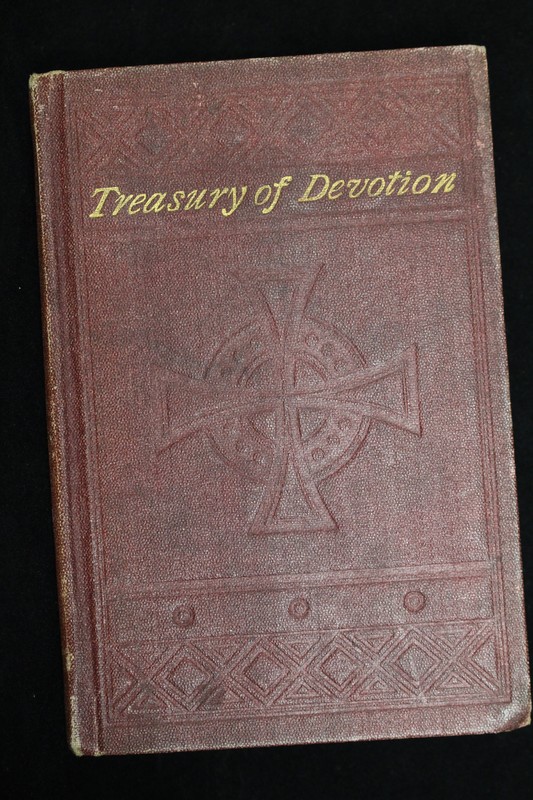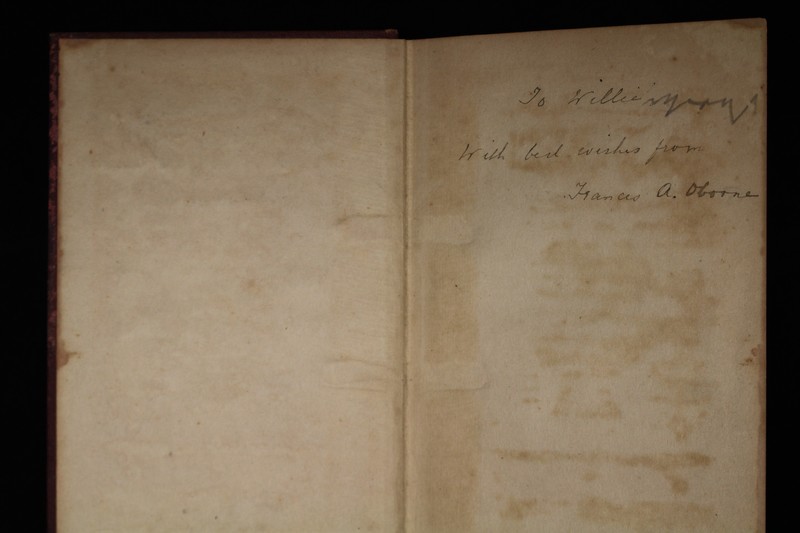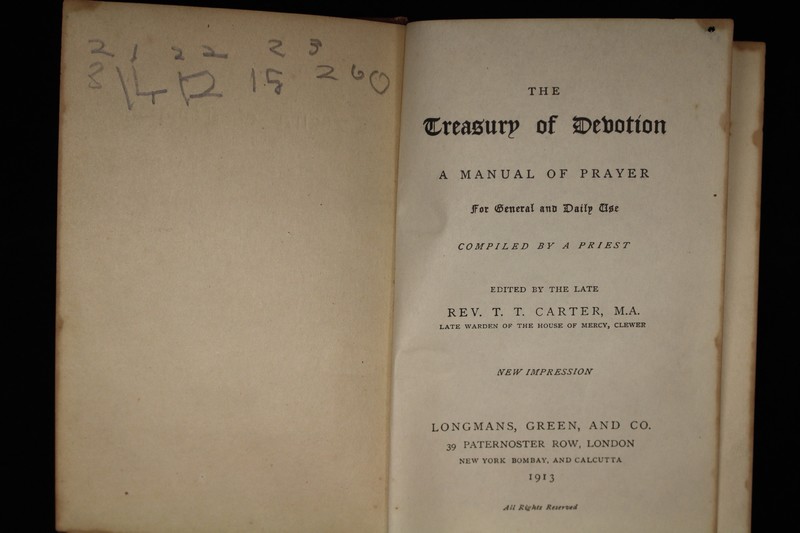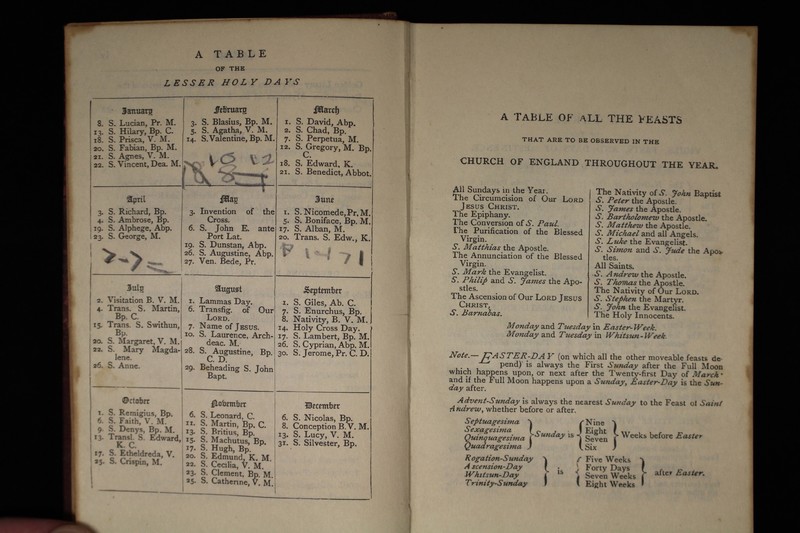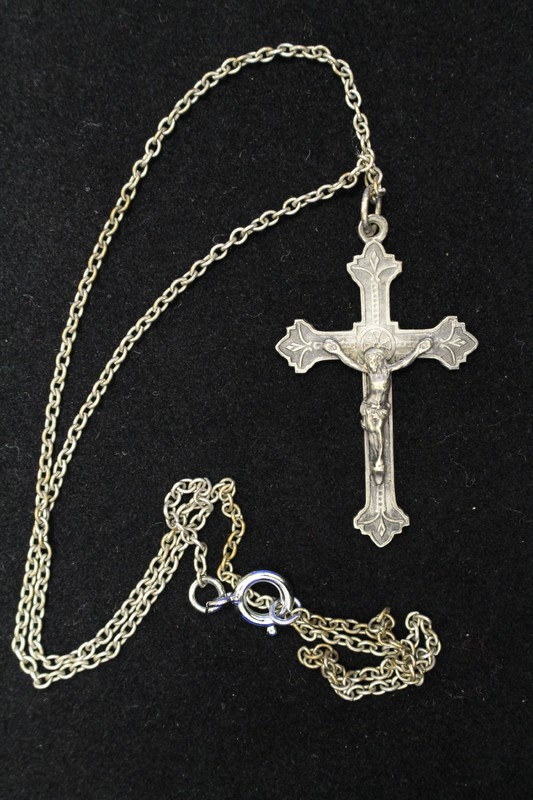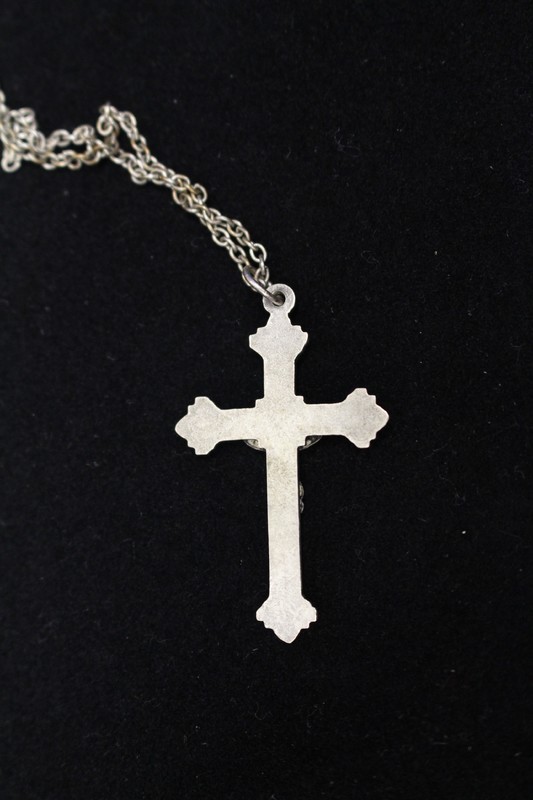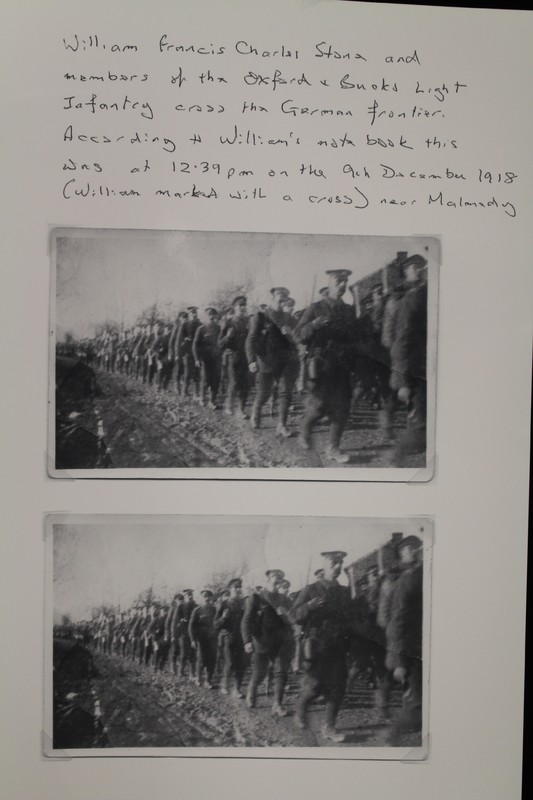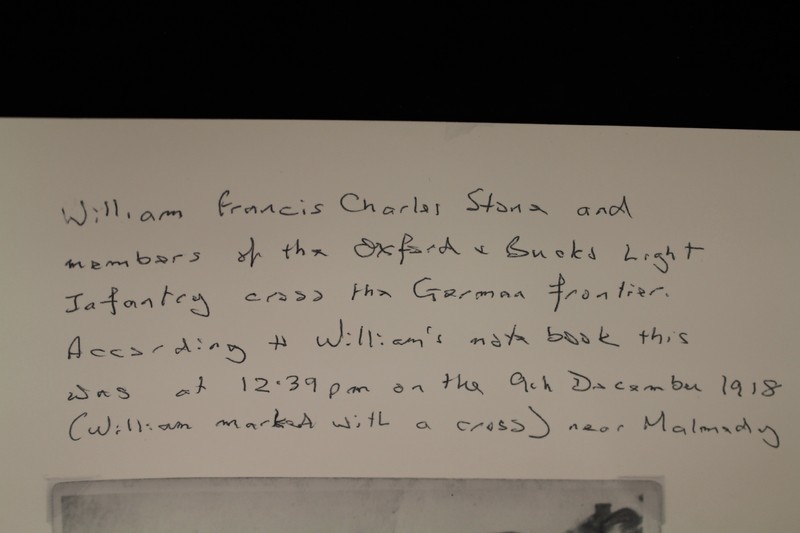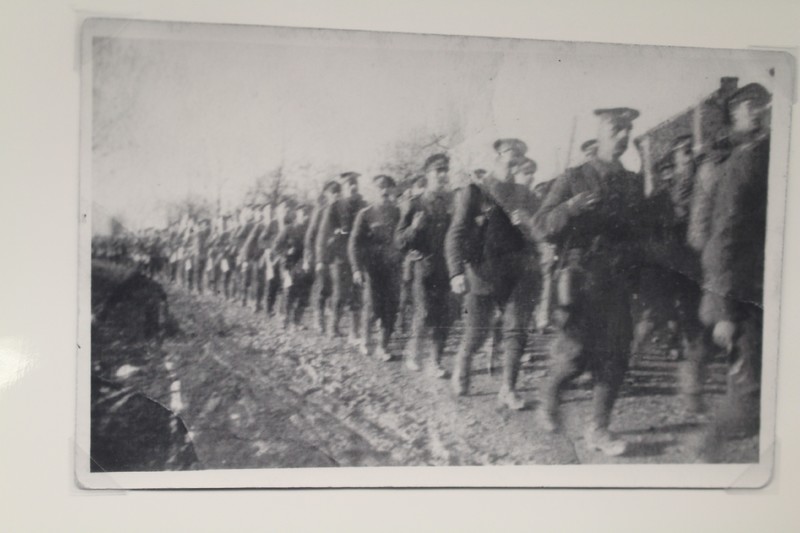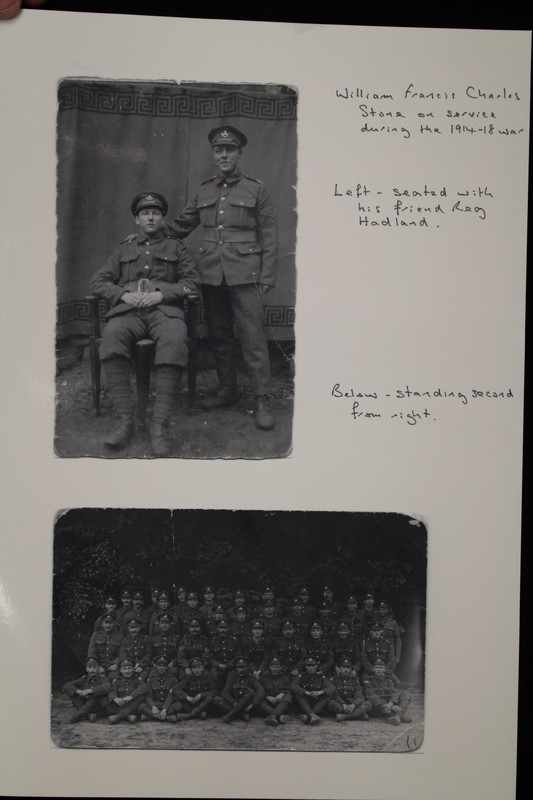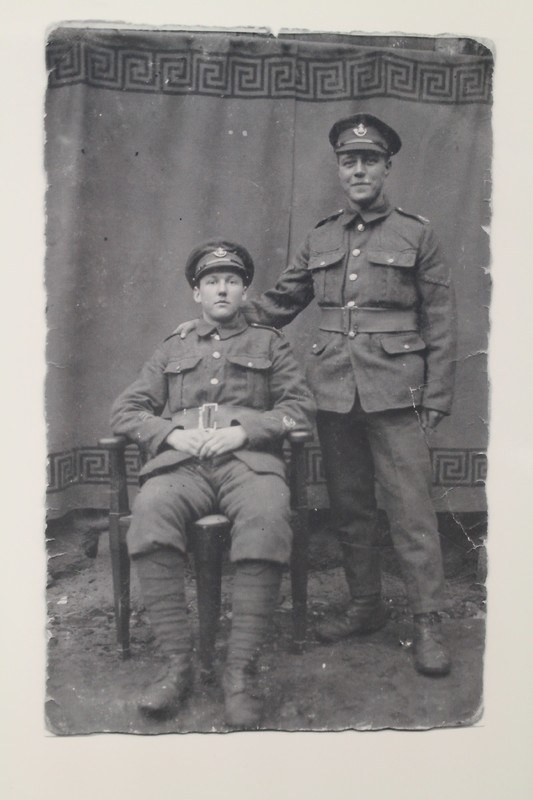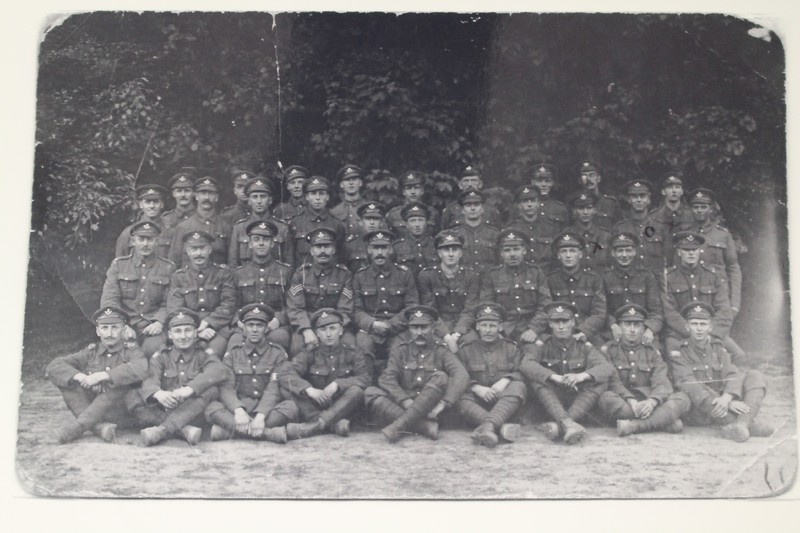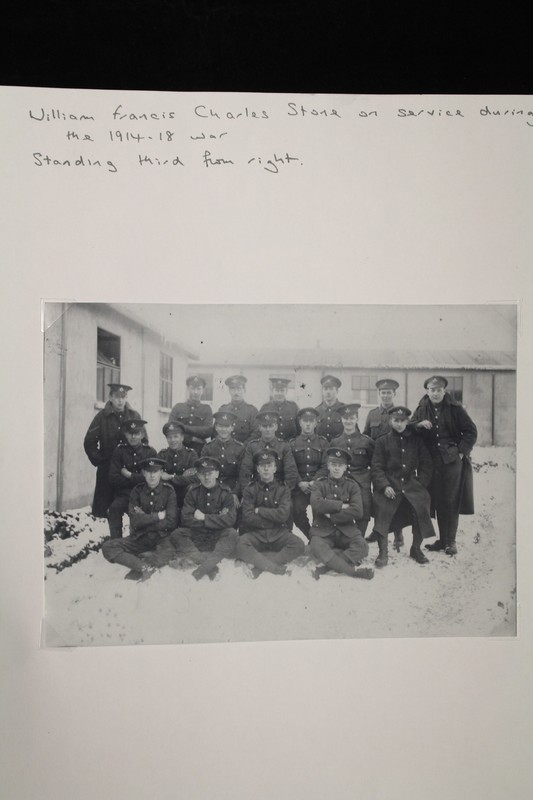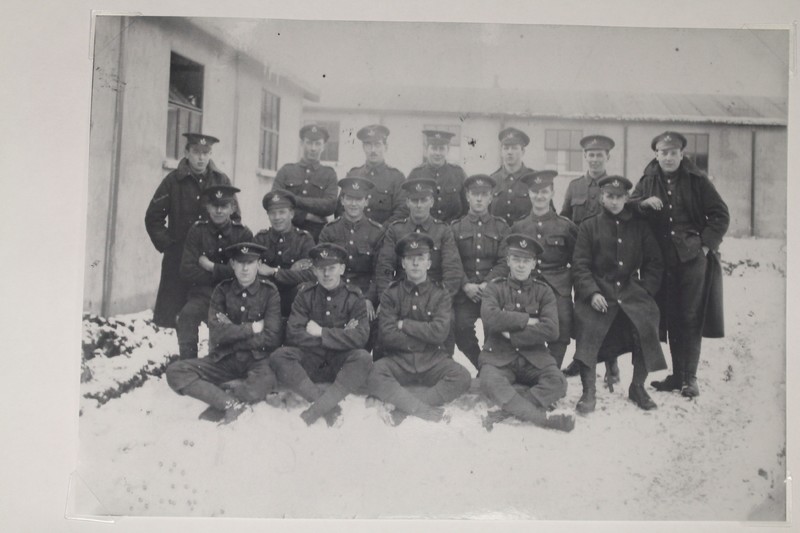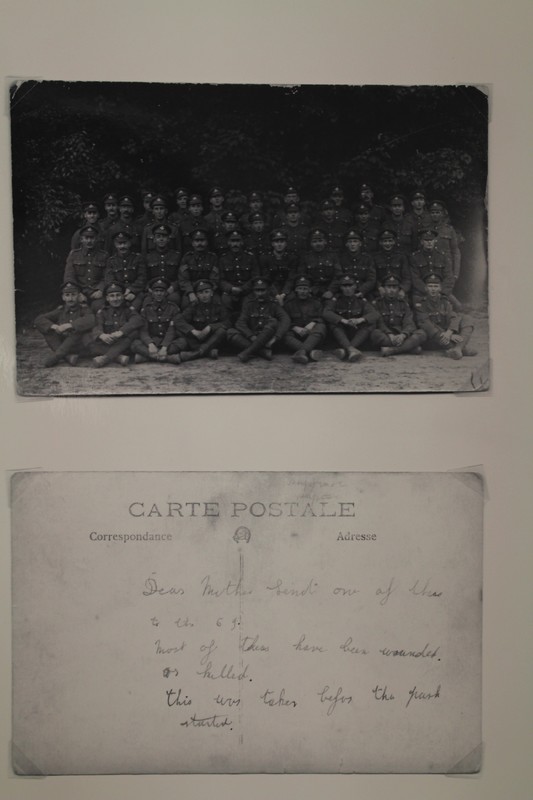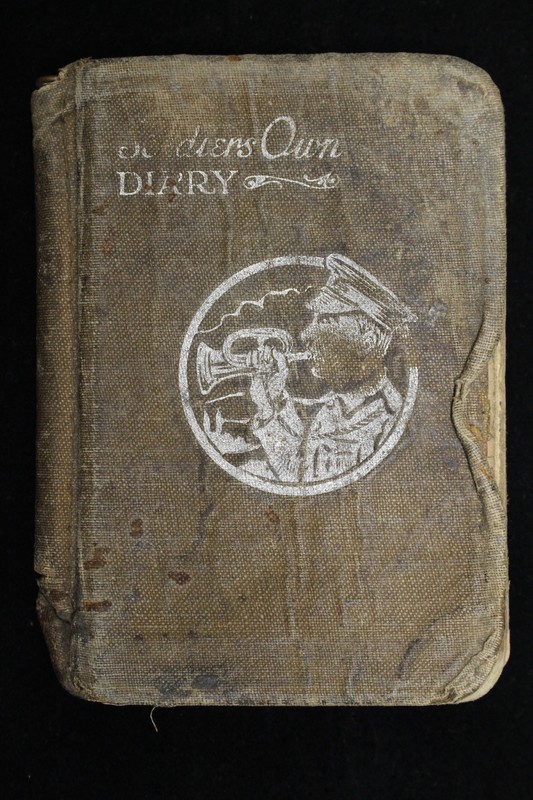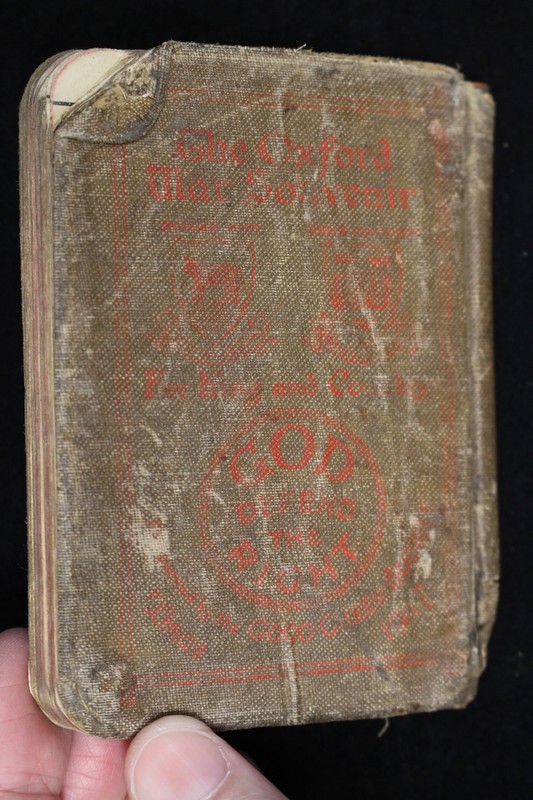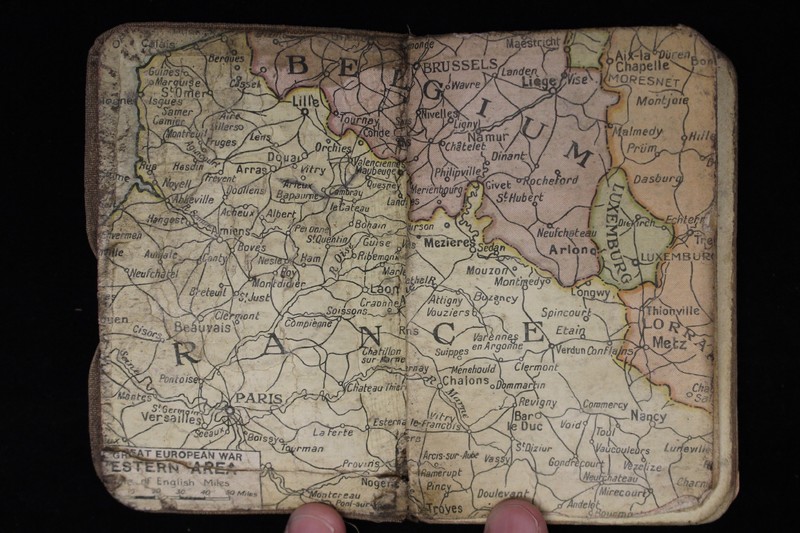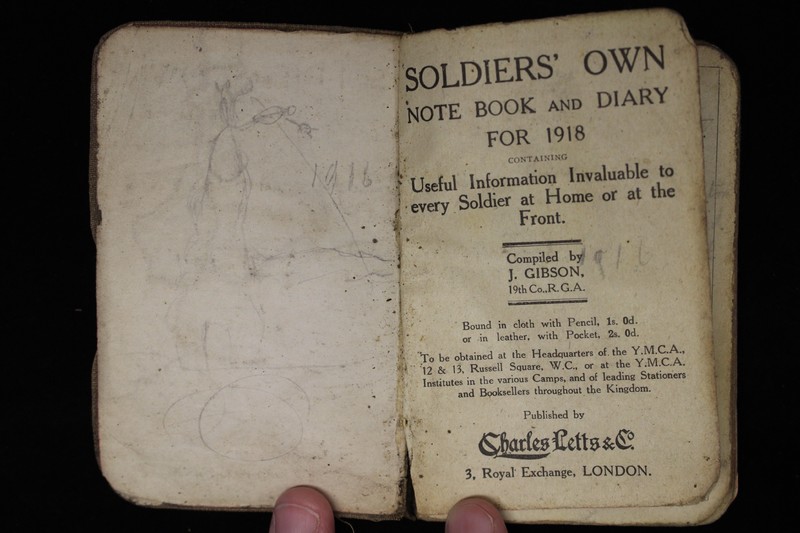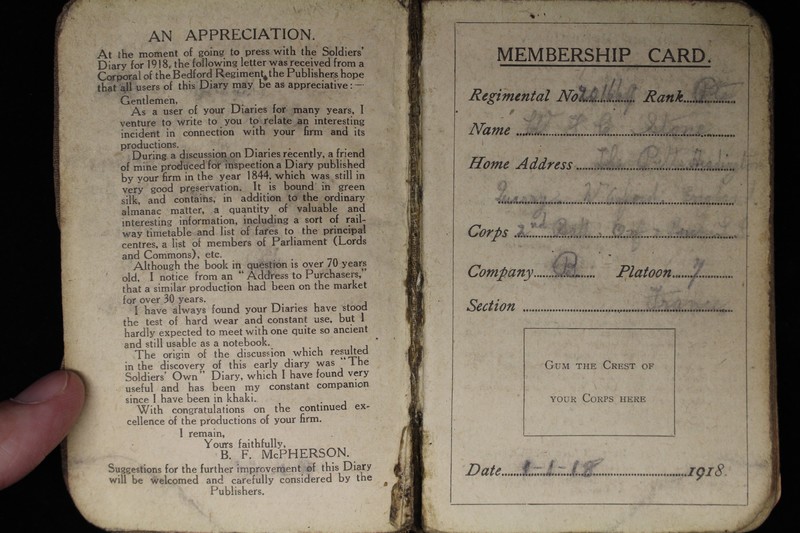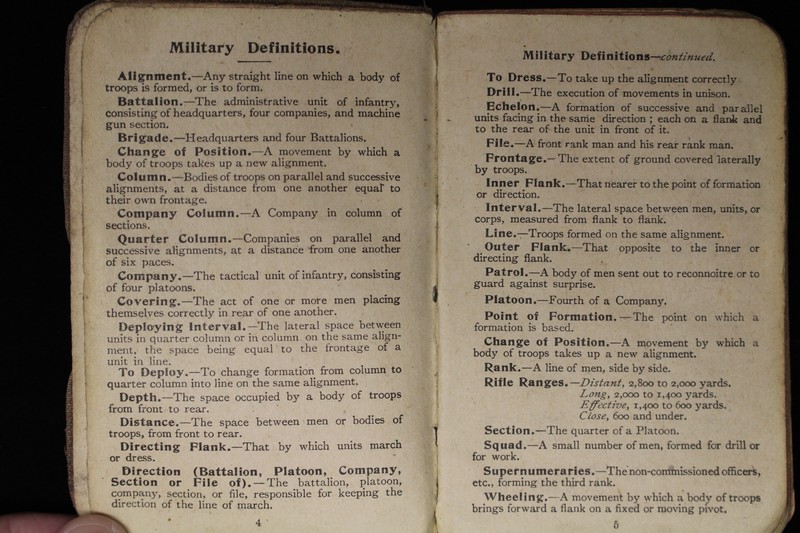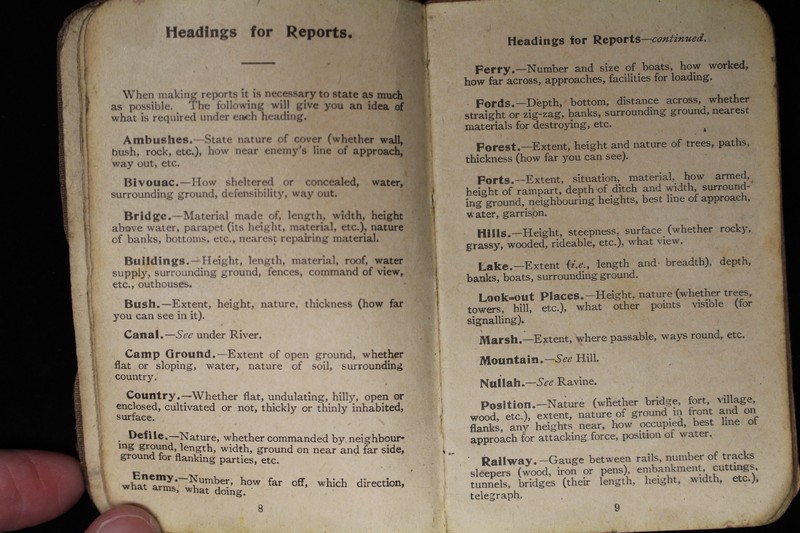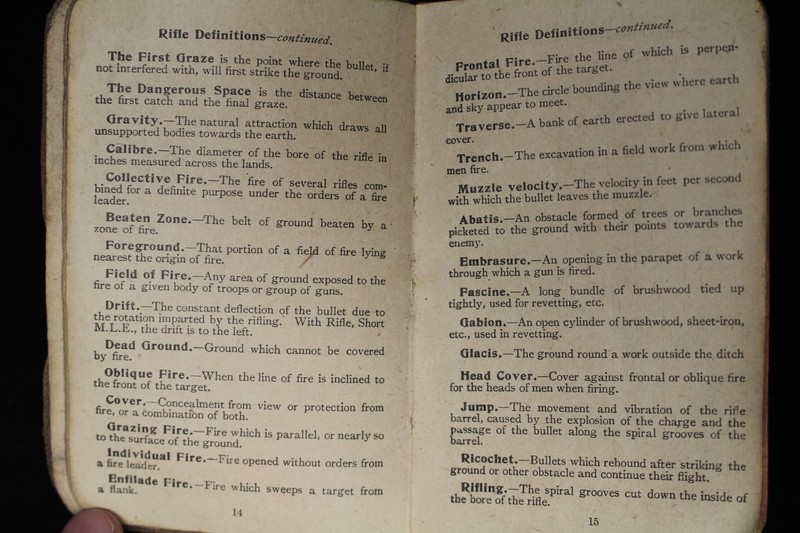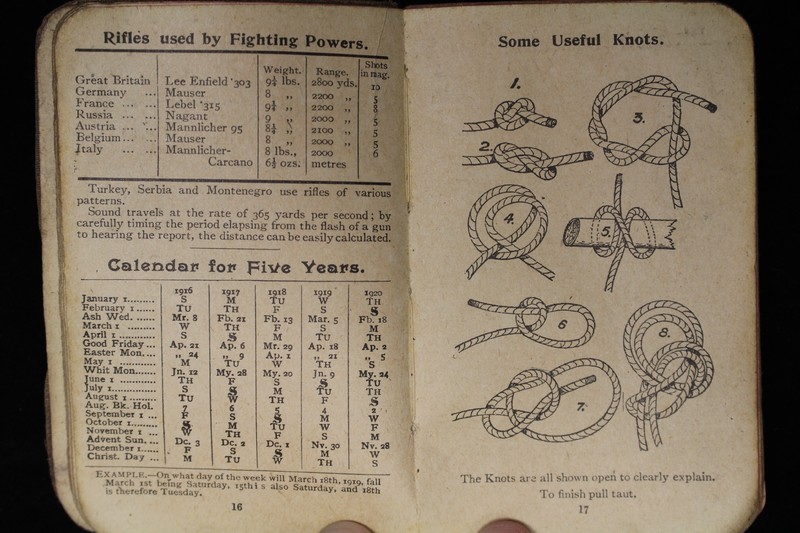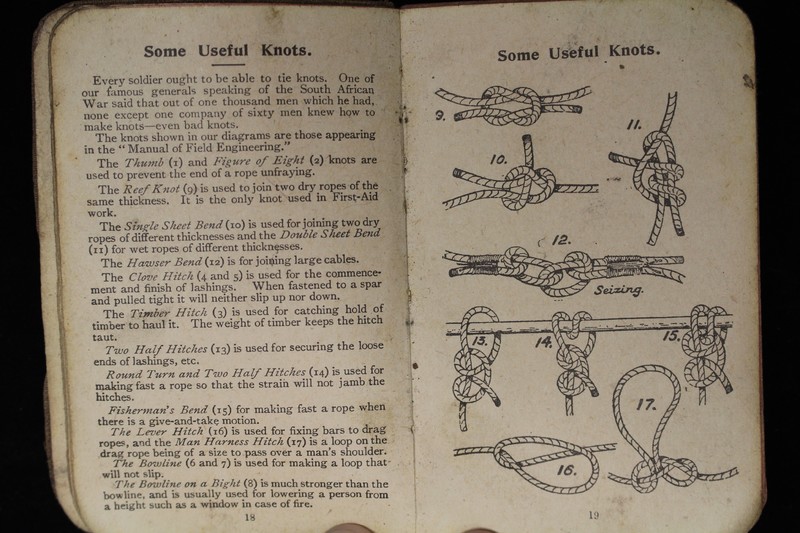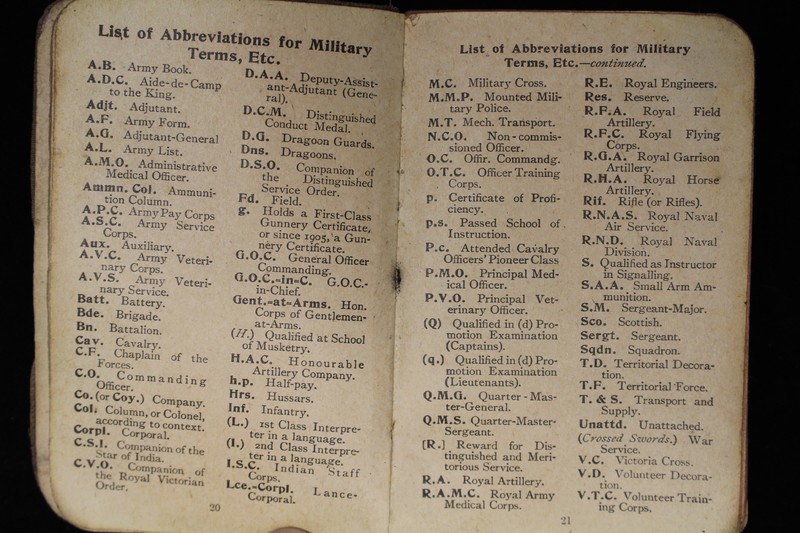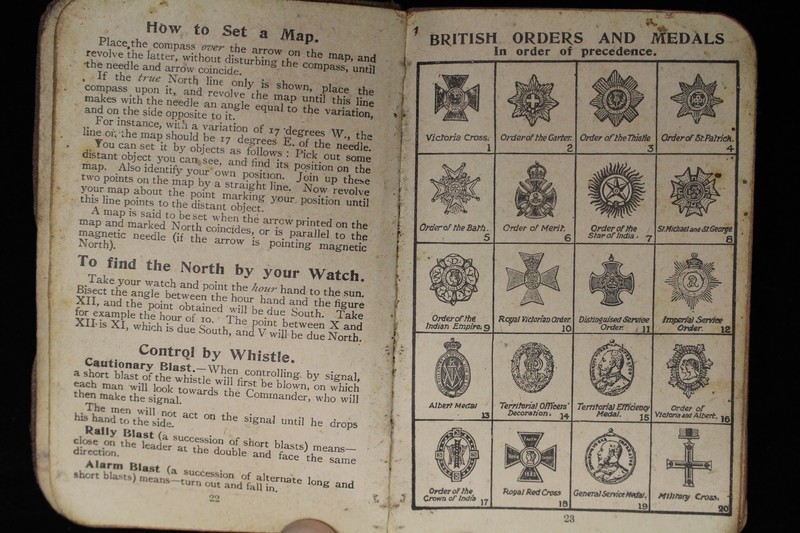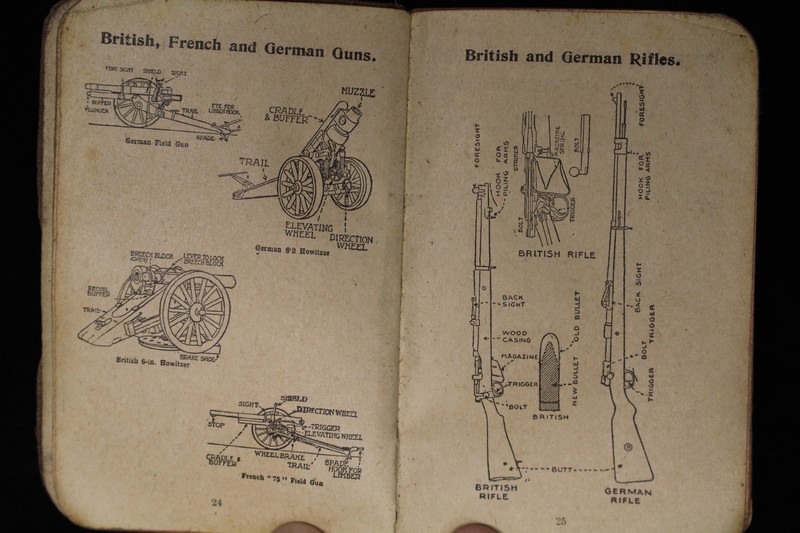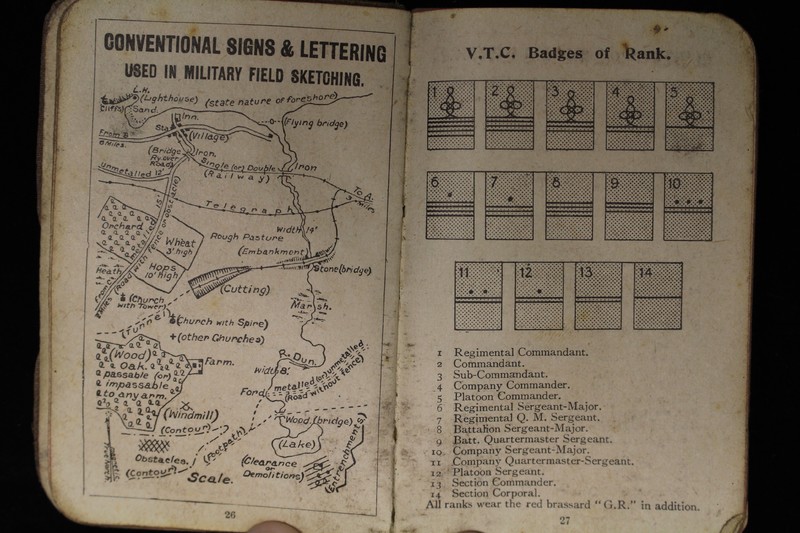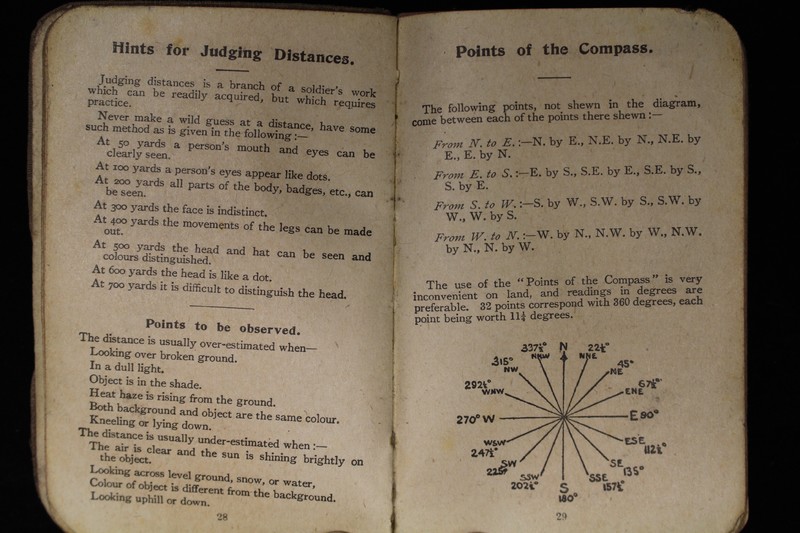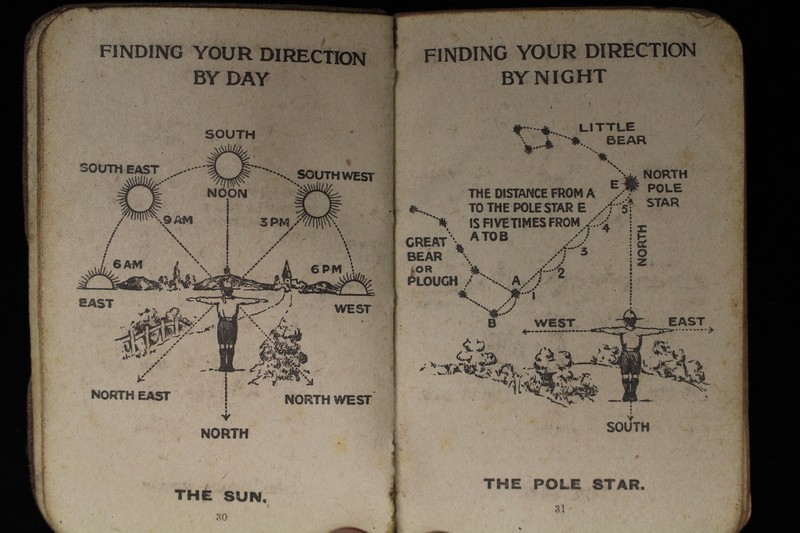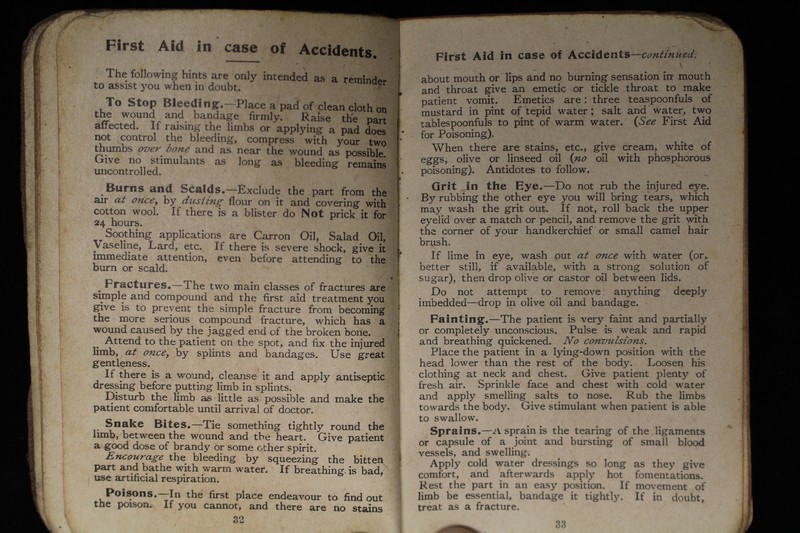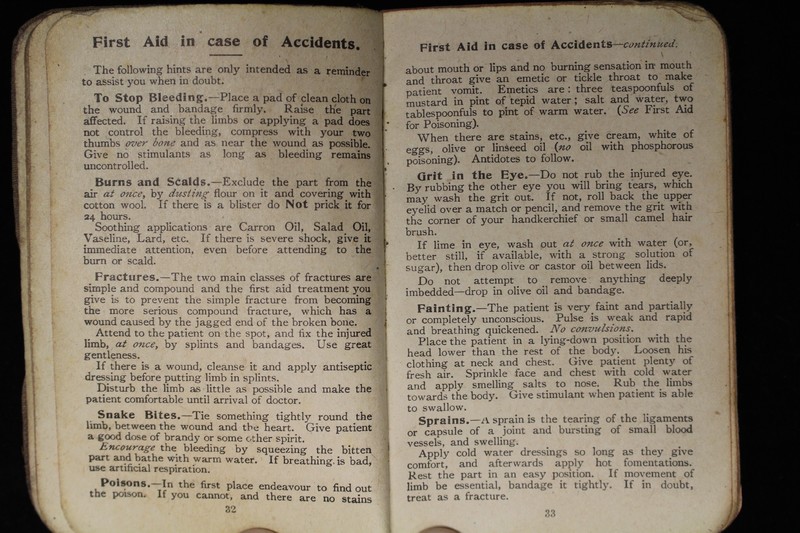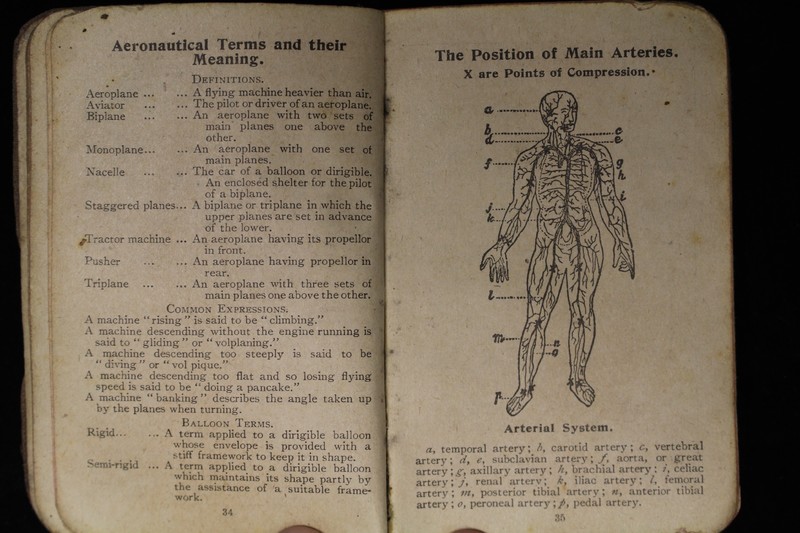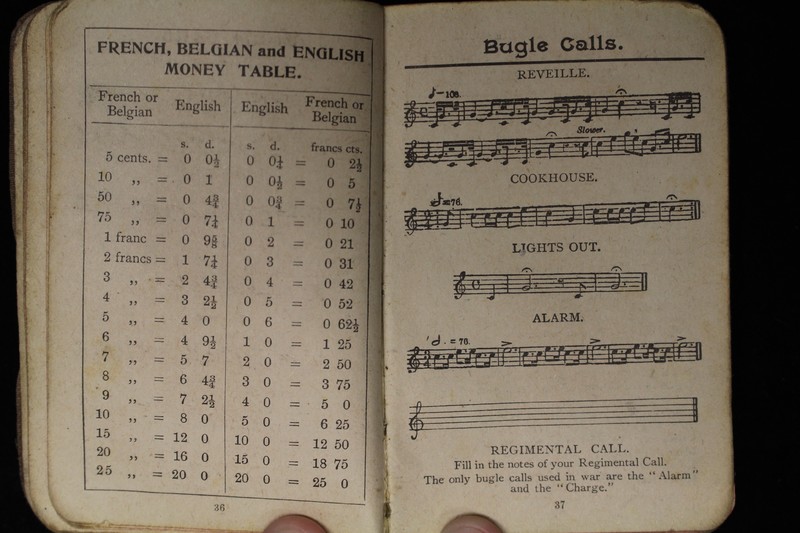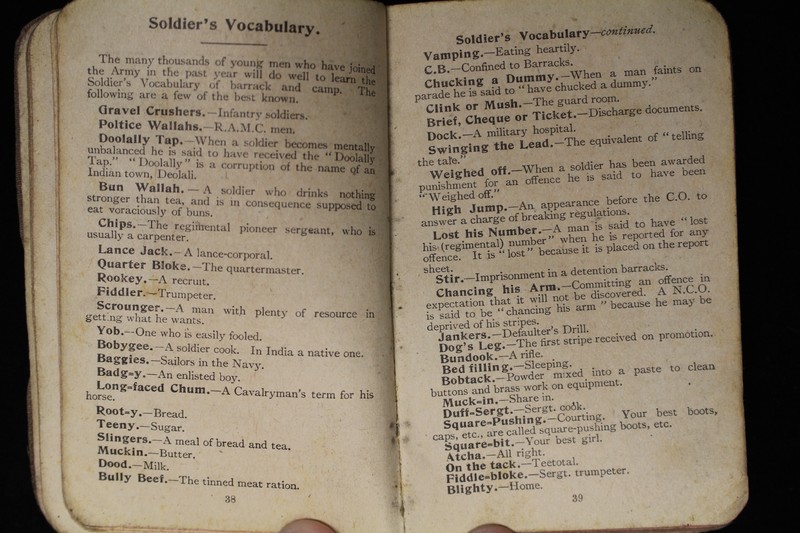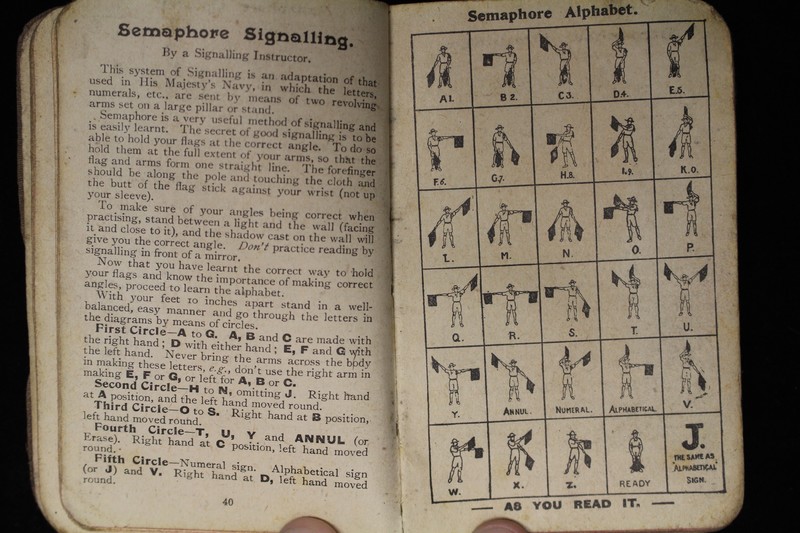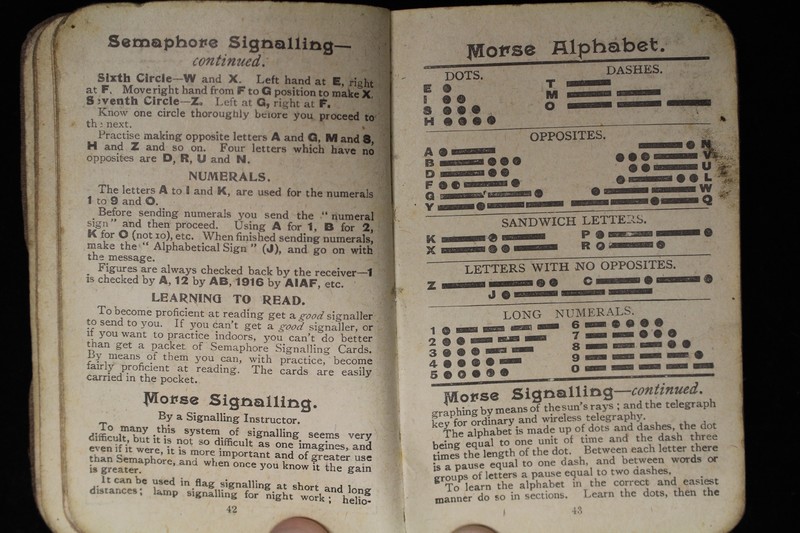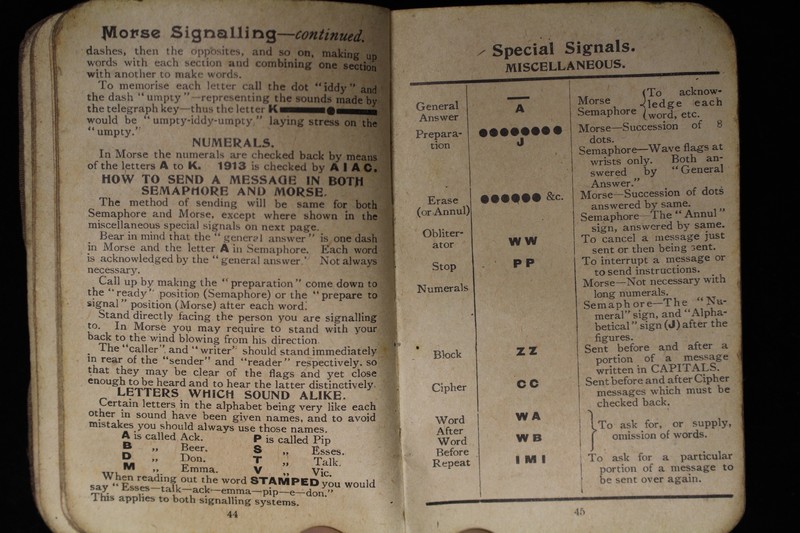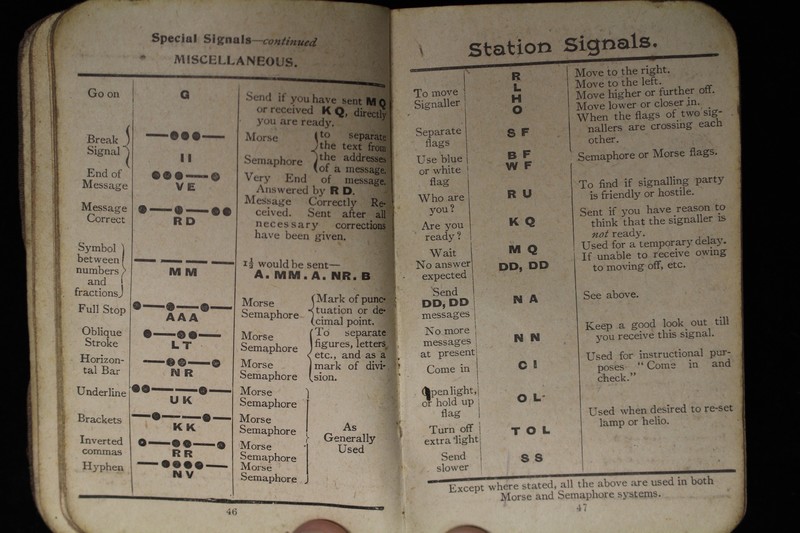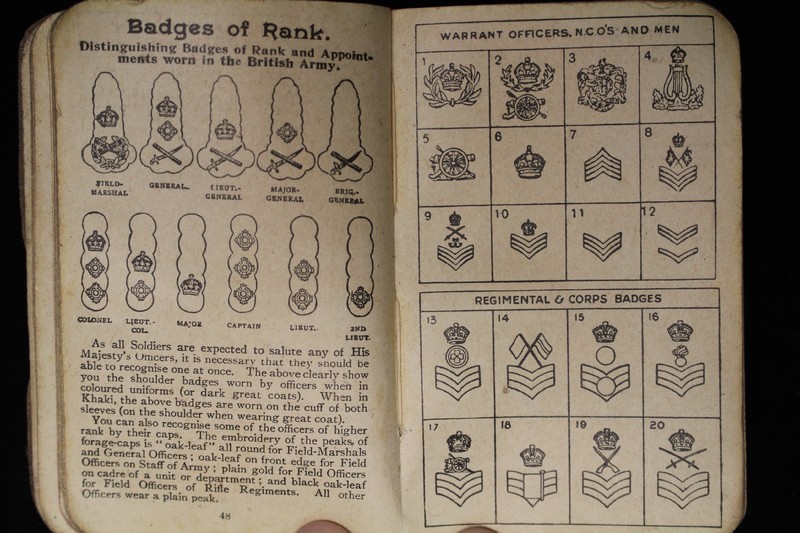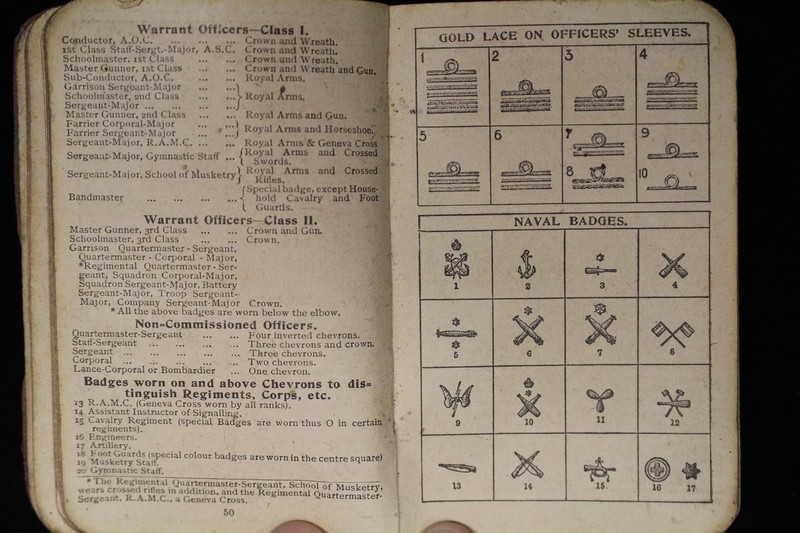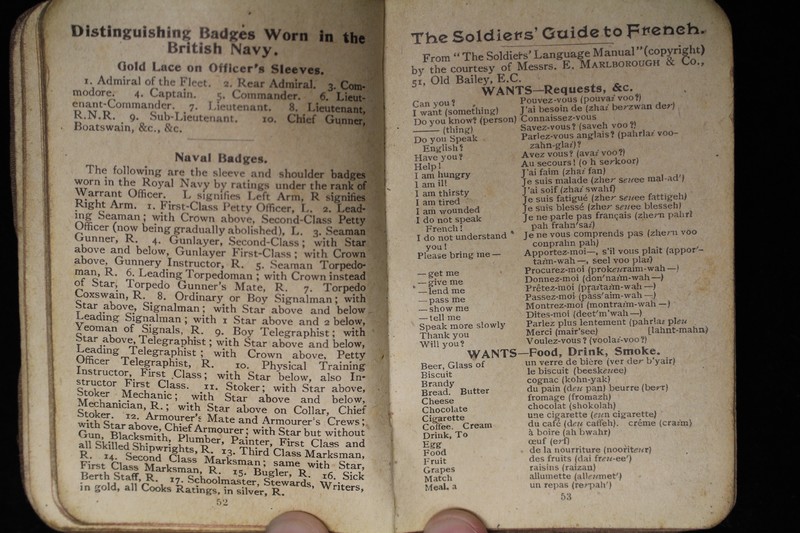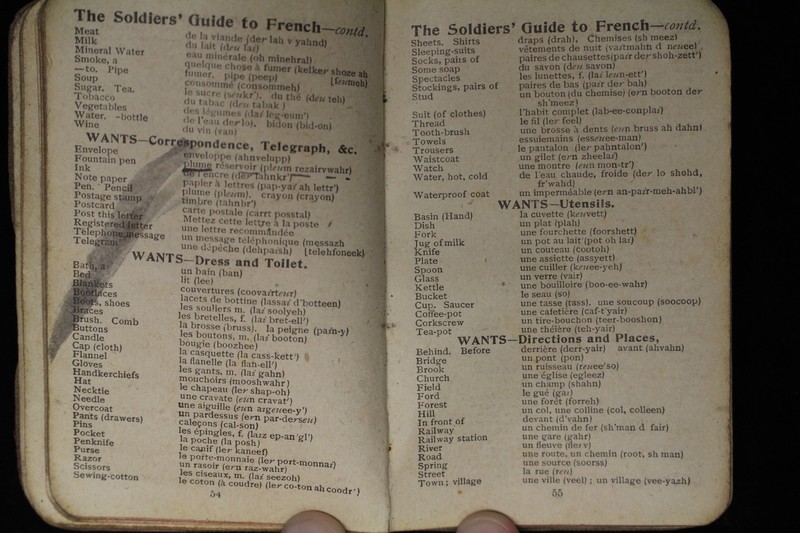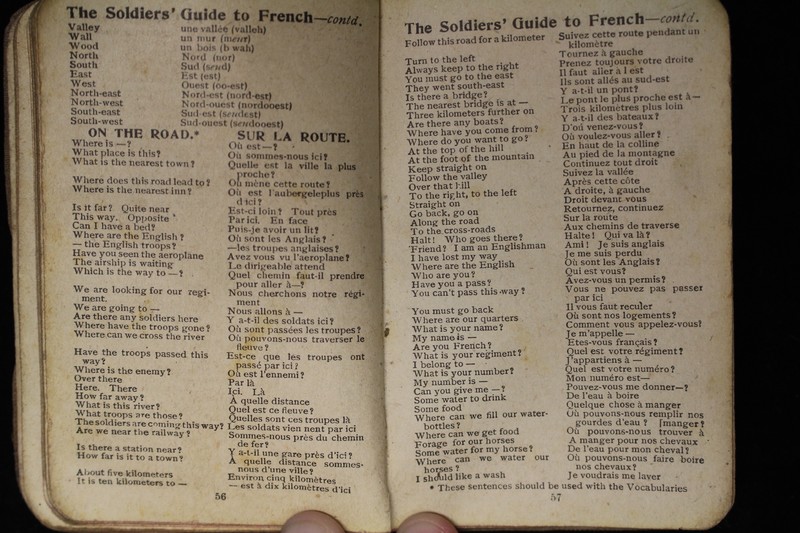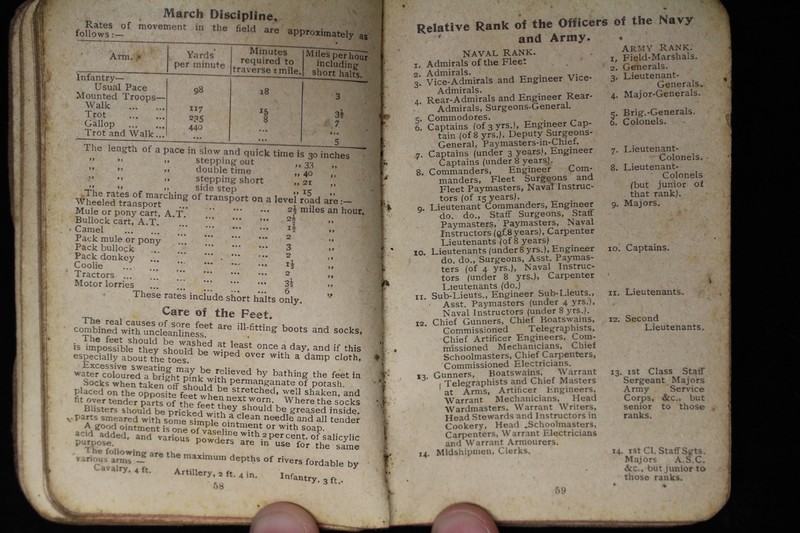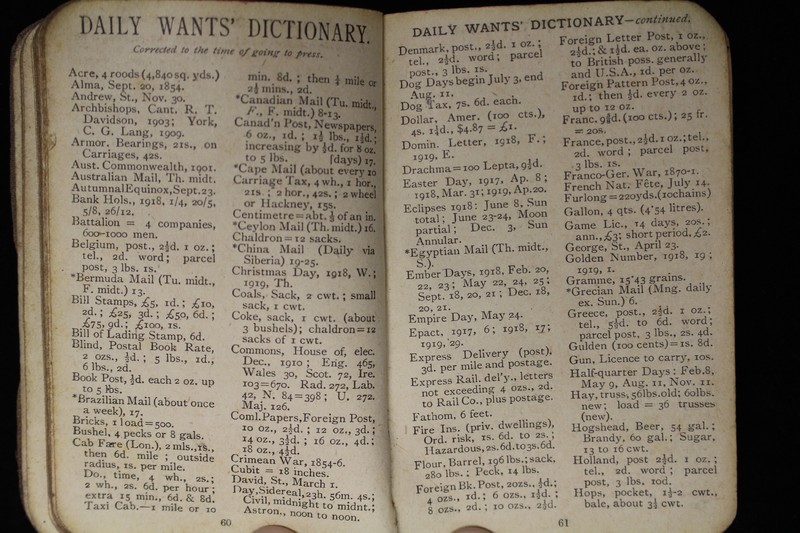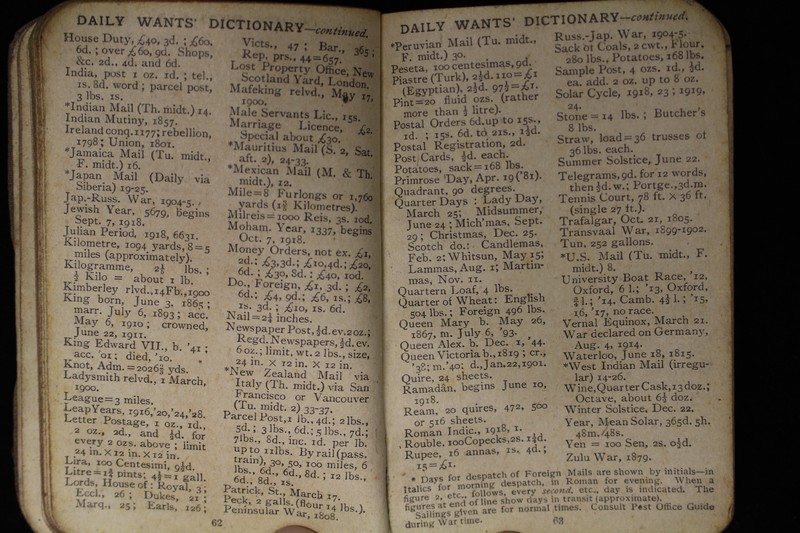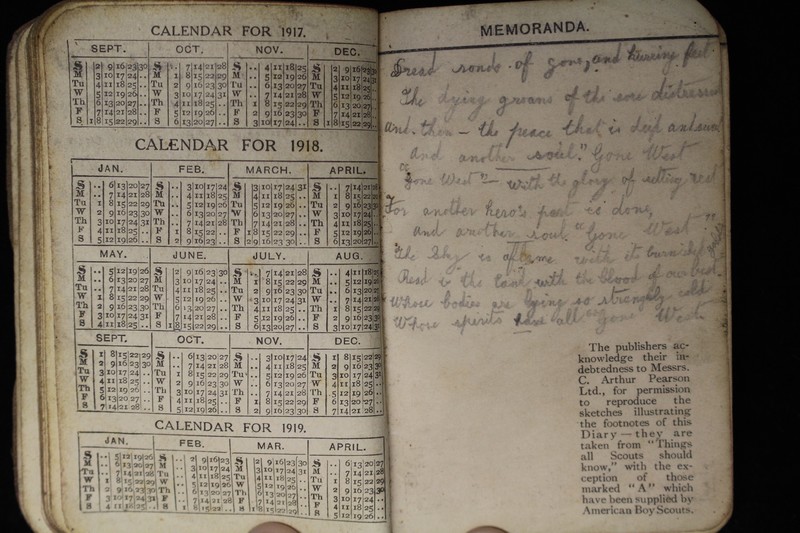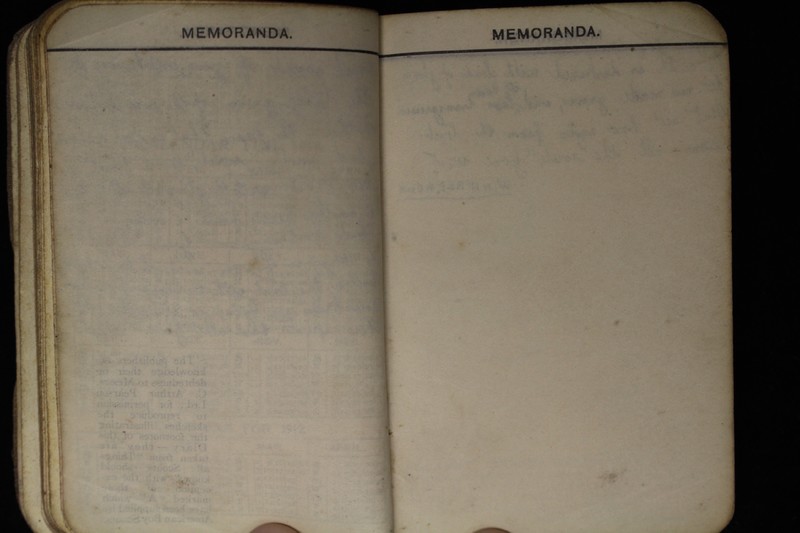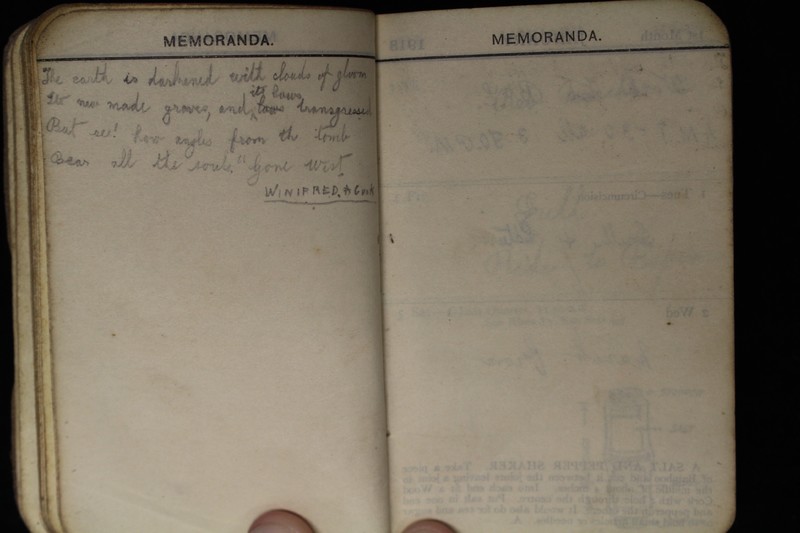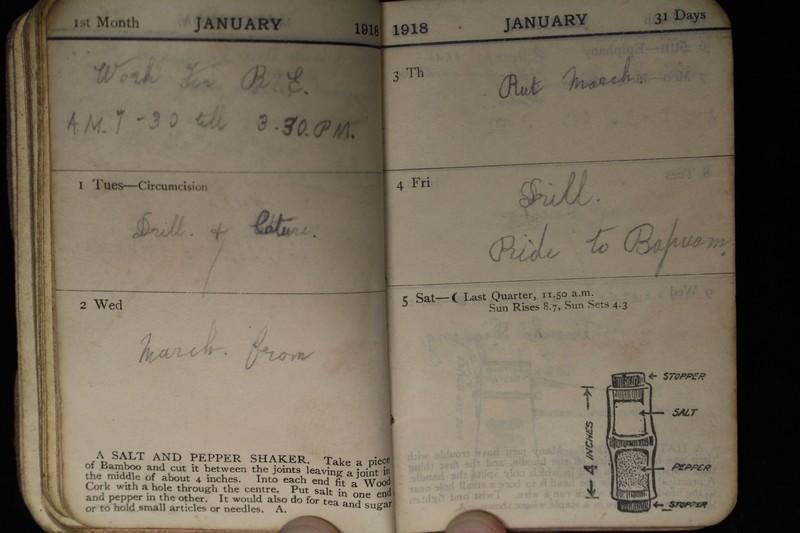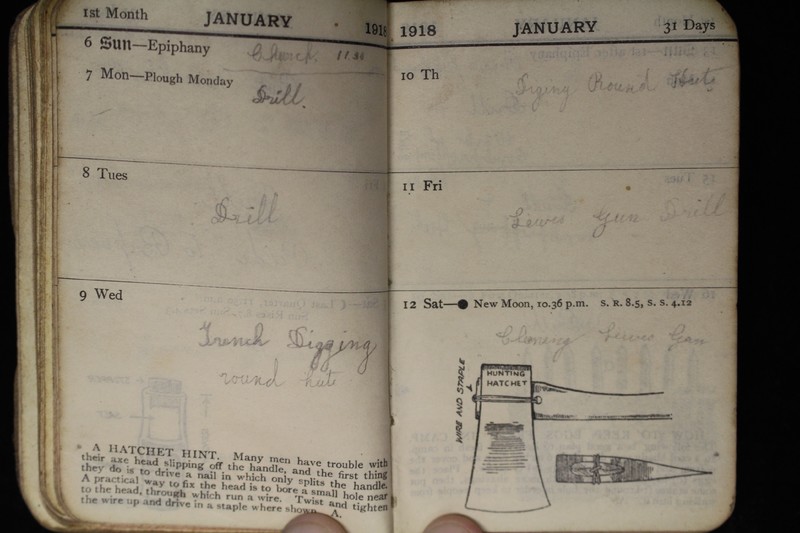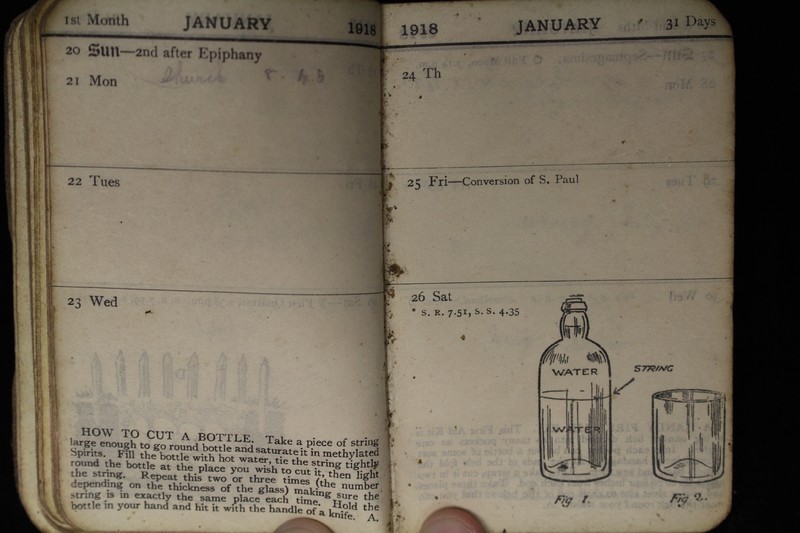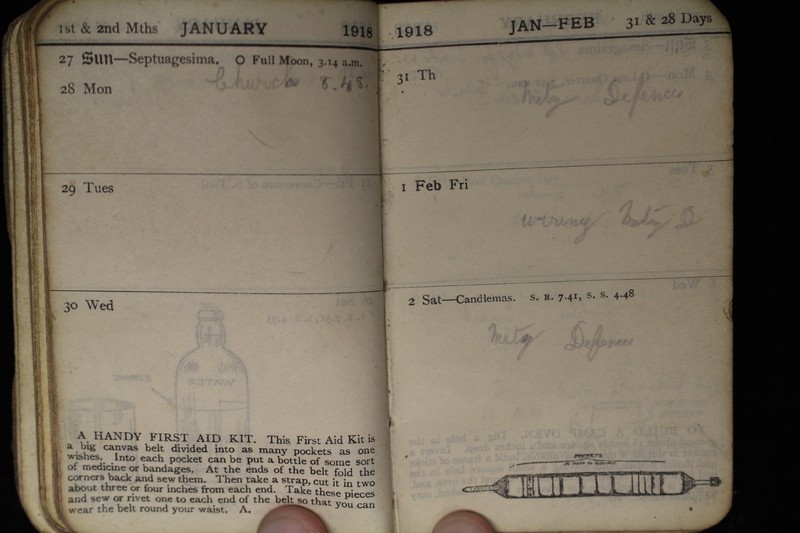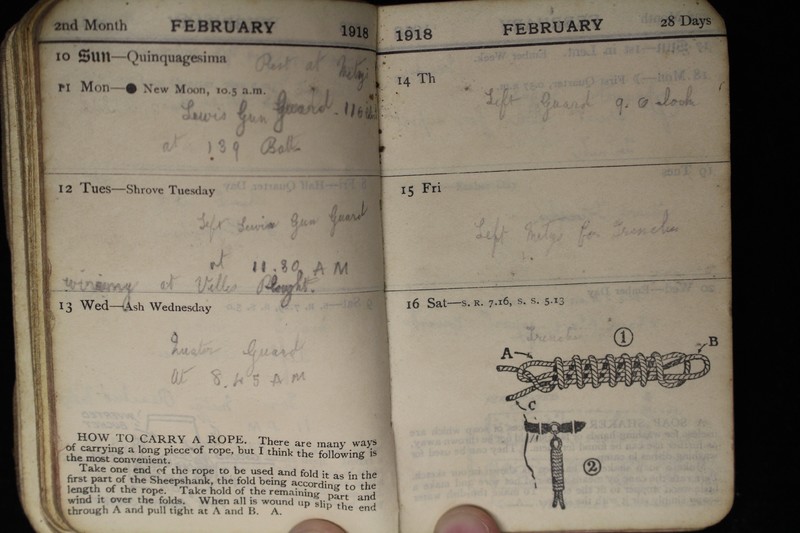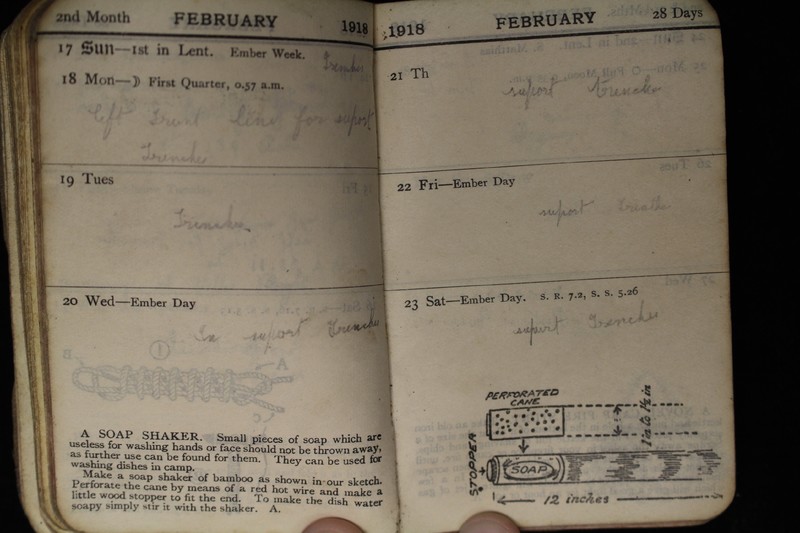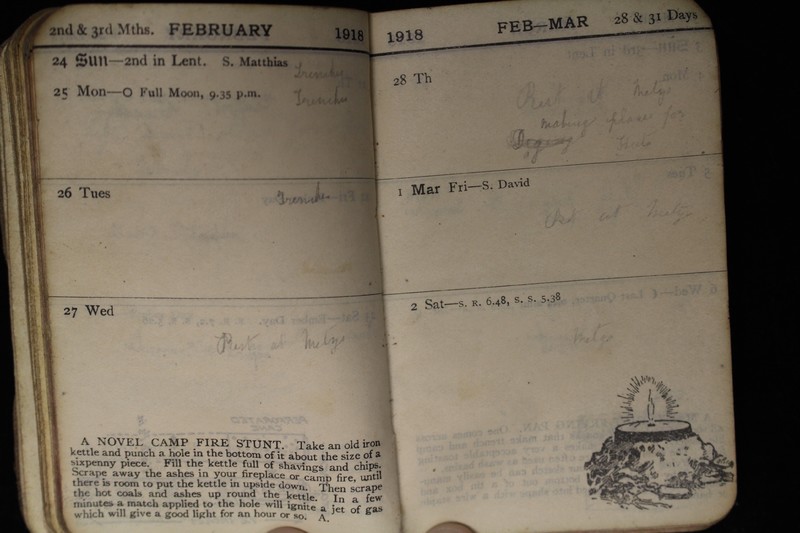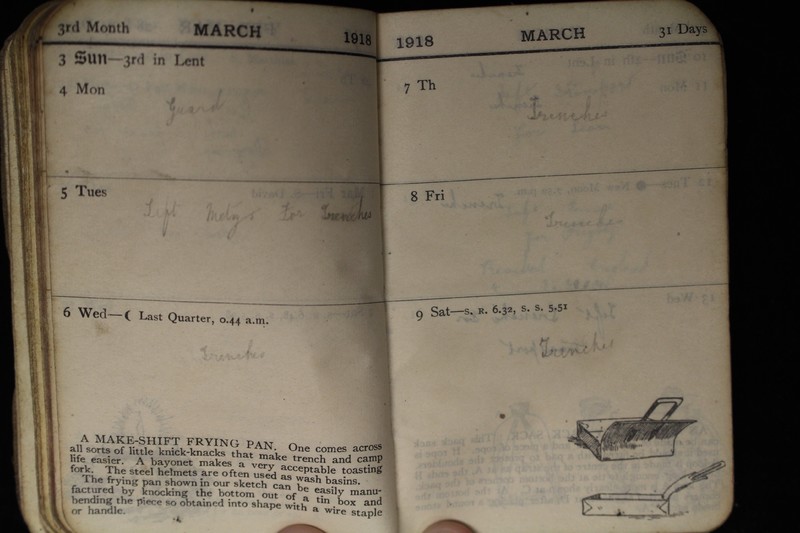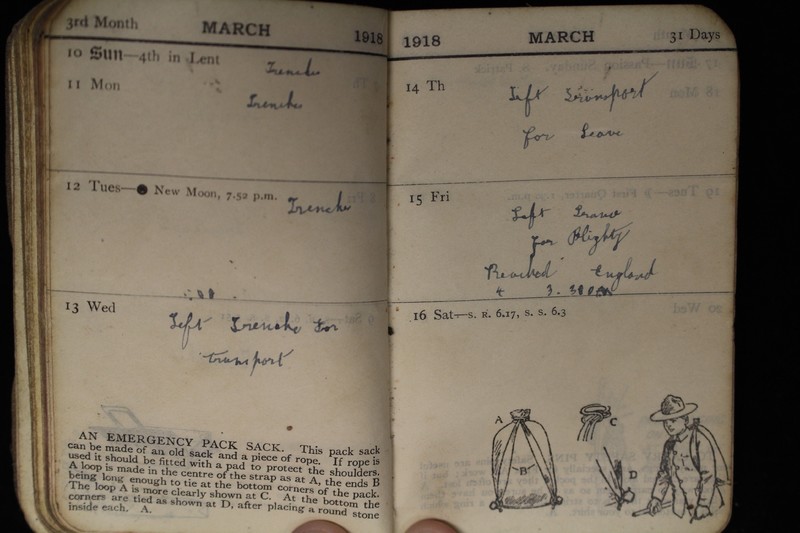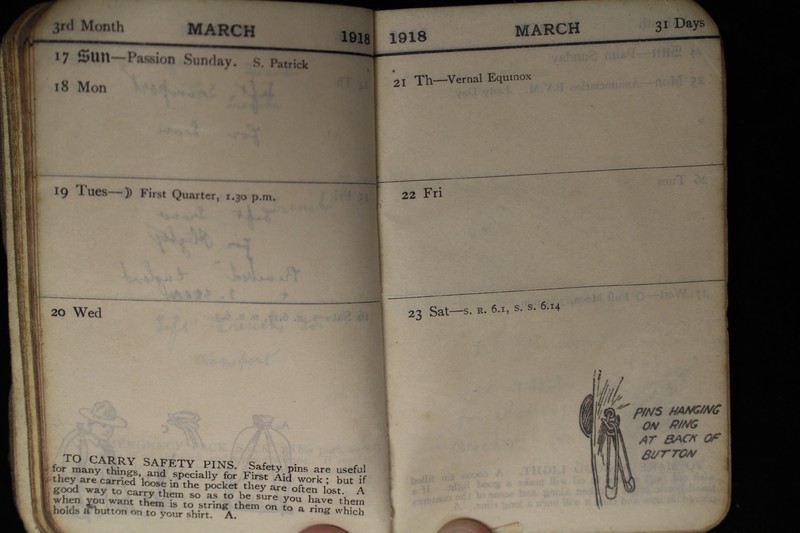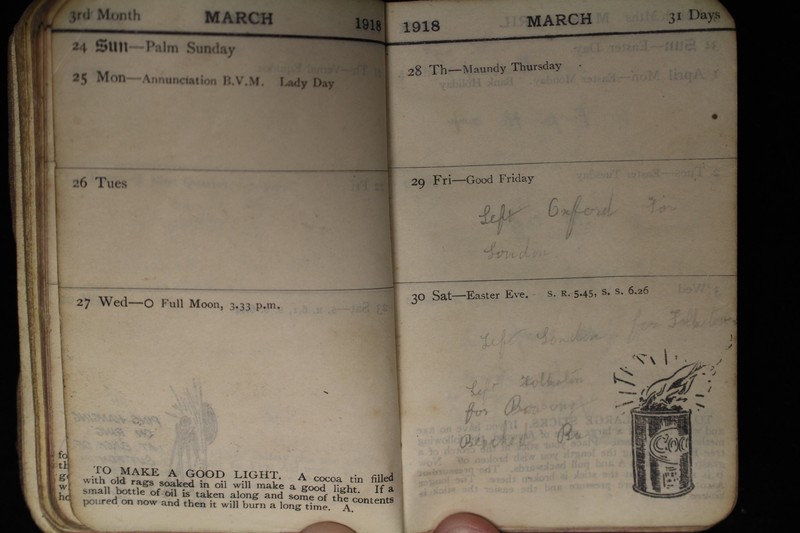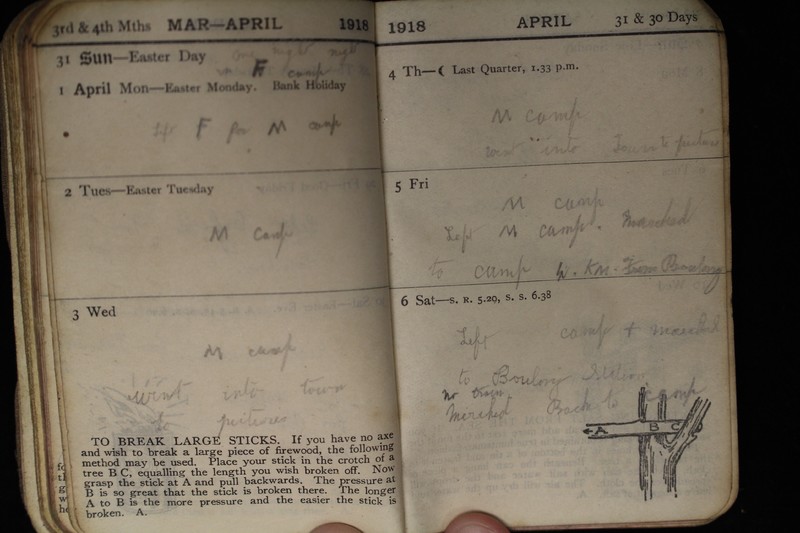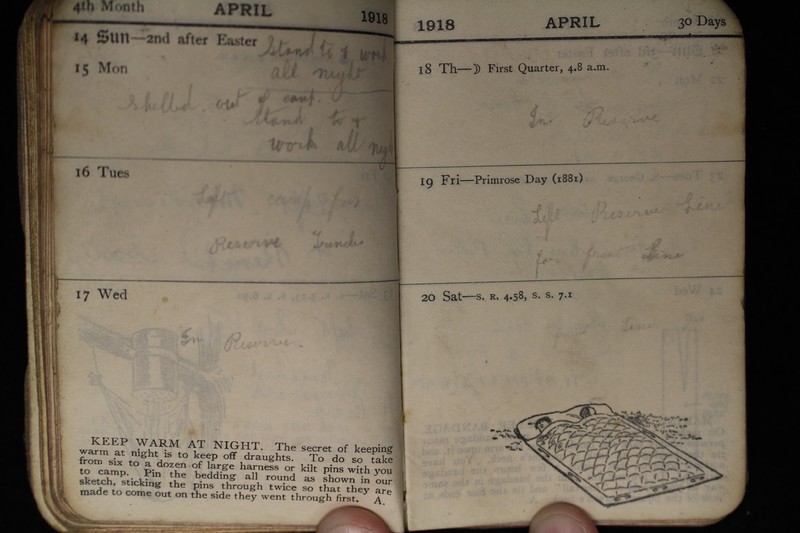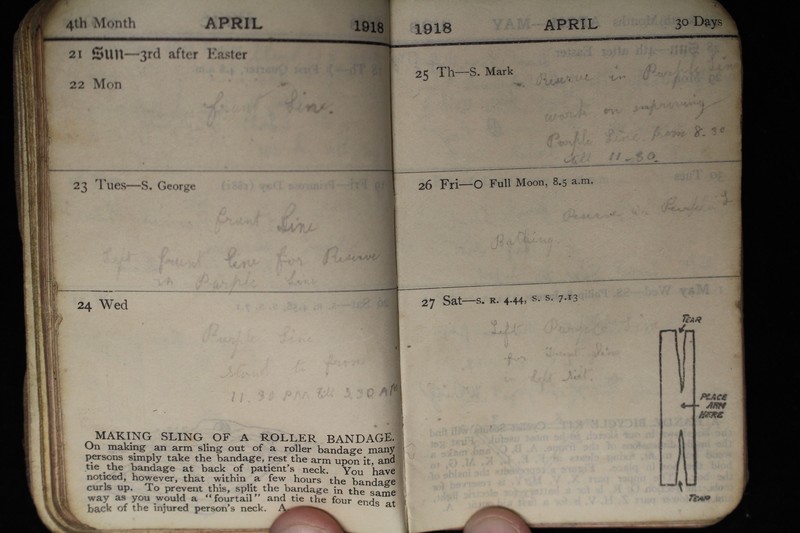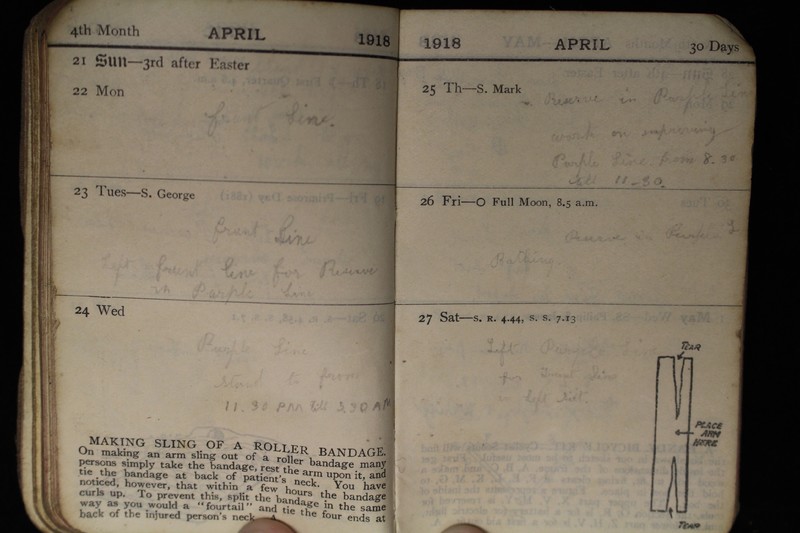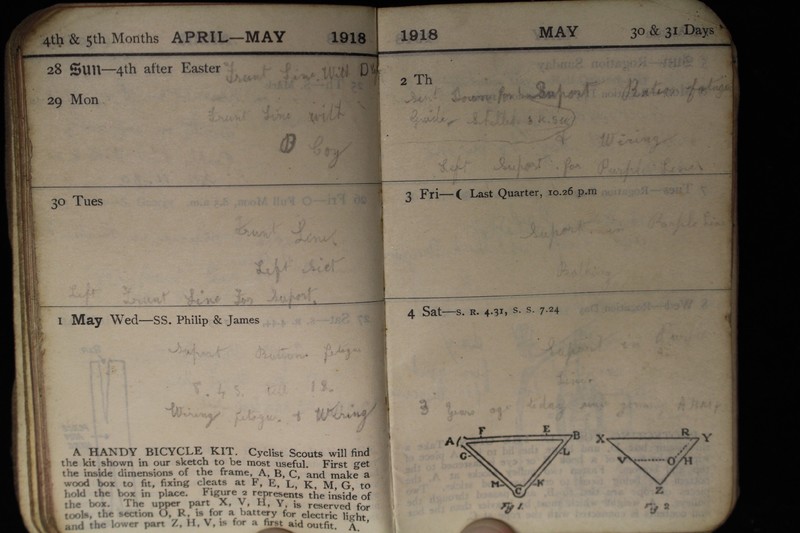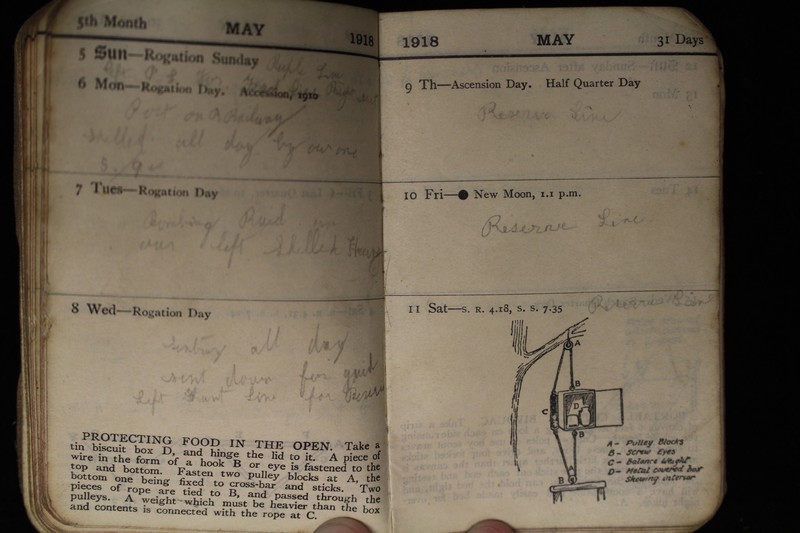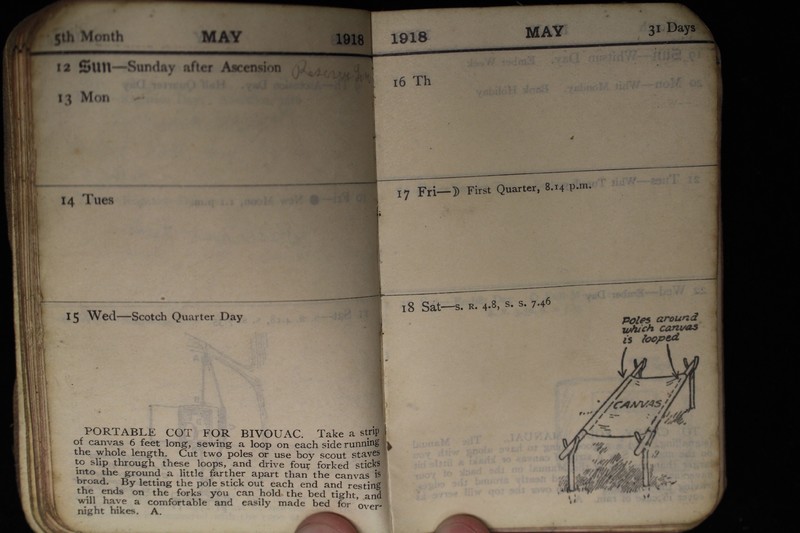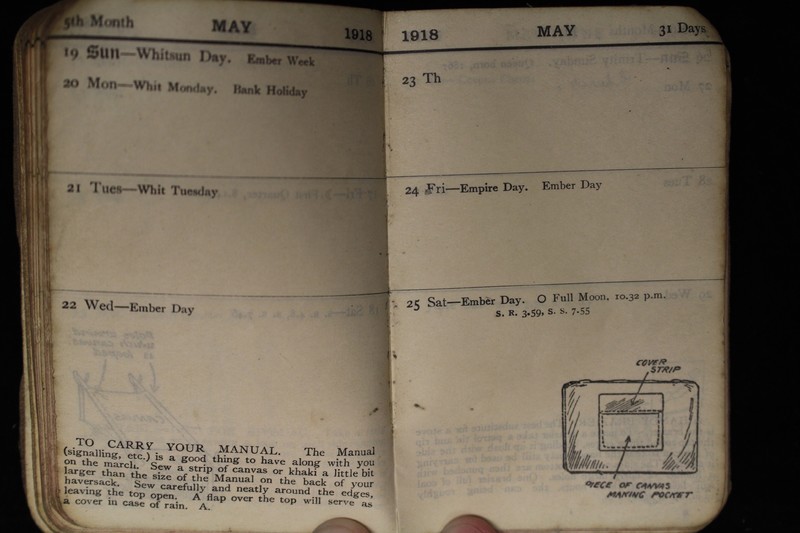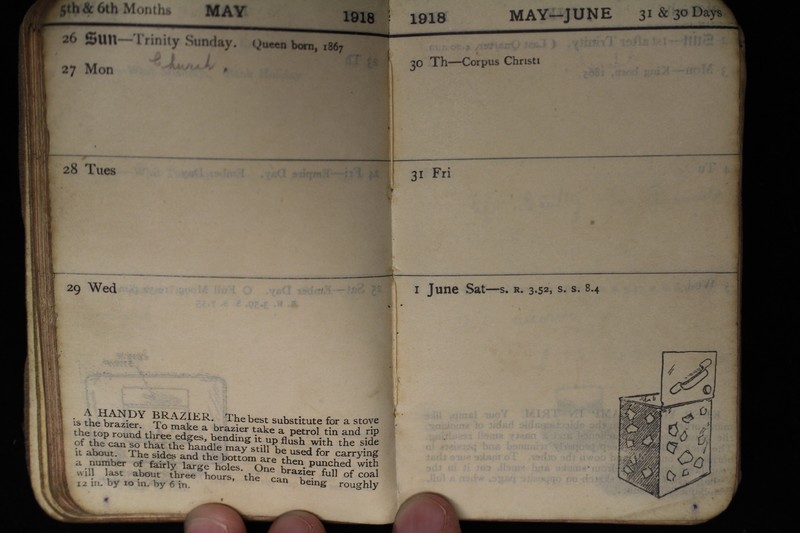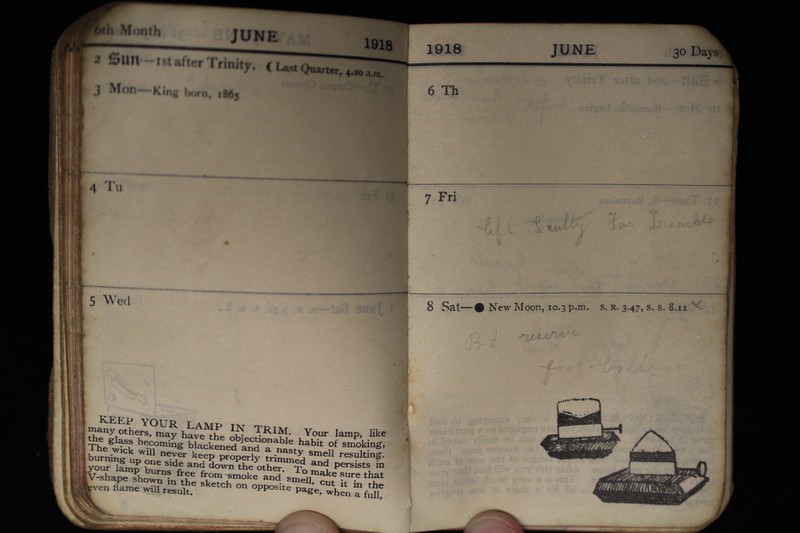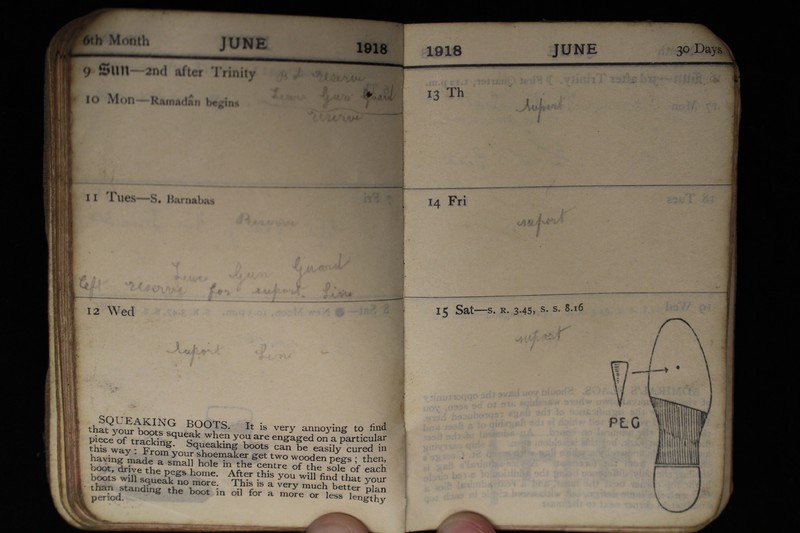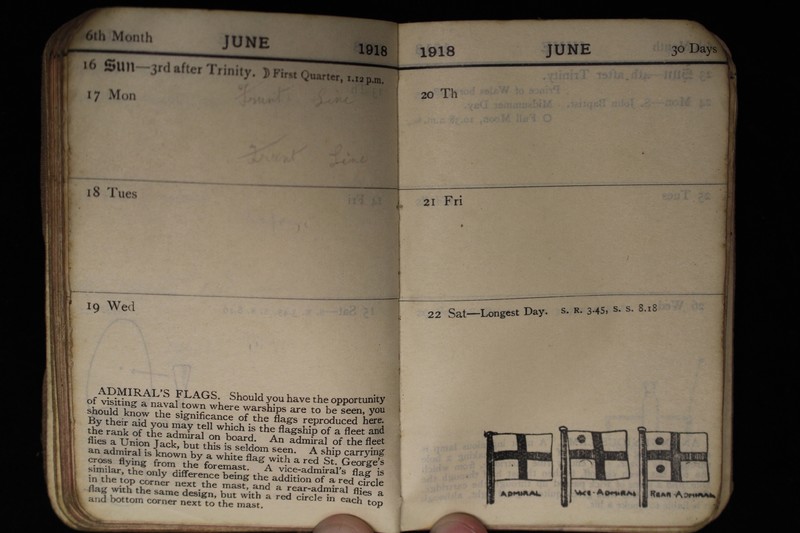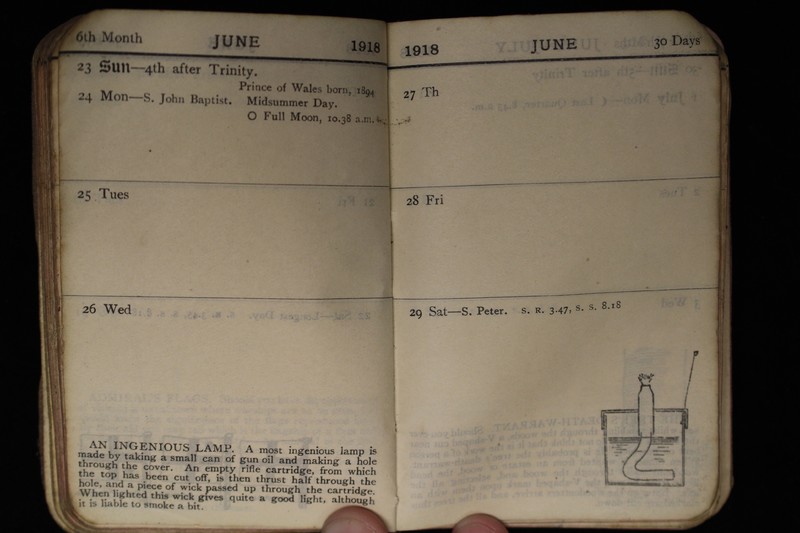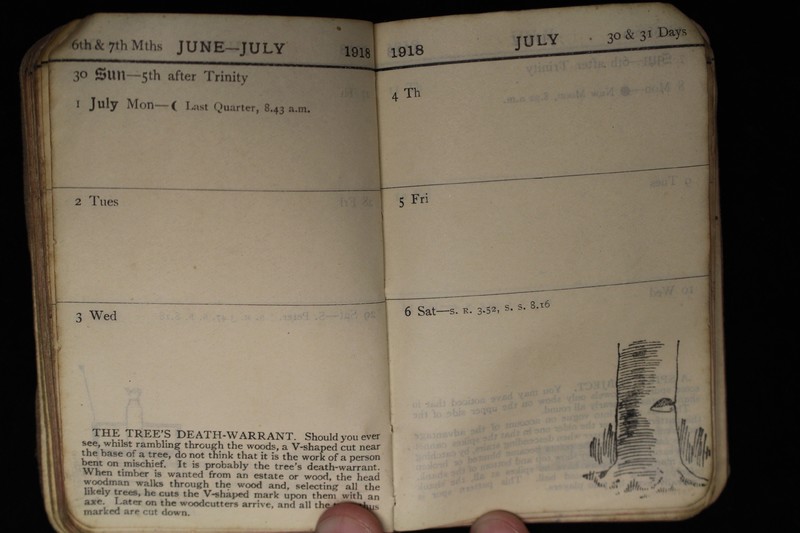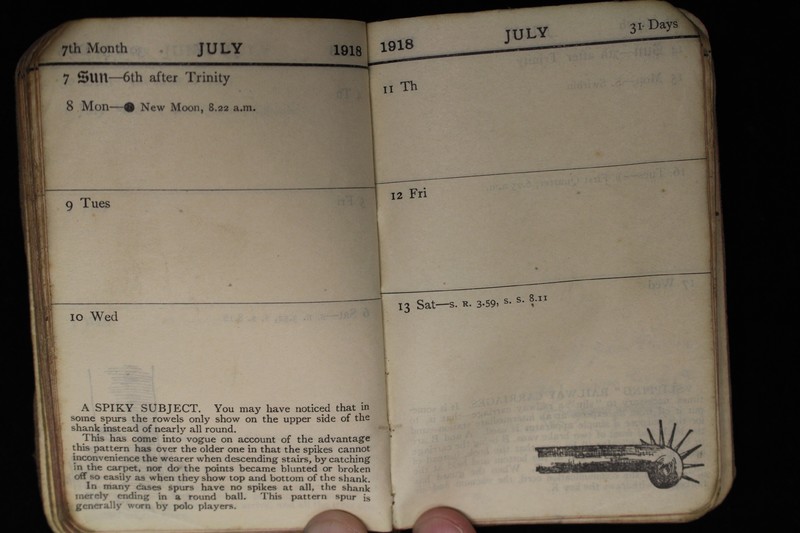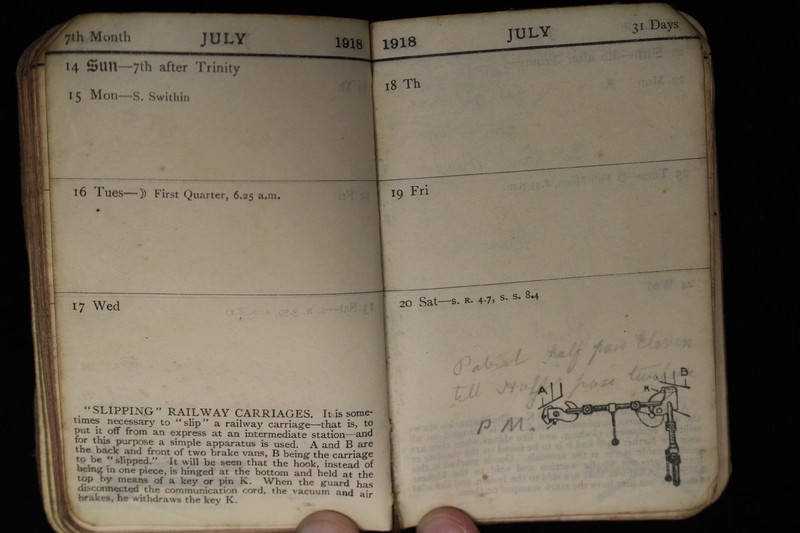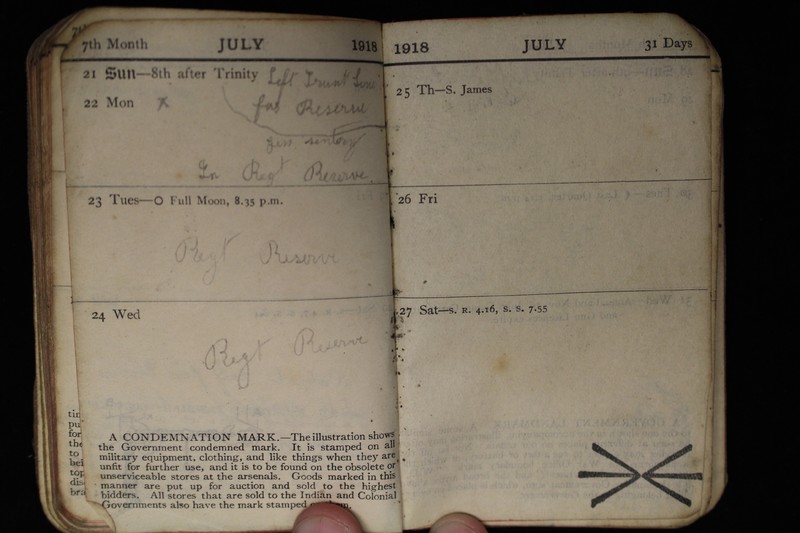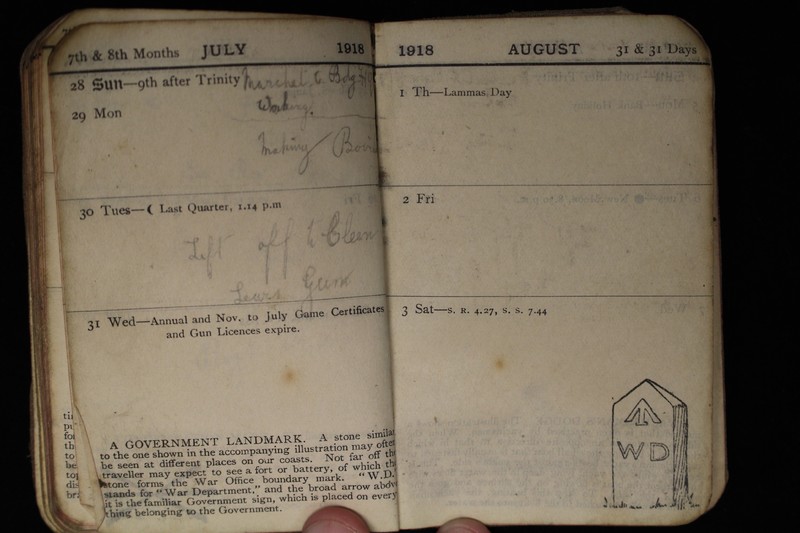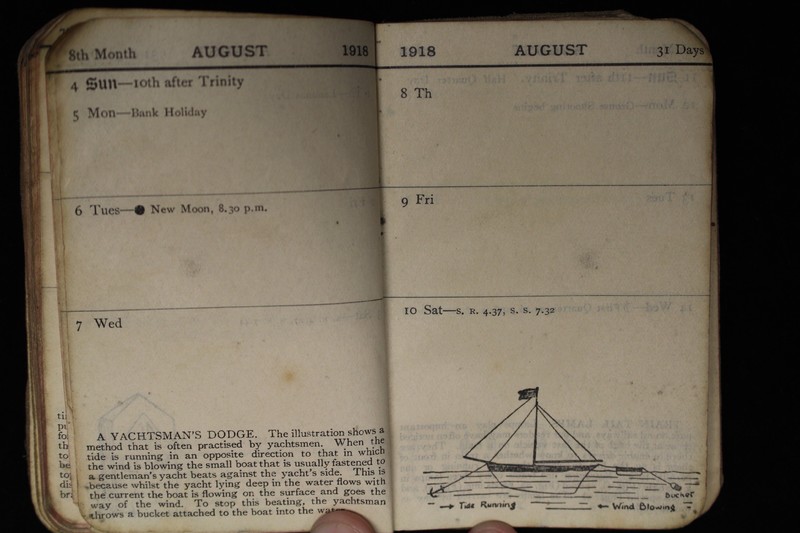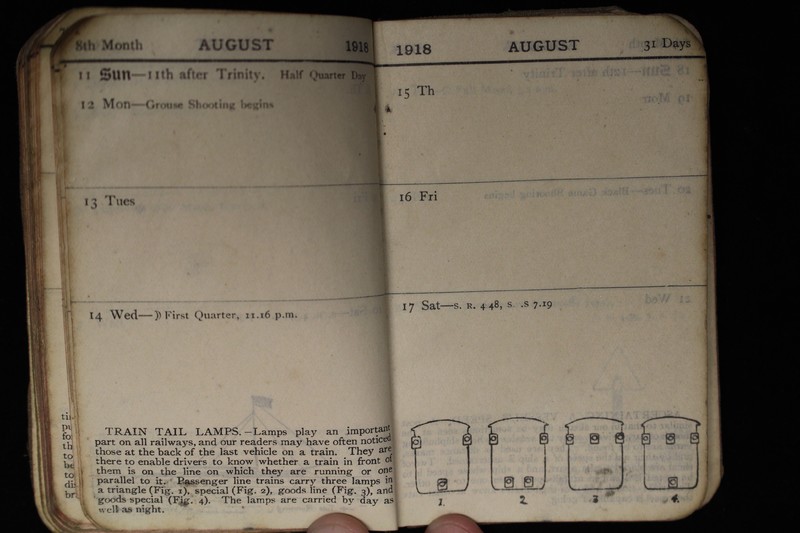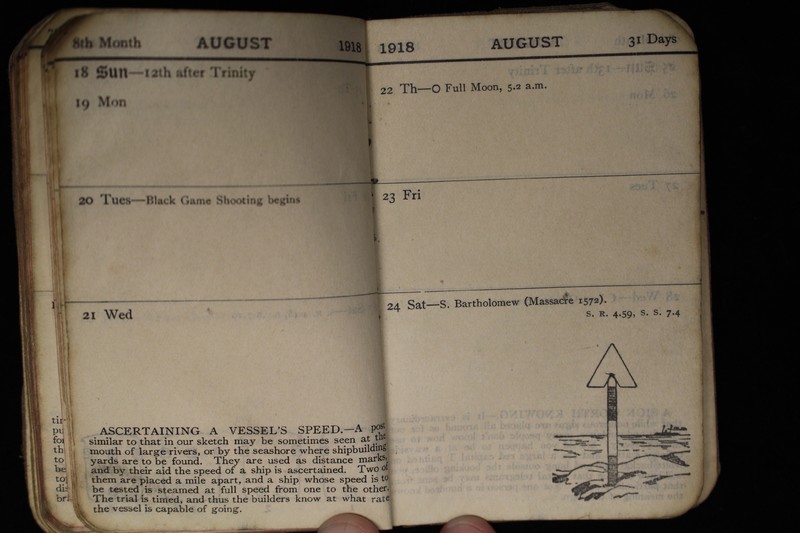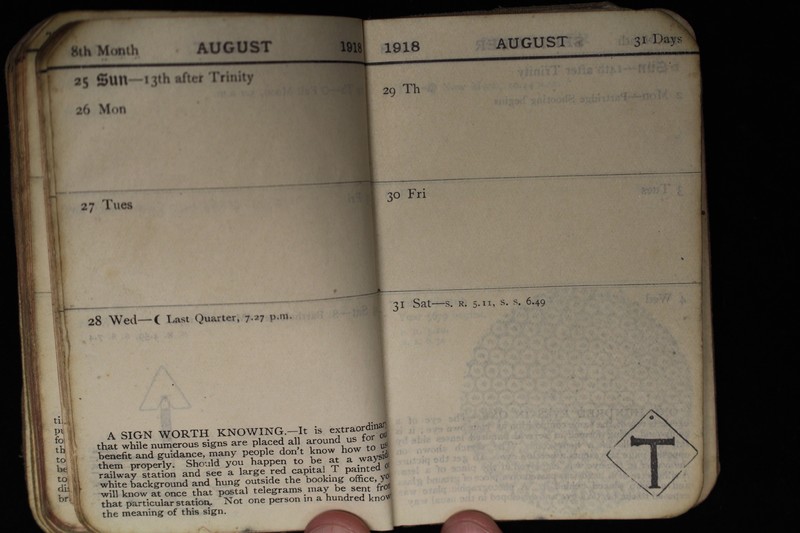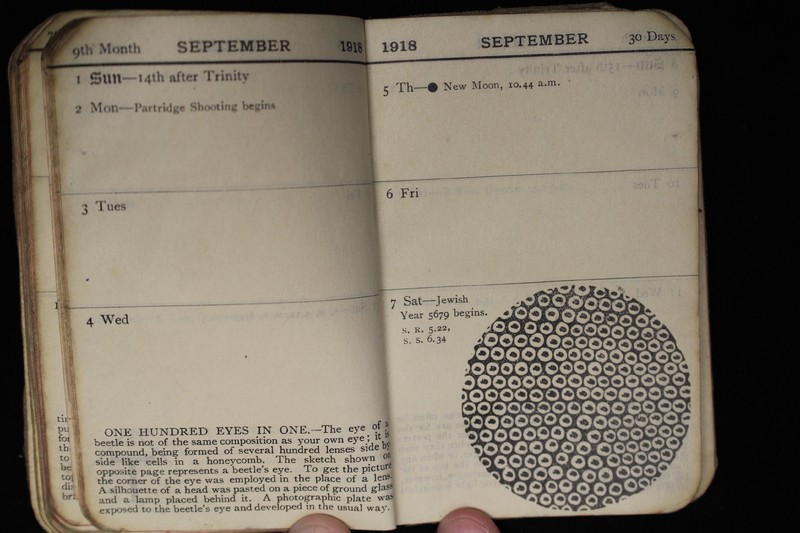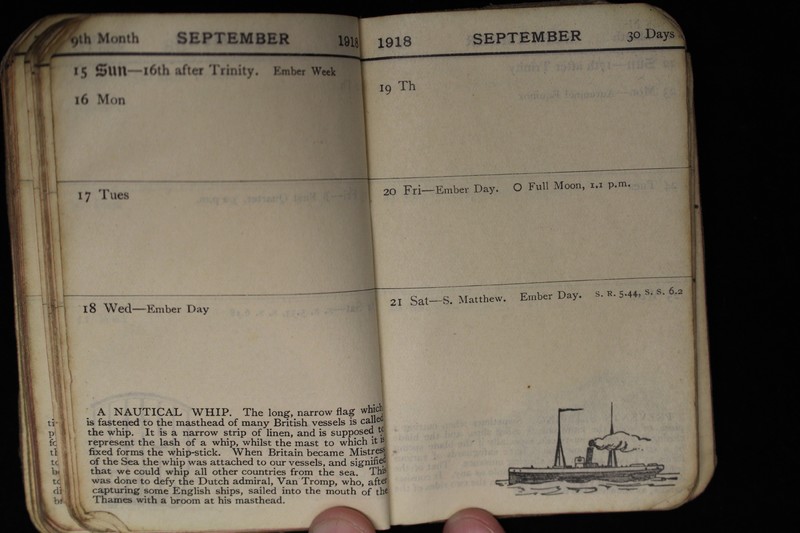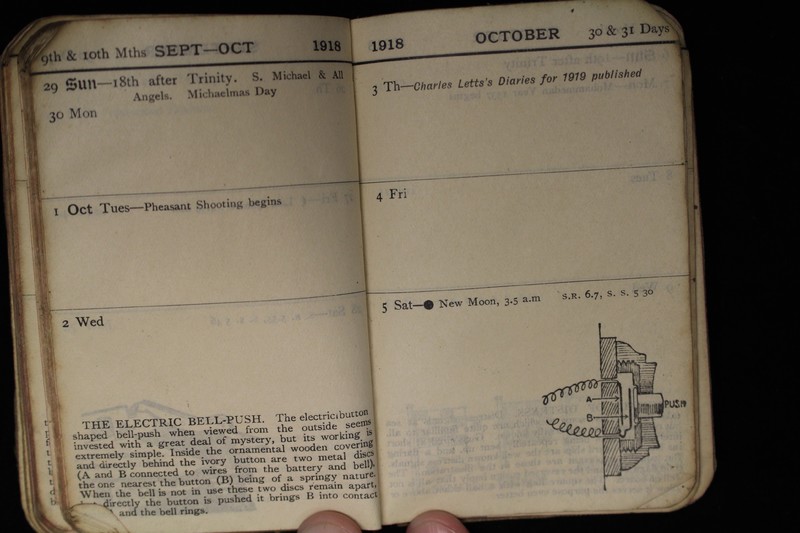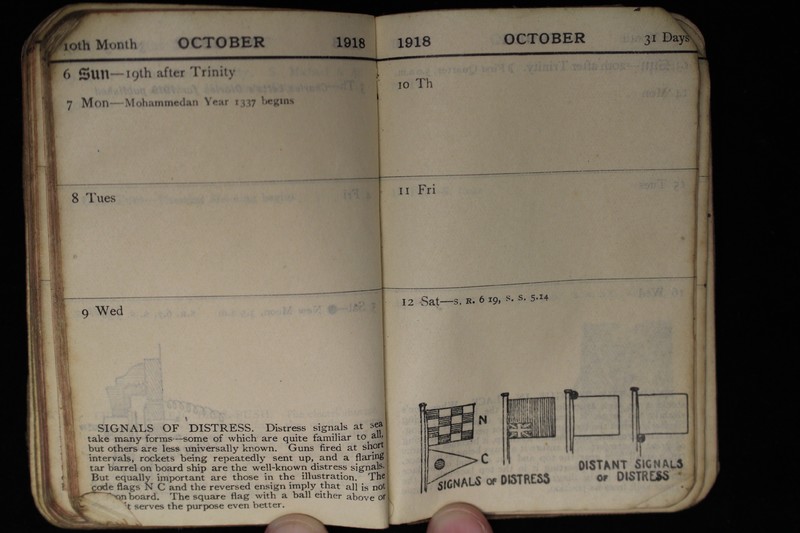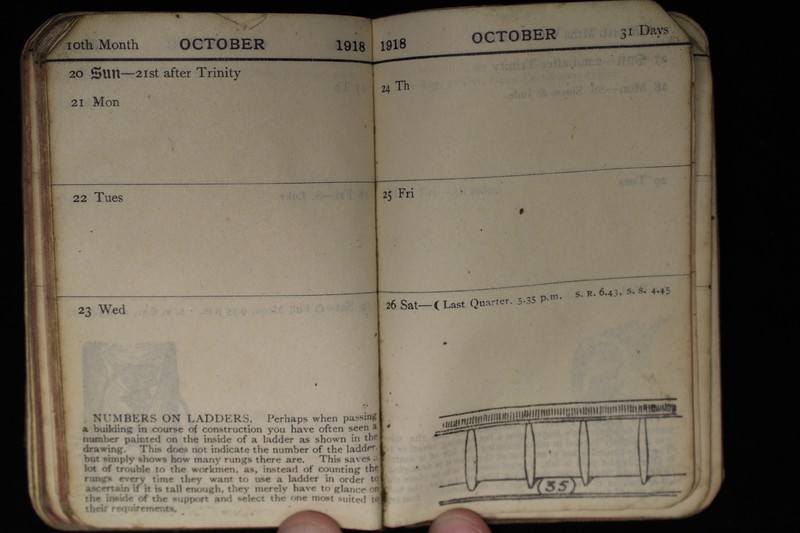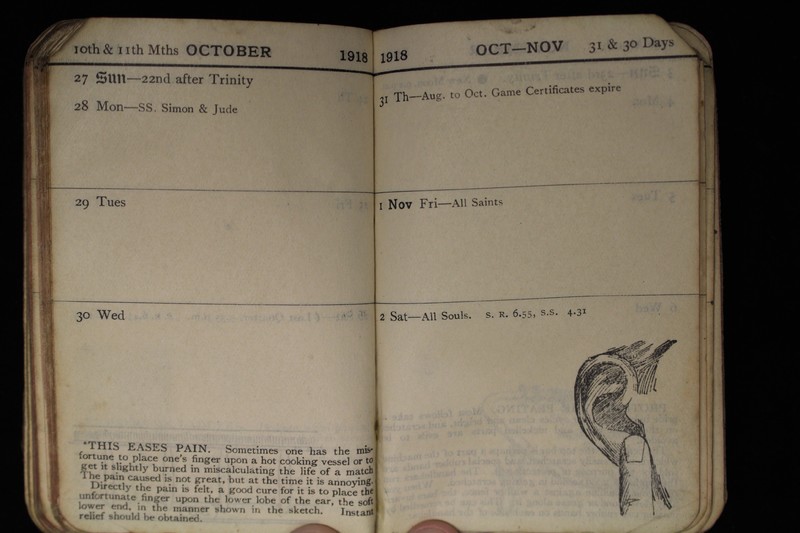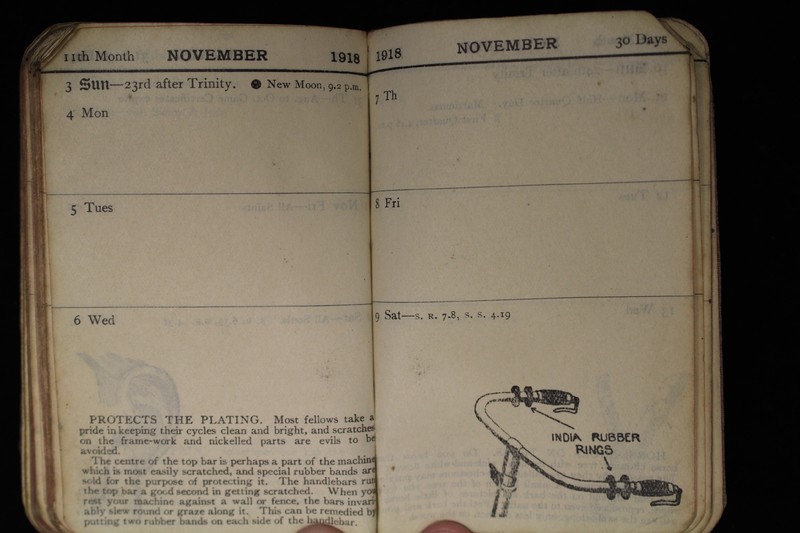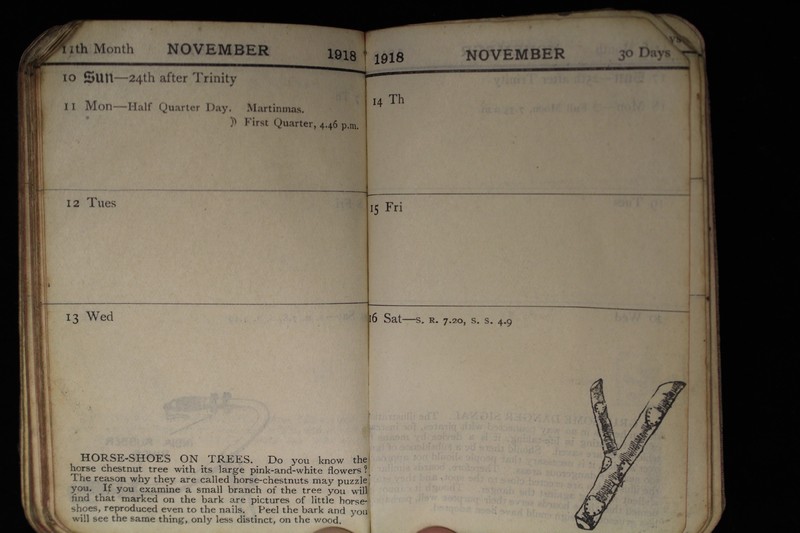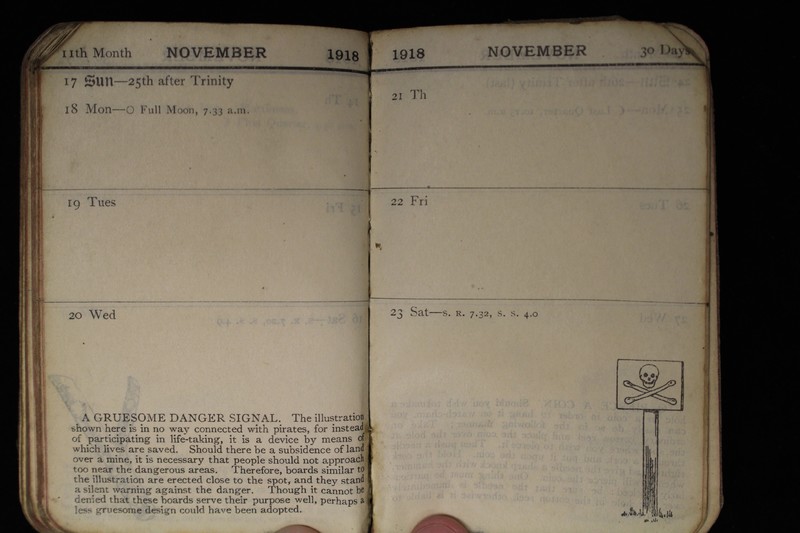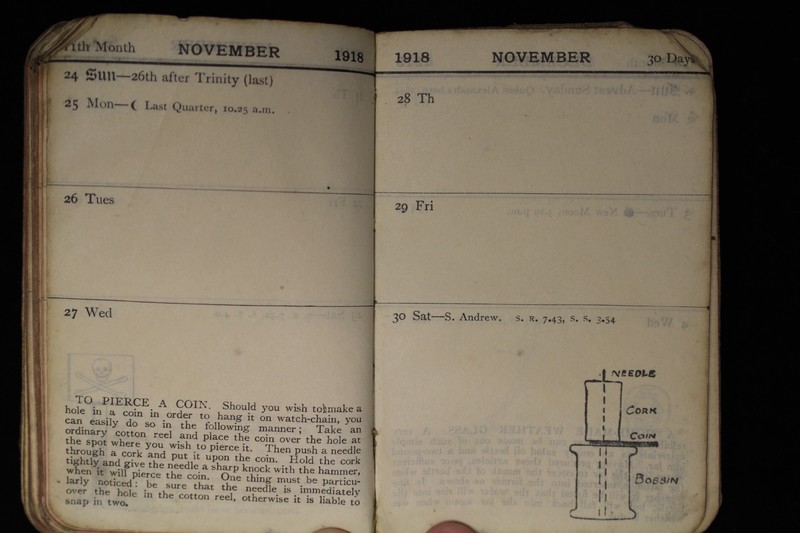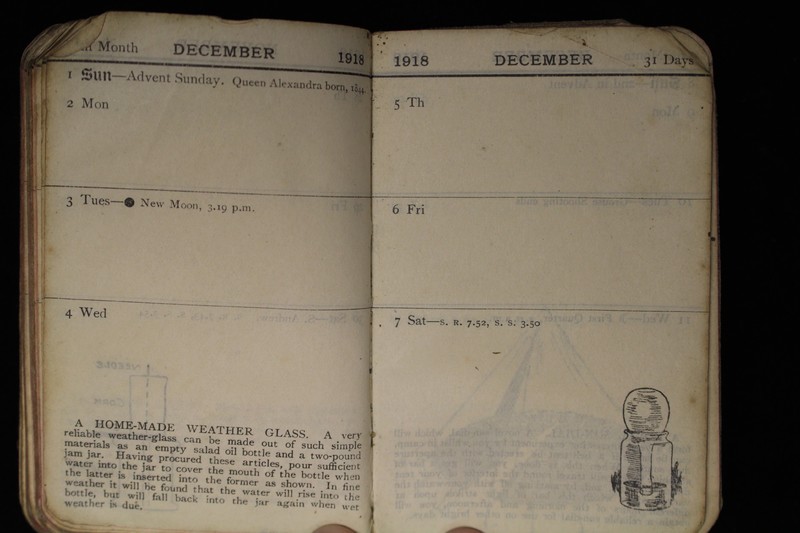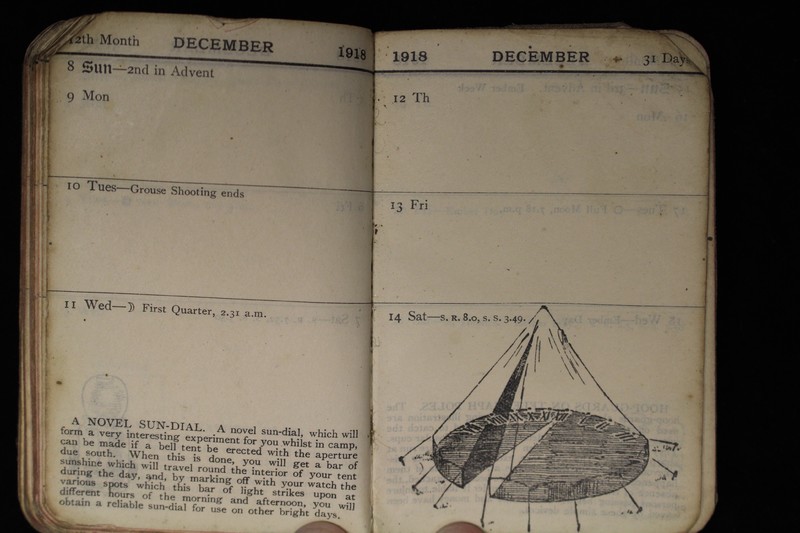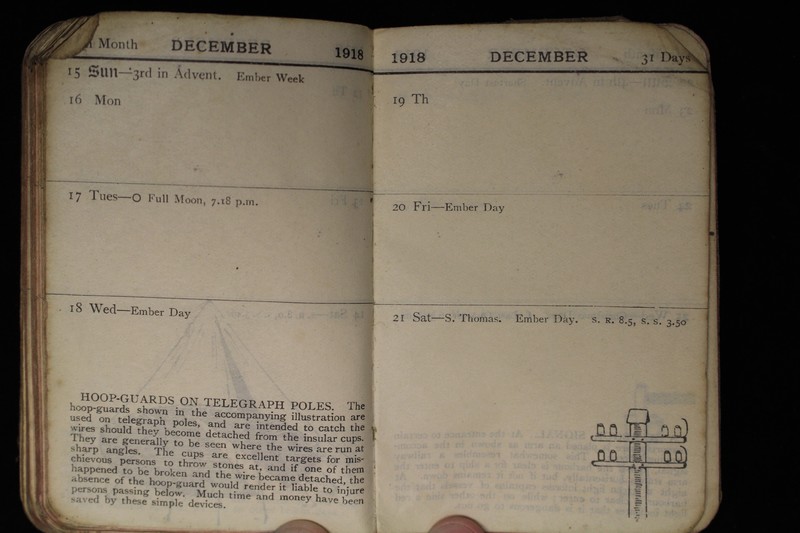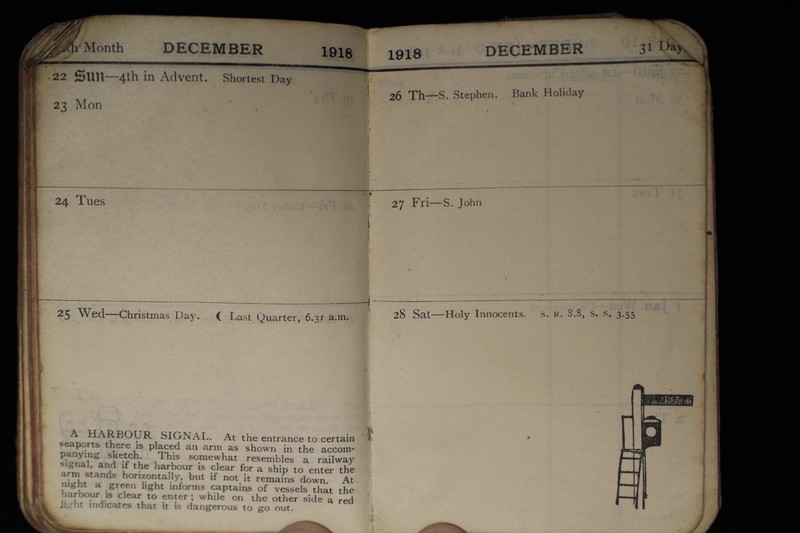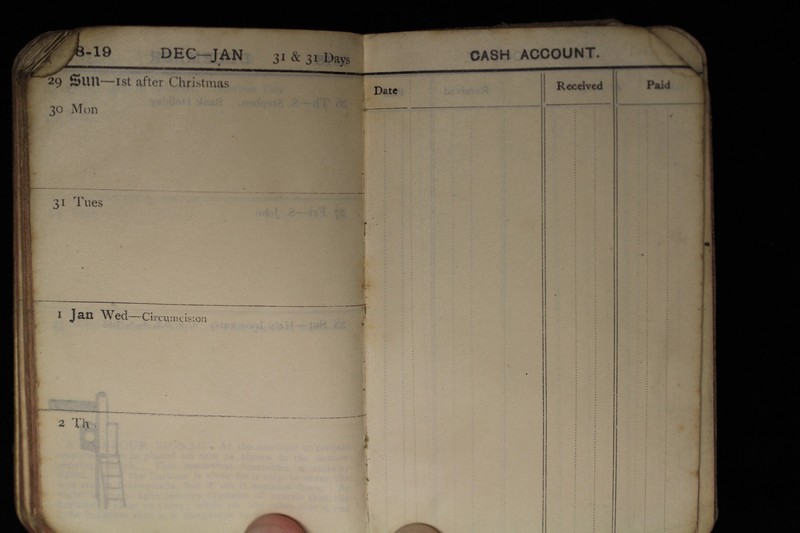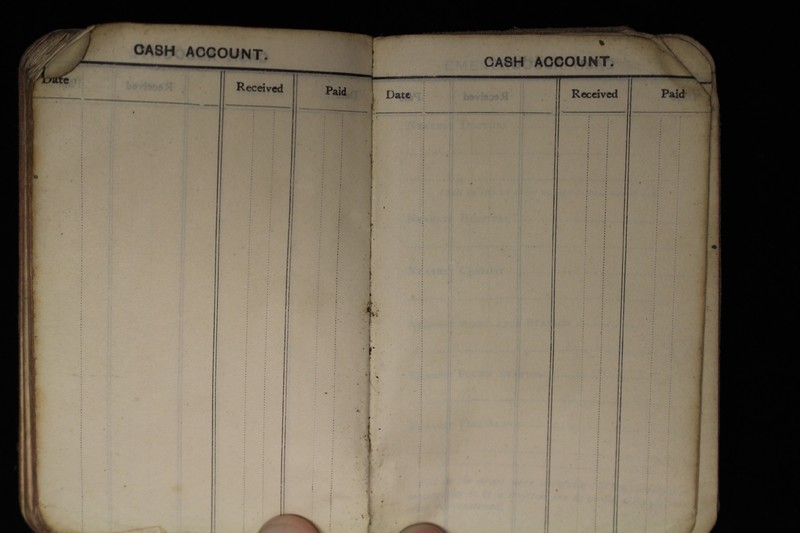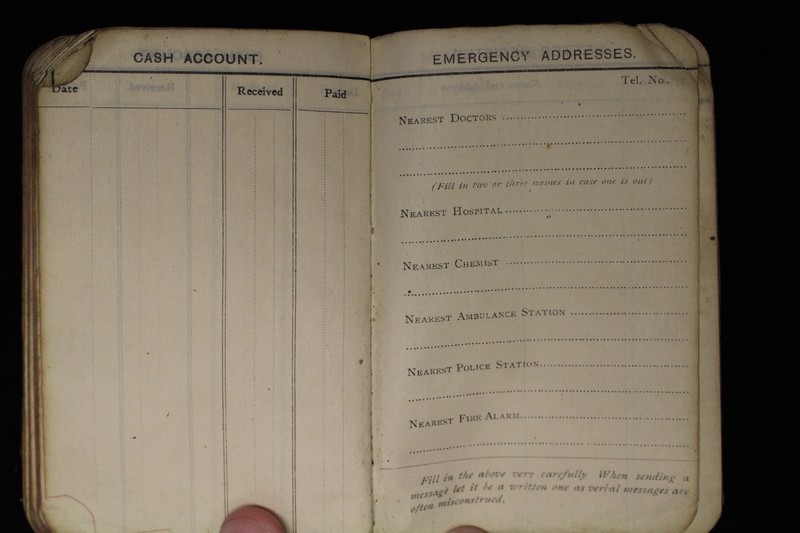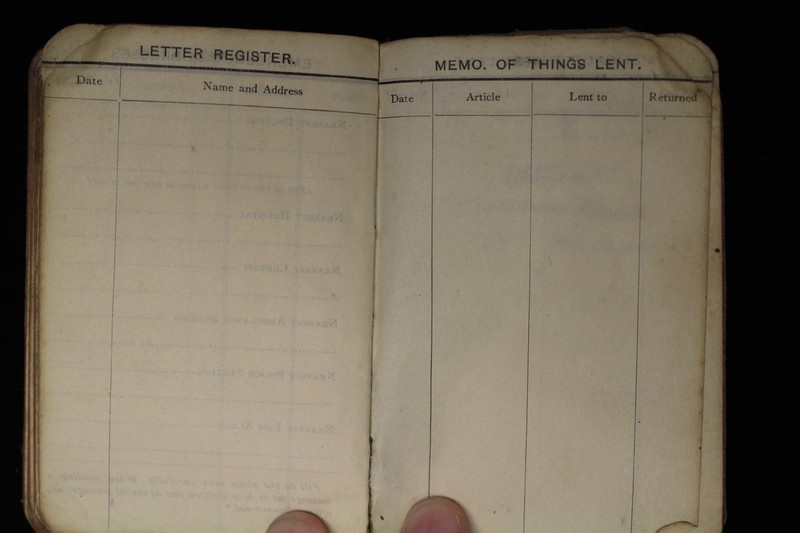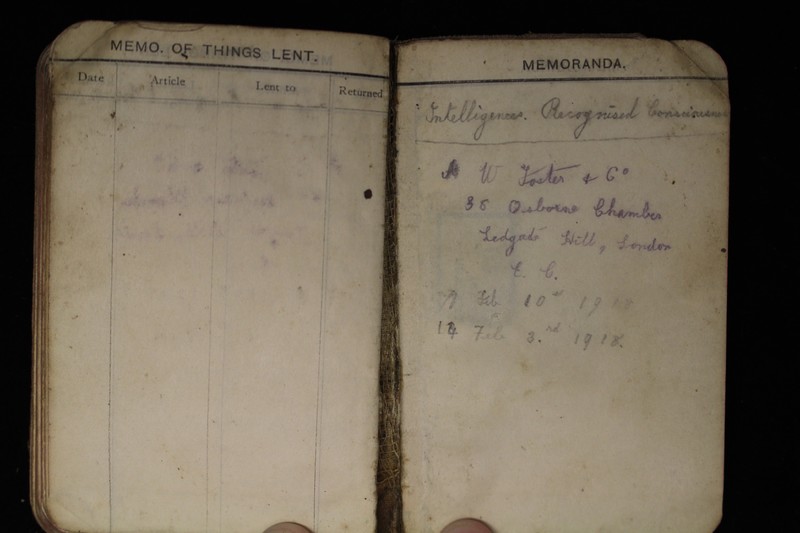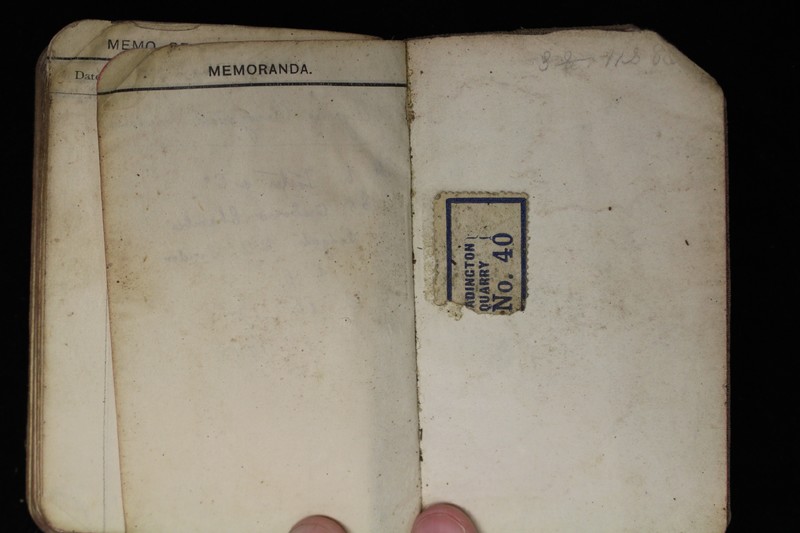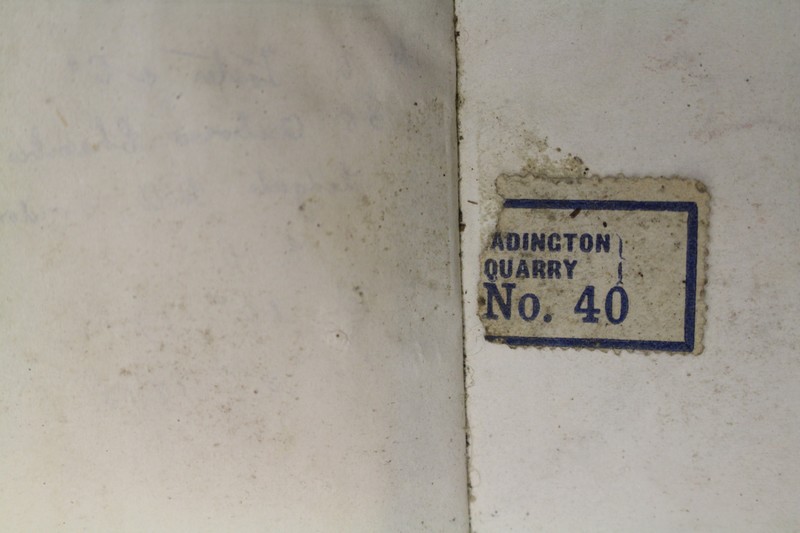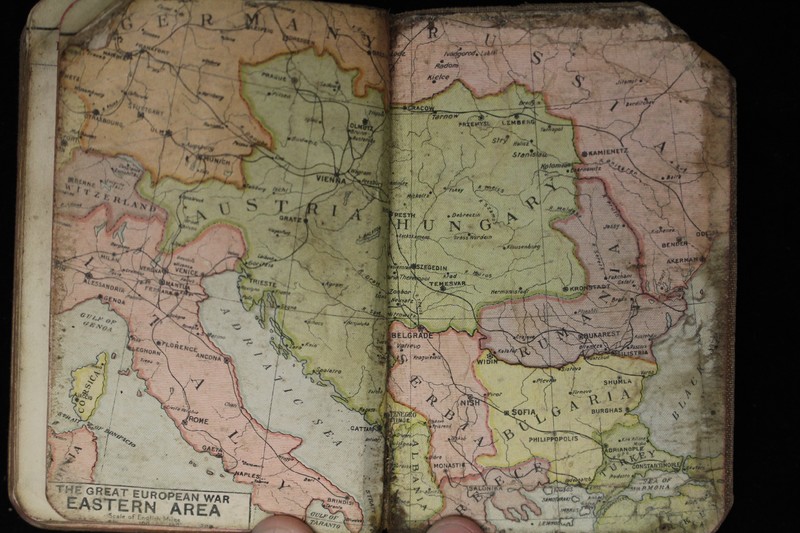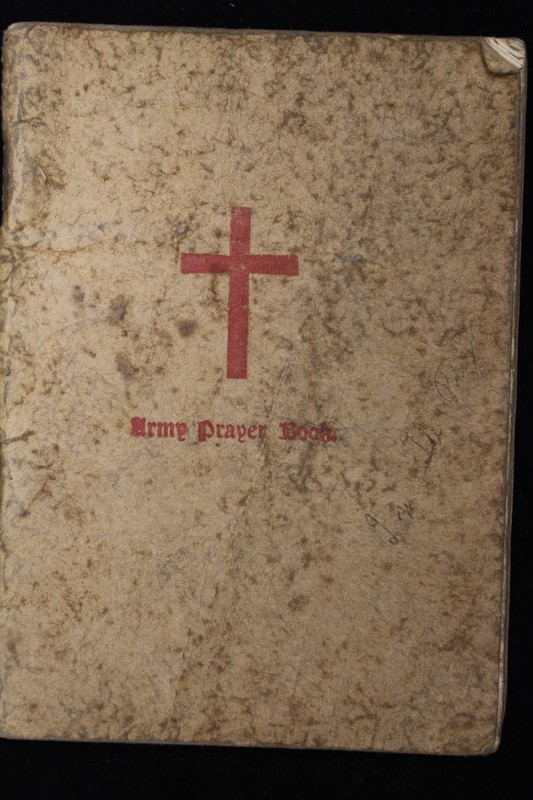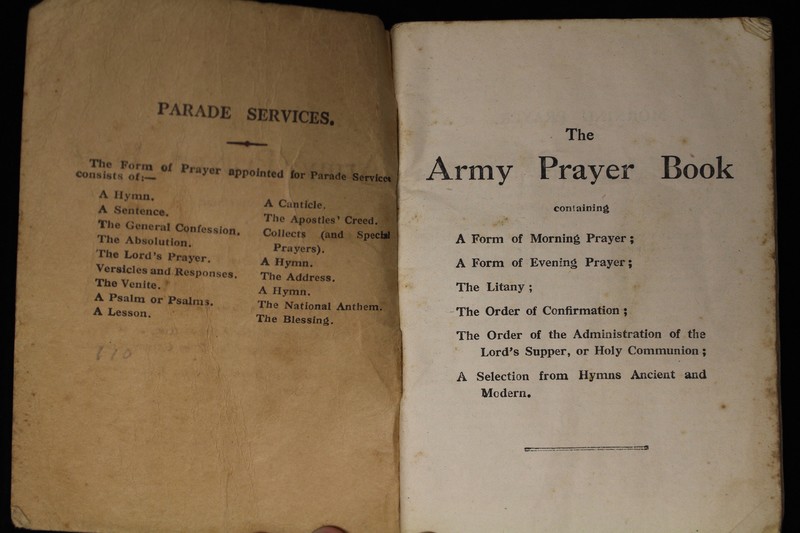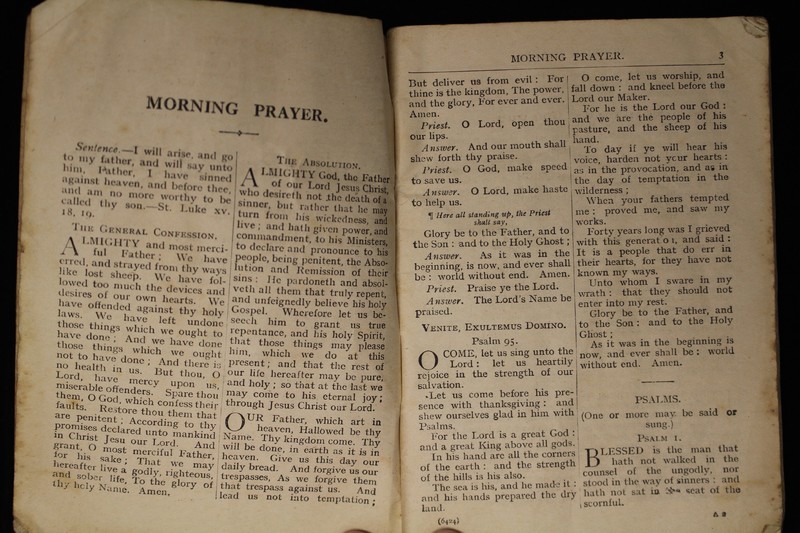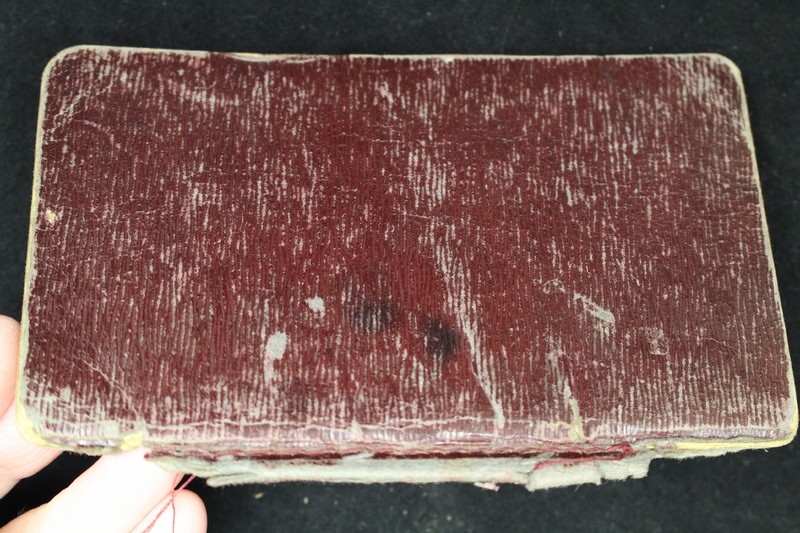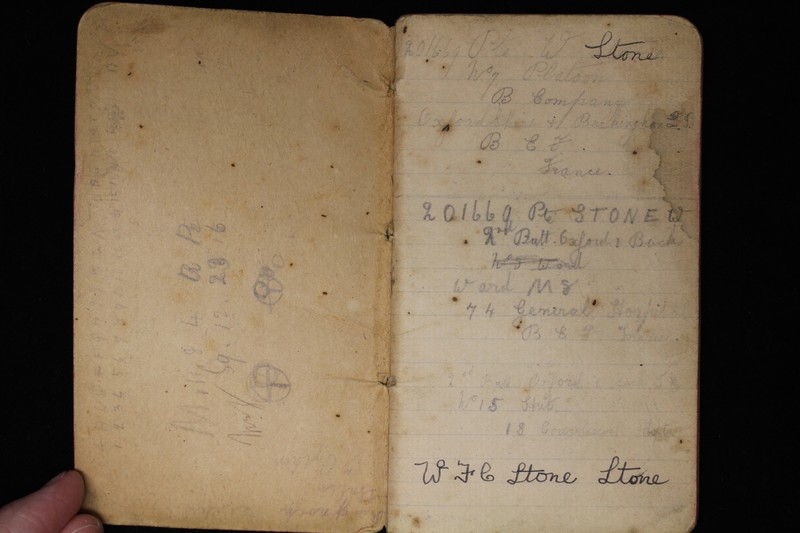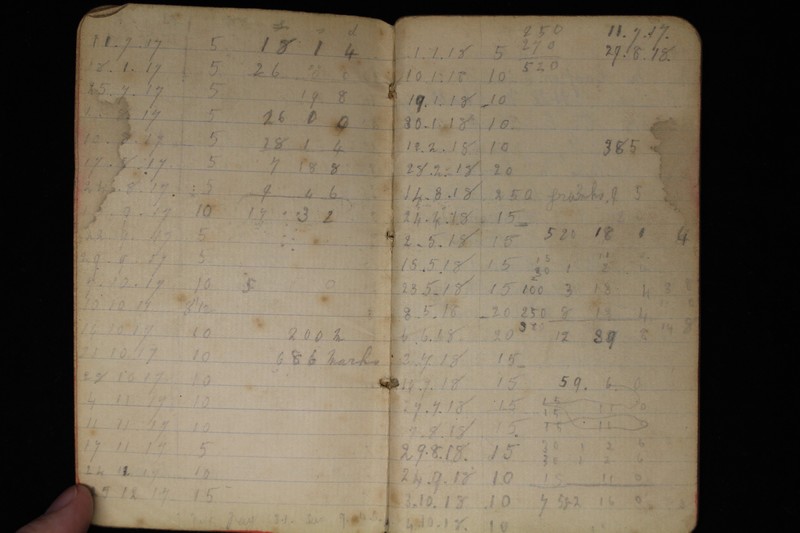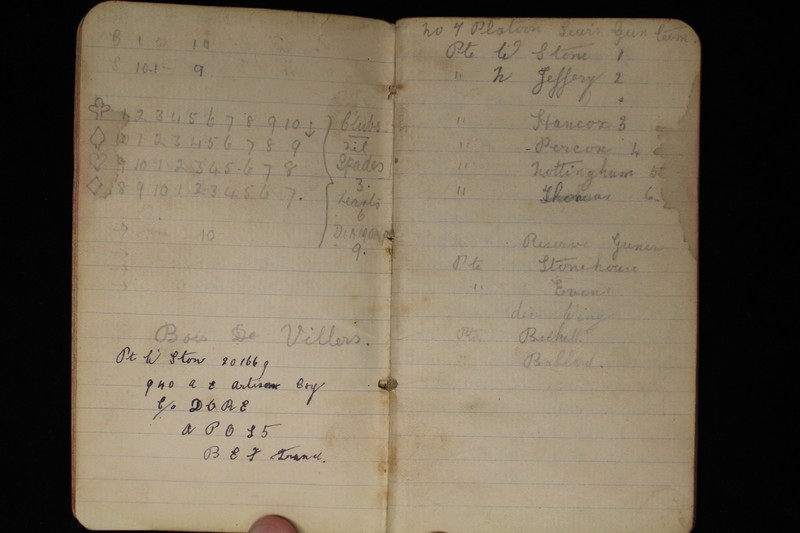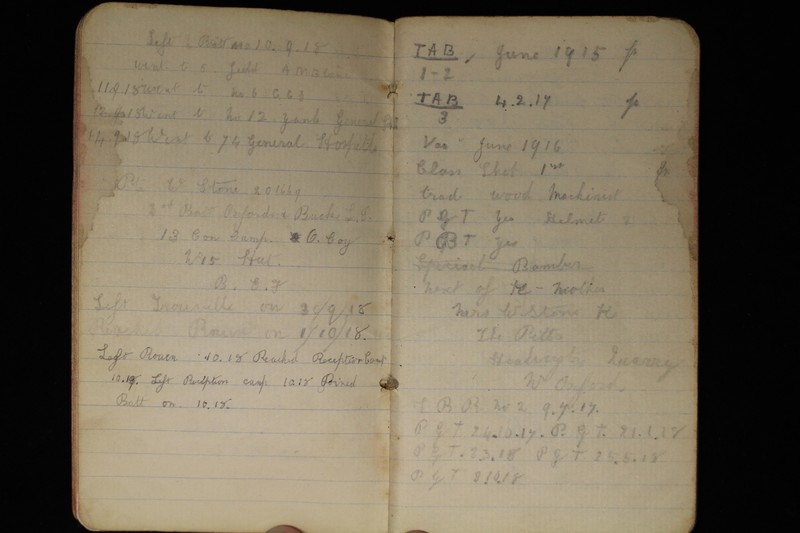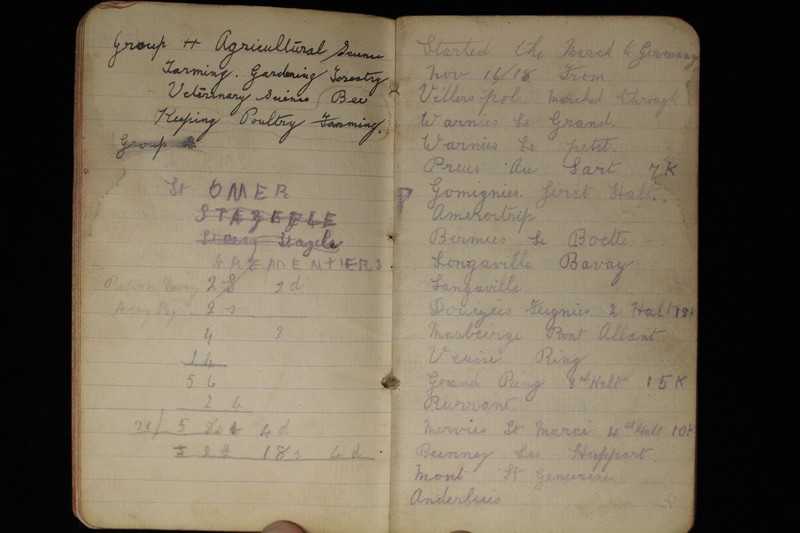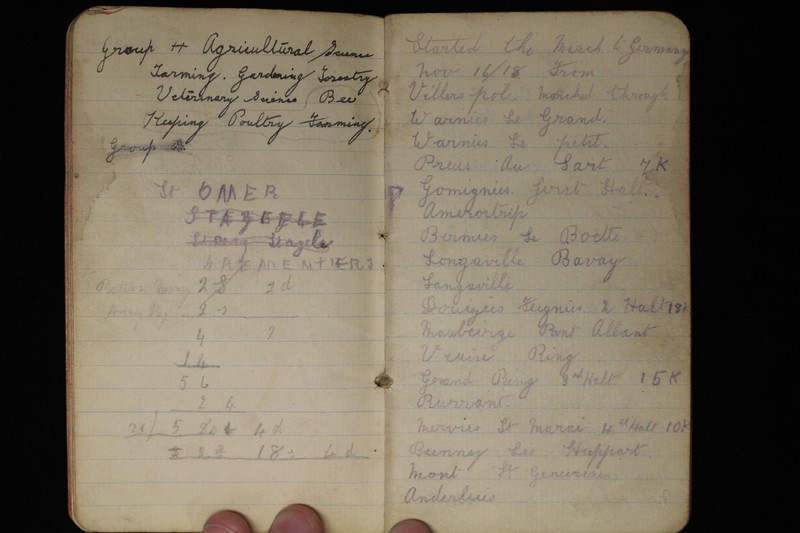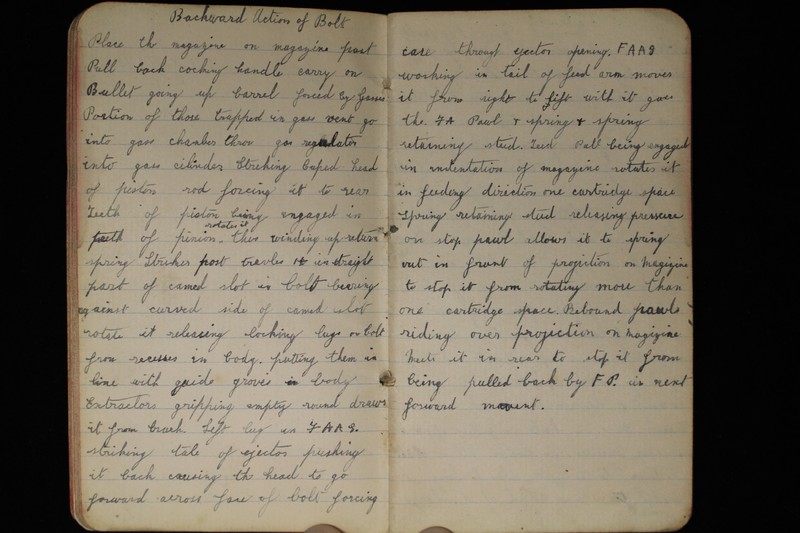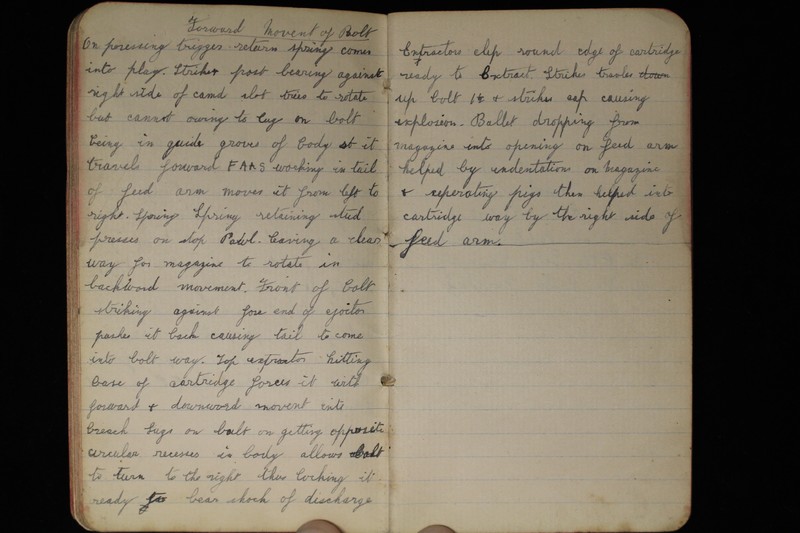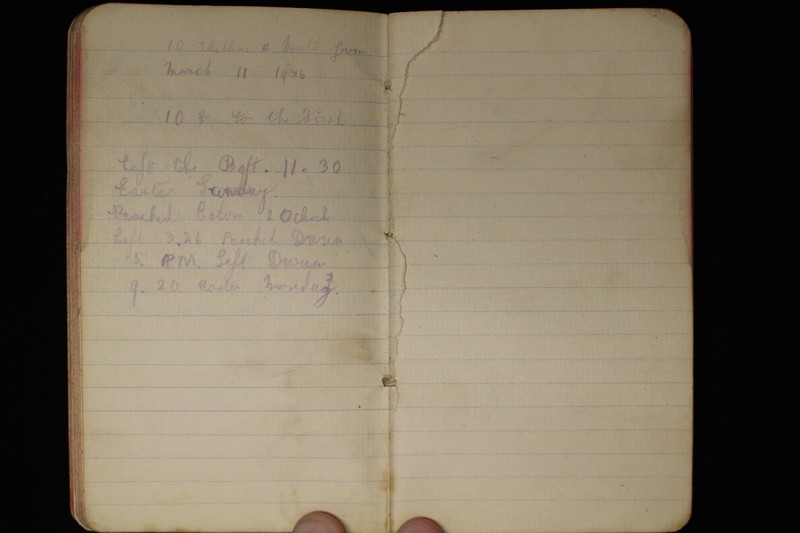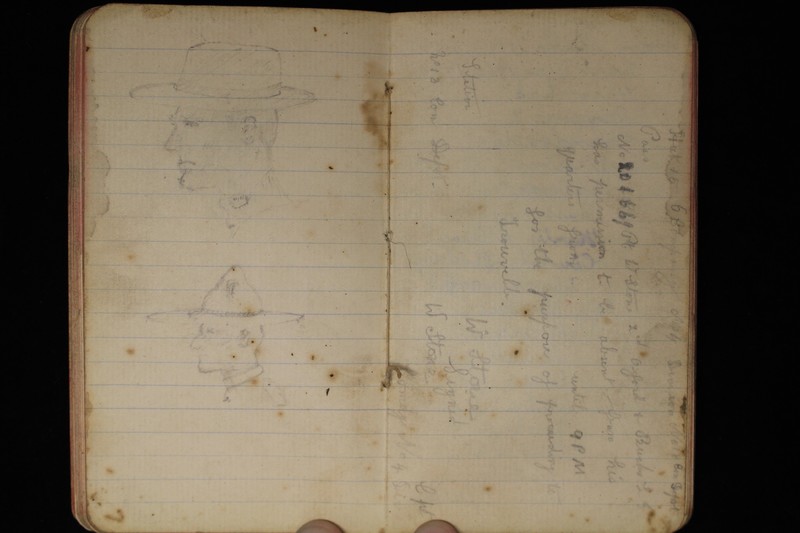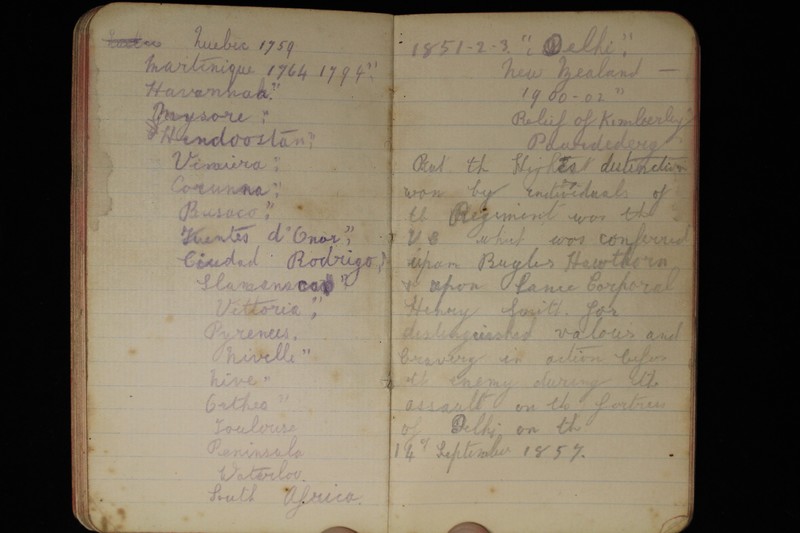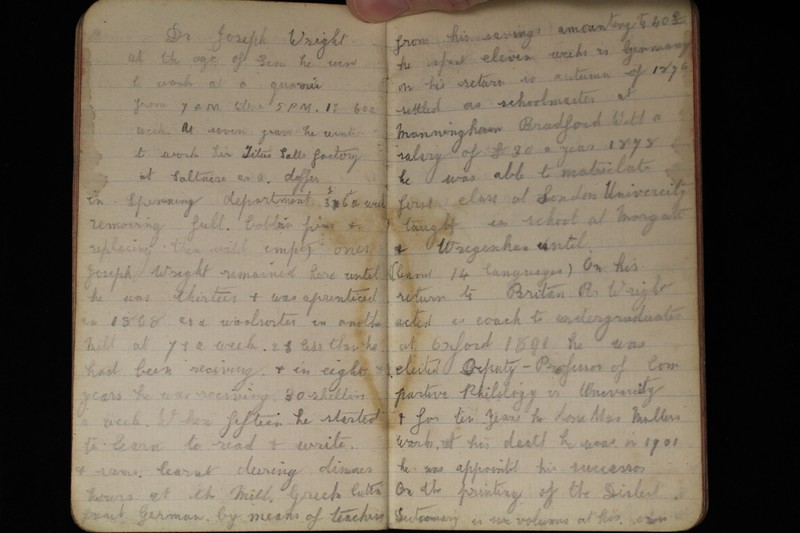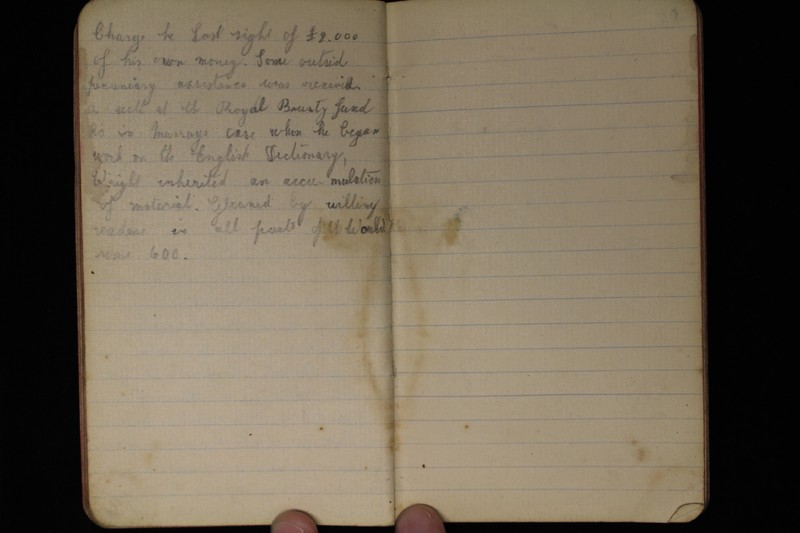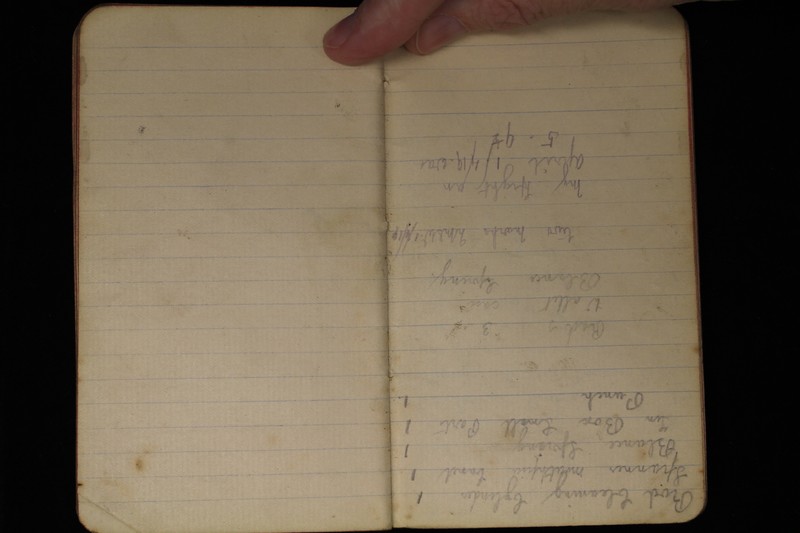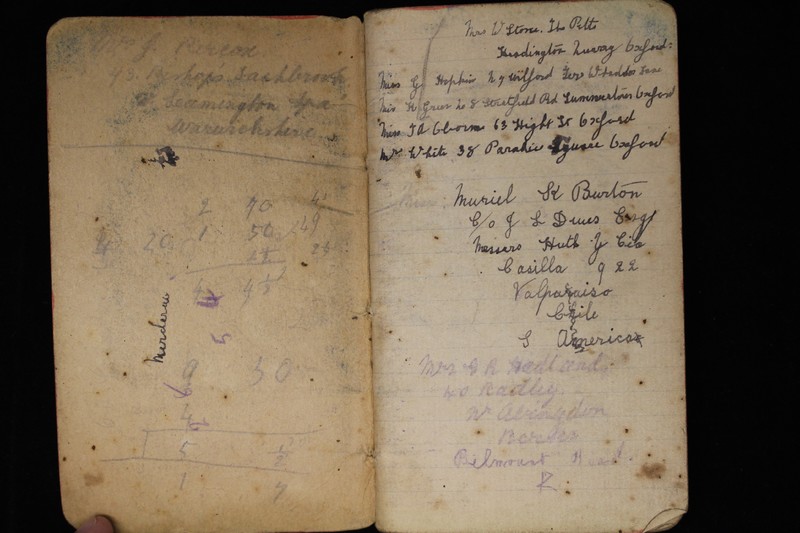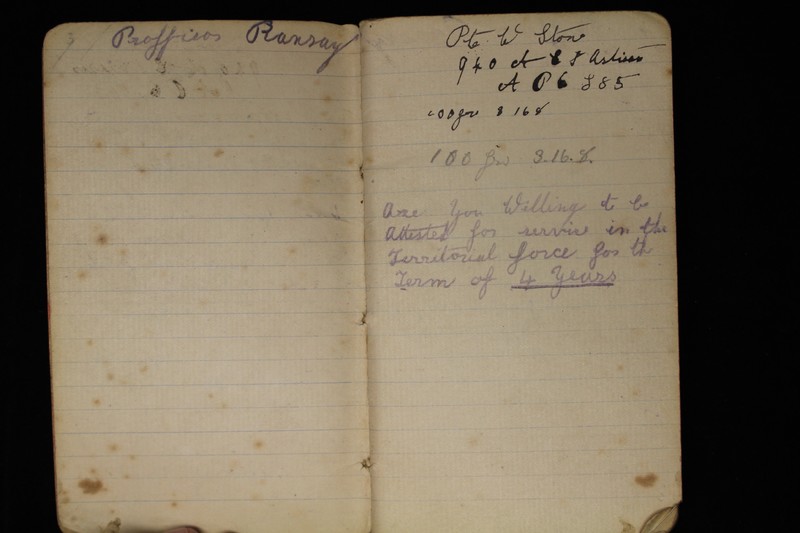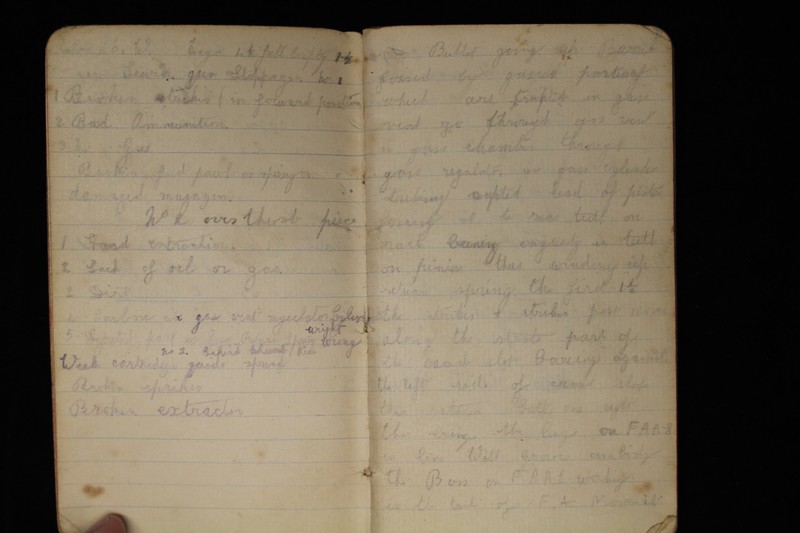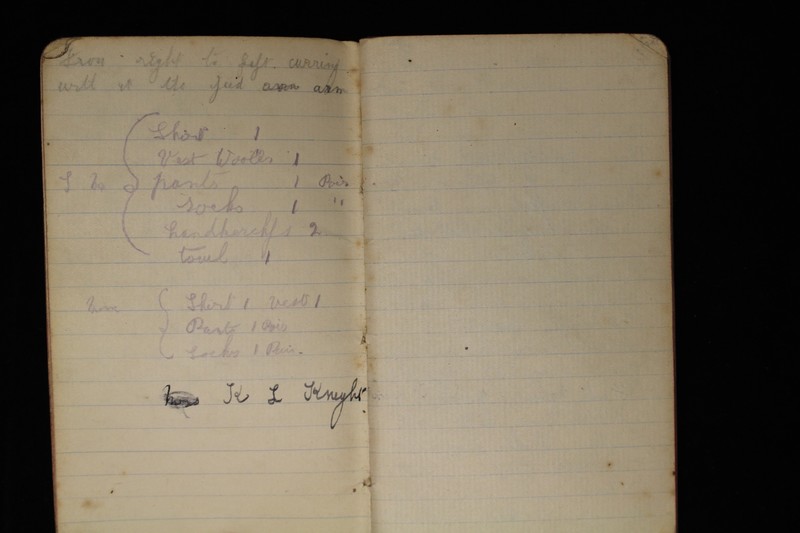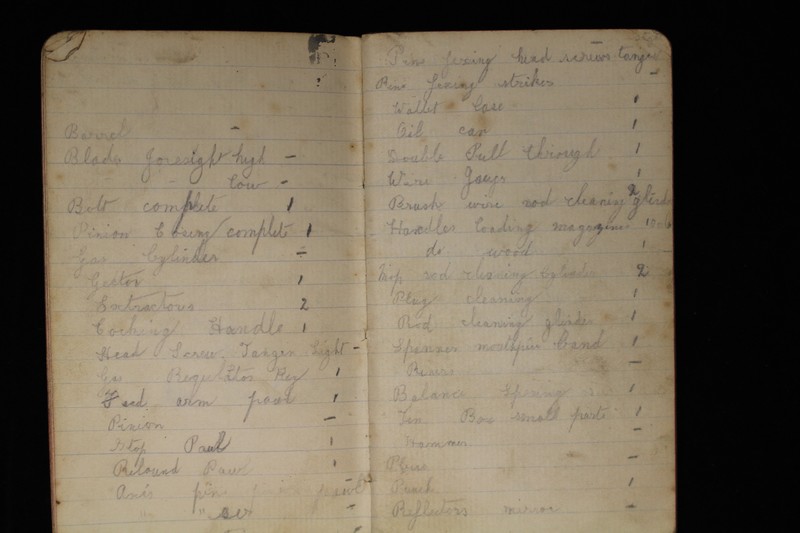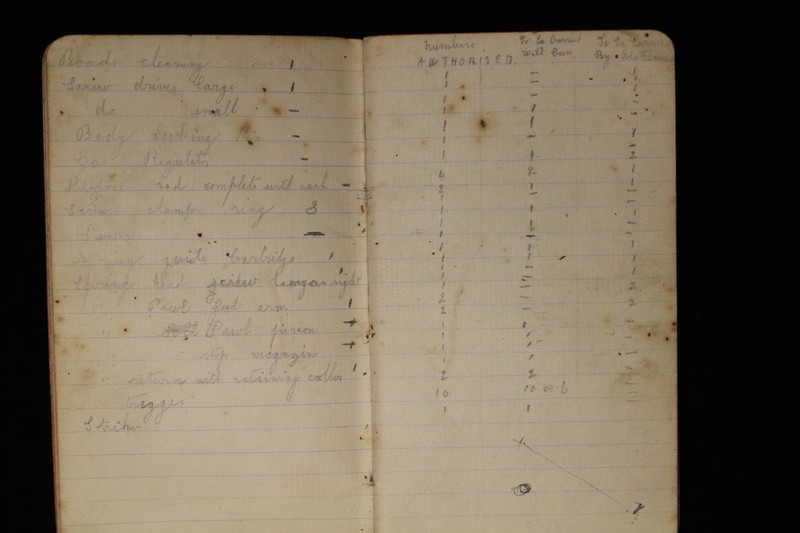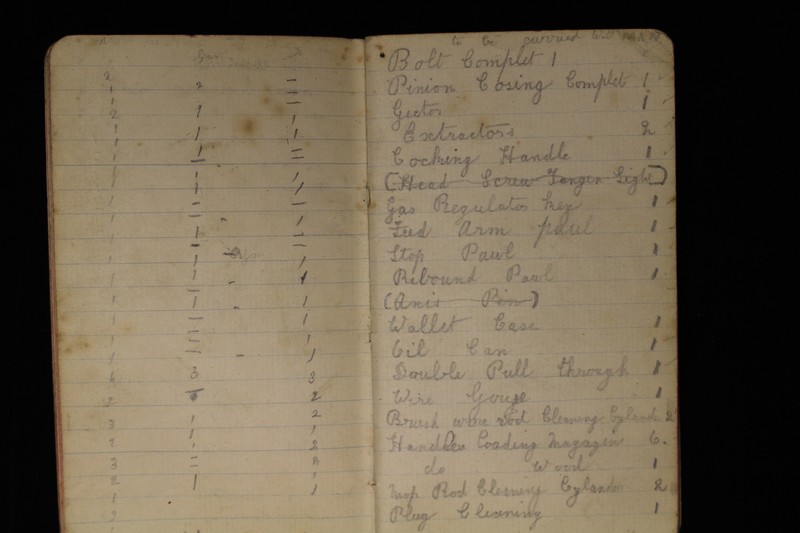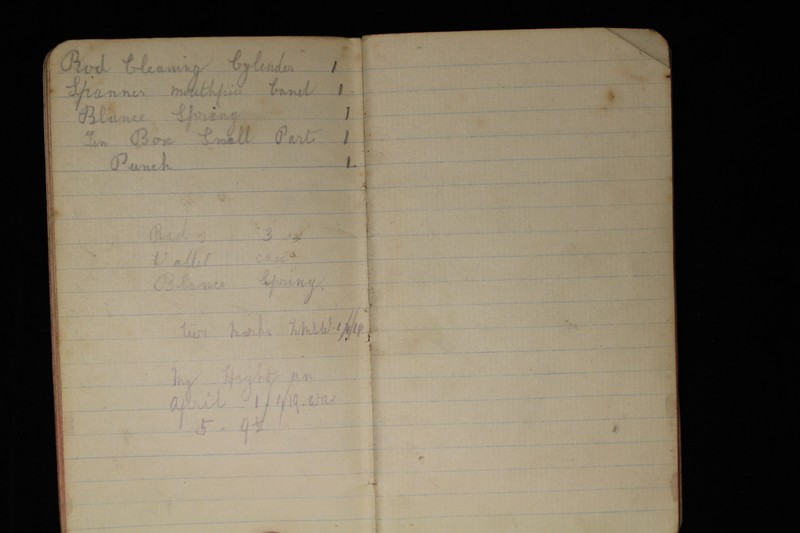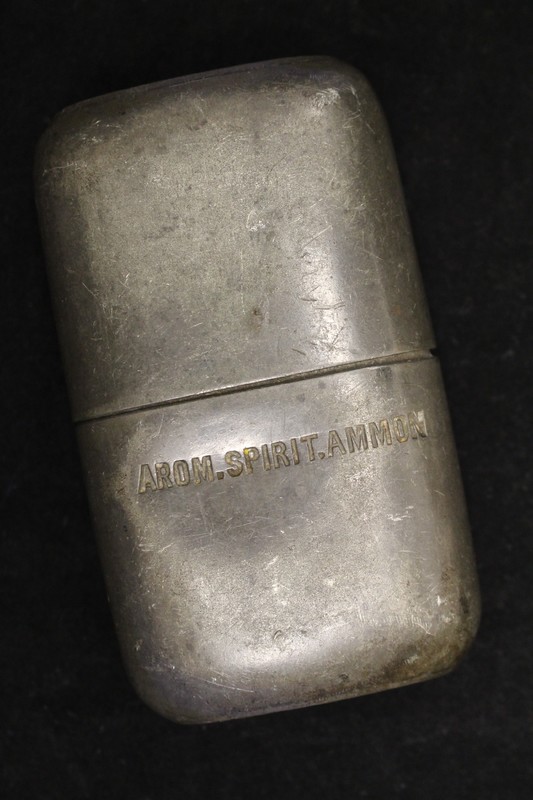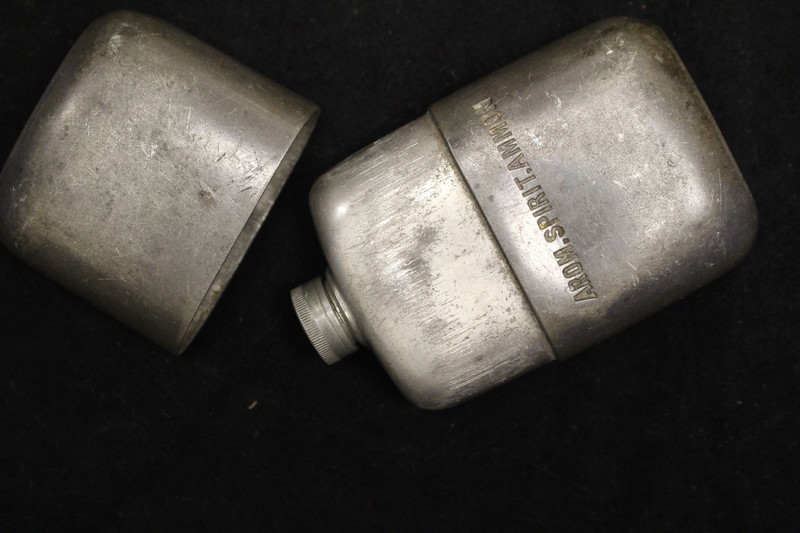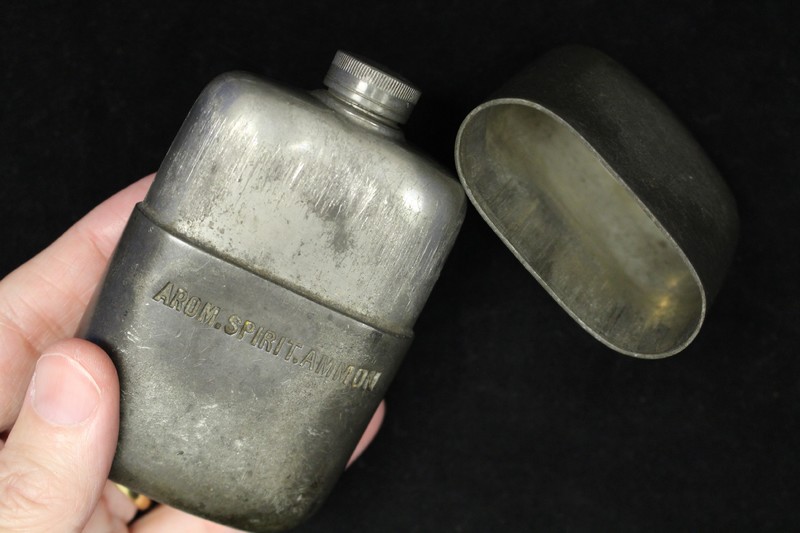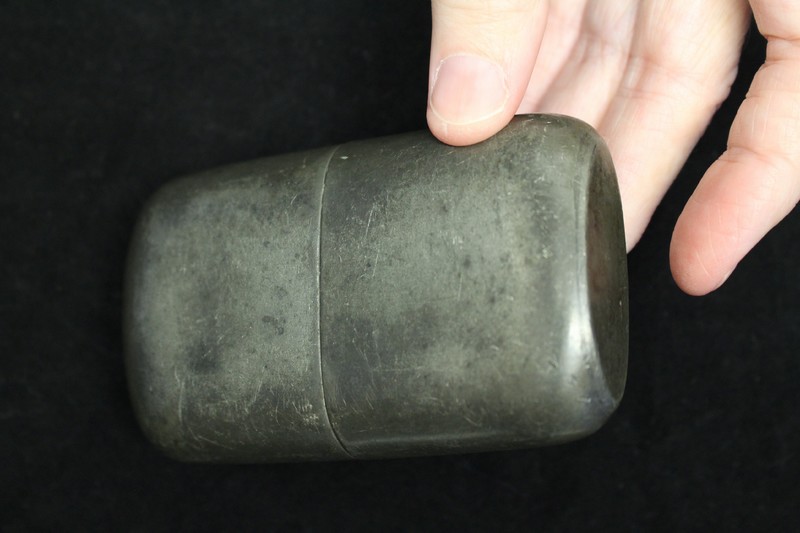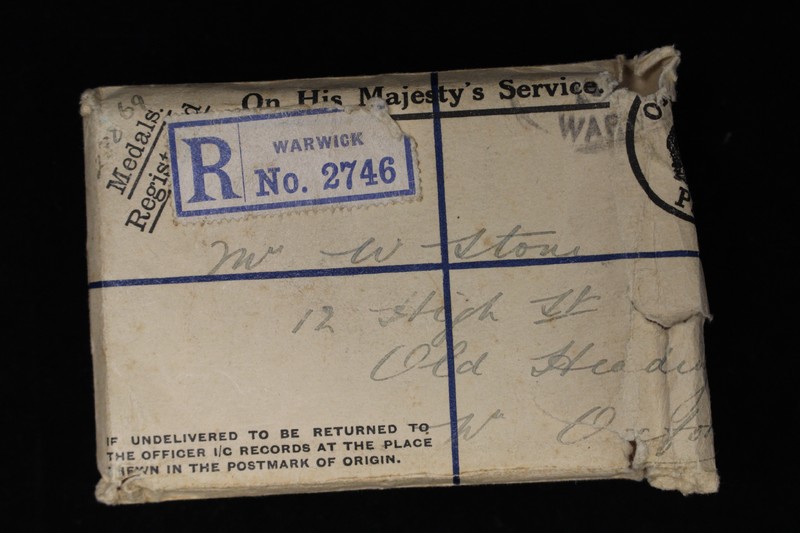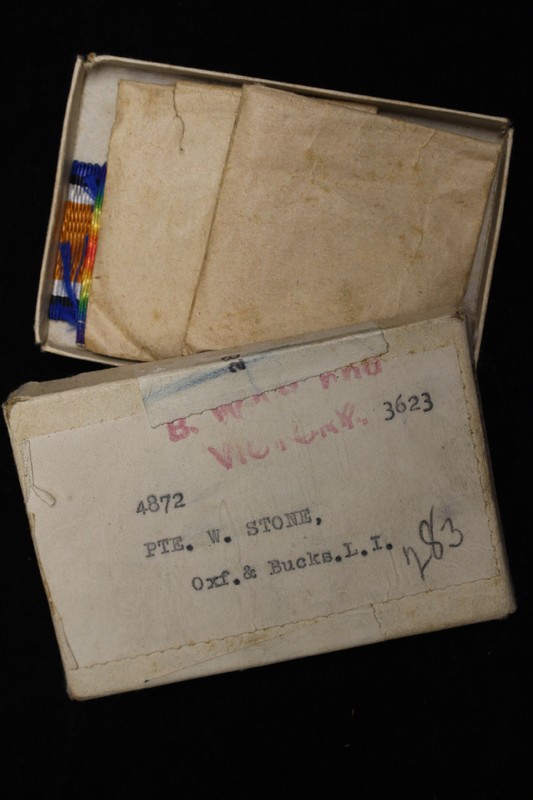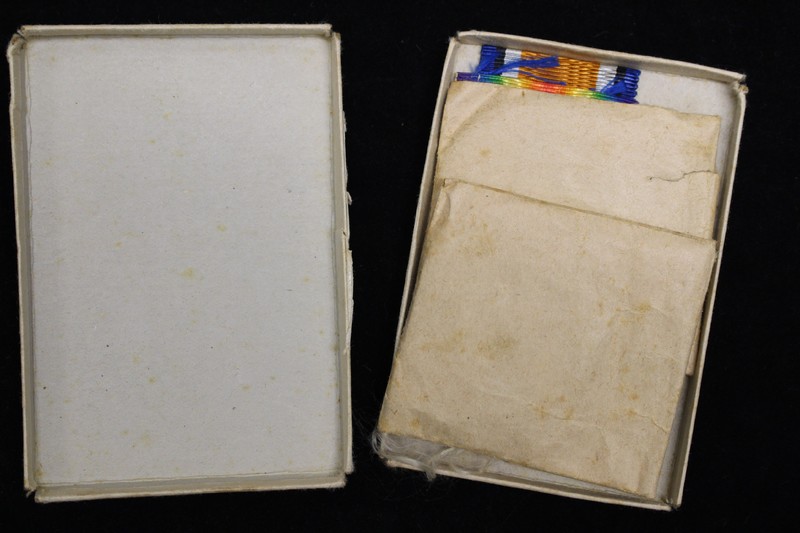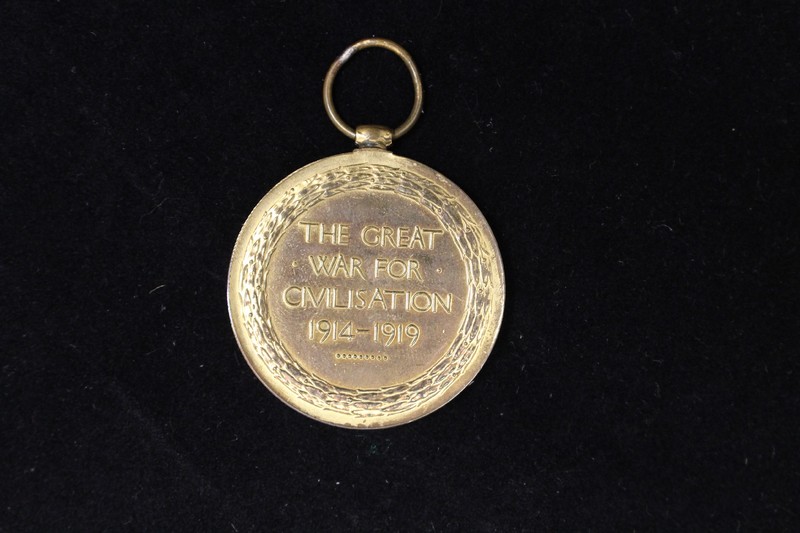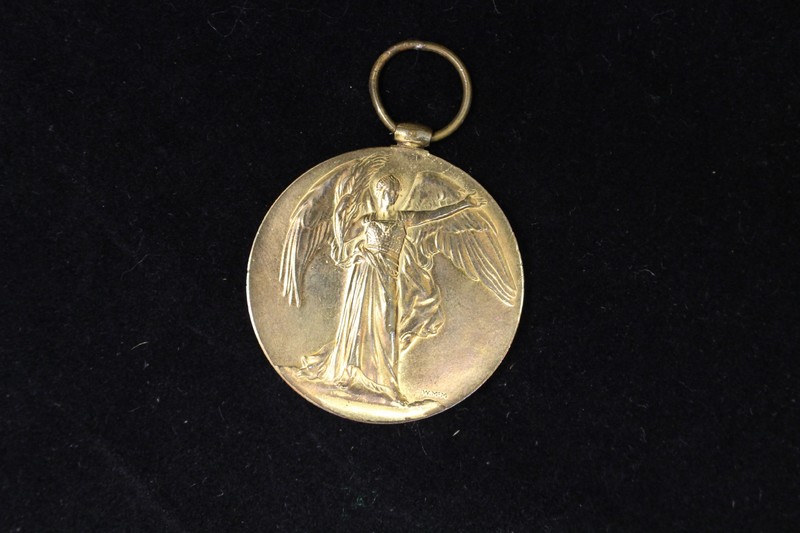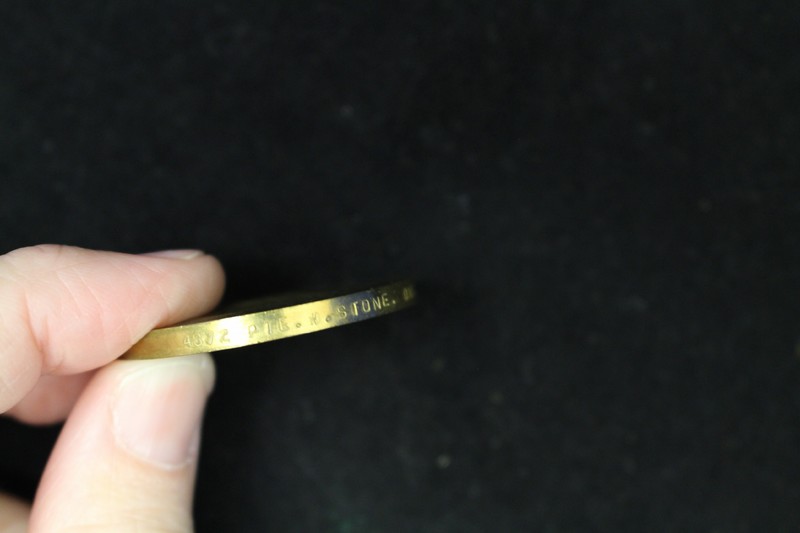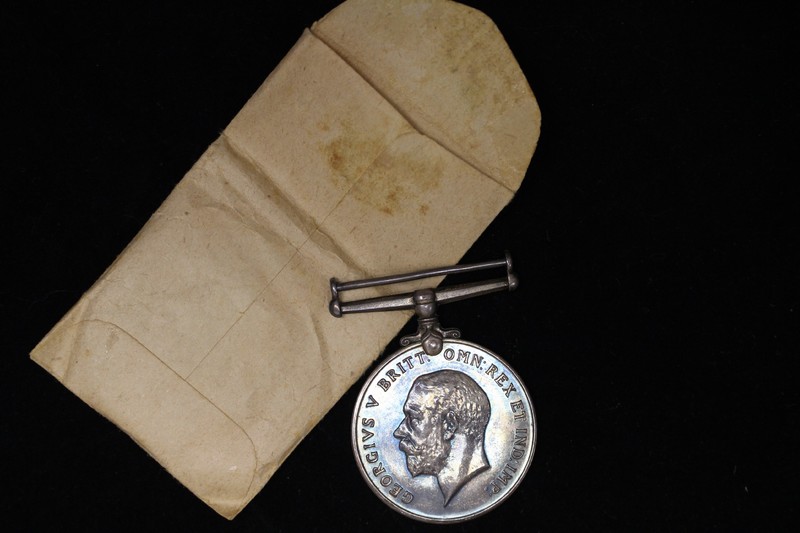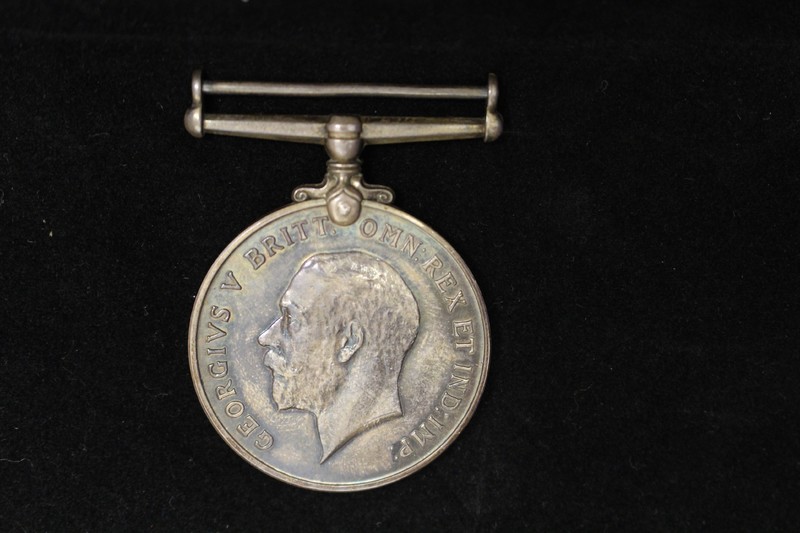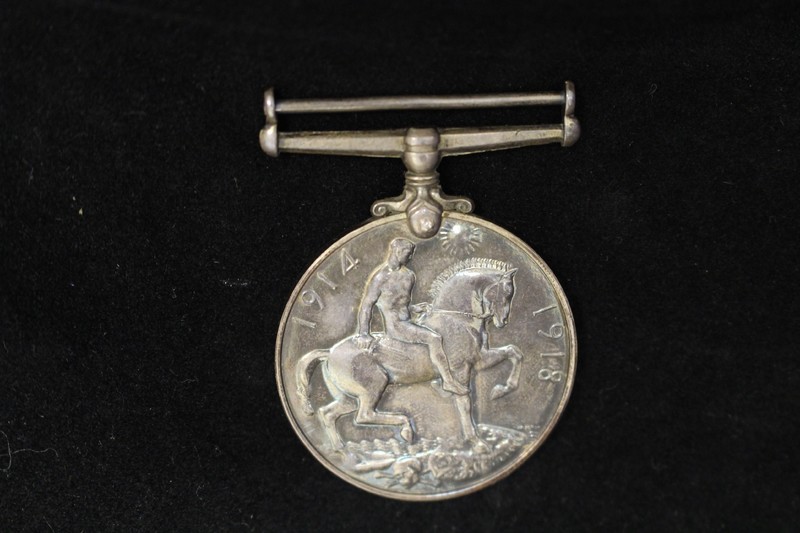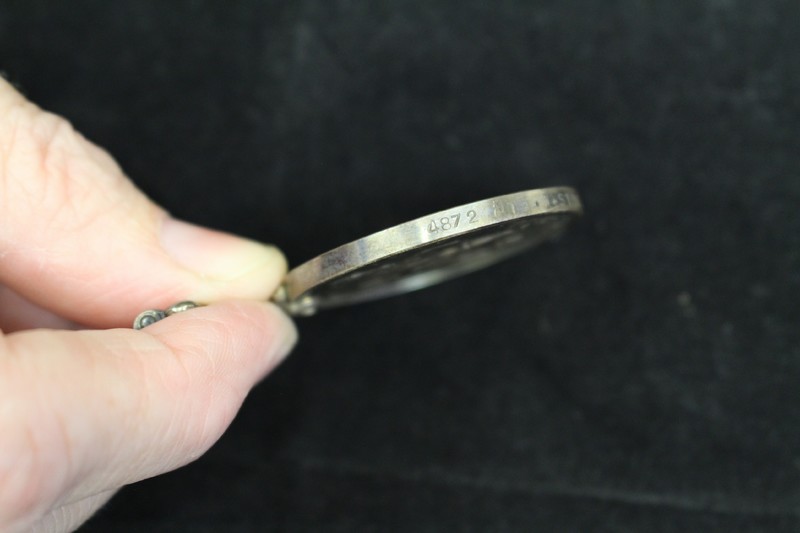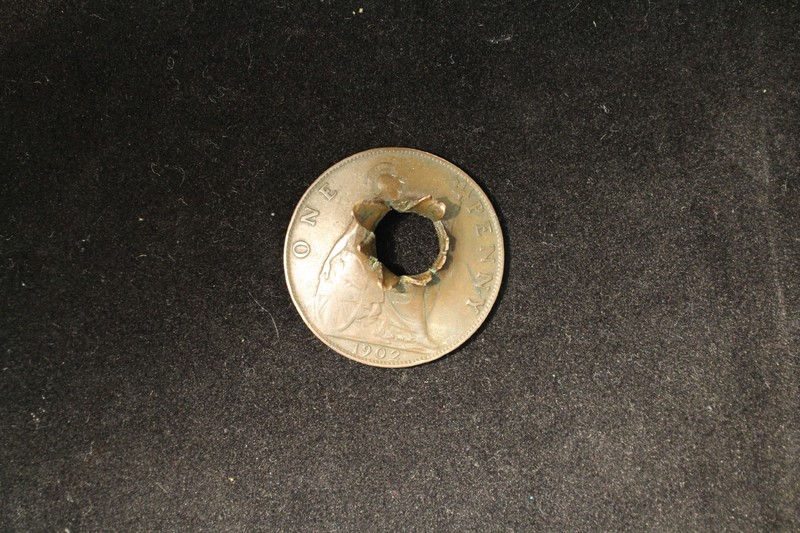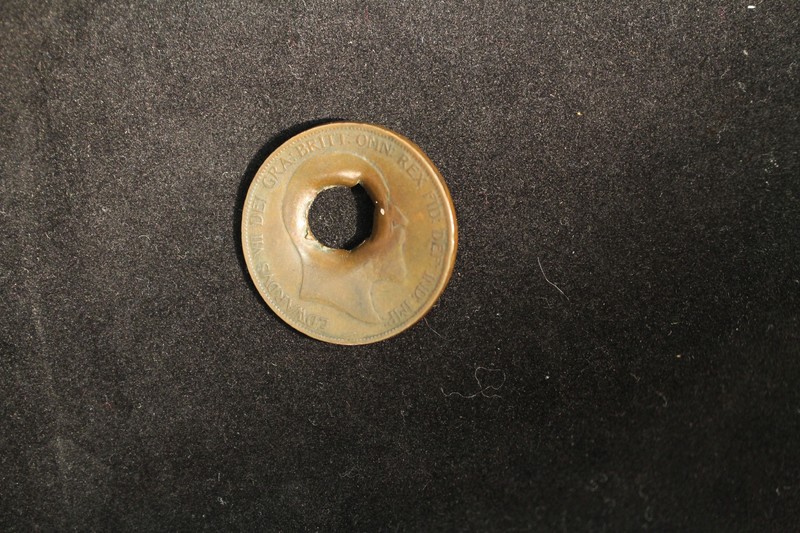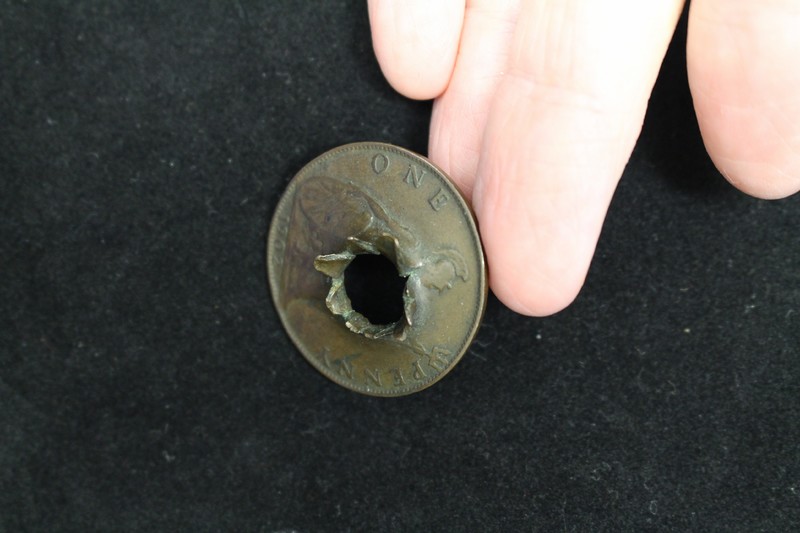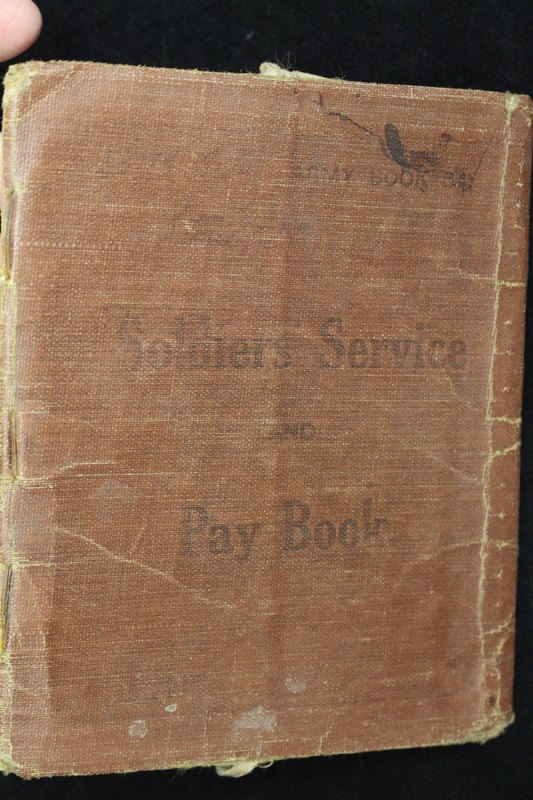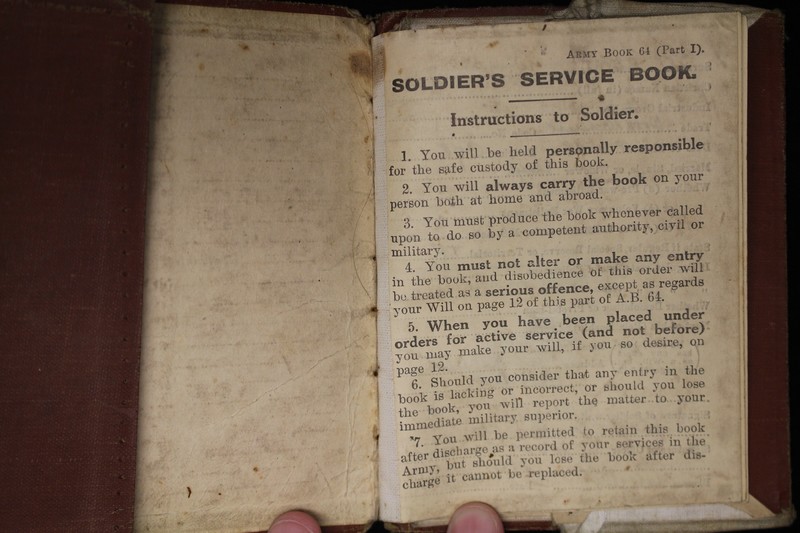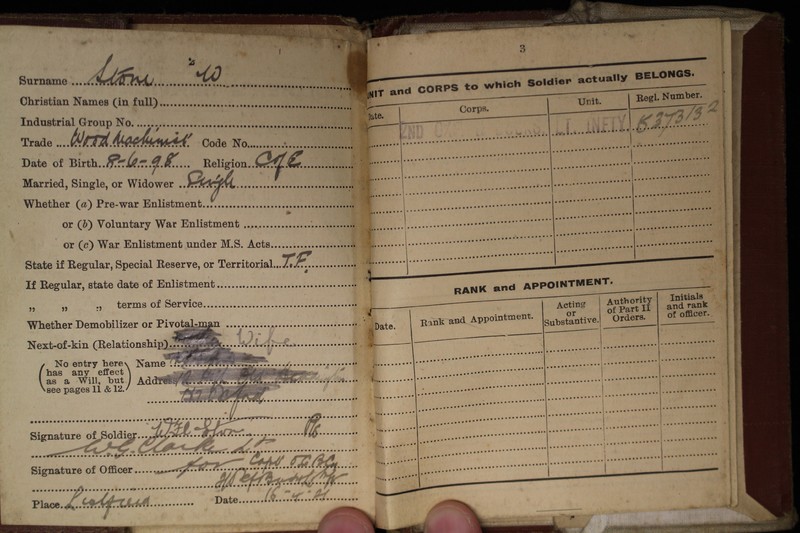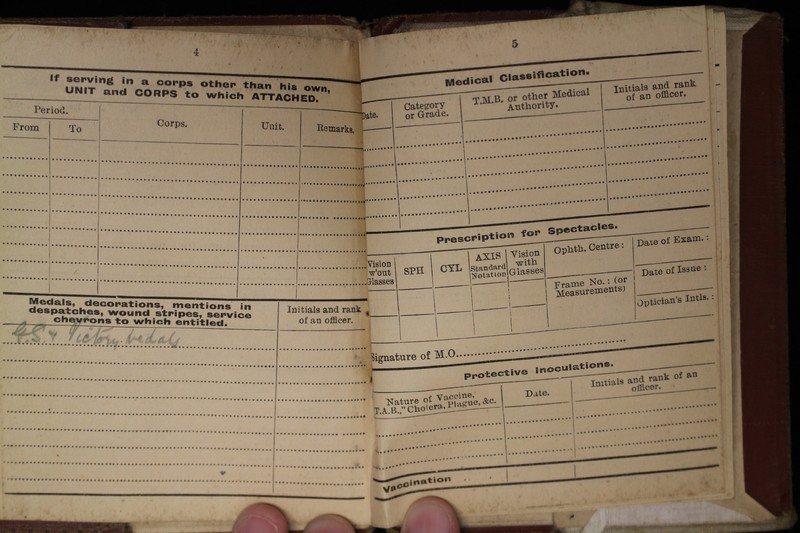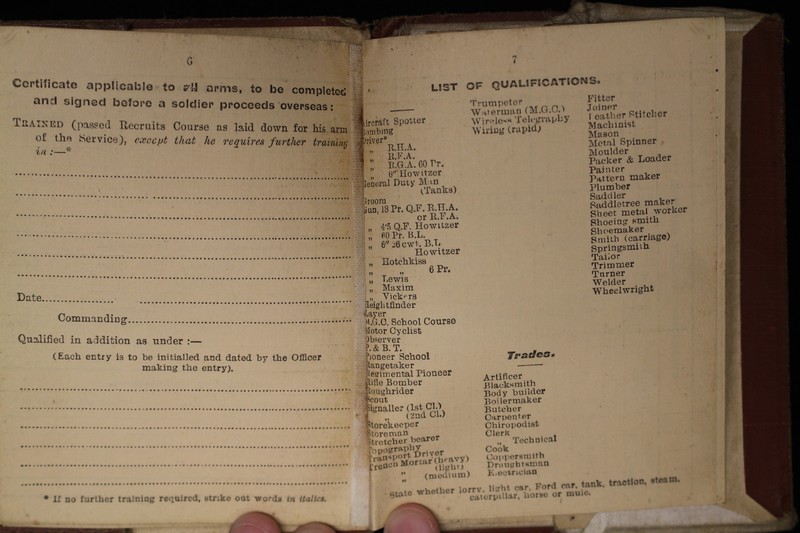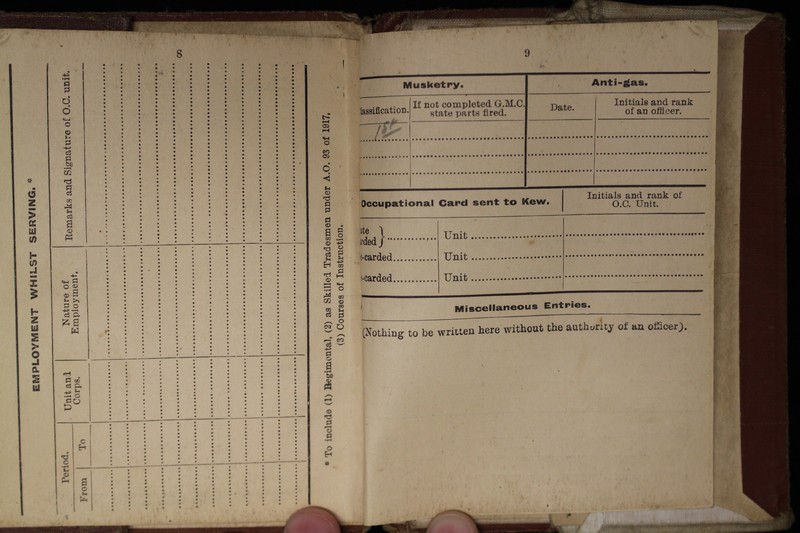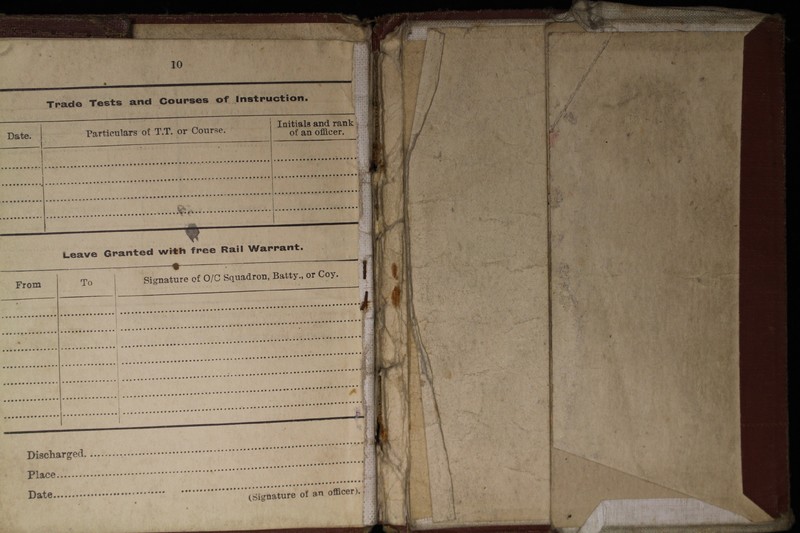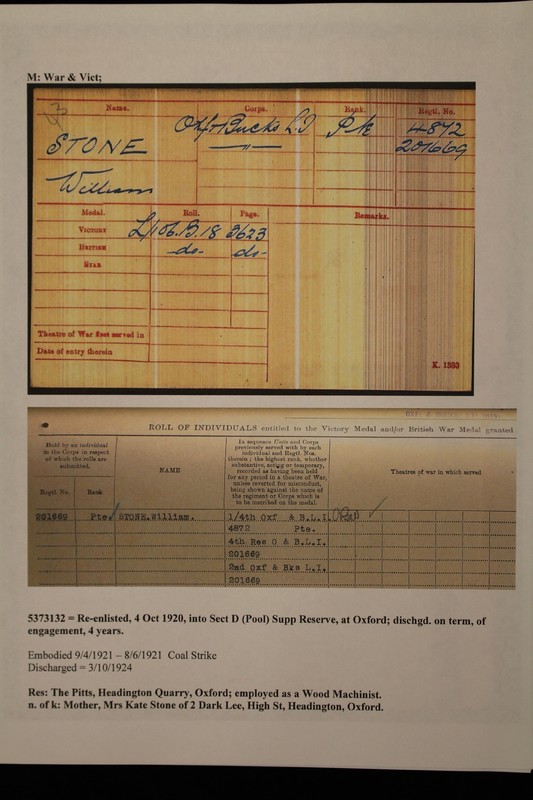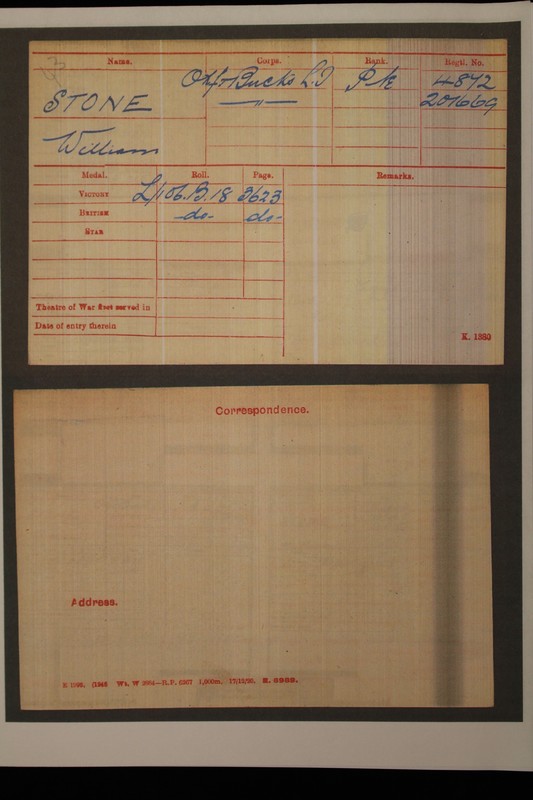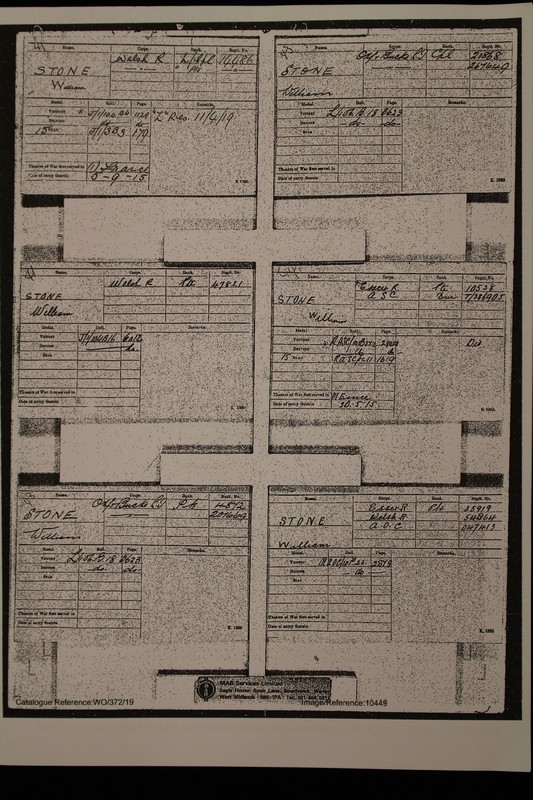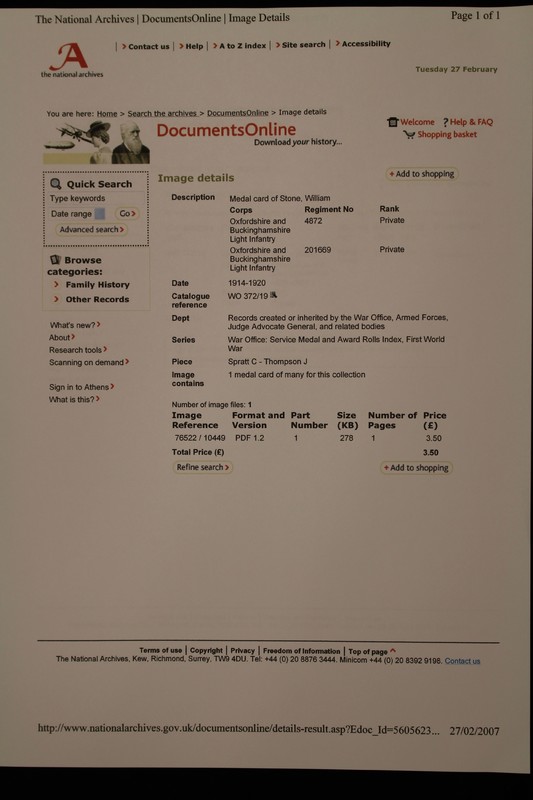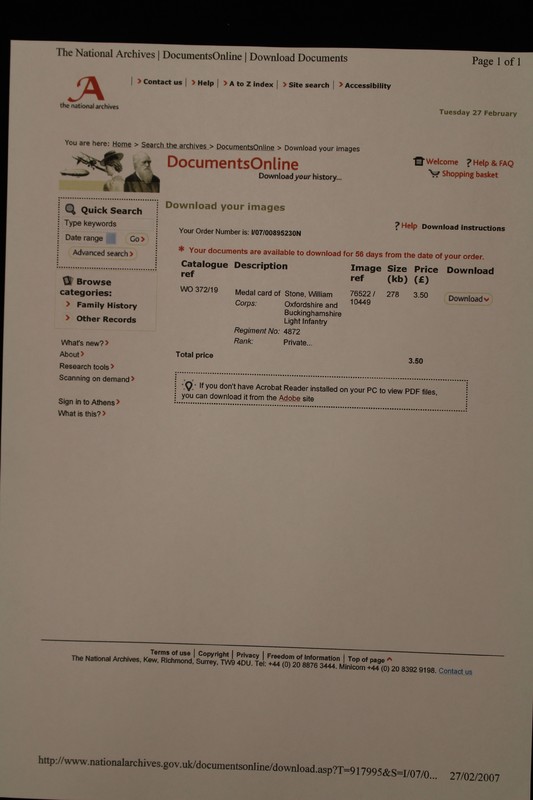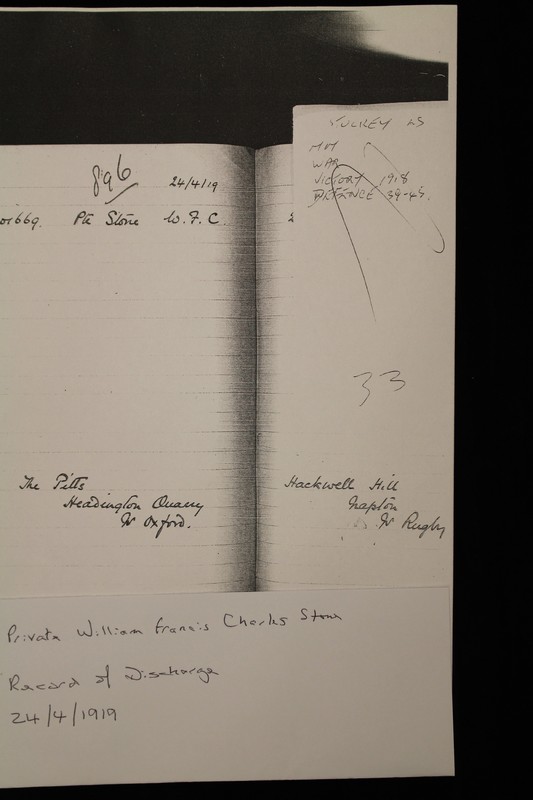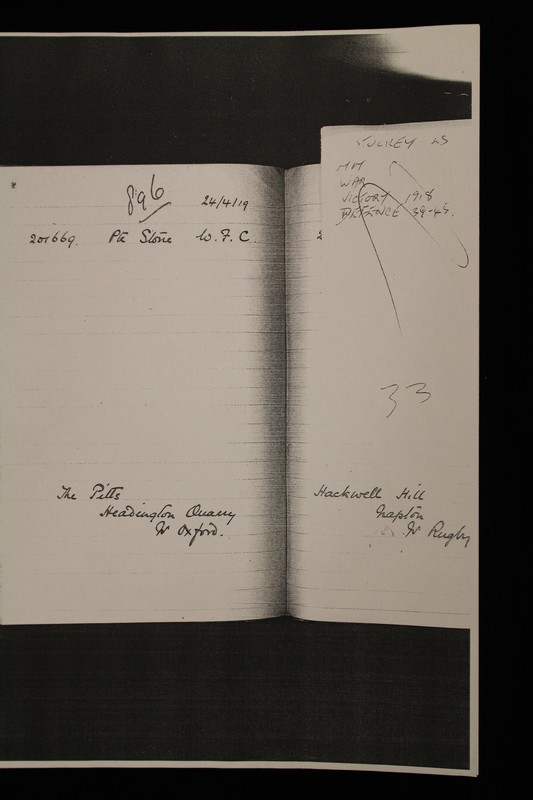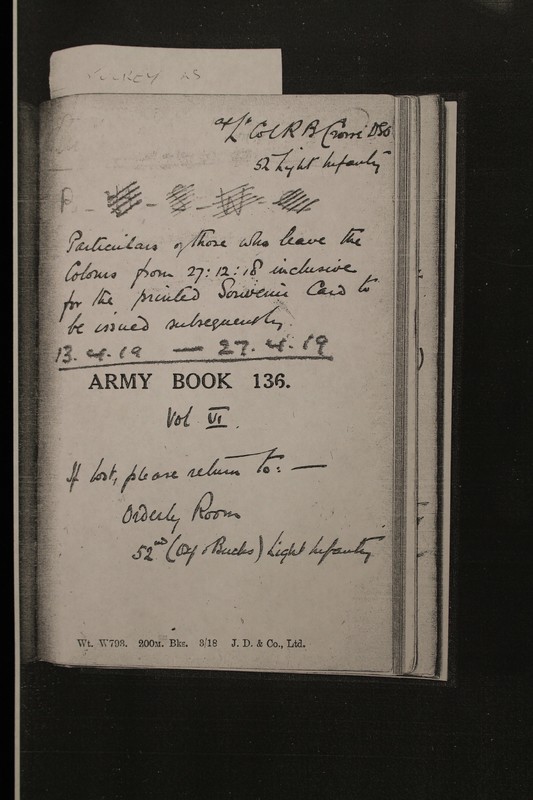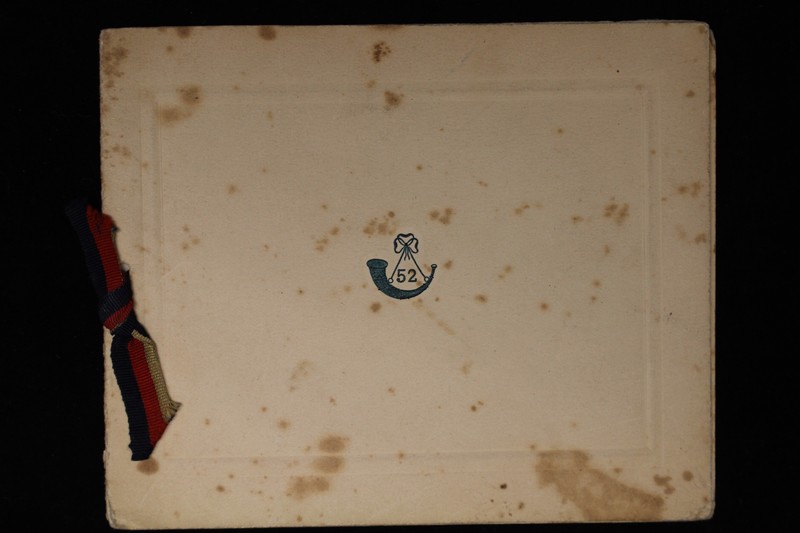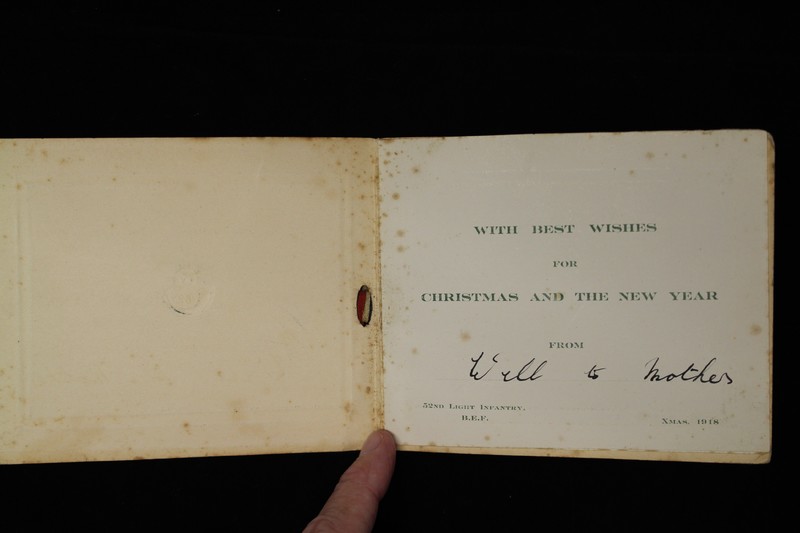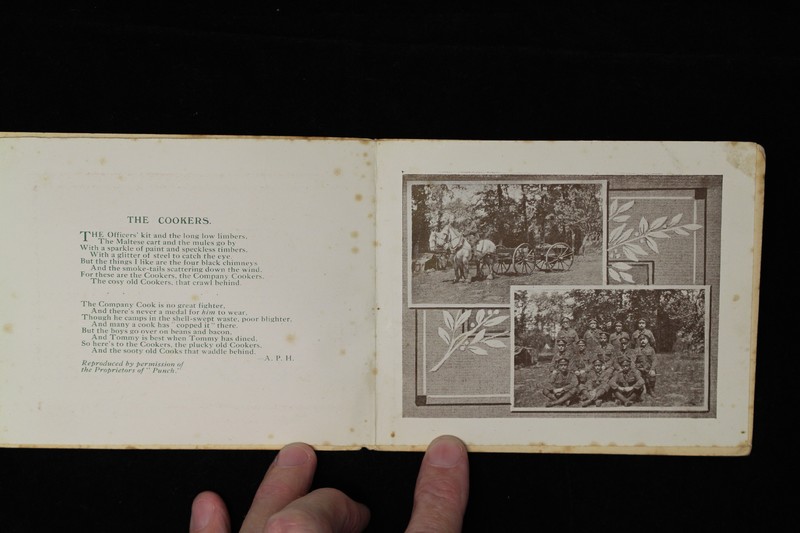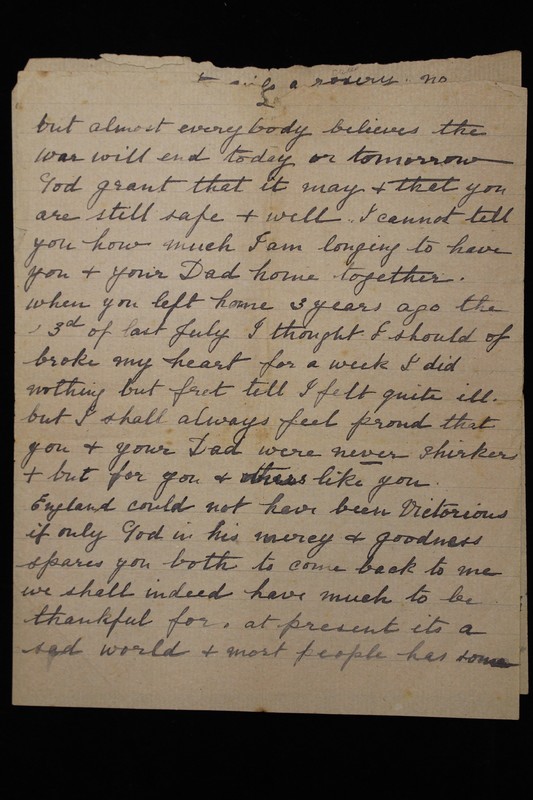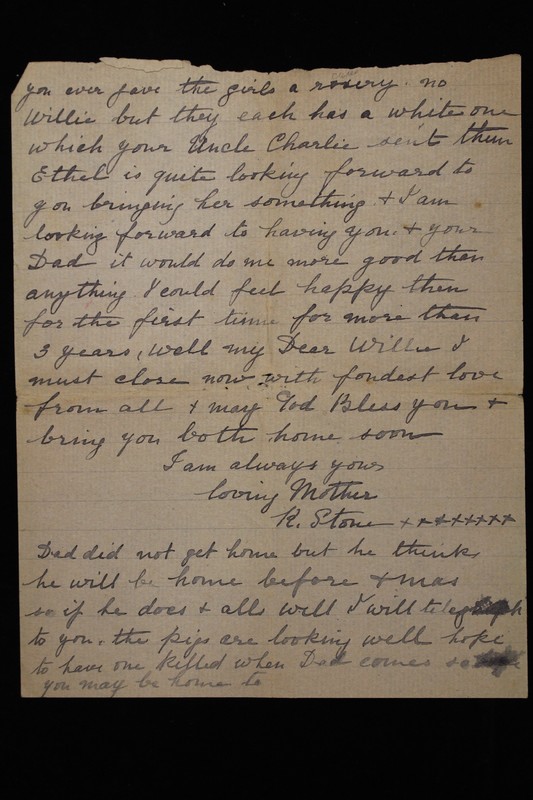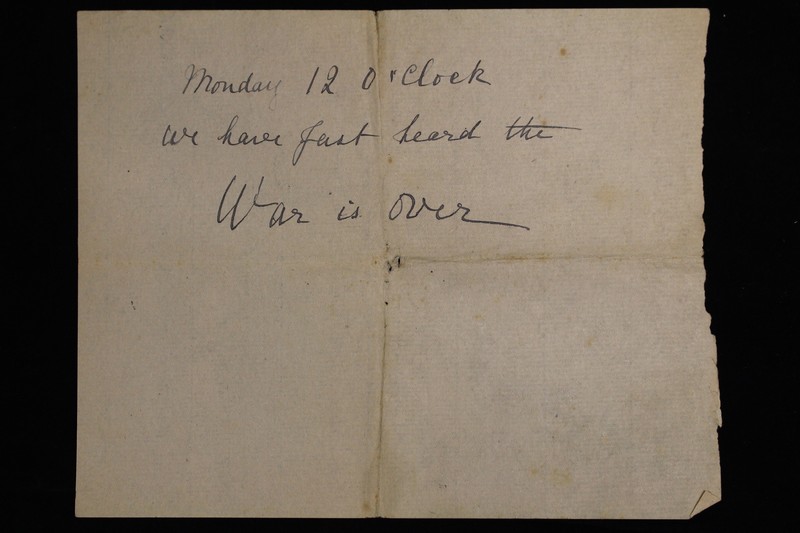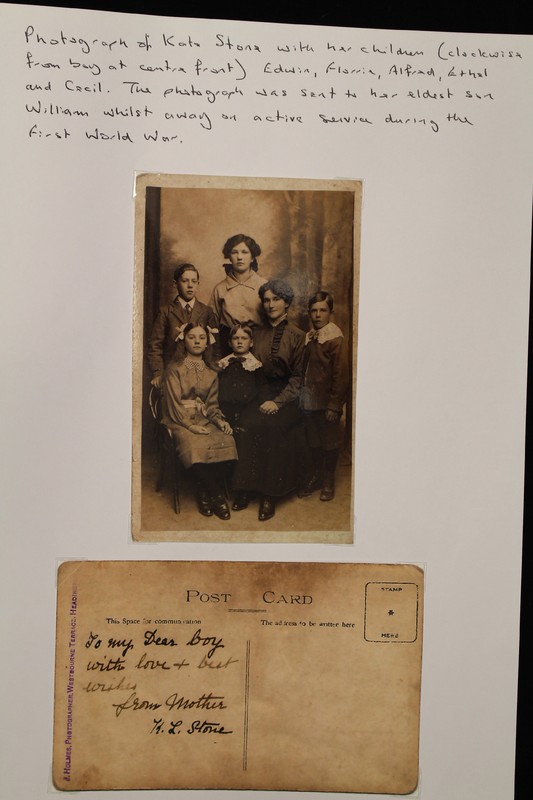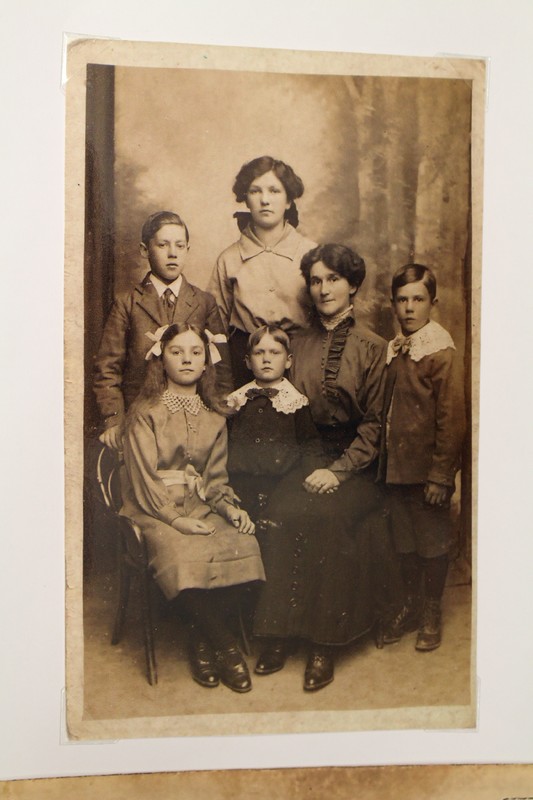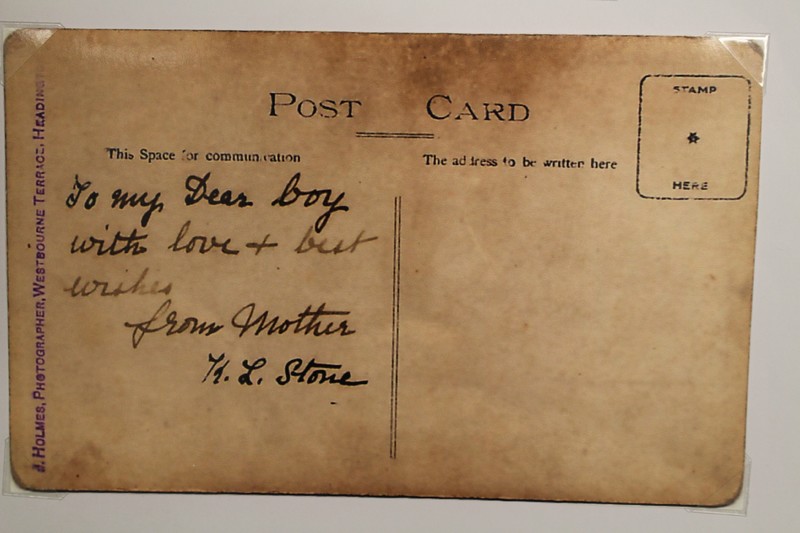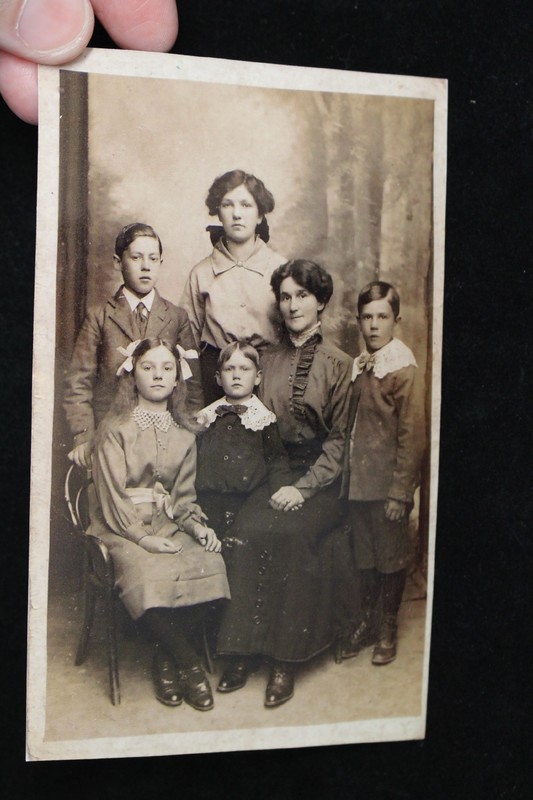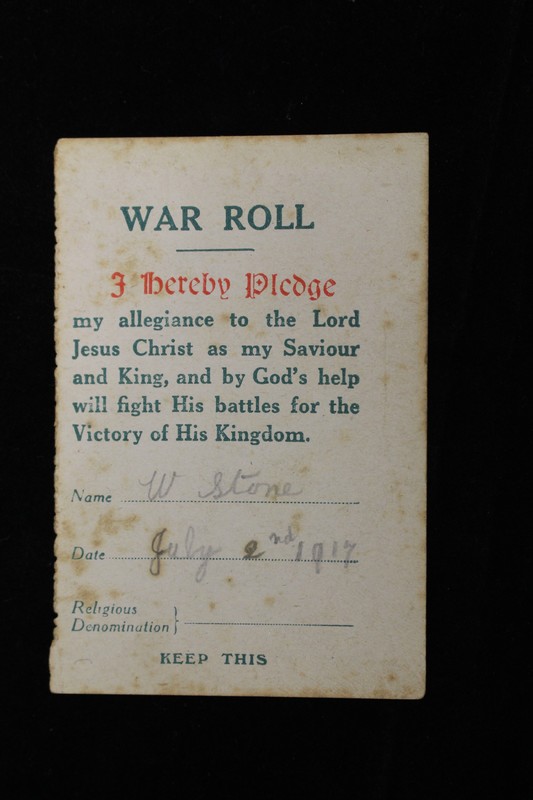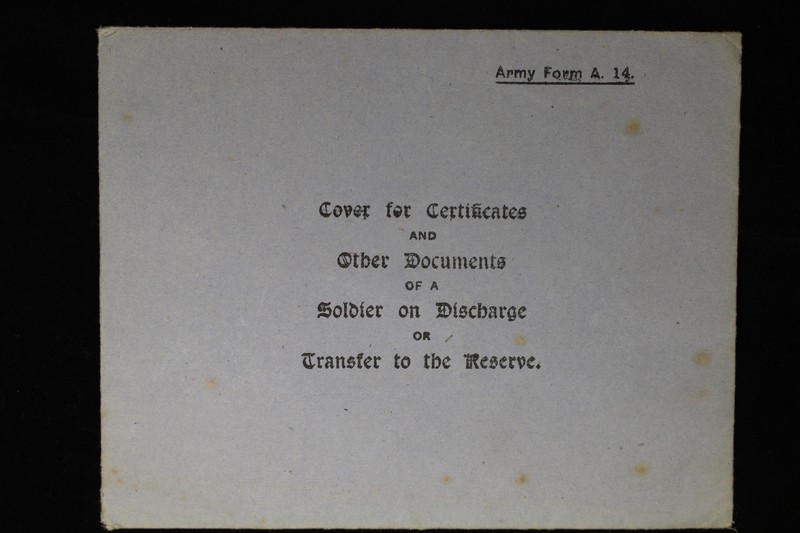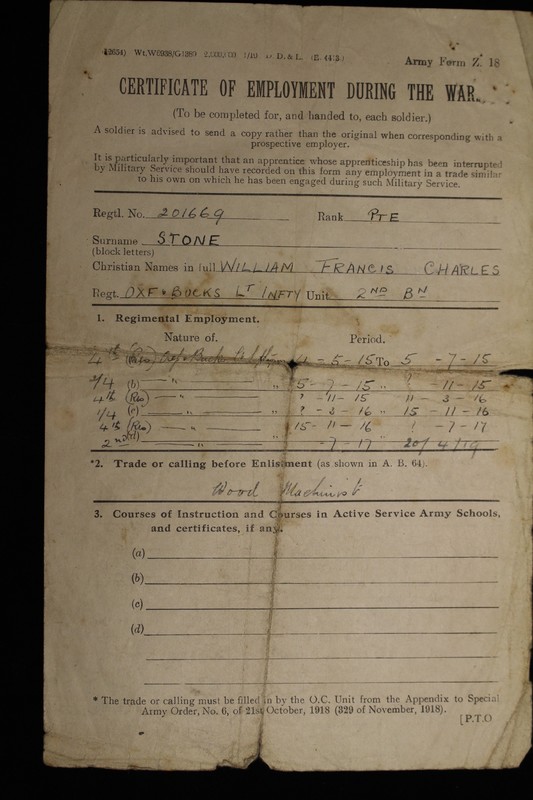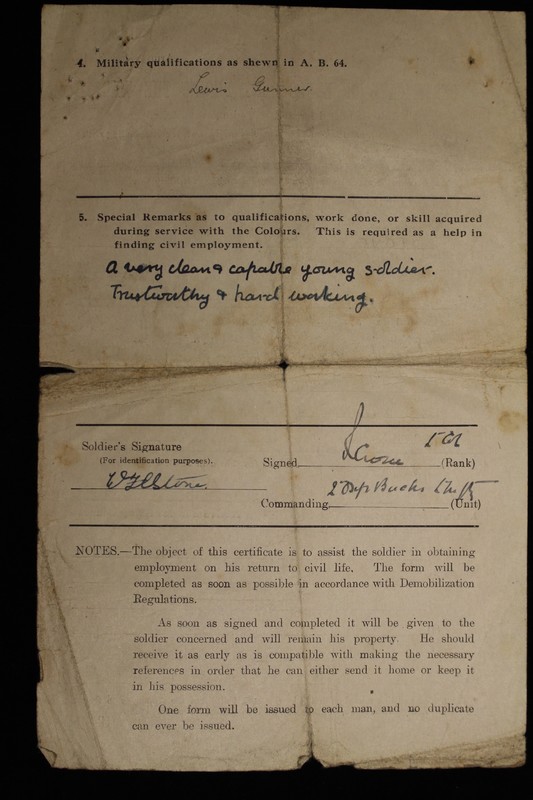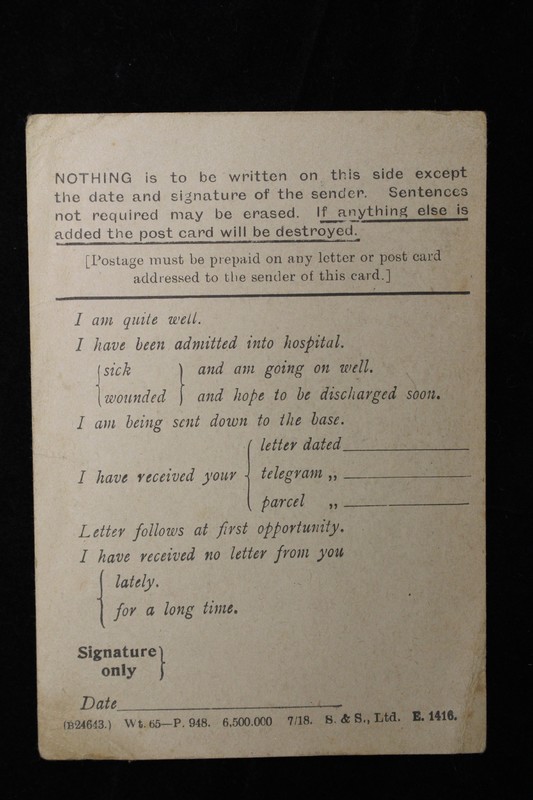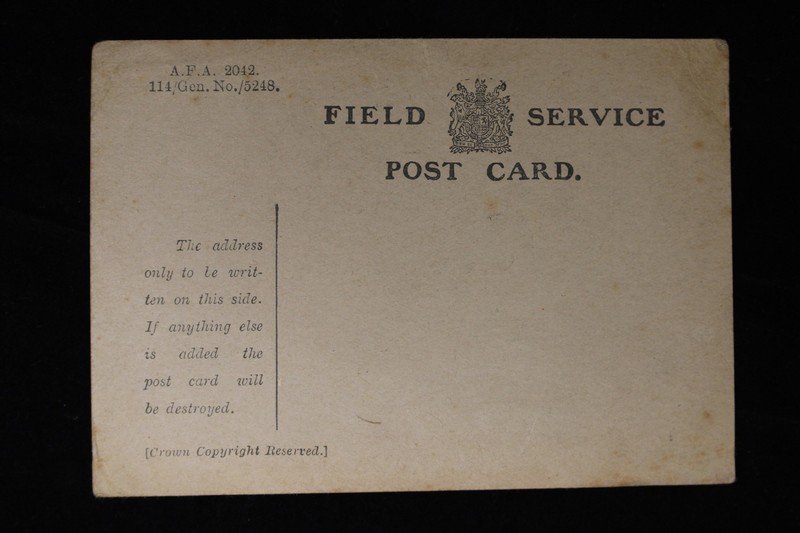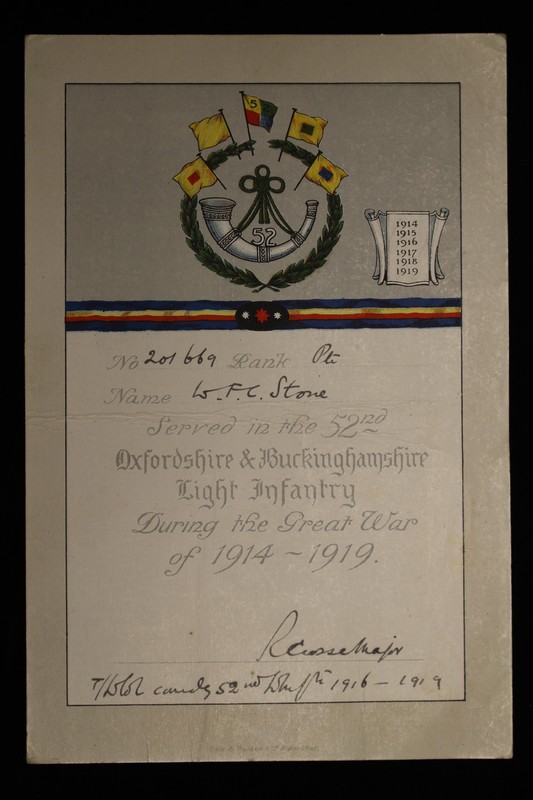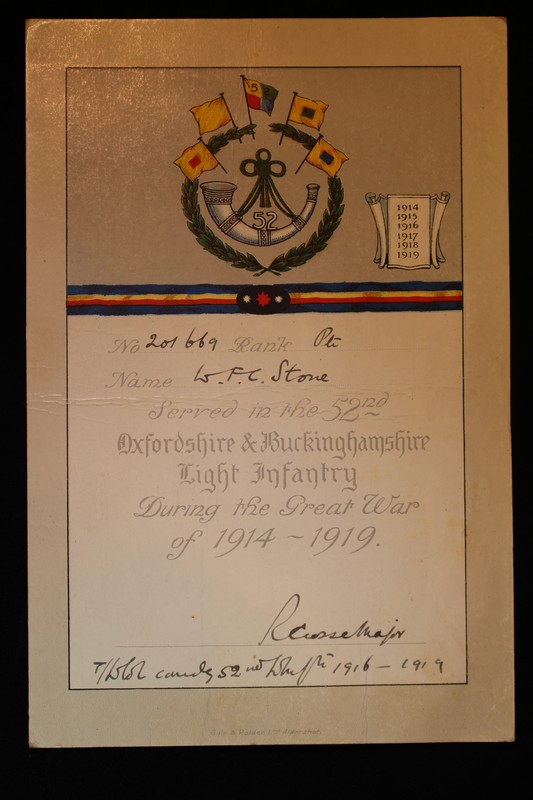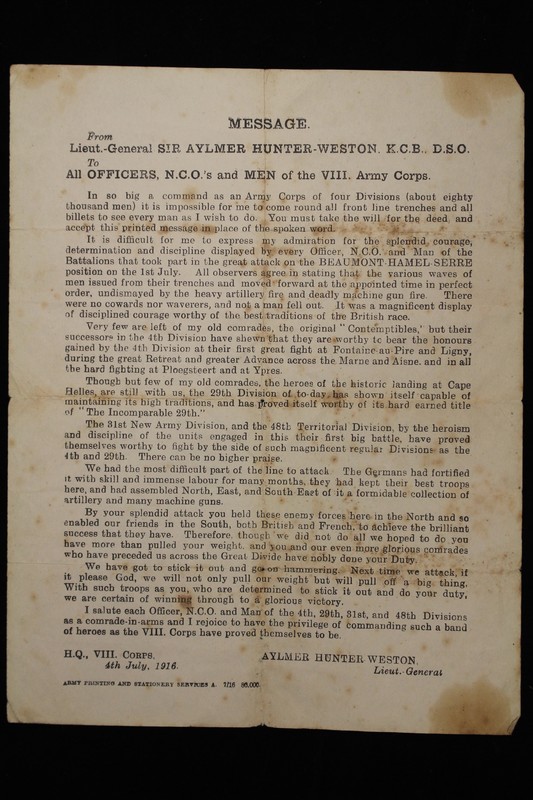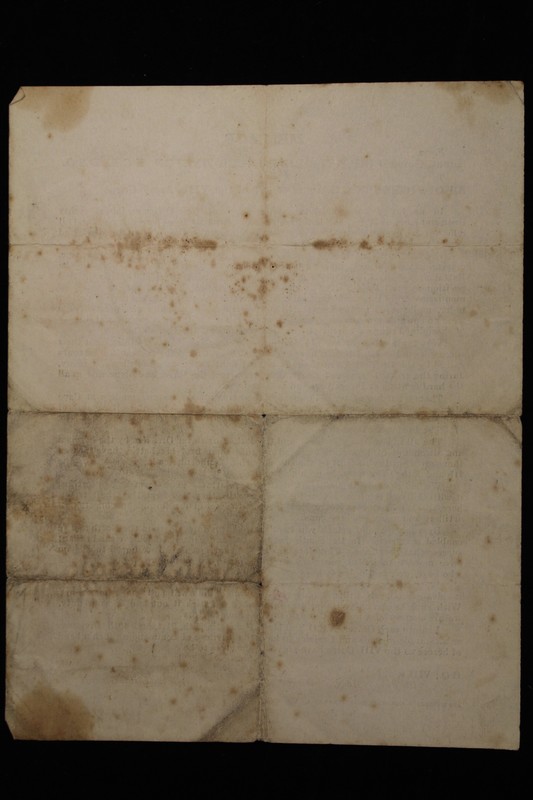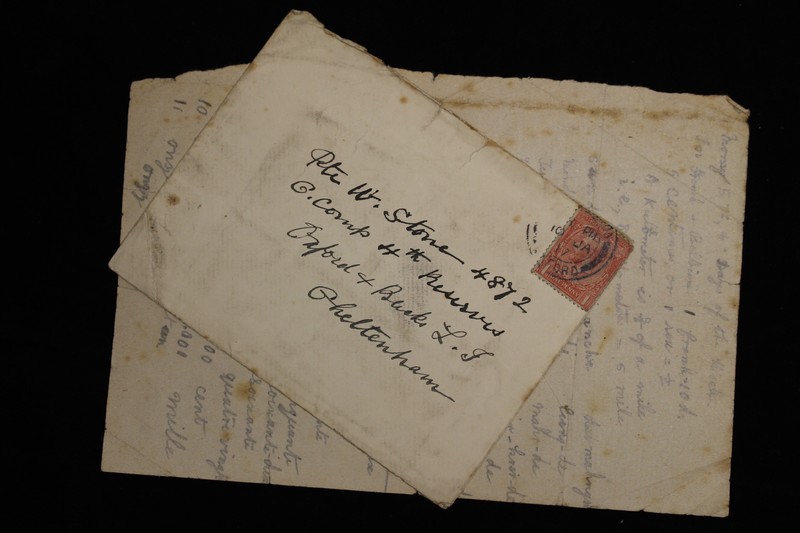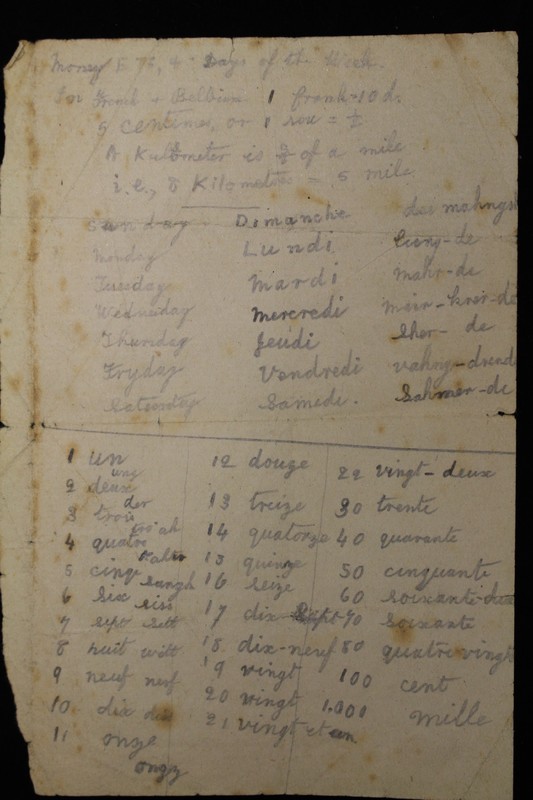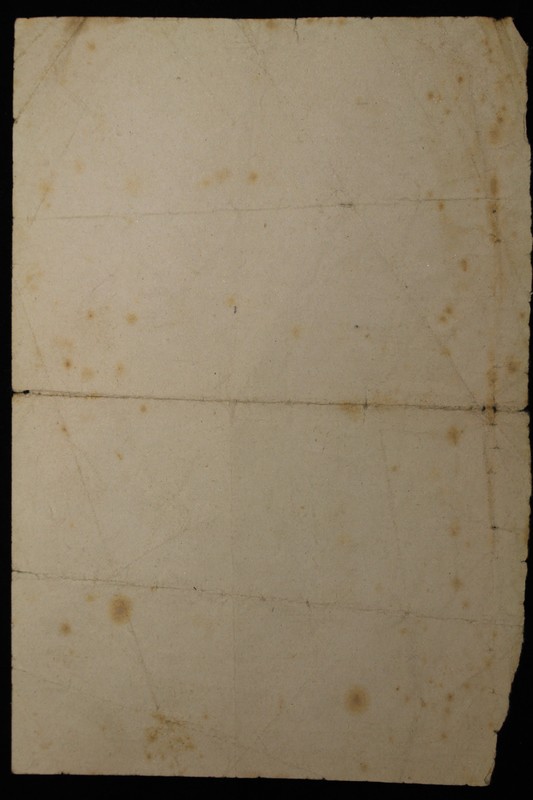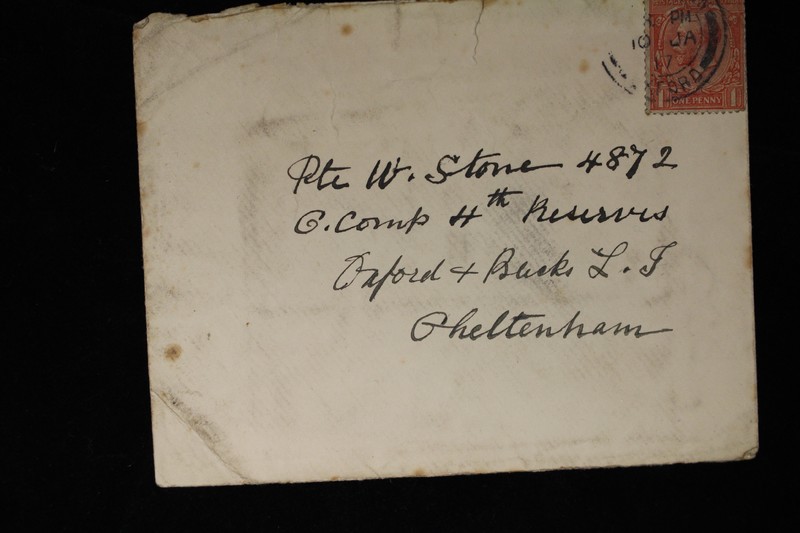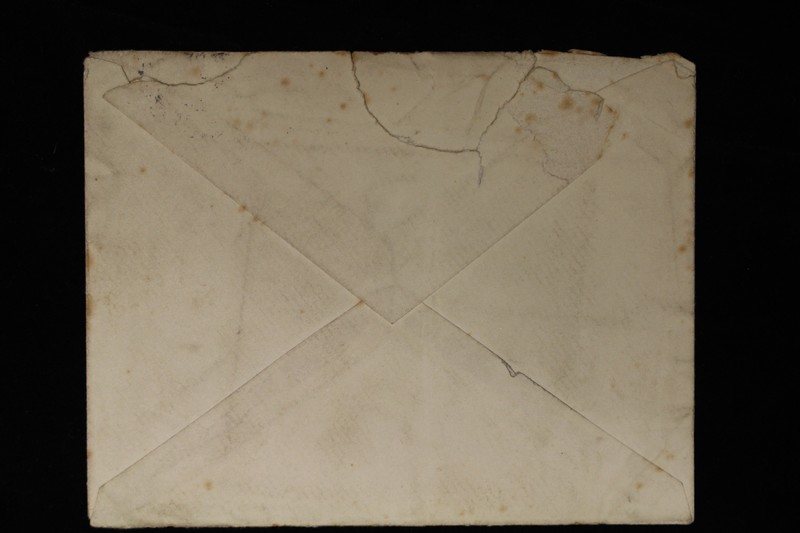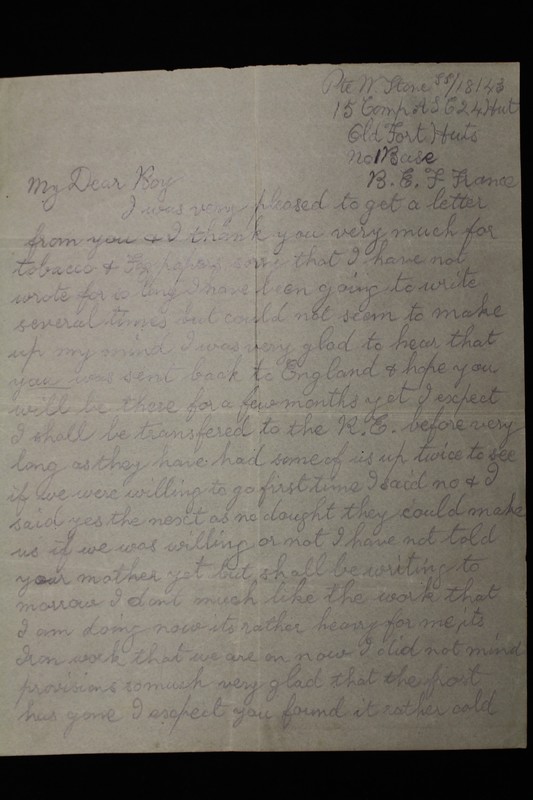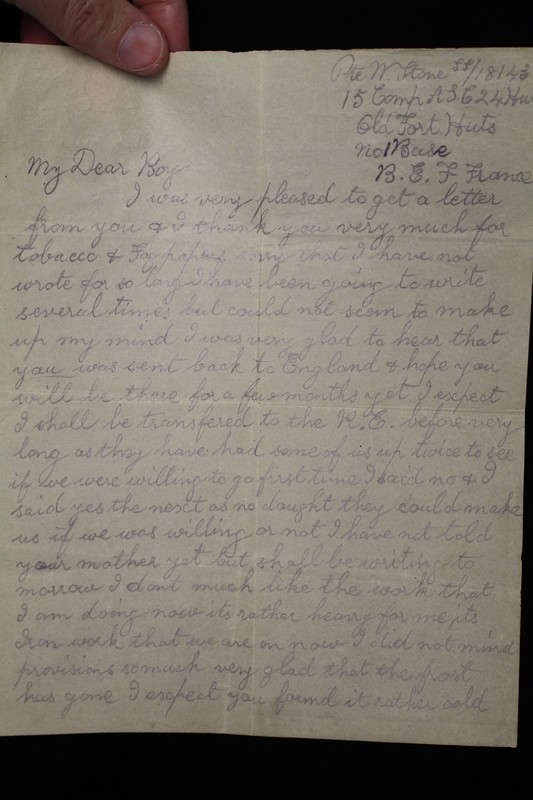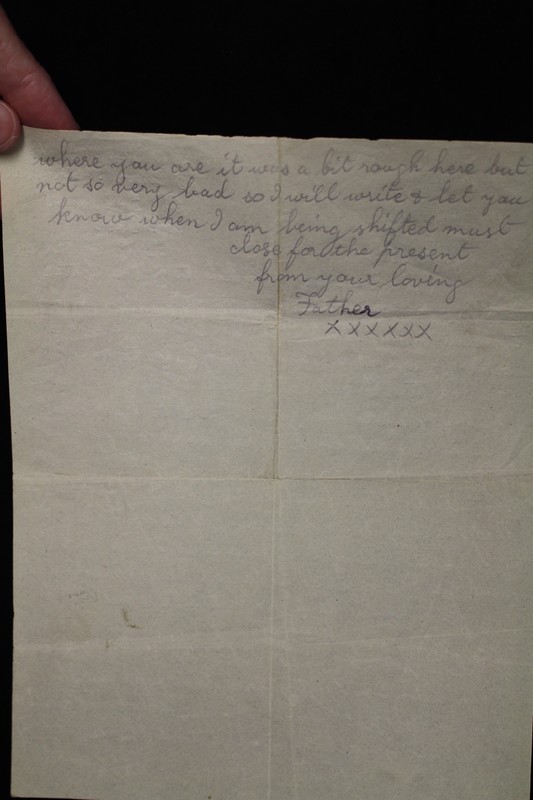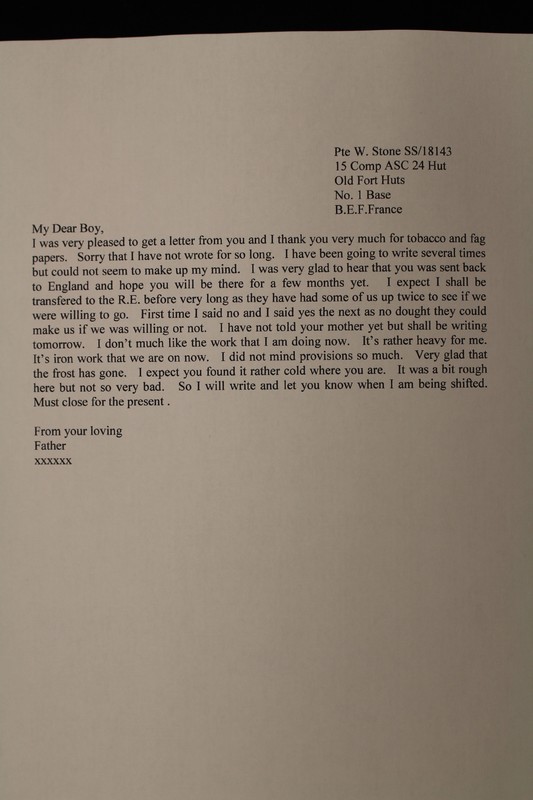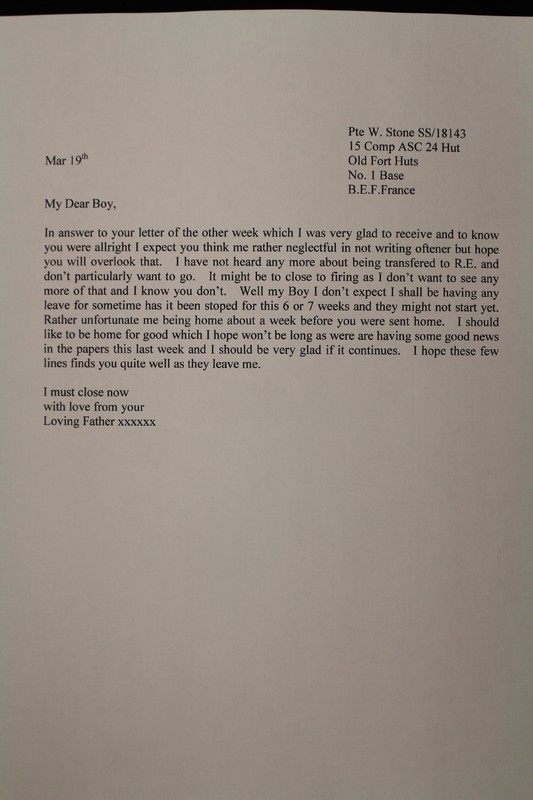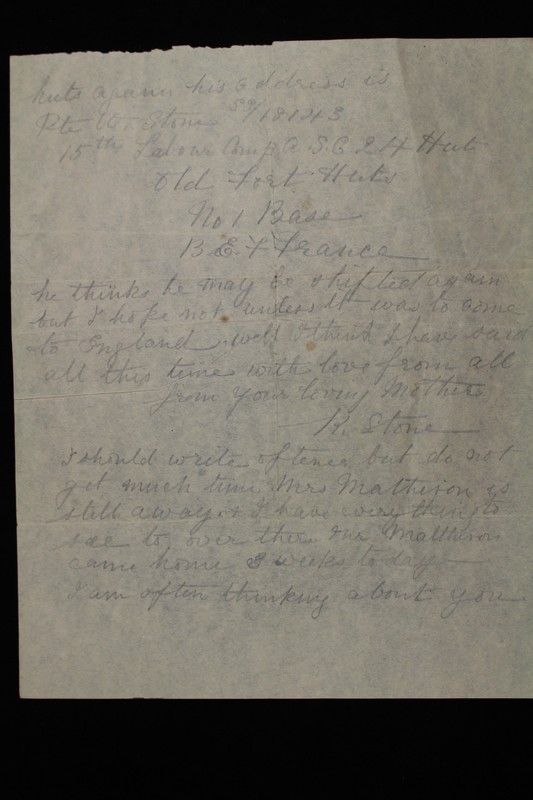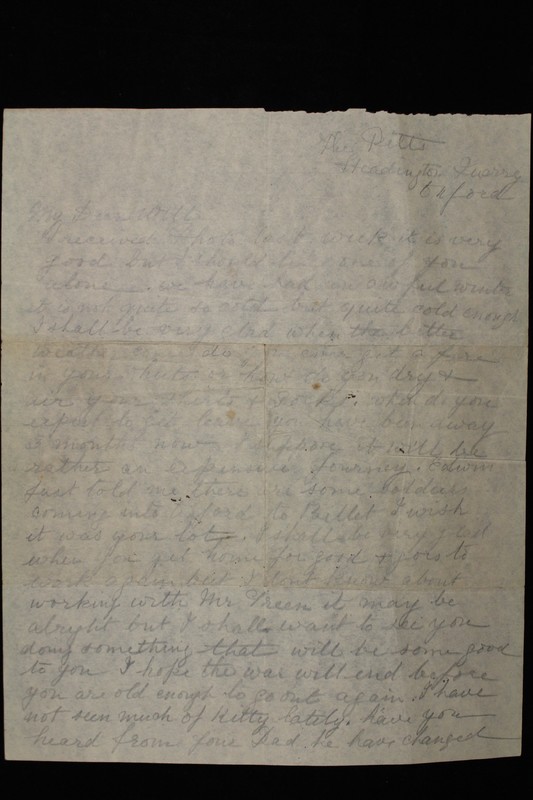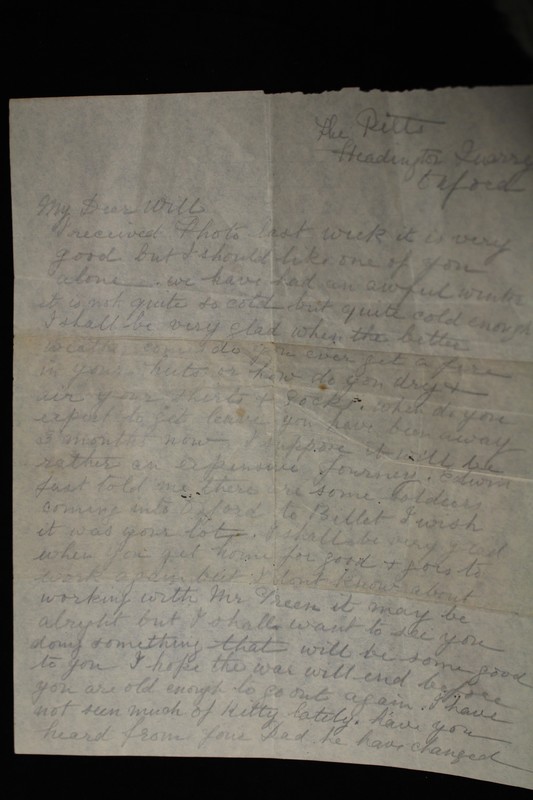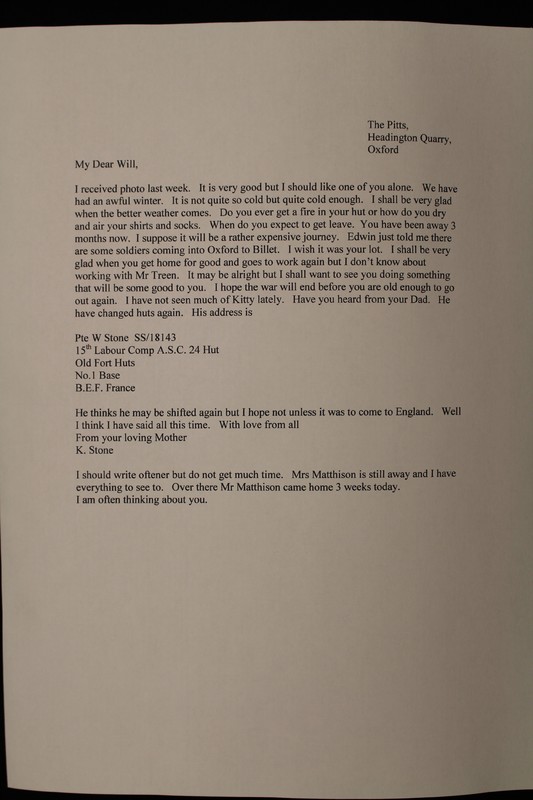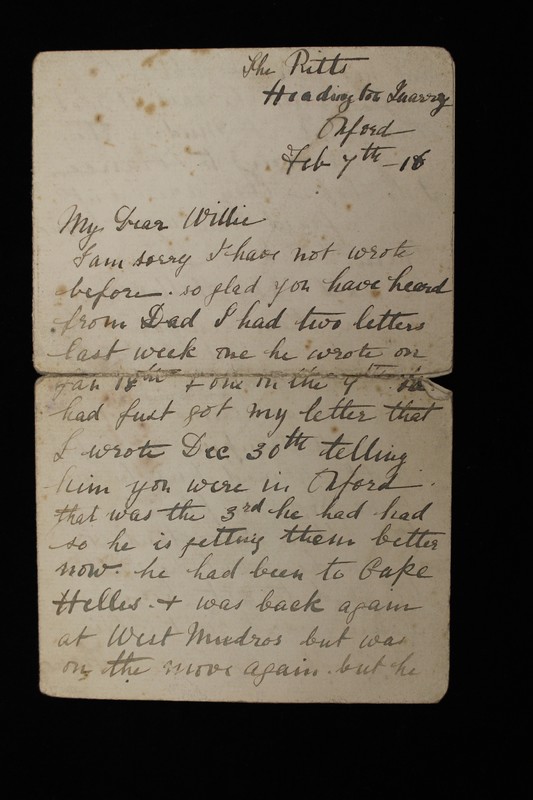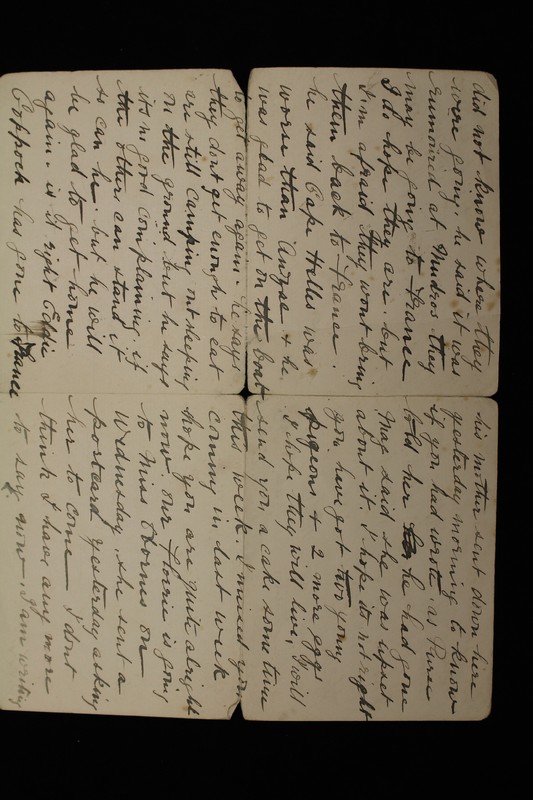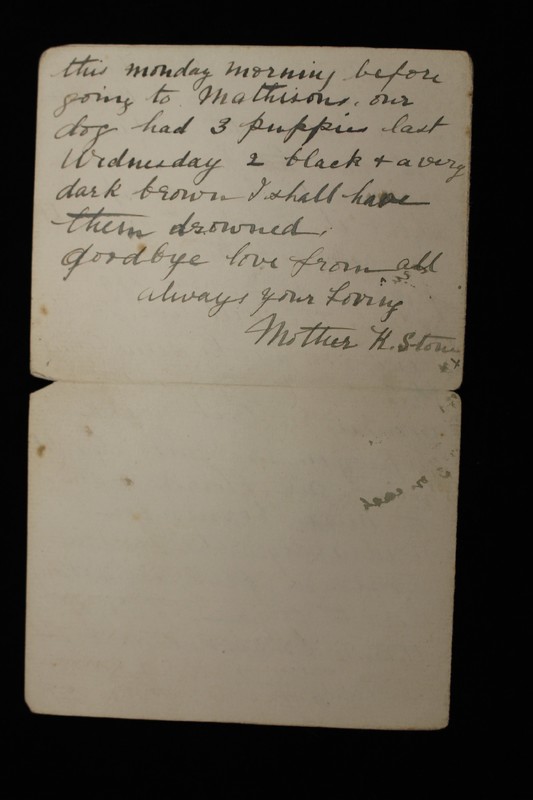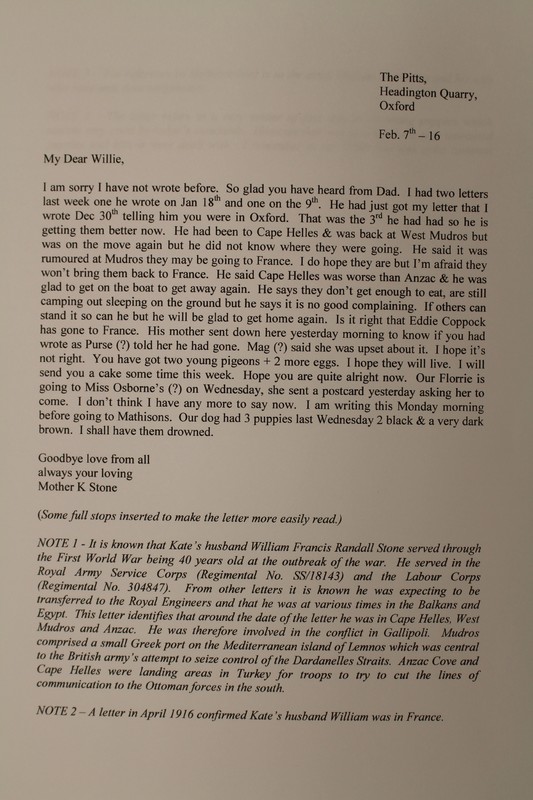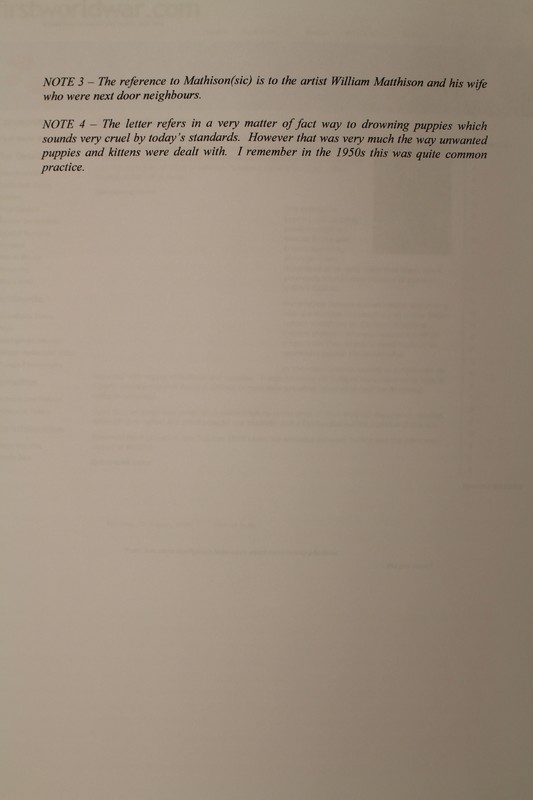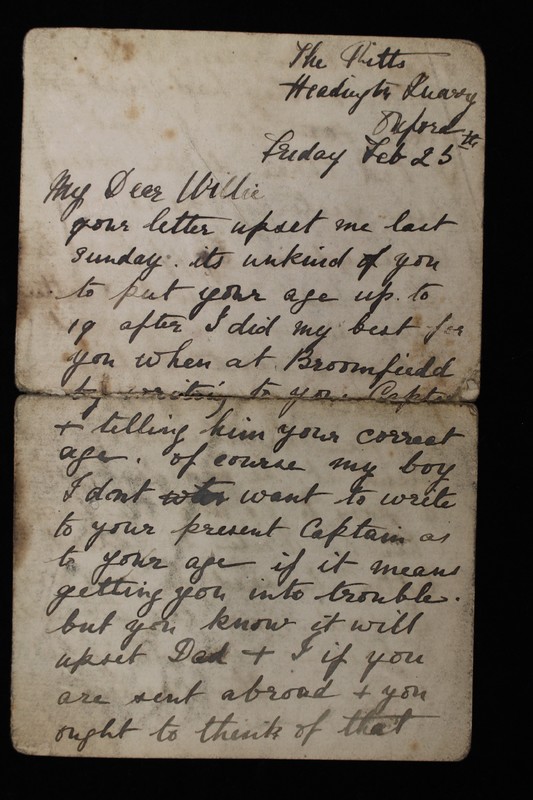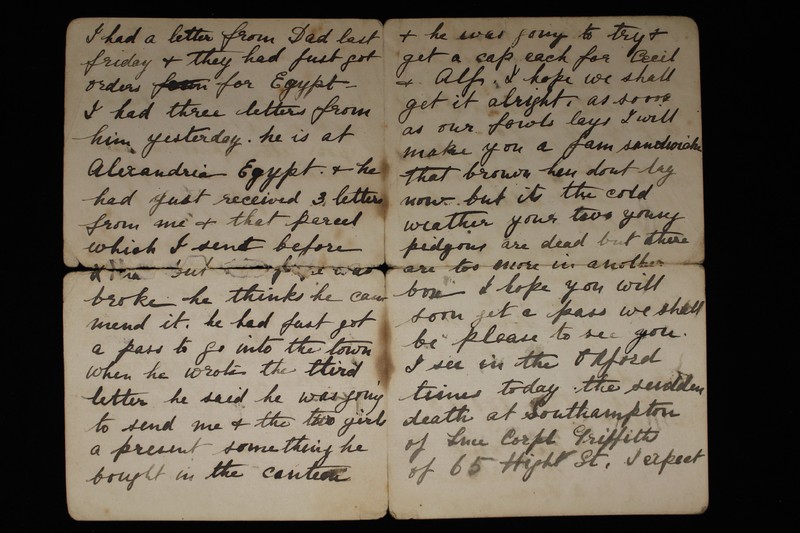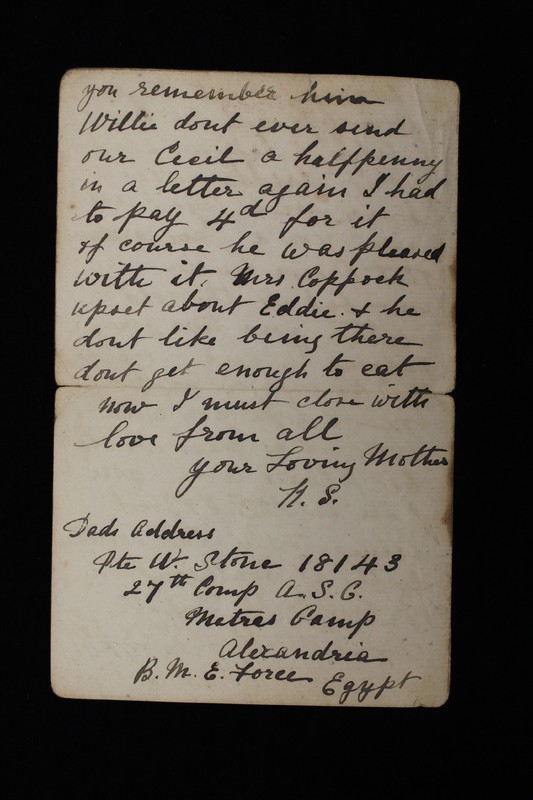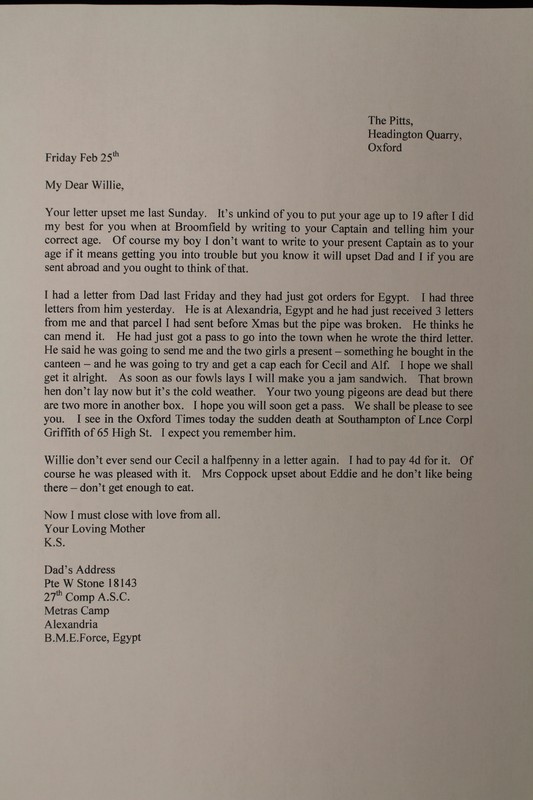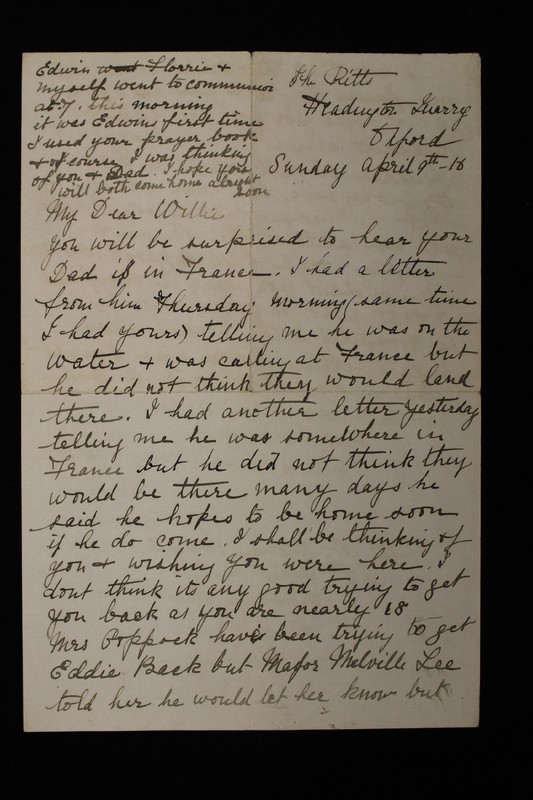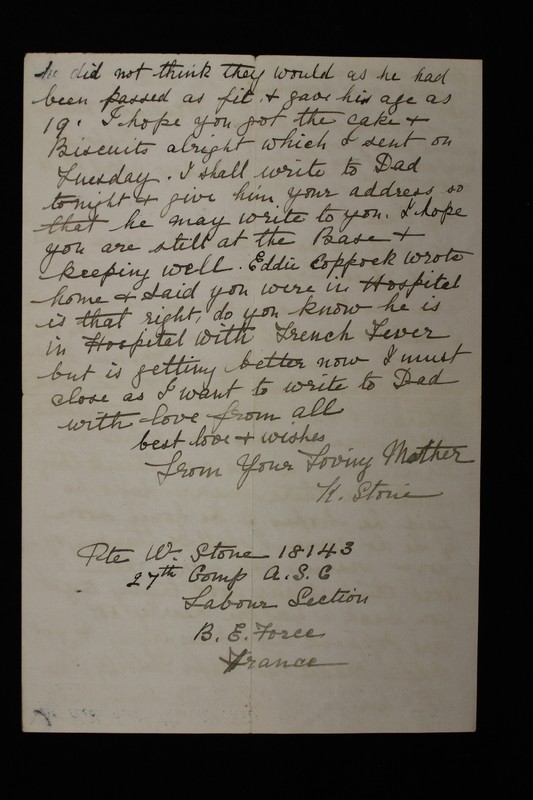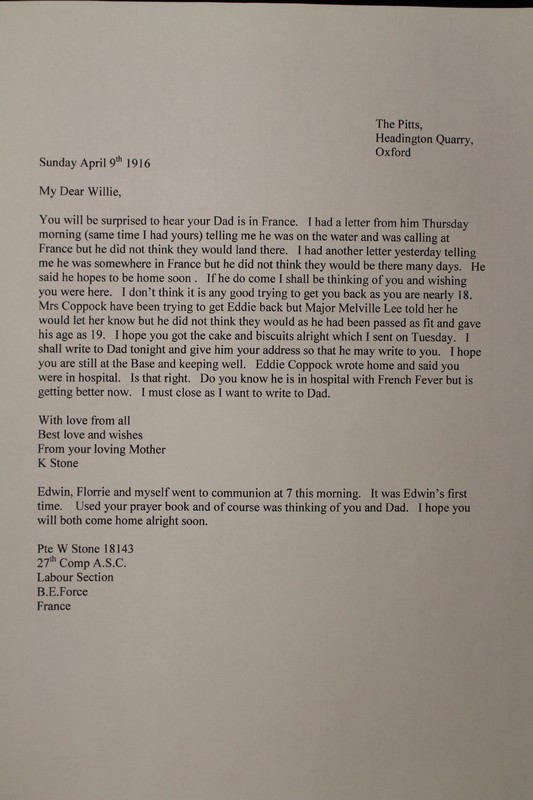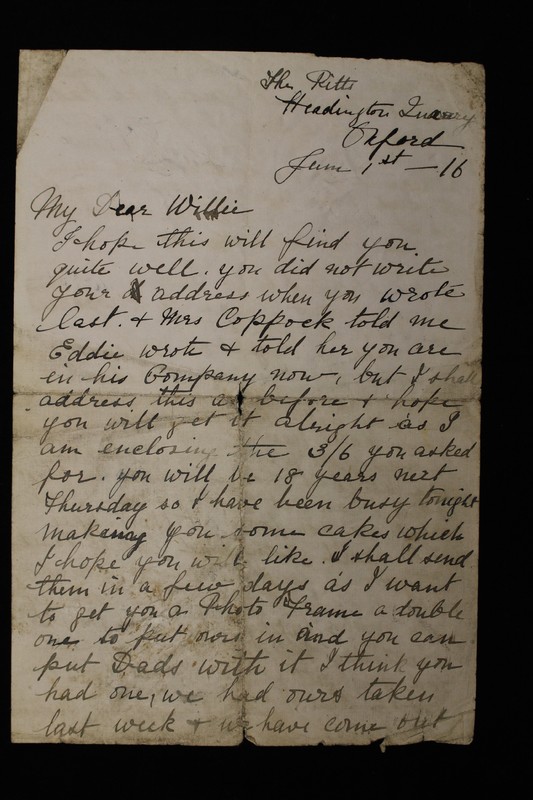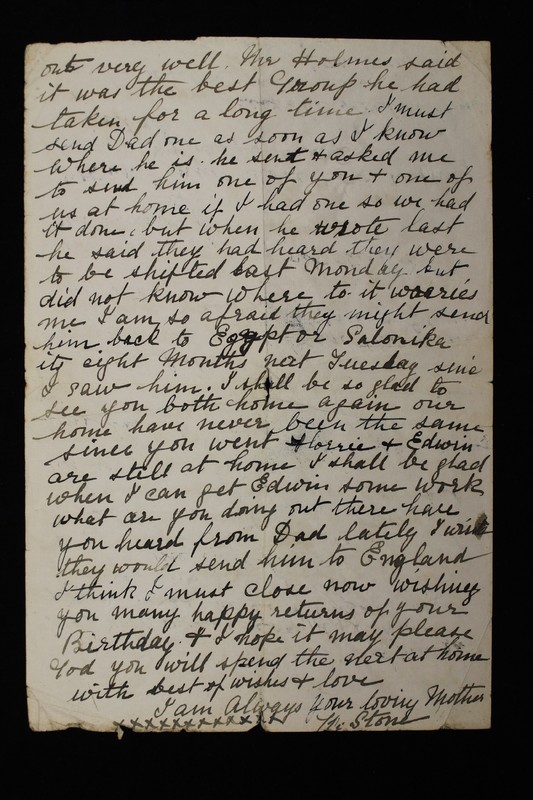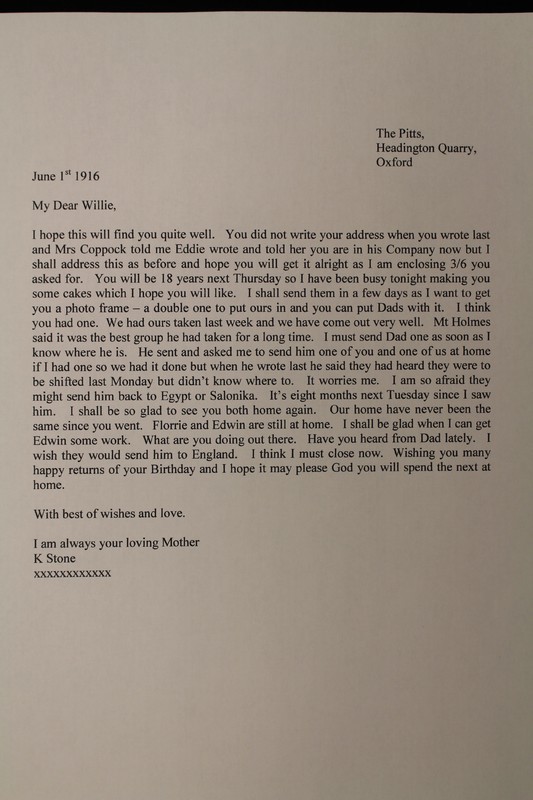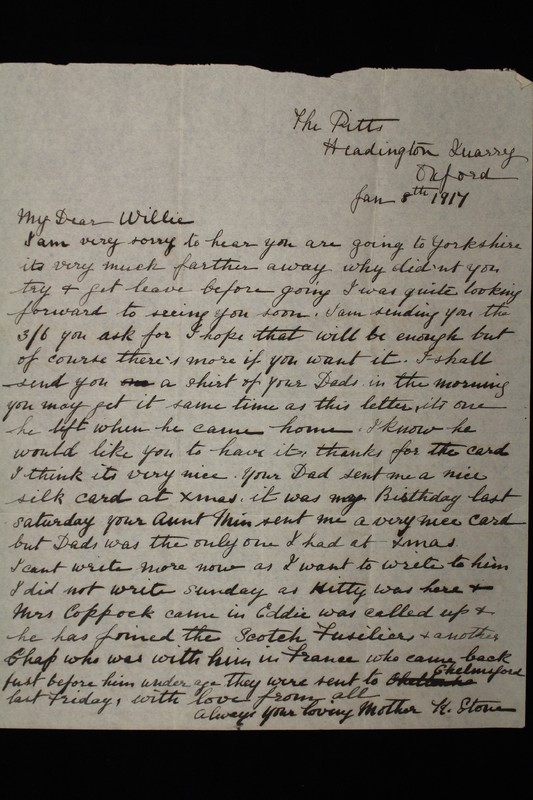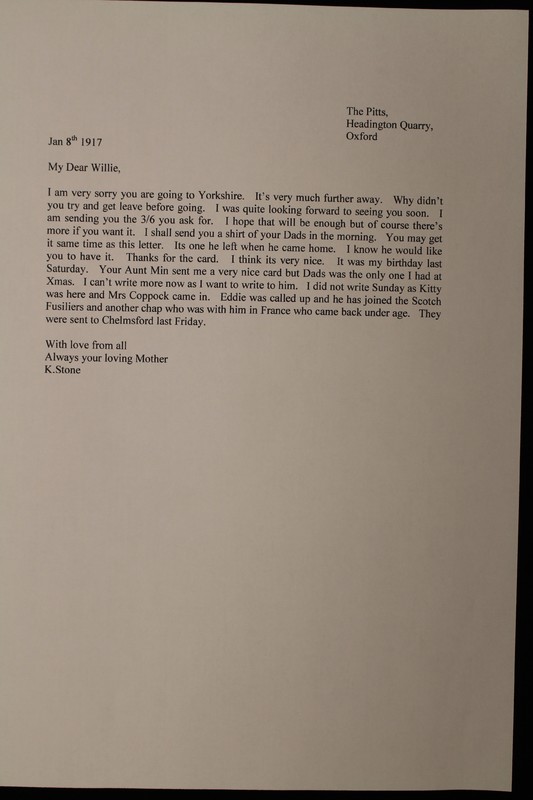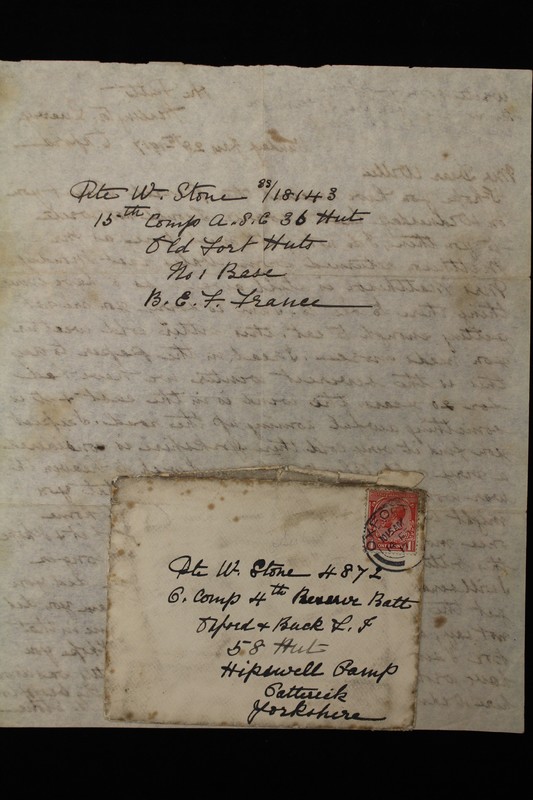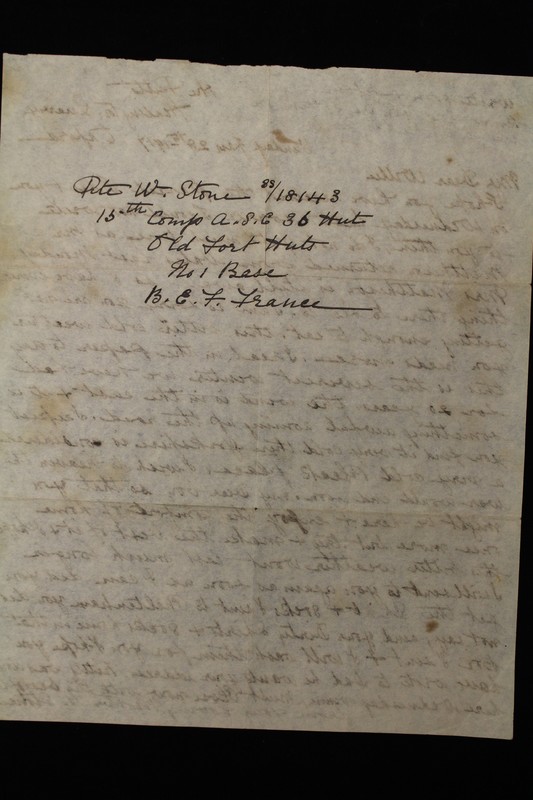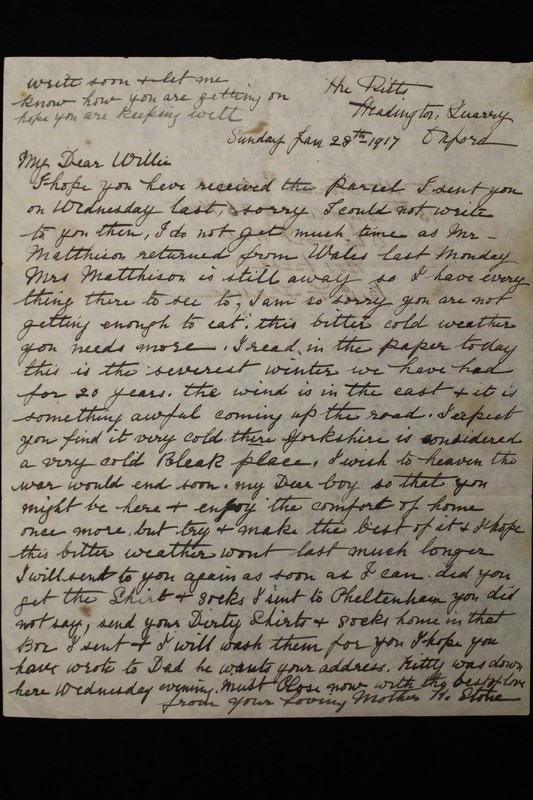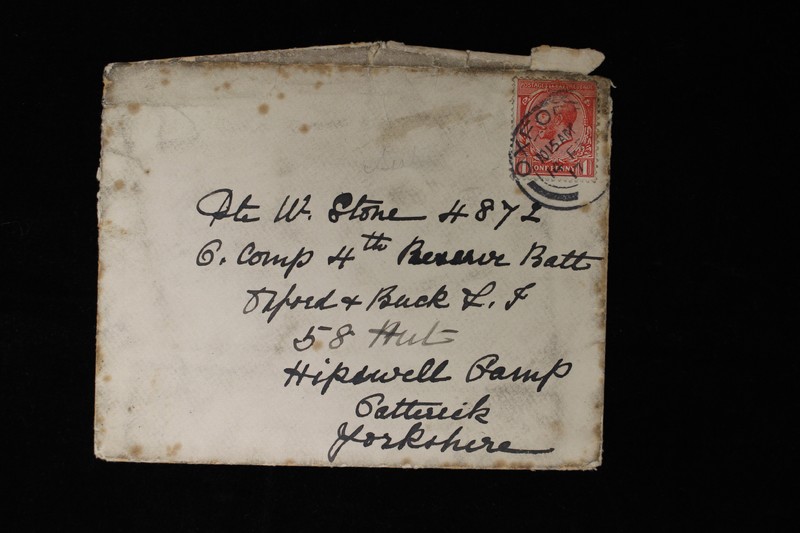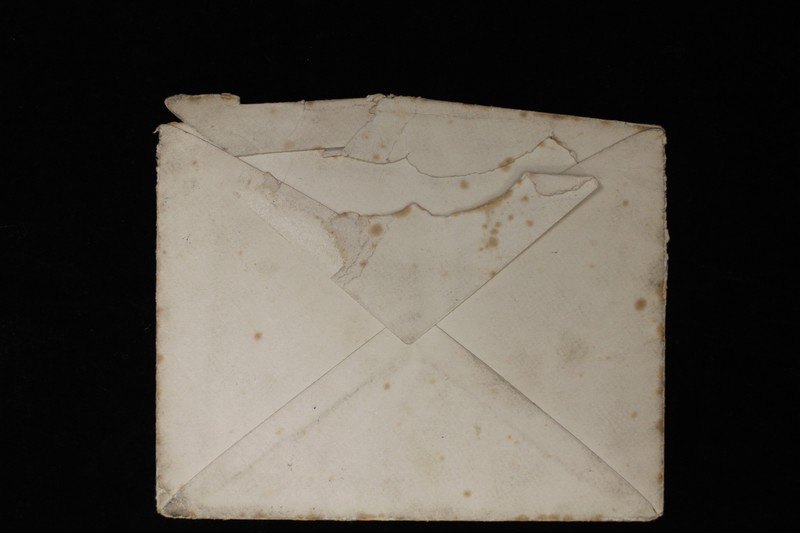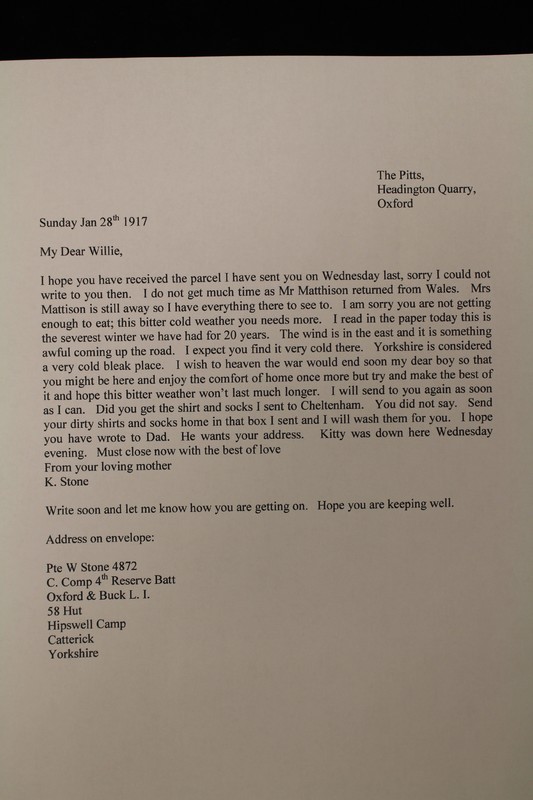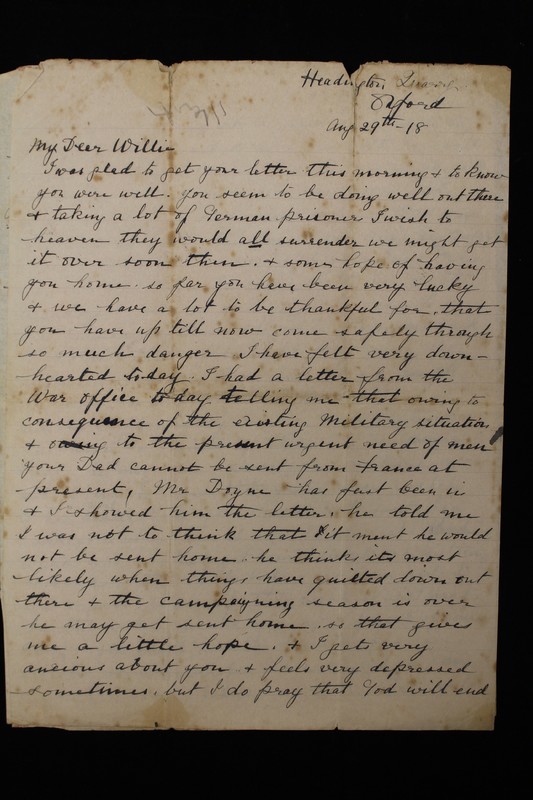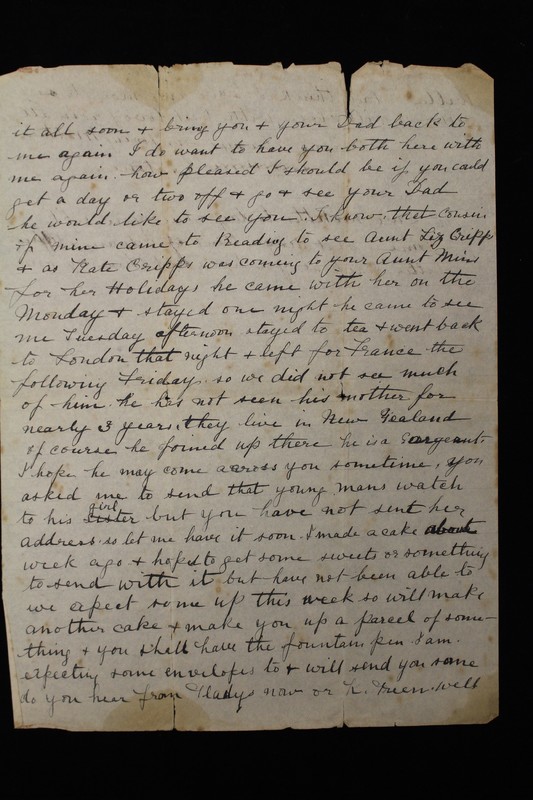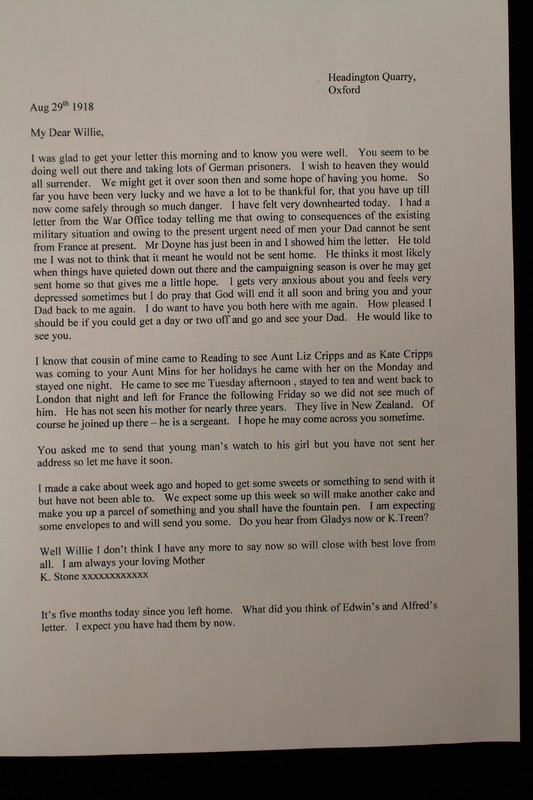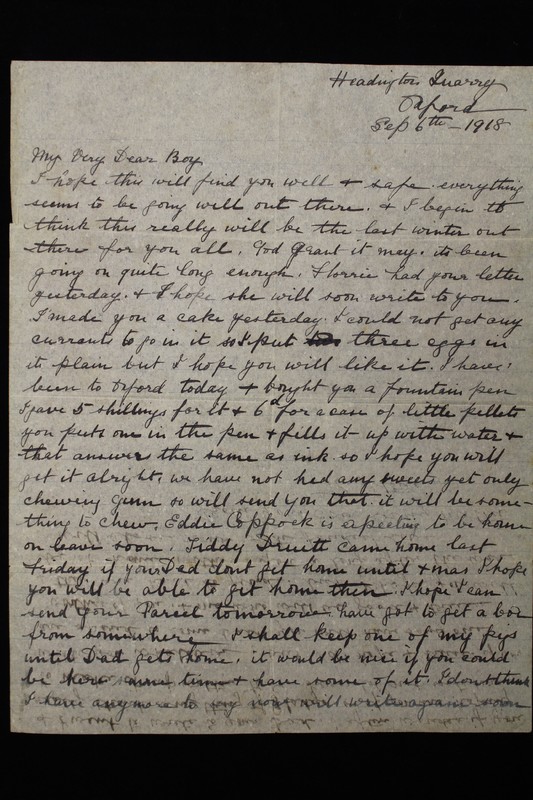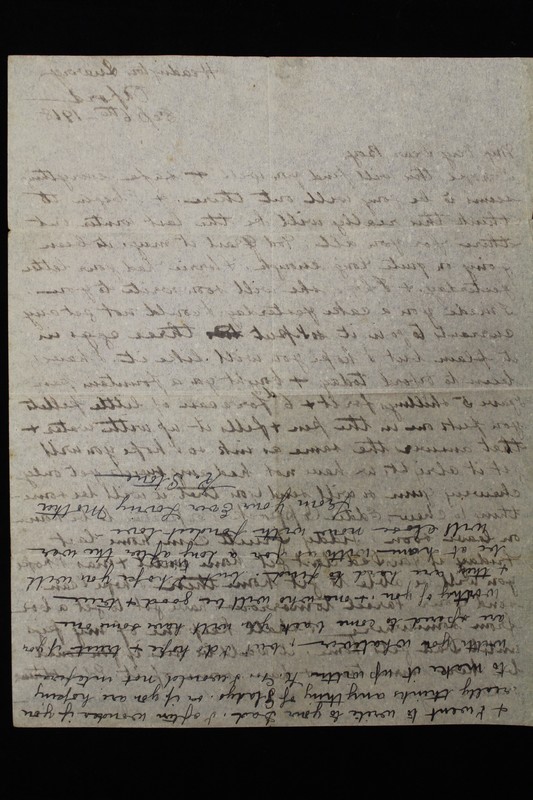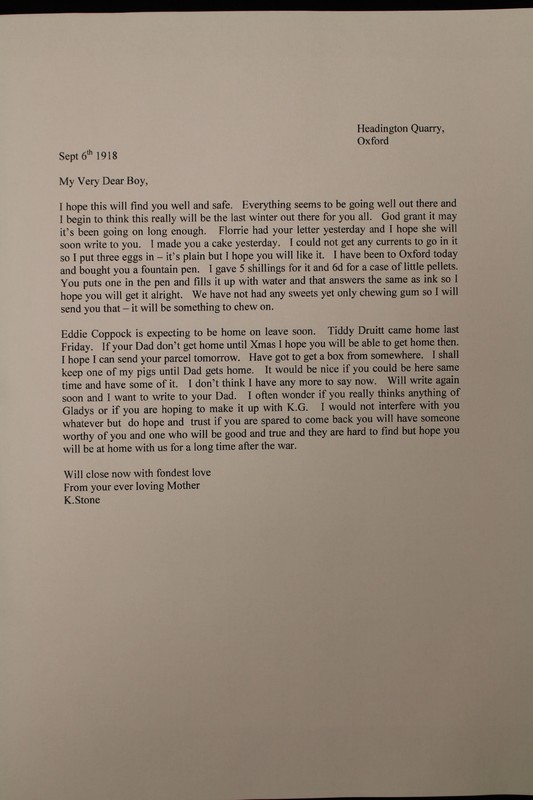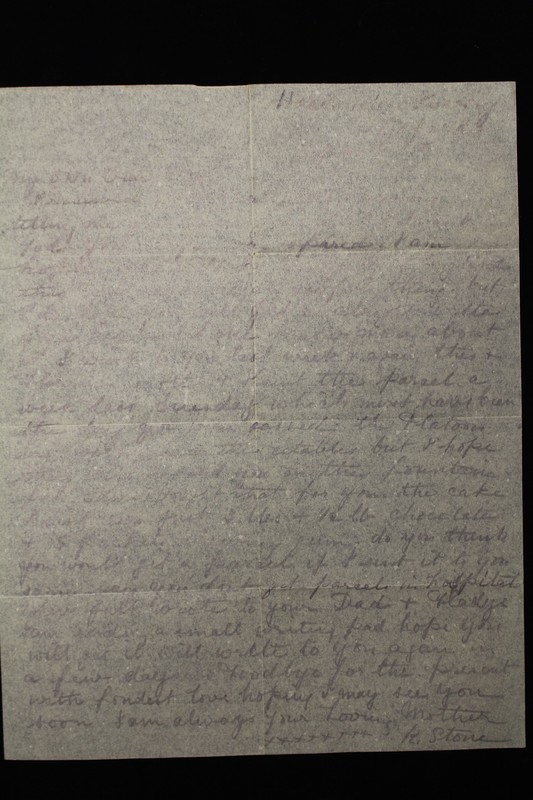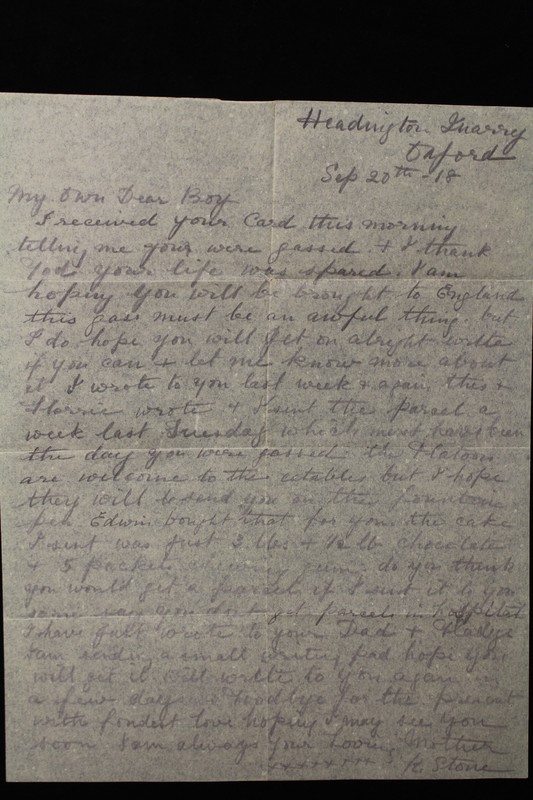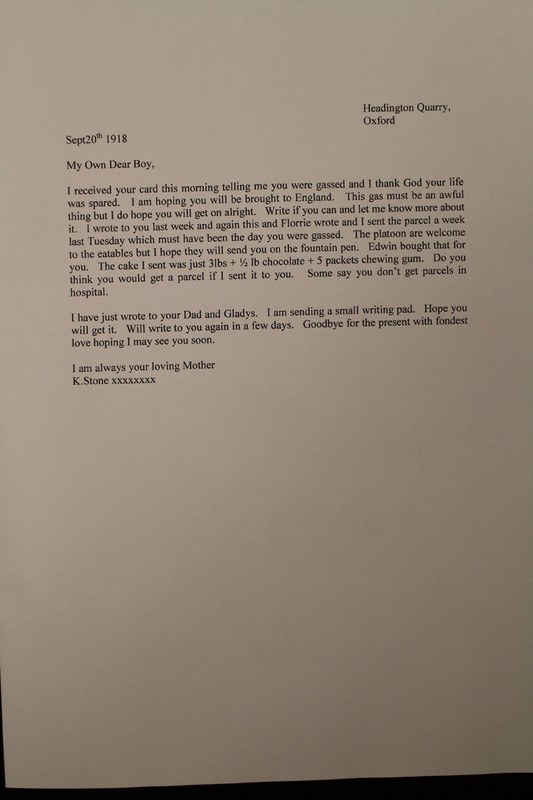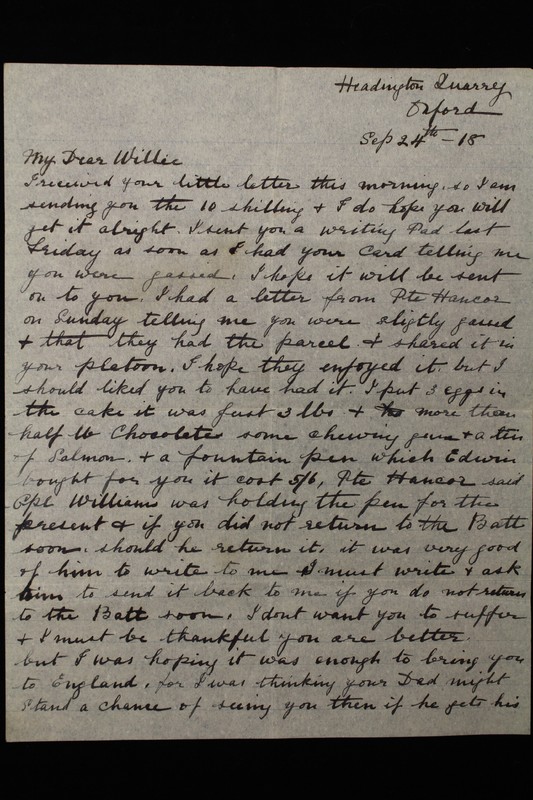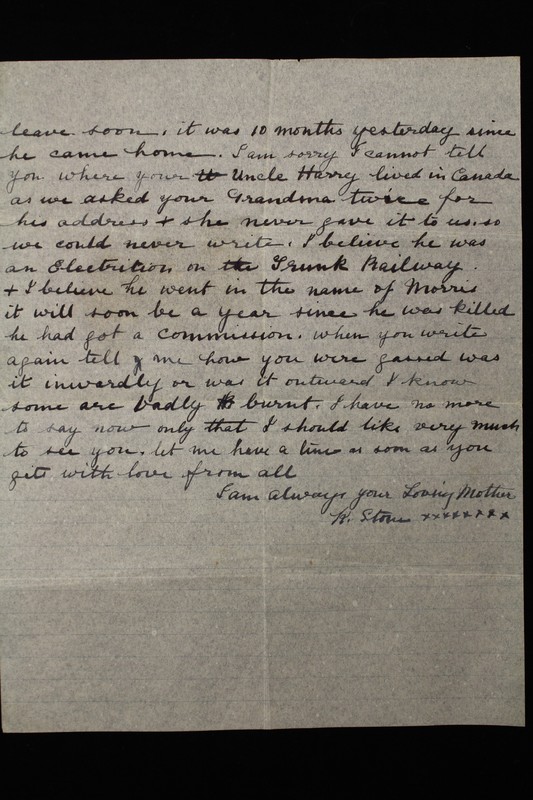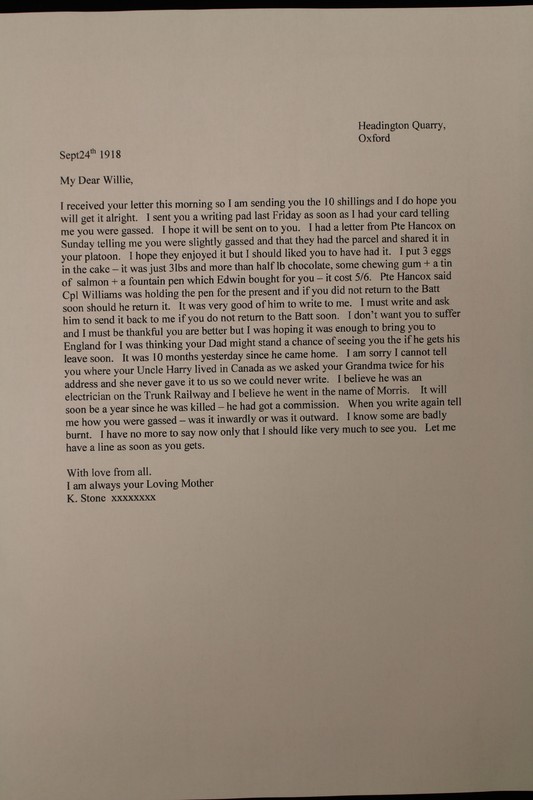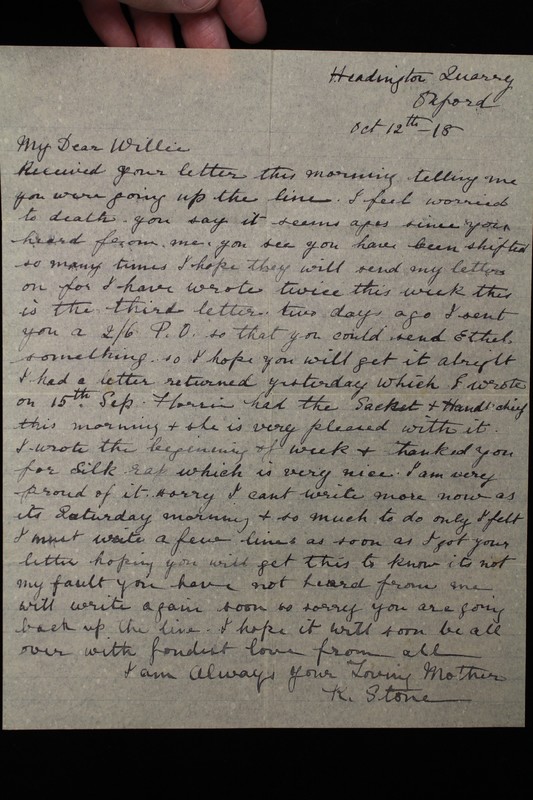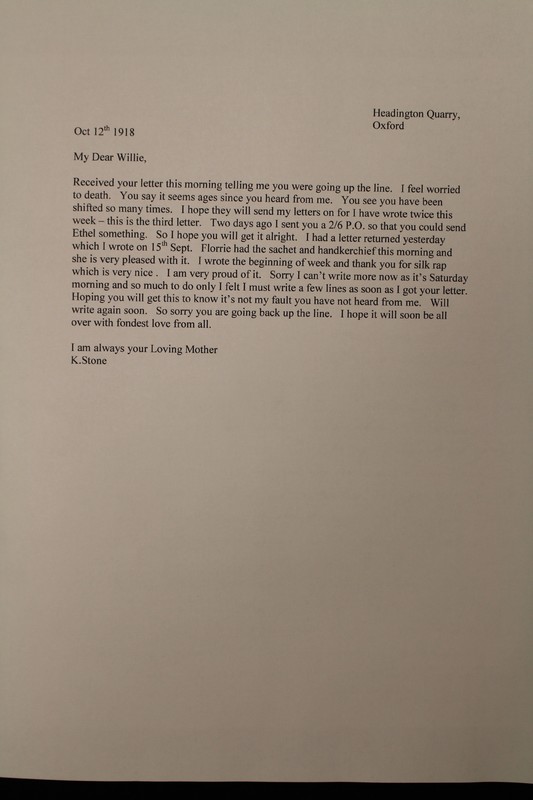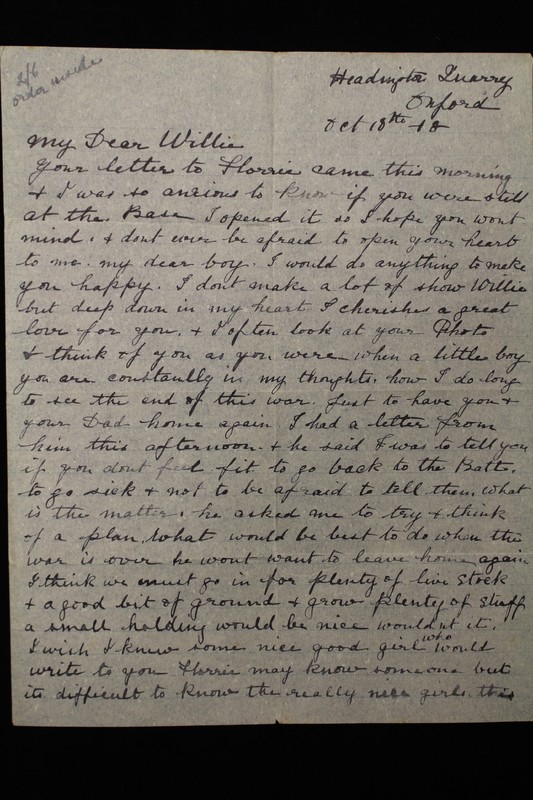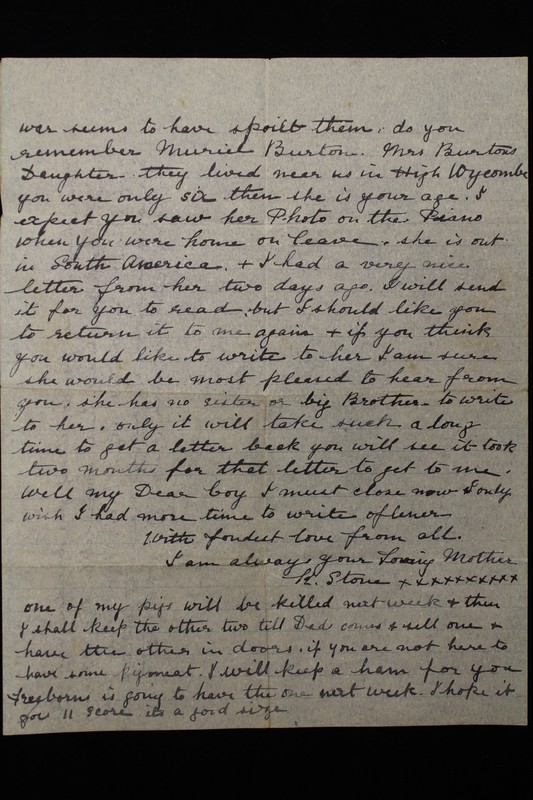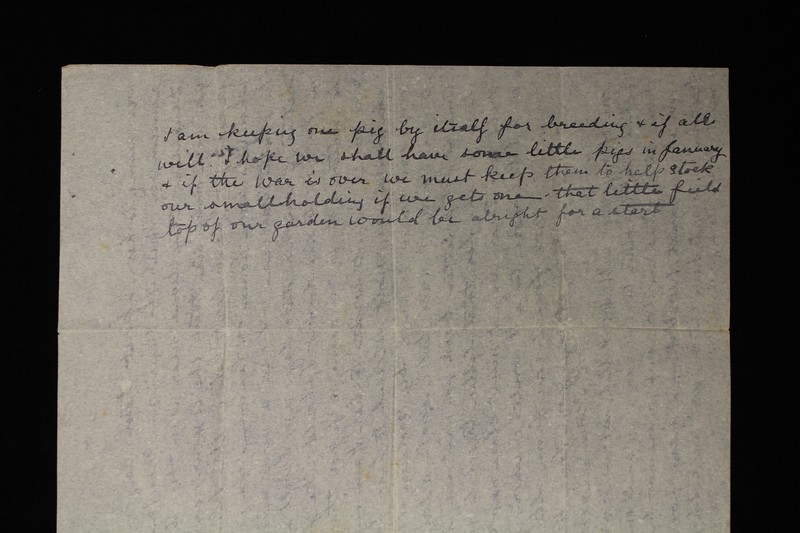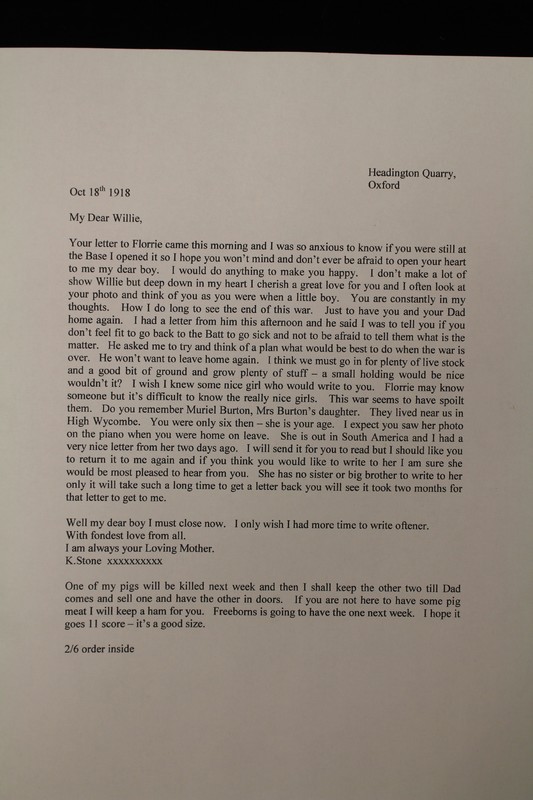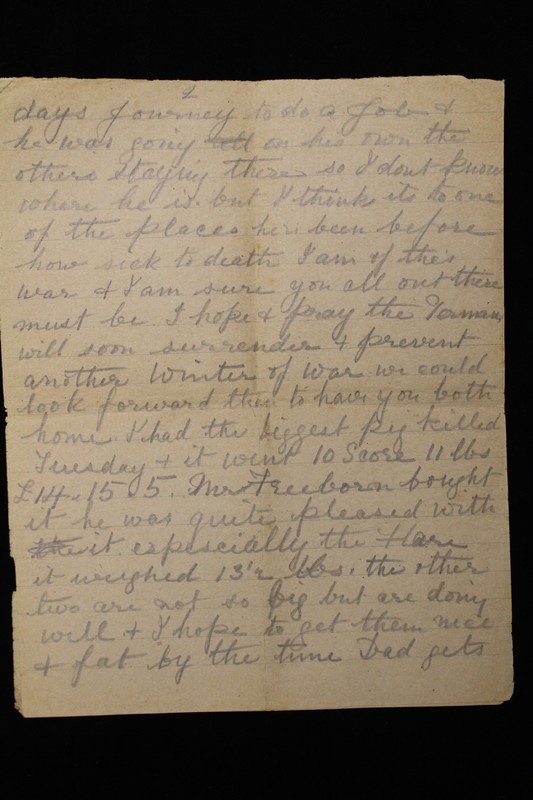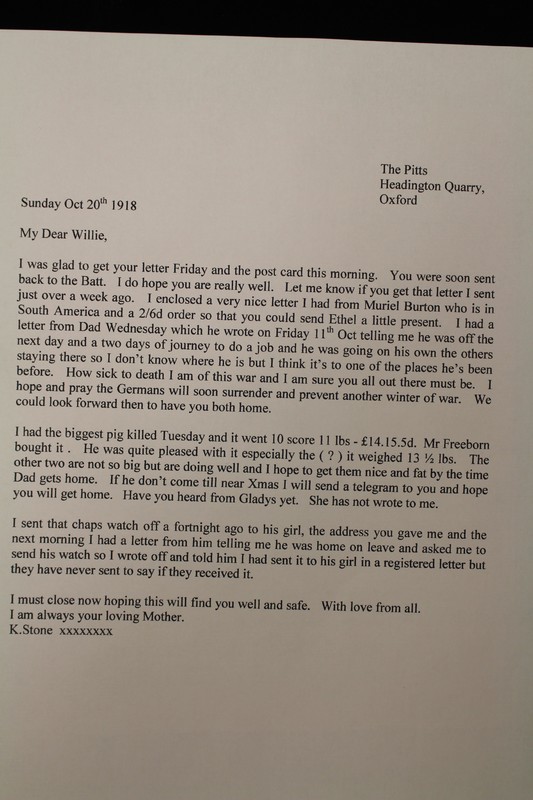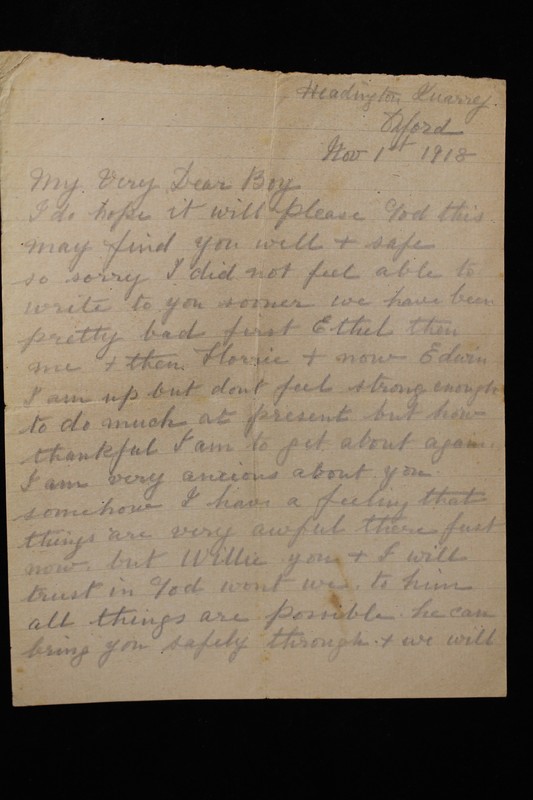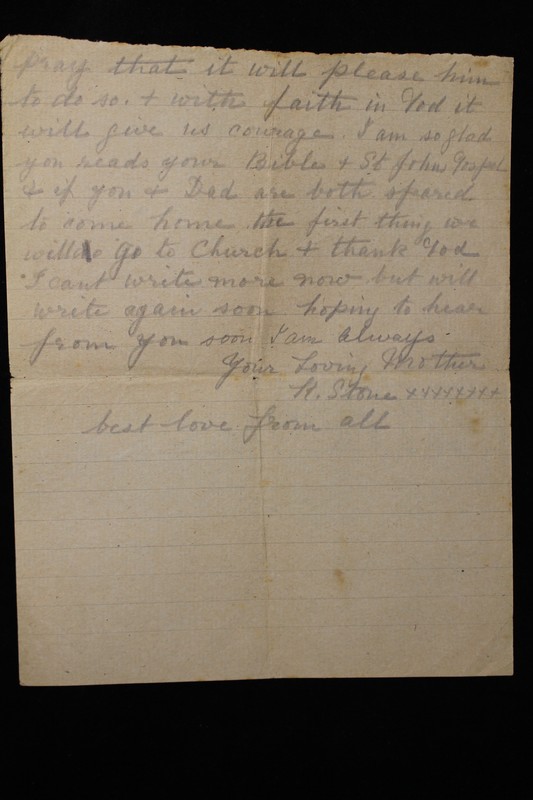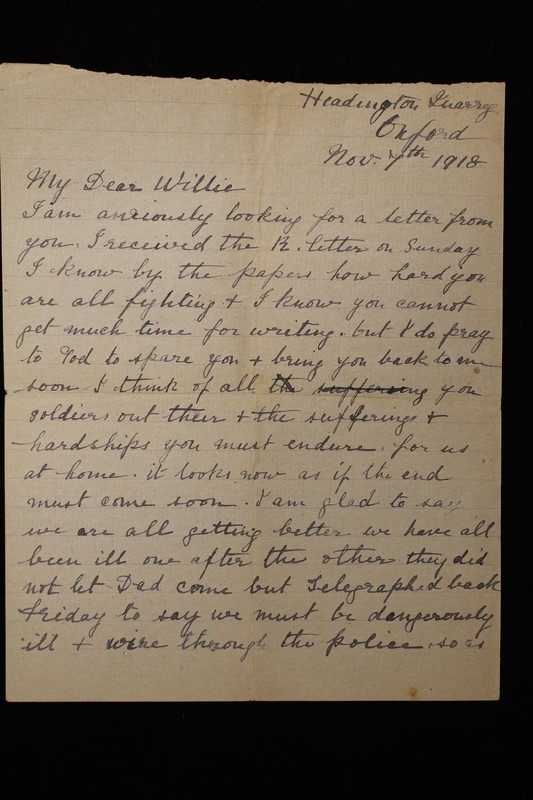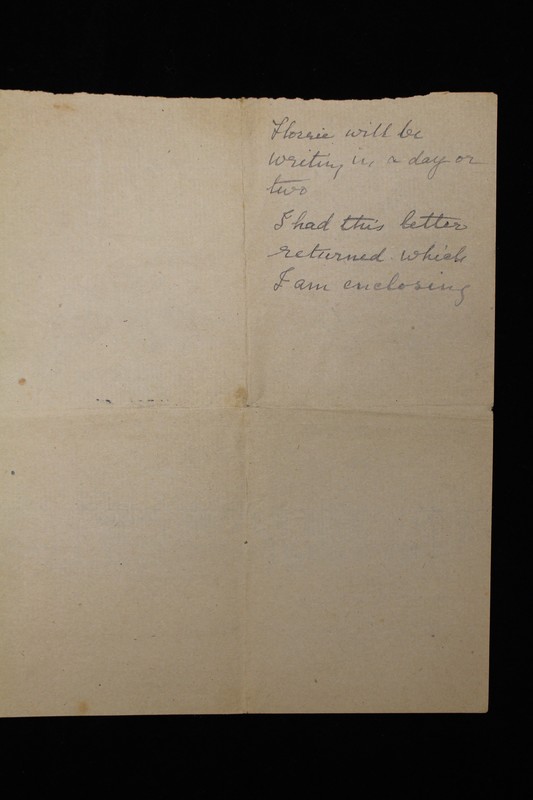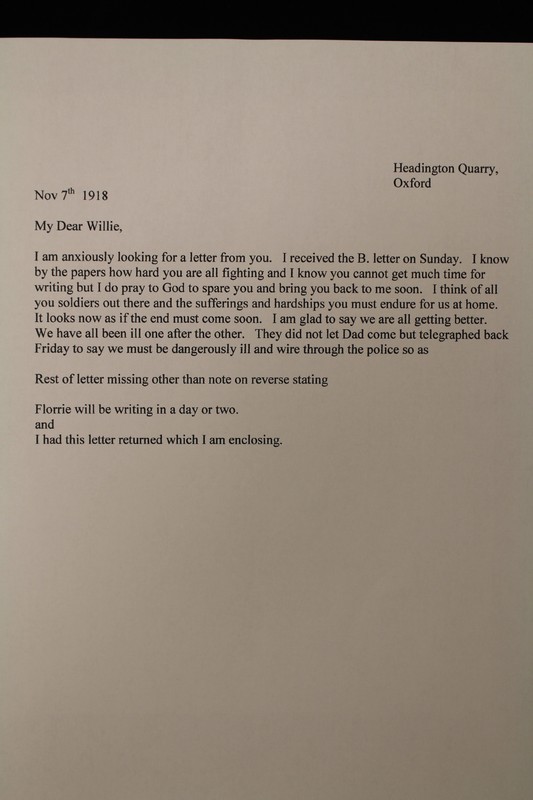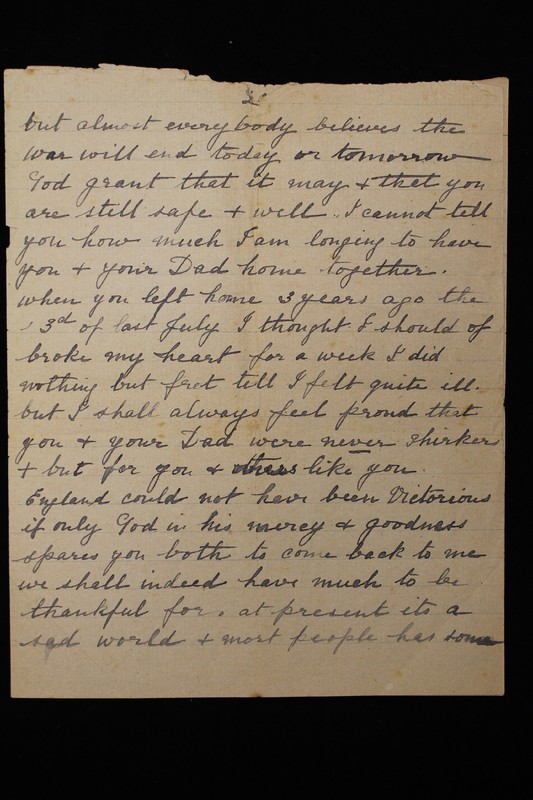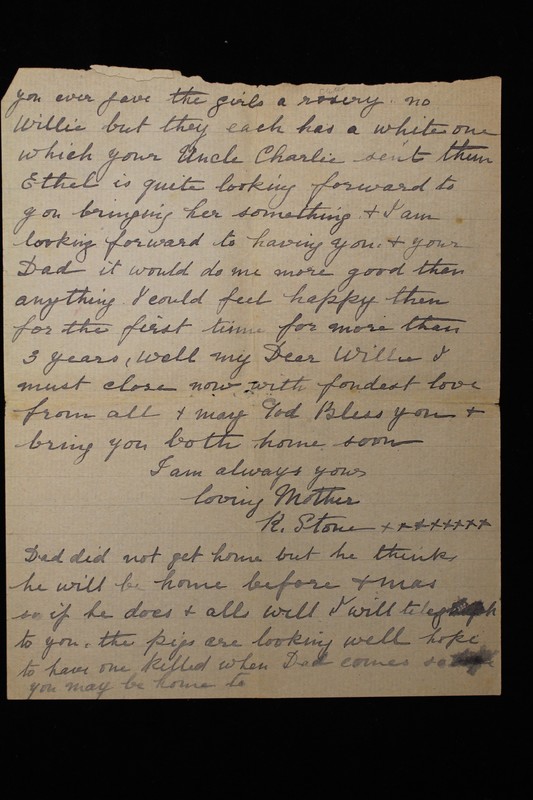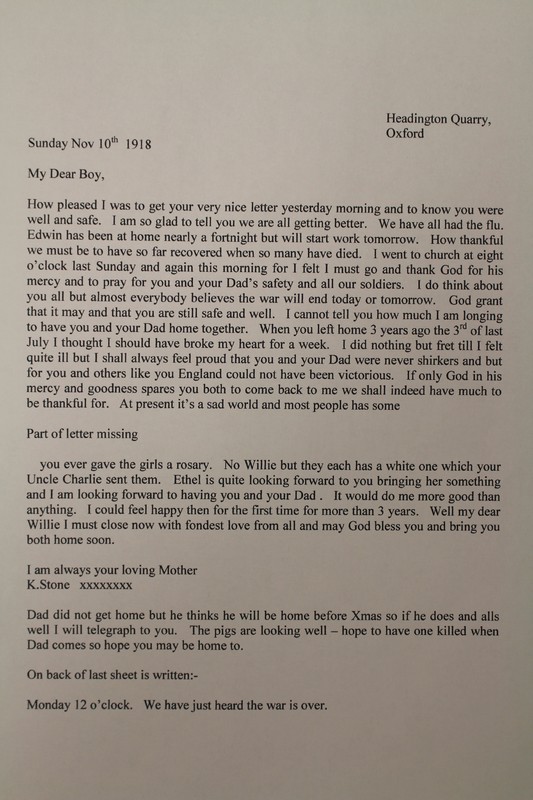William Francis Charles Stone
Item
Title
William Francis Charles Stone
Who?
William Francis Charles Stone (1898–1969)
Item(s)
All items relate to William Francis Charles Stone and include postcards, family photographs, small booklets, a medicinal container, medals and service record, discharge letters and post-war service record, letters between William and his mother, Christmas cards and William's certificate of employment.
Story
William Francis Charles Stone was born on the 8th June 1898, the first child of William Francis Randall Stone and Kate Lillian Stone (nee Knight). At the time of his birth his parents were living at 68 Highfield, subsequently renamed Lime Walk, Headington. William’s birth came just a few months before the death of his great grandfather Francis Stone.
Shortly after William Francis Charles Stone was born, his parents moved to High Wycombe where his father is understood to have worked on the construction of a factory for Coleman’s Mustard. Whilst living in High Wycombe, at 10 Victoria Street, William and Kate had three further children, Florence, Edwin and Ethel. By 1906 the family had returned to Headington where two further sons, Alfred and Cecil, were born (it is believed that there was a further still-born child). William and his siblings were:
William Francis Charles, born 8th June 1898
Florence Annie Elizabeth, born 16th May 1900
Edwin Francis, born in 1902
Ethel Ellen Iris, born in 1904
Alfred Victor, born in 1906
Cecil Orlando, born 1st February 1911
On their return to Headington or shortly thereafter the family moved into the general store at 53 Pitts Road, Headington Quarry which, together with nos. 55 and 57 Pitts Road, had been built by William Francis Randall Stone’s father, Edwin. Kate Stone ran the general store right through until after the First World War. Headington Quarry was a very unique and insular community with a hotchpotch of small houses and a maze of interconnecting tracks and paths with residents being fiercely independent and living on their wits. There was also great rivalry and conflict with Old Headington and the emerging New Headington. It is a little strange to find the Stone family moving into this area, but it was perhaps accepted because the men folk were hard-working building tradesmen.
William Francis Charles Stone attended Headington Quarry School and completed his full-time schooling at the age of twelve as dictated by the Elementary Education Act of 1899. It was considered at that time that there was little further the average youngster could or needed to be taught to meet the needs of the job market (it was only in the Elementary Education (School Attendance) Act of 1918 that full-time schooling until a child’s 14th birthday became compulsory). William clearly continued his education because, in 1912, when he was studying at evening classes, he was presented with a book, ‘The Little Savage’, inside the cover of which is written:-
Oxfordshire County Council
Headington Quarry Evening School
Presented to:-
William Stone
For Regular Attendance
And Good conduct
1912
After leaving school, William worked for Mrs Osborne at 63 High Street, Oxford, probably as a general help. At some point between 1910 and 1915 he must have started training as a woodcutting machinist because this is stated as his “trade or calling before enlistment” on his Certificate of Employment during the war. That training was probably as a woodcutting machinist with Wooldridge and Simpson, who were builders in the Jericho area of Oxford, as years later he talked about working there and how he walked to and from his home in Headington Quarry. He described what was quite a frightening journey to work on a dark morning along the London Road and down Headington Hill with no lighting and trees on either side.
As he approached the age of sixteen, William’s world, and that of many young men, was about to be thrown into turmoil. On 29th July 1914, a month after the assassination of Archduke Franz Ferdinand, Austria declared war on Serbia. The result was not only a war between Austria and Serbia but war between the Great Powers of Europe. This was war on a horrific scale with vast numbers killed and wounded.
William F. C. Stone joined the army on 4th May 1915, enlisting in the Oxfordshire and Buckinghamshire Light Infantry. He was only sixteen at the time and, like so many young men filled with patriotic fervour and a desire to defend their country, lied about his age, stating that he was nineteen. His mother was upset and wrote to him as follows:-
“My Dear Willie,
Your letter upset me last Sunday. It’s unkind of you to put your age up to 19 after I did my best for you when at Broomfield by writing to your Captain and telling him your correct age. Of course my boy I don’t want to write to your present Captain as to your age if it means getting you into trouble but you know it will upset Dad and I if you are sent abroad and you ought to think of that.”
On 9th April 1916 she wrote further:
“I don’t think it’s any good trying to get you back as you are nearly 18. Mrs Coppock has been trying to get Eddie back but Major Melville Lee told her he would let her know but he did not think they would as he had been passed fit and gave his age as 19.”
William F. C. Stone’s service record, as set out in his ‘Certificate of Employment During the War’, and supplemented from information in the Soldiers of Oxfordshire archive, is recorded as follows:-
4 May 1915 to 5 July 1915: 4th Res Bn
5 July 1915 to ? Nov 1915: 2/4th Bn
? Nov 1915 to 11 Mar 1916: 4th Res Bn
12 Mar 1916 to 15 Nov 1916: 1/4th Bn
Wounded and returned to England
15 Nov 1916 to ? Jul 1917: 4th Res Bn
? Jul 1917 to 20 Apr 1919: 2nd Bn BCoy F&F
15 Mar 1918 to 29 Mar 1918: UK leave
? Dec 1918: Marched into Germany following the armistice
24 Apr 1919: To England pending discharge
4 Oct 1920: Re-enlisted with Sect D (Pool) Supp. Reserve at Oxford
9 Apr 1921: Called up due to the coal strike and was based in Tamworth until 8 Jun 1921
3 Oct 1924: Discharged on term of engagement, 4 years
William F. C. Stone was first sent to France in March 1916. During that month, there were three Reinforcement Drafts sent out to the 1/4th Bn to make up numbers after members of the Battalion had been killed or wounded. These were on the 18th, 21st and 24th March so it would have been on one of those dates that he arrived at the start of his direct engagement with the German forces.
Upon joining the Oxfordshire and Buckinghamshire Light Infantry he was placed in the 4th Battalion Reserve for a period of two months. It would have been the norm to be placed in a Reserve Unit until allotted to a ‘fighting unit’. Presumably during this period there would be intensive training.
The move into a ‘fighting unit’ of the Battalion came on the 5th July 1915 when he was allocated to the 2/4th, a fighting unit of the 4th Battalion. (The first 1000 men formed the 1/4th, the second 1000 men were the 2/4th and the third 1000 men were the 3/4th – all part of the 4th Battalion. Men were moved between units to make up numbers following casualties etc.)
In July 1917 he was transferred to the 2nd Battalion. This Battalion had, from the mid-nineteenth century, been the 52nd Regiment, and although it officially became the 2nd Battalion it was still generally referred to as the 52nd.
During his period of service his Regimental numbers were:
- 4th Battalion 4872
- 2nd Battalion 201669
William F. C. Stone was a Lewis Gunner and achieved a first-class classification in musketry. On his discharge, Lt. Col. Cross described him as “a very clean and capably young soldier. Trustworthy and hard working.”
In 1918 he was in No. 7 Platoon of B Company of the 2nd Battalion and was No. 1 Lewis Gunner in his team. The full team was:-
Pte. W Stone 1
Pte. N Jeffery 2
Pte. Hancox 3
Pte. Percox 4
Pte. Nottingham 5
Pte. Thomas 6
Reserves – Pte. Stoneham and Pte. Evans
Although not officially recorded, in September 1918, he was gassed again and his mother wrote in her letter to him dated the 20th September 1918:
“My Own Dear Boy,
I received your card this morning telling me you were gassed and I thank God your life was spared. I am hoping you will be brought to England – this gas must be an awful thing but I do hope you will get on alright. Write if you can and let me know more about it. I wrote to you last week and again this and Florrie wrote and I sent the parcel a week last Tuesday which must have been the day you were gassed.”
His mother did not only have the worry of her eldest son fighting in the war. During the same period, her husband, William F R Stone, was in the Royal Army Service Corps and the Labour Corps serving in France, Salonika, Alexandria and maybe elsewhere. She was also bringing up five other children and running the general store in Pitts Road, Headington. A wife and mother in those circumstances must have had to be very resourceful and strong to live through this period. Perhaps an example of that resourcefulness is illustrated in her letter to her son dated the 22nd October 1918, in which she wrote:
“I had the biggest pig killed Tuesday and it went 10 score 11 lbs - £14.15.5. Mr Freeborn bought it. He was pleased with it especially the (?) it weighed 13 ½ lbs. The other two are not so big but are doing well and I hope to get them nice and fat by the time Dad gets home…………”
When William F. C. was gassed in September 1918, he was presumably taken to a field hospital and does not appear to have been sent back to England. In fact it was not too long after this that Germany surrendered and the war was over. In his notebook, he records the long march into Germany and notes very precisely that at 12.39 pm on the 9th December 1918 they crossed into Germany and stopped en route at Malmedy.
In his diary for 1918 when he was in the 2nd Battalion, he records his movements and gives a very good insight into the rotation of men with periods in the front-line trenches, the support trenches, in reserve and resting back from the front line. From that diary one knows, for example, that during the week commencing the 4th February 1918 he was in the front-line trenches near Metz. During that year, the only year for which a diary has survived, a significant amount of time was spent in the front-line trenches. Two other entries in the diary note:-
- Sat 4th May 3 years ago today since joining army.
- Mon 6th May Shelled all day by our own
In the periods when he was back in England in the 4th Reserve he spent time in Cheltenham and Catterick.
One of the most notorious battles of the First World War was that of the Somme in July and August of 1916. For the generation of young men who had enthusiastically joined the army it was a baptism by fire. By the time the battle was over, one hundred and fifty thousand lay dead and three hundred thousand more were maimed or wounded.
The 1/4th Battalion of the Oxfordshire and Buckinghamshire Light Infantry, in which William F. C. was serving at the time, was fully engaged in the battle. The War Record of the 1/4th Battalion compiled by Major P Pickford DSO, MC, records:-
July 17 Then began our first experience of a real attack. We were hustled down to BOUZINCOURT in 36 motor lorries, to find ourselves in reserve in huts and orchards west of the village, (the transport being at SENLIS), and were told that the 143rd and 144th Brigades were holding OVILLERS and a front line just below POZIERES.
July 18 On the following day we received sudden orders at 7.15pm. to carry out an attack at 1.30 am., and before any opportunity had been given for reconnaissance we were recalled from the village and marched away at once to ALBERT. Just beyond the town we drew stacks of stores for consolidating, &c., and it was zero hour as we got into position.
July 19 The attack was made by C Company on the right and B on the left, with A in support and D in reserve. Owing to darkness and imperfect knowledge of the ground, the attack lost direction and was broken up by machine-gun and shell fire : the battalion was then ordered to withdraw to BOUZINCOURT, having lost 20 other ranks killed, and 100 wounded, besides two officers.
July 21 Two days later we again returned at midnight and bivouacked in old gun emplacements forward of ALBERT, in reserve to a second unsuccessful attack by our brigade, and were employed on working parties.
July 22 Next day our orders were to make the attack at 12.30 am. On the 23rd, subsequent to the attack on POZIERES by the Australian Division at 10pm.
July 23 The order of battle was D on the right and A on the left, B in support to D, C in reserve; and owing to better knowledge of the ground, all objectives were gained in spite of the most determined enemy resistance, and several counter attacks were driven off. Our casualties were heavy, as the enemy expected the attack and put down an intense barrage, and the shelling during the whole day following was very severe.”
And so the record of the grim battle continues. This small extract can but give a brief insight into what must have been a horrendous experience.
Towards the end of the war there was clearly a degree of optimism emerging not only in respect of the outcome of the war but also in the future generally. On the 18th October 1918 his mother wrote:-
“He (William’s father) asked me to try and think of a plan what would be best to do when the war is over. He won’t want to leave home again. I think we must go in for plenty of live stock and a good bit of ground and grow plenty of stuff – a small holding would be nice wouldn’t it.”
In December, after the German surrender, William wrote to his mother:-
“……….I want you to send me a book on poultry farming as I am taking that up. So send it at once. Also send me the Smallholding book each week.”
His mother was thinking about all aspects of his future and in her letter of the 18th October 1918 writes:
“I wish I knew some nice good girl who would write to you. Florrie may know someone but it’s difficult to know the really nice girls. This war seems to have spoilt them. Do you remember Muriel Burton, Mrs Burton’s daughter. They lived near us in High Wycombe. You were only six then – she is your age……..She is out in South America……..if you think you would like to write to her I am sure she would be most pleased to hear from you………”
Following the end of the war William was discharged on the 24th April 1919. He received Victory and British War Medals (details – Roll L 106318 page 3623). In October 1920 he re-enlisted in the Army Reserve as noted above.
William rarely spoke about his experiences throughout the rest of his life. They must have left deep psychological scares and, at least in the early years, he suffered traumatic nightmares. Although I rarely heard him talking about the war, I do remember him talking on one occasion about ‘going over the top’ and advancing under heavy fire towards the German trenches by clambering over dead comrades who were lying ‘thick and deep’ on the ground. I believe he was talking about the Battle of the Somme.
He did occasionally tell me some of the incidents which evoked less painful memories. For instance, he told how on one Christmas day when, with only a few hundred yards separating the German and British trenches, the men on both sides declared a temporary truce and played football against each other on the land between the two front lines. Once Christmas was over, they returned to their respective trenches and resumed the fighting. I believe this was a story from early in the war and not something that happened whilst he was in France.
He recollected that on one occasion when he was in the trenches, he saw a rabbit sit up in the grass some distance away. He took off his helmet and threw it, spinning like a discus, at the rabbit. Miraculously it hit and killed the rabbit which he retrieved and it was cooked and eaten.
On one occasion when he was in the front line with his battalion his fellow soldiers moved back without him hearing the order or realising. He found himself on his own in a front line position, scared and not knowing where his comrades were. Fortunately he quickly found them.
As the war approached its end, not only was William’s mother thinking about what the family would do and who might make him a suitable wife, but William was himself thinking of the future. From his letters to his mother it is clear that he had aspirations to have a smallholding or to become a poultry farmer. Clearly those dreams did not become reality and he returned to his trade of woodcutting machinist, a trade that he pursued until retirement.
Another family who had moved into New Headington were the Durran family from Steeple Aston. They lived on the corner of East Street (subsequently Bateman Street) and New High Street. William and Ada Durran’s eldest daughter, Lilian Clara Elmore Durran (born 11th December 1901), was to meet William and be courted by him. Lilian had gone into service. Her first job at the age of about thirteen or fourteen was working for Mr and Mrs Corby who lived in North Place beside Bury Knowle Park in Headington. She subsequently worked at The Rookery in Old Headington for the Bishop of Oxford and progressed to being his cook. Her sister Ellen worked with her as a kitchen maid.
Life was beginning to return to some degree of normality, but these were years of deep unrest in the country with strikes and civil unrest leading up to the general strike in 1926. William was still enlisted as a reservist and he was called up to be deployed during a miners’ strike in the early 1920s when he was based in Tamworth in Staffordshire.
William and Lilian married on the 2nd June 1923 at St Andrew’s Church in Old Headington and moved into one of his father’s houses at 55 Pitts Road. William’s father was by then a builder on his own account and had built houses in Old High Street and moved there, renting out the shop at 53 Pitts Road.
The growth of an industry was underway in nearby Cowley where William Morris was expanding his factory to produce cars. This was a major boost to the local economy and employment prospects. One of the important skills required was constructing the wooden bodies for the early motorcars and patterns for making the moulds for the presses to form the metal body panels. William took advantage of this opportunity and became a pattern maker and was involved on the production of the iconic Bull Nosed Morris using all his skills learnt as a woodcutting machinist.
William was keen on a range of sports and drew particular pleasure from following Headington United (later to become Oxford United) football team. At Morris Motors he was an enthusiastic darts player, for which he won a medal. He also regularly played darts at the Headington Conservative Club. William, like many former soldiers, also became a member of a Lodge of the Royal Antediluvian Order of Buffaloes. In these difficult times there remained the opportunity and spirit to engage in a range of social activities. Lilian developed her own interests; very important amongst which were the wide-ranging activities of the Townswomen’s Guild and, following the move to Bickerton Road, her involvement with the new Highfield Parish Church. Both William and Lilian enjoyed cycling, never being owners of a motor car, and on most Sunday afternoons would go for a long ride in the country.
William and Lilian’s first child, Edwin Francis William, was born on the 23rd December 1923. Almost three years later on the 17th September 1926 they had a daughter, Kathleen Margaret. The growing family was probably finding that their small cottage lacked adequate space. In May 1928 William purchased a plot of land in Bickerton Road from Mrs E. K. Wilbraham for £138. In 1929 they moved into a house built by William’s father on that plot of land, numbered 33 Bickerton Road, in the heart of the rapidly growing ‘New’ Headington. Their new home was a relatively large three-storey house with five bedrooms, a bathroom, two large reception rooms and a large kitchen/dining room. It was here that Lilian let rooms to Oxford University students (see note two below) right through to the 1960s, usually three at any one time, cooking their meals, undertaking their laundering and generally acting as their ‘term-time mother’.
William worked tirelessly growing most of the produce to feed his family and student lodgers. The house had a fairly large garden but, in addition, William had purchased a plot of land at 7 Bickerton Road which he used as an allotment (he also rented a further allotment just off the Old Road on the site of what is now Town Furze Estate). This was very much an era of self-sufficiency born out of necessity. All this land was worked to full effect with a full range of year round vegetables and fruit. To spread this produce through the seasons Lilian bottled fruit in Kilner jars, salted down runner beans in large stone jars, made jam and laid out apples in racks in the shed. To supplement this, chickens were kept in the garden of the house to provide a constant supply of eggs and the occasional meal. Eggs not required immediately were preserved in waterglass in a galvanised dustbin. New generations of chickens were reared from day-old chicks, initially in an incubator in the garden shed. Such was the self-sufficiency culture that the family went gleaning at weekends to gather grain to feed the chickens and gathered dandelion flowers, elderberries and the like to make wine.
This was a difficult time in the country economically as it struggled in the aftermath of the First World War. William and Lilian’s hard work, approach to self-sufficiency and carefully managed finances, where Lilian very much took the lead role, enabled them to provide adequately for their family even to the extent that they sent their children, Edwin and Kathleen, to start their education at Miss Edney’s private school in Old High Street before they both went to The Field School, subsequently named St Andrew’s School. It was also possible to pay tuition fees for Edwin to learn to play the violin, Kathleen to learn the piano and for Edwin to be sent to Southfield School as a fee-paying pupil.
Before many more years had lapsed, the country was plunged into war again with Germany. Lilian said it was the only time she had seen her husband cry. This emotion was stirred by the prospect of his son, Edwin, having to endure the harrowing experiences he had faced in the earlier conflict. Within about two years Edwin was called up and joined the Royal Engineers. He had learned to speak German at school and further perfected this to the point that he was called upon as an interpreter. He became a very fluent speaker of the language and continued serving in the British Army of the Rhine for several years after the war.
William had gone beyond the age of being called upon for active service but he did join the Home Guard with lookout duties on Shotover Hill and fire watch duties at the factories. In 1939, William and Lilian also had a still born daughter. Their elder daughter Kathleen believed the baby died due to neglect by the doctor and midwife who allowed the pregnancy to run three weeks beyond the due date for delivery without taking any action. The baby was just ‘taken away and disposed of’, as was the norm at that time, so there was no burial or permanent memorial headstone. William called the little ‘lost’ daughter Violet after his favourite flower. A neighbour and friend of Lilian’s, Mrs Gibson, always left a small bunch of violets on William and Lilian’s doorstep on the anniversary of losing that daughter and continued to do so through to the 1970s.
William made wooden toys for local children throughout the war years and beyond. Amongst these, and a great favourite, was an acrobat who, by squeezing the supporting frame, would spin over and over the cord on which he was suspended.
In 1943, in the midst of the war, William and Lilian had a son, Bernard Denis, who was born on the 8th August of that year and weighed in at 10lbs. The name given to him came about because his older sister Kathleen was engaged to a flight engineer in the RAF by the name of Bernard Hadfield. When he knew that Lilian was expecting a baby, he made a request saying that “if you have a boy would you name him after me so that if I am killed in the war he will be in memory of me.” William and Lilian fulfilled that request. Sadly, on 28th July 1944, Bernard Hadfield was killed in action over Egypt and is buried in Alexandria (Chatby) Military Cemetery.
The war-time period was eventful as far as the Stone family was concerned. Whilst on leave, Edwin, probably when stationed in the Dartford area of Kent, met Mabel Shorter at a dance. Mabel was, at that time, working at Woolwich Arsenal. They were married in a bomb-damaged church in Dartford in the early summer of 1945. Mabel moved to Headington and lived with her parents-in-law and their daughter Kathleen, Edwin being away for significant periods serving in Dusseldorf in this immediate post-war period. Mabel became a very close friend of Kathleen and was treated as a daughter by William and Lilian. Life in the armed forces during times of conflict was very difficult and, for many, put relationships and marriages under great pressure. This was to prove the case with Edwin and Mabel. Whilst away in Dusseldorf Edwin met and had a relationship with Annemarie Steinhauer, who had previously been married and whose maiden name was Leuber. Edwin very honestly (some may say too honestly) confessed this to Mabel and asked her to forgive him. She refused to do so, a decision that she later regretted, and they were divorced in around 1949. Mabel was by then working at Stephensons Builders Merchants in Oxford where she met Michael Fisher, who she married and lived with on Wood Farm Estate in Headington. They had a son and daughter, John and Sheila, and in due course emigrated to New Zealand. Edwin proposed marriage to Annemarie, she came to England in 1949, and they were married at the Oxford Register Office towards the end of that year.
These were very stressful and difficult circumstances. Annemarie (see note three) spoke no English, had her own traumatic memories of the war, and came to a country where anti-German feelings ran very high. Edwin and Annemarie lived in several locations immediately after their marriage: with Edwin’s Aunty Jessie, with Mrs Putts near the Iffley Road, with Peter Leach’s sister (see note four) and, eventually, with parents William and Lilian for several years up to about 1954 when they bought their own house.
Following the sad death of her fiancé, Kathleen started to rebuild her life and in due course was courted by Allen Eastes, who she had known for some years as they lived in nearby roads. When the relationship blossomed Allen was serving in the Royal Navy. They were married on the 2nd June 1949 at Highfield Church in Headington and then initially lived in a flat at 137 Windmill Road.
During the Second World War, Lilian, like many women, filled jobs vacated by men who had gone to fight. She worked in the factory at Cowley that had been converted from car production to the manufacture of munitions. One of her jobs was to polish the shells. At some point during this period, William changed job and went to work for Minty Furniture in St Clements and, when they moved, on the Horsepath Trading Estate. He worked there until about the late 1950s when the fortunes of Minty Furniture went into decline. He then worked for periods in the joinery mill of building contractors, Billings and Benfield and Loxley, eventually retiring in 1963.
On retirement William undertook a part-time job at the Technical College, which later became Oxford Brookes University. This job was for just a couple of hours early each morning and involved sundry tasks and cleaning. He enjoyed the friends he worked with there. William and Lilian also decided to build a new, smaller house on the plot of land they owned at 7 Bickerton Road for their later years. They moved there and sold 33 Bickerton Road but sadly William was not destined to live in the new house for very long. He died very suddenly in 1969 of a massive heart attack whilst working at the Technical College. Lilian continued living at the house until it became too much for her to manage, at which point she went to live with Kathleen and Allen in Nantwich, Cheshire. She had a number of very happy and contented years there thanks to the extreme kindness of both Kathleen and Allen. She died on 22nd May 1990.
NOTES
NOTE 1: A clear account of the nature of Headington Quarry, its residents and their relationship with nearby residents in Old Headington is provided in ‘Village Life and Labour – Part 4 – Quarry Roughs : life and labour in Headington Quarry, 1860 – 1920'. An essay in oral history’ by Raphael Samuel.
NOTE 2: One of those students was Tom Bourdillon, a student at Balliol College whose family home was at The Oaks on Shotover Hill. He was a member of the successful expedition led by John Hunt to conquer Mount Everest in 1953. Tom Bourdillon made the first attempt on the summit, coming within 300ft, before the successful climb by Edmund Hillary and Tenzing Nurgay. He died in a climbing accident in 1956. In his student days staying at 33 Bickerton Road he was a common sight sitting on the front doorstep cleaning and checking all his climbing gear.
NOTE 3: Annemarie’s past experiences during the wartime years in Germany clearly left an indelible mark upon her. She was desperately frightened and hid at the sound of an aircraft. She quite understandable felt insecure in her strange adopted country.
NOTE 4: Peter Leach had been Best Man at Edwin and Annemarie’s wedding.
Shortly after William Francis Charles Stone was born, his parents moved to High Wycombe where his father is understood to have worked on the construction of a factory for Coleman’s Mustard. Whilst living in High Wycombe, at 10 Victoria Street, William and Kate had three further children, Florence, Edwin and Ethel. By 1906 the family had returned to Headington where two further sons, Alfred and Cecil, were born (it is believed that there was a further still-born child). William and his siblings were:
William Francis Charles, born 8th June 1898
Florence Annie Elizabeth, born 16th May 1900
Edwin Francis, born in 1902
Ethel Ellen Iris, born in 1904
Alfred Victor, born in 1906
Cecil Orlando, born 1st February 1911
On their return to Headington or shortly thereafter the family moved into the general store at 53 Pitts Road, Headington Quarry which, together with nos. 55 and 57 Pitts Road, had been built by William Francis Randall Stone’s father, Edwin. Kate Stone ran the general store right through until after the First World War. Headington Quarry was a very unique and insular community with a hotchpotch of small houses and a maze of interconnecting tracks and paths with residents being fiercely independent and living on their wits. There was also great rivalry and conflict with Old Headington and the emerging New Headington. It is a little strange to find the Stone family moving into this area, but it was perhaps accepted because the men folk were hard-working building tradesmen.
William Francis Charles Stone attended Headington Quarry School and completed his full-time schooling at the age of twelve as dictated by the Elementary Education Act of 1899. It was considered at that time that there was little further the average youngster could or needed to be taught to meet the needs of the job market (it was only in the Elementary Education (School Attendance) Act of 1918 that full-time schooling until a child’s 14th birthday became compulsory). William clearly continued his education because, in 1912, when he was studying at evening classes, he was presented with a book, ‘The Little Savage’, inside the cover of which is written:-
Oxfordshire County Council
Headington Quarry Evening School
Presented to:-
William Stone
For Regular Attendance
And Good conduct
1912
After leaving school, William worked for Mrs Osborne at 63 High Street, Oxford, probably as a general help. At some point between 1910 and 1915 he must have started training as a woodcutting machinist because this is stated as his “trade or calling before enlistment” on his Certificate of Employment during the war. That training was probably as a woodcutting machinist with Wooldridge and Simpson, who were builders in the Jericho area of Oxford, as years later he talked about working there and how he walked to and from his home in Headington Quarry. He described what was quite a frightening journey to work on a dark morning along the London Road and down Headington Hill with no lighting and trees on either side.
As he approached the age of sixteen, William’s world, and that of many young men, was about to be thrown into turmoil. On 29th July 1914, a month after the assassination of Archduke Franz Ferdinand, Austria declared war on Serbia. The result was not only a war between Austria and Serbia but war between the Great Powers of Europe. This was war on a horrific scale with vast numbers killed and wounded.
William F. C. Stone joined the army on 4th May 1915, enlisting in the Oxfordshire and Buckinghamshire Light Infantry. He was only sixteen at the time and, like so many young men filled with patriotic fervour and a desire to defend their country, lied about his age, stating that he was nineteen. His mother was upset and wrote to him as follows:-
“My Dear Willie,
Your letter upset me last Sunday. It’s unkind of you to put your age up to 19 after I did my best for you when at Broomfield by writing to your Captain and telling him your correct age. Of course my boy I don’t want to write to your present Captain as to your age if it means getting you into trouble but you know it will upset Dad and I if you are sent abroad and you ought to think of that.”
On 9th April 1916 she wrote further:
“I don’t think it’s any good trying to get you back as you are nearly 18. Mrs Coppock has been trying to get Eddie back but Major Melville Lee told her he would let her know but he did not think they would as he had been passed fit and gave his age as 19.”
William F. C. Stone’s service record, as set out in his ‘Certificate of Employment During the War’, and supplemented from information in the Soldiers of Oxfordshire archive, is recorded as follows:-
4 May 1915 to 5 July 1915: 4th Res Bn
5 July 1915 to ? Nov 1915: 2/4th Bn
? Nov 1915 to 11 Mar 1916: 4th Res Bn
12 Mar 1916 to 15 Nov 1916: 1/4th Bn
Wounded and returned to England
15 Nov 1916 to ? Jul 1917: 4th Res Bn
? Jul 1917 to 20 Apr 1919: 2nd Bn BCoy F&F
15 Mar 1918 to 29 Mar 1918: UK leave
? Dec 1918: Marched into Germany following the armistice
24 Apr 1919: To England pending discharge
4 Oct 1920: Re-enlisted with Sect D (Pool) Supp. Reserve at Oxford
9 Apr 1921: Called up due to the coal strike and was based in Tamworth until 8 Jun 1921
3 Oct 1924: Discharged on term of engagement, 4 years
William F. C. Stone was first sent to France in March 1916. During that month, there were three Reinforcement Drafts sent out to the 1/4th Bn to make up numbers after members of the Battalion had been killed or wounded. These were on the 18th, 21st and 24th March so it would have been on one of those dates that he arrived at the start of his direct engagement with the German forces.
Upon joining the Oxfordshire and Buckinghamshire Light Infantry he was placed in the 4th Battalion Reserve for a period of two months. It would have been the norm to be placed in a Reserve Unit until allotted to a ‘fighting unit’. Presumably during this period there would be intensive training.
The move into a ‘fighting unit’ of the Battalion came on the 5th July 1915 when he was allocated to the 2/4th, a fighting unit of the 4th Battalion. (The first 1000 men formed the 1/4th, the second 1000 men were the 2/4th and the third 1000 men were the 3/4th – all part of the 4th Battalion. Men were moved between units to make up numbers following casualties etc.)
In July 1917 he was transferred to the 2nd Battalion. This Battalion had, from the mid-nineteenth century, been the 52nd Regiment, and although it officially became the 2nd Battalion it was still generally referred to as the 52nd.
During his period of service his Regimental numbers were:
- 4th Battalion 4872
- 2nd Battalion 201669
William F. C. Stone was a Lewis Gunner and achieved a first-class classification in musketry. On his discharge, Lt. Col. Cross described him as “a very clean and capably young soldier. Trustworthy and hard working.”
In 1918 he was in No. 7 Platoon of B Company of the 2nd Battalion and was No. 1 Lewis Gunner in his team. The full team was:-
Pte. W Stone 1
Pte. N Jeffery 2
Pte. Hancox 3
Pte. Percox 4
Pte. Nottingham 5
Pte. Thomas 6
Reserves – Pte. Stoneham and Pte. Evans
Although not officially recorded, in September 1918, he was gassed again and his mother wrote in her letter to him dated the 20th September 1918:
“My Own Dear Boy,
I received your card this morning telling me you were gassed and I thank God your life was spared. I am hoping you will be brought to England – this gas must be an awful thing but I do hope you will get on alright. Write if you can and let me know more about it. I wrote to you last week and again this and Florrie wrote and I sent the parcel a week last Tuesday which must have been the day you were gassed.”
His mother did not only have the worry of her eldest son fighting in the war. During the same period, her husband, William F R Stone, was in the Royal Army Service Corps and the Labour Corps serving in France, Salonika, Alexandria and maybe elsewhere. She was also bringing up five other children and running the general store in Pitts Road, Headington. A wife and mother in those circumstances must have had to be very resourceful and strong to live through this period. Perhaps an example of that resourcefulness is illustrated in her letter to her son dated the 22nd October 1918, in which she wrote:
“I had the biggest pig killed Tuesday and it went 10 score 11 lbs - £14.15.5. Mr Freeborn bought it. He was pleased with it especially the (?) it weighed 13 ½ lbs. The other two are not so big but are doing well and I hope to get them nice and fat by the time Dad gets home…………”
When William F. C. was gassed in September 1918, he was presumably taken to a field hospital and does not appear to have been sent back to England. In fact it was not too long after this that Germany surrendered and the war was over. In his notebook, he records the long march into Germany and notes very precisely that at 12.39 pm on the 9th December 1918 they crossed into Germany and stopped en route at Malmedy.
In his diary for 1918 when he was in the 2nd Battalion, he records his movements and gives a very good insight into the rotation of men with periods in the front-line trenches, the support trenches, in reserve and resting back from the front line. From that diary one knows, for example, that during the week commencing the 4th February 1918 he was in the front-line trenches near Metz. During that year, the only year for which a diary has survived, a significant amount of time was spent in the front-line trenches. Two other entries in the diary note:-
- Sat 4th May 3 years ago today since joining army.
- Mon 6th May Shelled all day by our own
In the periods when he was back in England in the 4th Reserve he spent time in Cheltenham and Catterick.
One of the most notorious battles of the First World War was that of the Somme in July and August of 1916. For the generation of young men who had enthusiastically joined the army it was a baptism by fire. By the time the battle was over, one hundred and fifty thousand lay dead and three hundred thousand more were maimed or wounded.
The 1/4th Battalion of the Oxfordshire and Buckinghamshire Light Infantry, in which William F. C. was serving at the time, was fully engaged in the battle. The War Record of the 1/4th Battalion compiled by Major P Pickford DSO, MC, records:-
July 17 Then began our first experience of a real attack. We were hustled down to BOUZINCOURT in 36 motor lorries, to find ourselves in reserve in huts and orchards west of the village, (the transport being at SENLIS), and were told that the 143rd and 144th Brigades were holding OVILLERS and a front line just below POZIERES.
July 18 On the following day we received sudden orders at 7.15pm. to carry out an attack at 1.30 am., and before any opportunity had been given for reconnaissance we were recalled from the village and marched away at once to ALBERT. Just beyond the town we drew stacks of stores for consolidating, &c., and it was zero hour as we got into position.
July 19 The attack was made by C Company on the right and B on the left, with A in support and D in reserve. Owing to darkness and imperfect knowledge of the ground, the attack lost direction and was broken up by machine-gun and shell fire : the battalion was then ordered to withdraw to BOUZINCOURT, having lost 20 other ranks killed, and 100 wounded, besides two officers.
July 21 Two days later we again returned at midnight and bivouacked in old gun emplacements forward of ALBERT, in reserve to a second unsuccessful attack by our brigade, and were employed on working parties.
July 22 Next day our orders were to make the attack at 12.30 am. On the 23rd, subsequent to the attack on POZIERES by the Australian Division at 10pm.
July 23 The order of battle was D on the right and A on the left, B in support to D, C in reserve; and owing to better knowledge of the ground, all objectives were gained in spite of the most determined enemy resistance, and several counter attacks were driven off. Our casualties were heavy, as the enemy expected the attack and put down an intense barrage, and the shelling during the whole day following was very severe.”
And so the record of the grim battle continues. This small extract can but give a brief insight into what must have been a horrendous experience.
Towards the end of the war there was clearly a degree of optimism emerging not only in respect of the outcome of the war but also in the future generally. On the 18th October 1918 his mother wrote:-
“He (William’s father) asked me to try and think of a plan what would be best to do when the war is over. He won’t want to leave home again. I think we must go in for plenty of live stock and a good bit of ground and grow plenty of stuff – a small holding would be nice wouldn’t it.”
In December, after the German surrender, William wrote to his mother:-
“……….I want you to send me a book on poultry farming as I am taking that up. So send it at once. Also send me the Smallholding book each week.”
His mother was thinking about all aspects of his future and in her letter of the 18th October 1918 writes:
“I wish I knew some nice good girl who would write to you. Florrie may know someone but it’s difficult to know the really nice girls. This war seems to have spoilt them. Do you remember Muriel Burton, Mrs Burton’s daughter. They lived near us in High Wycombe. You were only six then – she is your age……..She is out in South America……..if you think you would like to write to her I am sure she would be most pleased to hear from you………”
Following the end of the war William was discharged on the 24th April 1919. He received Victory and British War Medals (details – Roll L 106318 page 3623). In October 1920 he re-enlisted in the Army Reserve as noted above.
William rarely spoke about his experiences throughout the rest of his life. They must have left deep psychological scares and, at least in the early years, he suffered traumatic nightmares. Although I rarely heard him talking about the war, I do remember him talking on one occasion about ‘going over the top’ and advancing under heavy fire towards the German trenches by clambering over dead comrades who were lying ‘thick and deep’ on the ground. I believe he was talking about the Battle of the Somme.
He did occasionally tell me some of the incidents which evoked less painful memories. For instance, he told how on one Christmas day when, with only a few hundred yards separating the German and British trenches, the men on both sides declared a temporary truce and played football against each other on the land between the two front lines. Once Christmas was over, they returned to their respective trenches and resumed the fighting. I believe this was a story from early in the war and not something that happened whilst he was in France.
He recollected that on one occasion when he was in the trenches, he saw a rabbit sit up in the grass some distance away. He took off his helmet and threw it, spinning like a discus, at the rabbit. Miraculously it hit and killed the rabbit which he retrieved and it was cooked and eaten.
On one occasion when he was in the front line with his battalion his fellow soldiers moved back without him hearing the order or realising. He found himself on his own in a front line position, scared and not knowing where his comrades were. Fortunately he quickly found them.
As the war approached its end, not only was William’s mother thinking about what the family would do and who might make him a suitable wife, but William was himself thinking of the future. From his letters to his mother it is clear that he had aspirations to have a smallholding or to become a poultry farmer. Clearly those dreams did not become reality and he returned to his trade of woodcutting machinist, a trade that he pursued until retirement.
Another family who had moved into New Headington were the Durran family from Steeple Aston. They lived on the corner of East Street (subsequently Bateman Street) and New High Street. William and Ada Durran’s eldest daughter, Lilian Clara Elmore Durran (born 11th December 1901), was to meet William and be courted by him. Lilian had gone into service. Her first job at the age of about thirteen or fourteen was working for Mr and Mrs Corby who lived in North Place beside Bury Knowle Park in Headington. She subsequently worked at The Rookery in Old Headington for the Bishop of Oxford and progressed to being his cook. Her sister Ellen worked with her as a kitchen maid.
Life was beginning to return to some degree of normality, but these were years of deep unrest in the country with strikes and civil unrest leading up to the general strike in 1926. William was still enlisted as a reservist and he was called up to be deployed during a miners’ strike in the early 1920s when he was based in Tamworth in Staffordshire.
William and Lilian married on the 2nd June 1923 at St Andrew’s Church in Old Headington and moved into one of his father’s houses at 55 Pitts Road. William’s father was by then a builder on his own account and had built houses in Old High Street and moved there, renting out the shop at 53 Pitts Road.
The growth of an industry was underway in nearby Cowley where William Morris was expanding his factory to produce cars. This was a major boost to the local economy and employment prospects. One of the important skills required was constructing the wooden bodies for the early motorcars and patterns for making the moulds for the presses to form the metal body panels. William took advantage of this opportunity and became a pattern maker and was involved on the production of the iconic Bull Nosed Morris using all his skills learnt as a woodcutting machinist.
William was keen on a range of sports and drew particular pleasure from following Headington United (later to become Oxford United) football team. At Morris Motors he was an enthusiastic darts player, for which he won a medal. He also regularly played darts at the Headington Conservative Club. William, like many former soldiers, also became a member of a Lodge of the Royal Antediluvian Order of Buffaloes. In these difficult times there remained the opportunity and spirit to engage in a range of social activities. Lilian developed her own interests; very important amongst which were the wide-ranging activities of the Townswomen’s Guild and, following the move to Bickerton Road, her involvement with the new Highfield Parish Church. Both William and Lilian enjoyed cycling, never being owners of a motor car, and on most Sunday afternoons would go for a long ride in the country.
William and Lilian’s first child, Edwin Francis William, was born on the 23rd December 1923. Almost three years later on the 17th September 1926 they had a daughter, Kathleen Margaret. The growing family was probably finding that their small cottage lacked adequate space. In May 1928 William purchased a plot of land in Bickerton Road from Mrs E. K. Wilbraham for £138. In 1929 they moved into a house built by William’s father on that plot of land, numbered 33 Bickerton Road, in the heart of the rapidly growing ‘New’ Headington. Their new home was a relatively large three-storey house with five bedrooms, a bathroom, two large reception rooms and a large kitchen/dining room. It was here that Lilian let rooms to Oxford University students (see note two below) right through to the 1960s, usually three at any one time, cooking their meals, undertaking their laundering and generally acting as their ‘term-time mother’.
William worked tirelessly growing most of the produce to feed his family and student lodgers. The house had a fairly large garden but, in addition, William had purchased a plot of land at 7 Bickerton Road which he used as an allotment (he also rented a further allotment just off the Old Road on the site of what is now Town Furze Estate). This was very much an era of self-sufficiency born out of necessity. All this land was worked to full effect with a full range of year round vegetables and fruit. To spread this produce through the seasons Lilian bottled fruit in Kilner jars, salted down runner beans in large stone jars, made jam and laid out apples in racks in the shed. To supplement this, chickens were kept in the garden of the house to provide a constant supply of eggs and the occasional meal. Eggs not required immediately were preserved in waterglass in a galvanised dustbin. New generations of chickens were reared from day-old chicks, initially in an incubator in the garden shed. Such was the self-sufficiency culture that the family went gleaning at weekends to gather grain to feed the chickens and gathered dandelion flowers, elderberries and the like to make wine.
This was a difficult time in the country economically as it struggled in the aftermath of the First World War. William and Lilian’s hard work, approach to self-sufficiency and carefully managed finances, where Lilian very much took the lead role, enabled them to provide adequately for their family even to the extent that they sent their children, Edwin and Kathleen, to start their education at Miss Edney’s private school in Old High Street before they both went to The Field School, subsequently named St Andrew’s School. It was also possible to pay tuition fees for Edwin to learn to play the violin, Kathleen to learn the piano and for Edwin to be sent to Southfield School as a fee-paying pupil.
Before many more years had lapsed, the country was plunged into war again with Germany. Lilian said it was the only time she had seen her husband cry. This emotion was stirred by the prospect of his son, Edwin, having to endure the harrowing experiences he had faced in the earlier conflict. Within about two years Edwin was called up and joined the Royal Engineers. He had learned to speak German at school and further perfected this to the point that he was called upon as an interpreter. He became a very fluent speaker of the language and continued serving in the British Army of the Rhine for several years after the war.
William had gone beyond the age of being called upon for active service but he did join the Home Guard with lookout duties on Shotover Hill and fire watch duties at the factories. In 1939, William and Lilian also had a still born daughter. Their elder daughter Kathleen believed the baby died due to neglect by the doctor and midwife who allowed the pregnancy to run three weeks beyond the due date for delivery without taking any action. The baby was just ‘taken away and disposed of’, as was the norm at that time, so there was no burial or permanent memorial headstone. William called the little ‘lost’ daughter Violet after his favourite flower. A neighbour and friend of Lilian’s, Mrs Gibson, always left a small bunch of violets on William and Lilian’s doorstep on the anniversary of losing that daughter and continued to do so through to the 1970s.
William made wooden toys for local children throughout the war years and beyond. Amongst these, and a great favourite, was an acrobat who, by squeezing the supporting frame, would spin over and over the cord on which he was suspended.
In 1943, in the midst of the war, William and Lilian had a son, Bernard Denis, who was born on the 8th August of that year and weighed in at 10lbs. The name given to him came about because his older sister Kathleen was engaged to a flight engineer in the RAF by the name of Bernard Hadfield. When he knew that Lilian was expecting a baby, he made a request saying that “if you have a boy would you name him after me so that if I am killed in the war he will be in memory of me.” William and Lilian fulfilled that request. Sadly, on 28th July 1944, Bernard Hadfield was killed in action over Egypt and is buried in Alexandria (Chatby) Military Cemetery.
The war-time period was eventful as far as the Stone family was concerned. Whilst on leave, Edwin, probably when stationed in the Dartford area of Kent, met Mabel Shorter at a dance. Mabel was, at that time, working at Woolwich Arsenal. They were married in a bomb-damaged church in Dartford in the early summer of 1945. Mabel moved to Headington and lived with her parents-in-law and their daughter Kathleen, Edwin being away for significant periods serving in Dusseldorf in this immediate post-war period. Mabel became a very close friend of Kathleen and was treated as a daughter by William and Lilian. Life in the armed forces during times of conflict was very difficult and, for many, put relationships and marriages under great pressure. This was to prove the case with Edwin and Mabel. Whilst away in Dusseldorf Edwin met and had a relationship with Annemarie Steinhauer, who had previously been married and whose maiden name was Leuber. Edwin very honestly (some may say too honestly) confessed this to Mabel and asked her to forgive him. She refused to do so, a decision that she later regretted, and they were divorced in around 1949. Mabel was by then working at Stephensons Builders Merchants in Oxford where she met Michael Fisher, who she married and lived with on Wood Farm Estate in Headington. They had a son and daughter, John and Sheila, and in due course emigrated to New Zealand. Edwin proposed marriage to Annemarie, she came to England in 1949, and they were married at the Oxford Register Office towards the end of that year.
These were very stressful and difficult circumstances. Annemarie (see note three) spoke no English, had her own traumatic memories of the war, and came to a country where anti-German feelings ran very high. Edwin and Annemarie lived in several locations immediately after their marriage: with Edwin’s Aunty Jessie, with Mrs Putts near the Iffley Road, with Peter Leach’s sister (see note four) and, eventually, with parents William and Lilian for several years up to about 1954 when they bought their own house.
Following the sad death of her fiancé, Kathleen started to rebuild her life and in due course was courted by Allen Eastes, who she had known for some years as they lived in nearby roads. When the relationship blossomed Allen was serving in the Royal Navy. They were married on the 2nd June 1949 at Highfield Church in Headington and then initially lived in a flat at 137 Windmill Road.
During the Second World War, Lilian, like many women, filled jobs vacated by men who had gone to fight. She worked in the factory at Cowley that had been converted from car production to the manufacture of munitions. One of her jobs was to polish the shells. At some point during this period, William changed job and went to work for Minty Furniture in St Clements and, when they moved, on the Horsepath Trading Estate. He worked there until about the late 1950s when the fortunes of Minty Furniture went into decline. He then worked for periods in the joinery mill of building contractors, Billings and Benfield and Loxley, eventually retiring in 1963.
On retirement William undertook a part-time job at the Technical College, which later became Oxford Brookes University. This job was for just a couple of hours early each morning and involved sundry tasks and cleaning. He enjoyed the friends he worked with there. William and Lilian also decided to build a new, smaller house on the plot of land they owned at 7 Bickerton Road for their later years. They moved there and sold 33 Bickerton Road but sadly William was not destined to live in the new house for very long. He died very suddenly in 1969 of a massive heart attack whilst working at the Technical College. Lilian continued living at the house until it became too much for her to manage, at which point she went to live with Kathleen and Allen in Nantwich, Cheshire. She had a number of very happy and contented years there thanks to the extreme kindness of both Kathleen and Allen. She died on 22nd May 1990.
NOTES
NOTE 1: A clear account of the nature of Headington Quarry, its residents and their relationship with nearby residents in Old Headington is provided in ‘Village Life and Labour – Part 4 – Quarry Roughs : life and labour in Headington Quarry, 1860 – 1920'. An essay in oral history’ by Raphael Samuel.
NOTE 2: One of those students was Tom Bourdillon, a student at Balliol College whose family home was at The Oaks on Shotover Hill. He was a member of the successful expedition led by John Hunt to conquer Mount Everest in 1953. Tom Bourdillon made the first attempt on the summit, coming within 300ft, before the successful climb by Edmund Hillary and Tenzing Nurgay. He died in a climbing accident in 1956. In his student days staying at 33 Bickerton Road he was a common sight sitting on the front doorstep cleaning and checking all his climbing gear.
NOTE 3: Annemarie’s past experiences during the wartime years in Germany clearly left an indelible mark upon her. She was desperately frightened and hid at the sound of an aircraft. She quite understandable felt insecure in her strange adopted country.
NOTE 4: Peter Leach had been Best Man at Edwin and Annemarie’s wedding.
When?
1898-1969
Where?
Headington, Malmedy, Metz, Bouzincourt, Albert, Cheltenham, Catterick.
Contributor
Bernard Stone, William Stone's son.
This item was submitted on April 12, 2019


